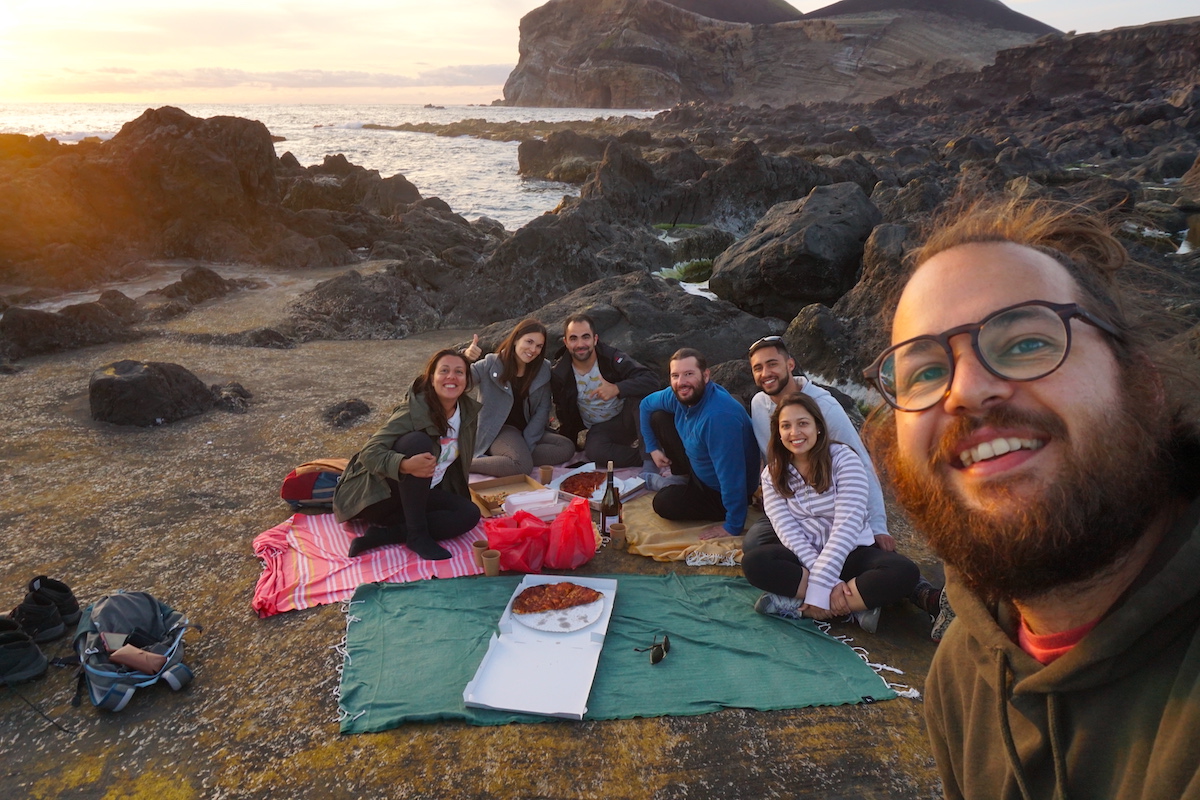Being its main city, Horta, an important meeting point for a multitude of sailboats crossing the Atlantic, Faial is an island where accents and dreams from all over the world converge. Its marina is one of the most visited on the planet, strategically positioned in the middle of the ocean, where the graffiti that decorate it reflect the same tangible desire of faith asking for luck and safety on the journey as a believer lighting a candle in a church or incense in a temple.
A trip to Faial is a journey of maritime adventure stories to those who want to hear them (approaching, for example, Peter’s or Genuíno restaurants) that have given it an international charisma and have marked it historically and sociologically (those who have known it for a long time say that it has always been more open than its “important” neighbors such as São Miguel or Terceira).
Its impressive landscapes along coastal areas, with the omnipresence of the mountain of Pico, take on an extra of astonishment in the summer months when the culprits of its nickname of blue island, the hydrangeas, bloom and reach their maximum splendor decorating the roads of Faial. It also hides the impressive Caldera that we can not only skirt but also go down to its authentic sanctuary of endemic and ancestral biodiversity, and one of the most breathtaking landscapes of the archipelago, the result of the eruption of the Capelinhos volcano and creator of the youngest land in Portugal.
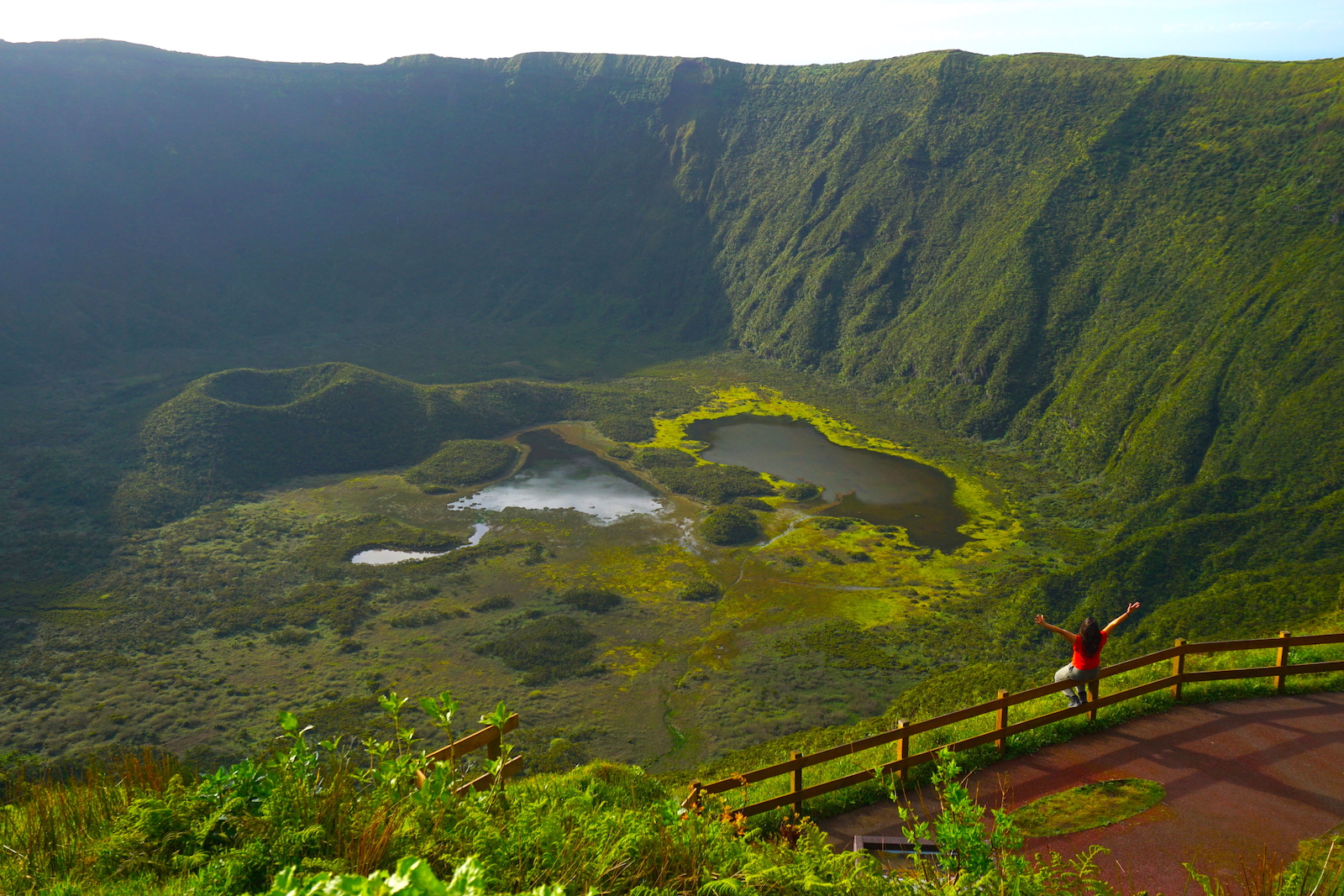
In this guide we try to reflect all that Faial has to offer with practical suggestions, itineraries from 2 to 5 days, where to stay and even where to eat so that your trip to Faial is as incredible as ours was.
Check out our complete guide to the Azores Islands if you are planning a trip to the archipelago.
Contents
- Basic facts for traveling to Faial
- When to visit Faial
- How to get to Faial
- How many days to stay in Faial
- Things to see and do in Faial
- Map of Faial
- Vulcão dos Capelinhos
- Caldeira de Faial (Caldeira do Cabeço Gordo)
- Levada Trail: walking through the laurel forest
- Horta: the main city, international meeting point
- Nossa Senhora da Conceição Viewpoint
- Almoxarife Beach
- Farol da Ribeirinha and Ribeirinha Church
- Salão: lunch, a mill and natural swimming pools
- Ribeira das Cabras viewpoint
- Praia da Fajã and Rocha da Fajã Trail
- Varadouro Natural Pools
- Morro de Castelo Branco
- Natural pools of Castelo Branco
- Lajinha and Poça da Rainha Natural Pools
- Ponta Furada Viewpoint
- Get inspired with Instagram stories from our trip to Faial.
- The best hiking trails in Faial
- Where to dive in Faial
- Where to stay in Faial: best areas
- Best restaurants in Faial
- Faial Itineraries
- Transportation: rent a car in Faial
- How to have internet in Faial?
- How much does it cost to travel to Faial?
- Useful apps for traveling to Faial
- Recommendations to visit Faial as a responsible tourist
- Checklist: what to take in your backpack/suitcase to Faial
Basic facts for traveling to Faial
Faial, with its 173 km2, is the fifth island in size of the 9 islands of the Azores but the third in population density (behind São Miguel, with the vast majority of the total Azorean population, and Terceira). It is 21 km east-west and 14 km north-south separated by a narrow arm of the sea from the neighboring island of Pico (half an hour by ferry) where it is incredible to dive and surrounded by a sea where whales and dolphins can be spotted. On the island there are 14 protected areas of the Faial Natural Park (included in the UNESCO World Geopark) which was, in 2011, the first destination in Portugal to receive the EDEN (European Destinations of Excellence) award, created to distinguish sustainable tourism destinations. The island is home to the most recent land of Portugal that was born with the eruption of the Capelinhos volcano in 1957, one of the most breathtaking landscapes on the island and the “culprit” of the evacuation and migration to the USA of thousands of people in those years and in the following decades (we detail more about this Azorean chapter and the Azorean Refugee Act of Kennedy in the Capelinhos section of the guide).
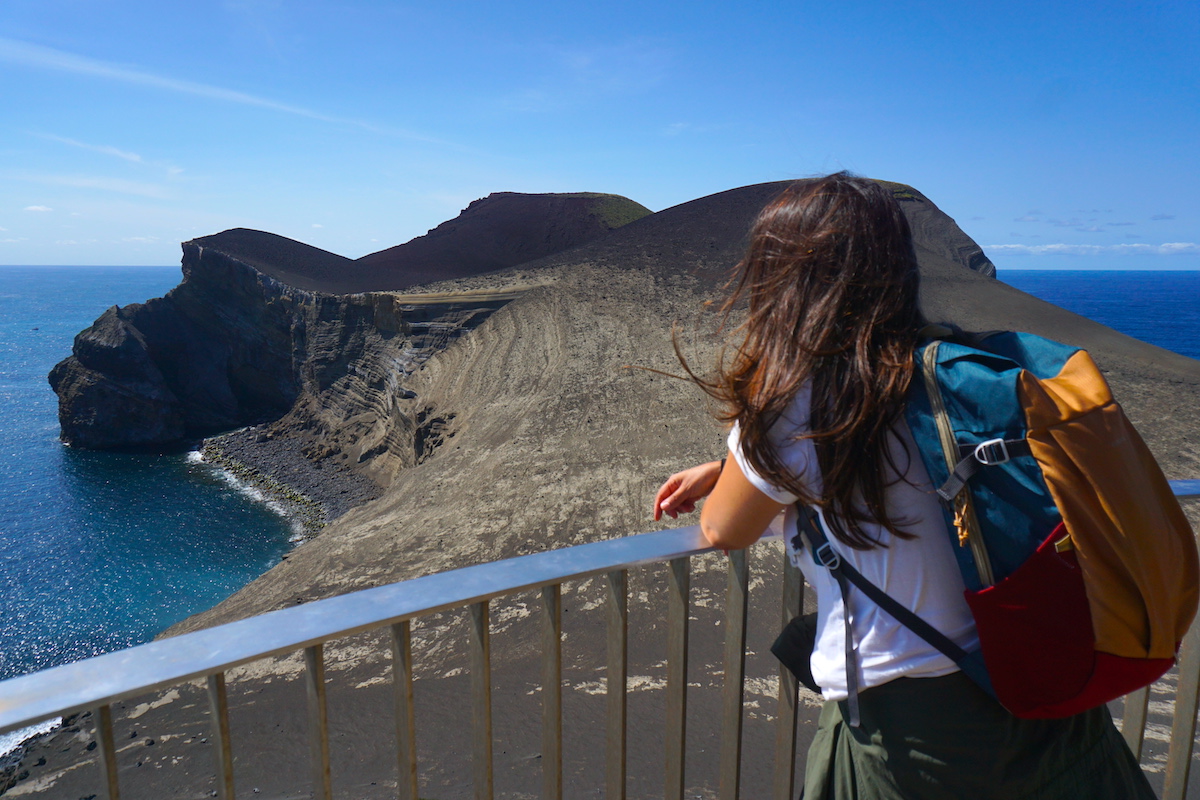
Language: Portuguese
Currency: Euro
Population: 14.483 (in 2020)
When to visit: The best time to visit is usually from April to October, taking into account that the weather in the Azores is characterized by its unpredictability. To enjoy its natural pools, it is best to visit the island in summer, trying to avoid July and August due to the high number of visitors. Find out more about when to visit Faial here.
How long to stay: Minimum 3 days, ideally 5 days. Remember that the proximity to Pico Island, only half an hour away by boat, makes it ideal to visit both in the same trip (and you can even make a day trip to visit the neighboring island, although in our opinion it will be too short). More recommendations on the number of days we recommend spending on the island in this section of the guide and itineraries on the island according to the number of days here.
How to get there: There are only direct flights to Faial from Lisbon (with Sata) so if you fly from other countries, you must fly to other islands like São Miguel first, and from there to Faial, or go to Lisbon first to fly with Sata directly to Faial (we recommend you to use flight comparators like Skyscanner and Kiwi and be flexible with dates). You can also fly to one of the islands of the central group of the Azores (the easiest is to Pico) and from there go by boat (30min, all year round and with several frequencies per day) to Faial. More details on how to get to Faial here
Where to stay: Horta is the ideal base on the island of Faial with many accommodation options for all budgets and several restaurants to choose from. In addition, any destination on the island is less than 40 minutes drive from Horta making it a strategic base to get to know the island. At Randomtrip we stayed at Monte da Guia (40€/night) and we particularly liked it for being located next to the beach of Porto Pim, within walking distance of the city center, overlooking the sea and the mountain of Pico, but you have other options in the center with excellent value for money as Casa da Baía (from 44€/night). More info on where to stay in Faial here.
What to bring: A good travel insurance (in this link we give you a 5% discount on the one we always hire) and here is the list of what you must have in your backpack for this trip
How to get around: The best option is to rent a car, you can check and compare other companies with availability for your dates in comparators like DiscoverCars which is the one we use. We tell you more about how to get around Faial here
How much it costs: From 70€/day per person (approx.) for a one-week trip. More budget information in this section of the guide.
Internet connection: If you are visiting for a few days, your phone supports eSIM and you don’t want to complicate things, we recommend Holafly eSIM (unlimited data, 5% discount with the code RANDOMTRIP) or Airalo eSIM (limited data, but cheaper, 15% discount with the code RANDOMTRIP15). Otherwise, the cheapest way is to get a local SIM (the main companies are Vodafone, Meo and Nos). More info here
Time zone: UTC +0. The time in the Azores archipelago (Portugal) is one hour behind mainland Portugal and the Canary Islands and two hours behind mainland Spain.
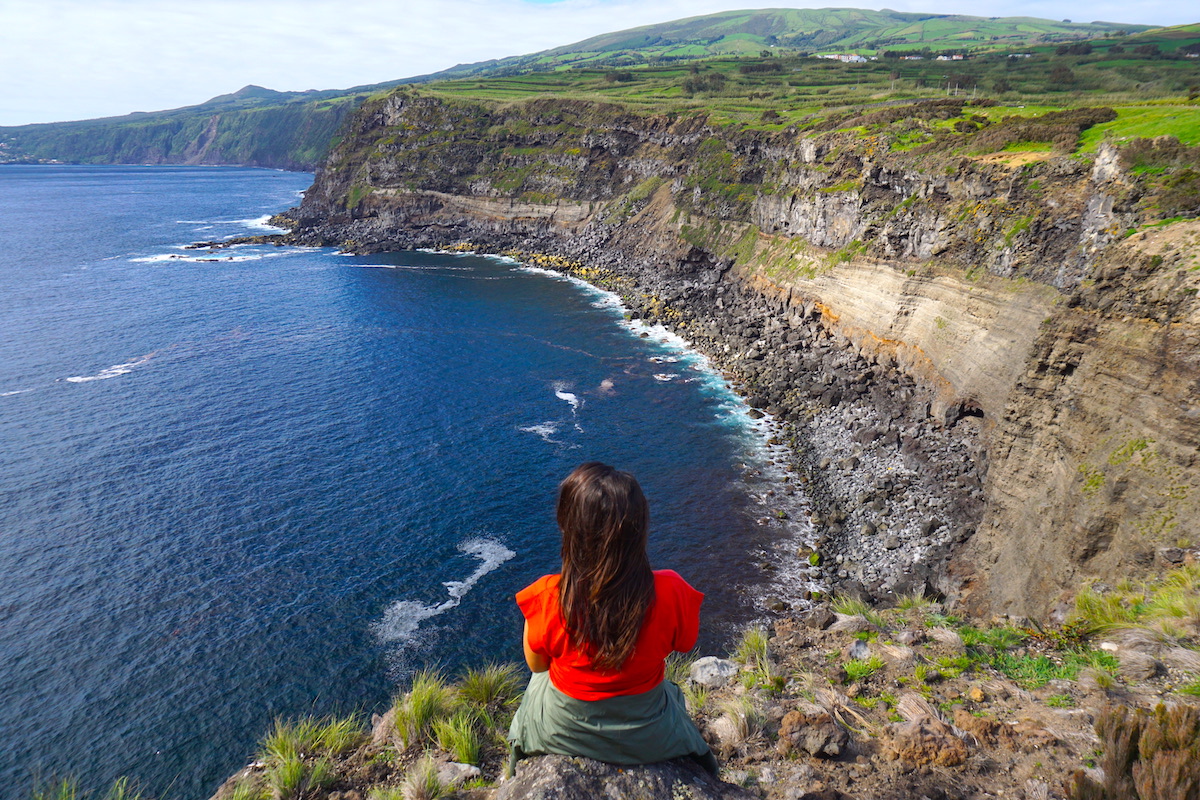
When to visit Faial
In terms of climate, summer is undoubtedly the best time, with higher temperatures, less chance of rain and the possibility to enjoy more of its beaches and natural pools. In any case, the weather in Faial (and in the Azores in general) is very changeable and unpredictable so there are no guarantees at any time of the year (it is often said that you can have the 4 seasons in one day).
The best months to go to Faial are from April to October, trying to avoid July and August which are the months with the most tourists. To see the island dotted with the famous blue hydrangeas at its best, aim to go in June and July. Our favorite months to visit Faial in terms of weather (although you know, always unpredictable) and to take a dip in its natural pools are June and September, with good weather, appetizing water temperature and less tourism.
Faial weather chart with temperatures and rainy days by month:
| Month | Minimum temperature | Maximum temperature | Water temperature (average) | Rainy days |
|---|---|---|---|---|
| January | 13º | 17º | 16º | 10 |
| February | 13º | 17º | 16º | 9 |
| March | 13º | 17º | 16º | 9 |
| April | 14º | 18º | 16º | 8 |
| May | 15º | 19º | 17º | 7 |
| June | 17º | 21º | 19º | 5 |
| July | 19º | 24º | 22º | 3 |
| August | 20º | 25º | 23º | 5 |
| September | 20º | 24º | 22º | 7 |
| October | 17º | 22º | 21º | 10 |
| November | 15º | 19º | 19º | 10 |
| December | 14º | 18º | 17º | 12 |
| Month | Minimum temperature | Maximum temperature | Water temperature (average) | Rainy days |
In terms of events, the Semana do Mar (Sea Week) is very special in Faial. It is a festival that takes place every August, every year, and features concerts, exhibitions and a curious naval parade with dozens of boats (some people even come to the concerts in their own boat, it is quite an event on the island). If your trip coincides with this festival in Faial, you can see the program in this link.
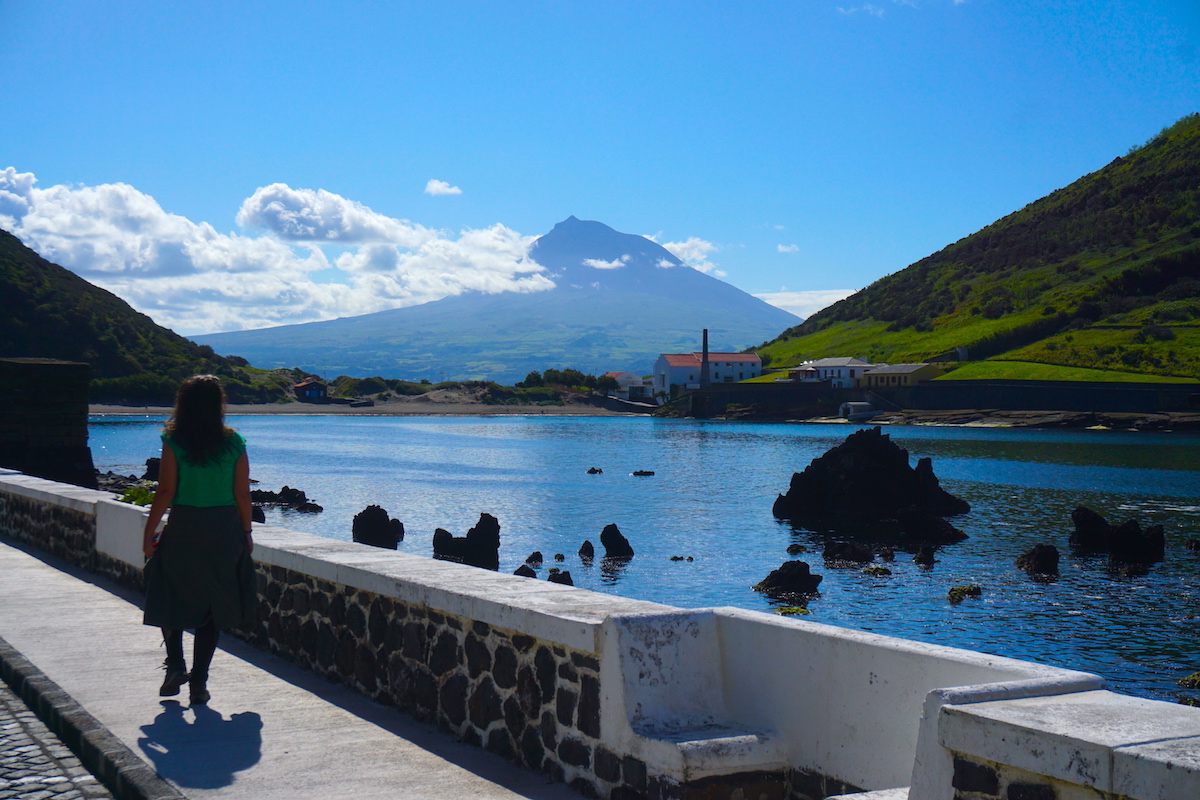
How to get to Faial
There are only direct flights to Faial from outside the Azores from Lisbon (mainland Portugal), so if you fly from any other country you would have to fly to other Azorean islands (like Ponta Delgada in São Miguel or to Terceira) first and from there fly with Sata, the regional airline of the Azores, to Faial, buying in advance because the seats literally “fly”.
The alternative and what is usually cheaper is to fly from within Portugal, which has low cost flights to Lajes (Terceira)/ Ponta Delgada (São Miguel) and once there with Sata to Faial or even a direct connection between Lisbon and Faial with Sata, which if you match the dates (there are only flights a couple of days a week) is usually the fastest and cheapest option. The flight from Lisbon takes 2:15h and we recommend you to be flexible with dates and use price comparators like Skyscanner and Kiwi.com (which include Sata flights). From the Faial airport to Horta is just 9km which you will do in your rental car that you pick up at the airport, by cab or by bus.
RandomTIP: If you fly from Lisbon, choose a place on the left side of the plane to arrive in the Azores with the island of Faial and the imposing mountain of Pico (on the homonymous island) welcoming you to the archipelago.
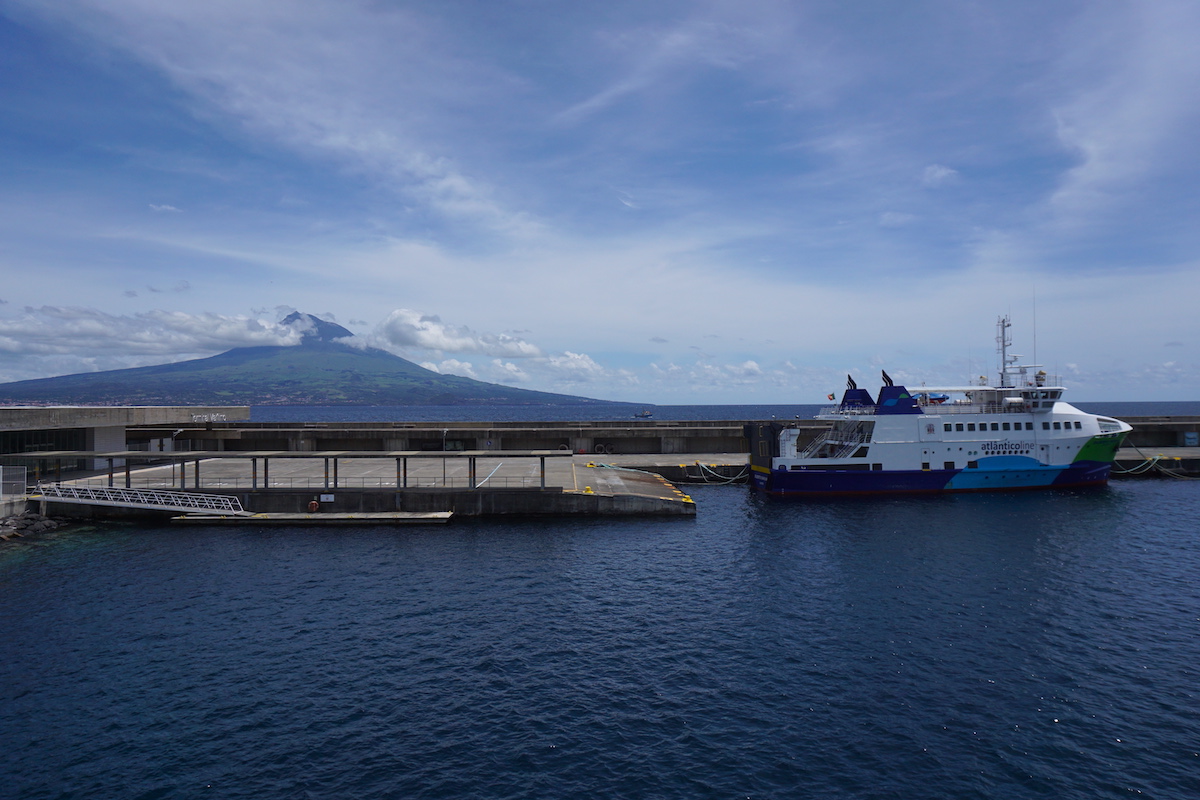
Another option to get to Faial is from one of the neighboring Azorean islands by boat, there are 4 lines that pass through Faial:
- From Pico, the nearest island, it takes only 30min (3.6€), and there are connections every day all year round (several boats per day, more frequencies in summer). All lines do this route
- From São Jorge, it takes 2h15 (15.50€), stopping at Pico, also every day all year round. 3 lines make this route
- From Graciosa and Terceira there is a connection but much more limited and only in summer (with stopover in São Jorge and Pico), two days a week. Two lines make this route
You can check boat schedules and purchase tickets at https://www.atlanticoline.pt/ (although schedules and routes are usually much better explained here).
Here is a map with the 4 lines (blue, green, purple and white) that connect the 5 islands of the central group of the Azores:)

How many days to stay in Faial
We recommend a minimum of 3 days, although the ideal for Faial is between 5 days and a week, so you can enjoy everything it has to offer, take the opportunity to relax in its natural pools if you travel in summer and have a margin in case any of the plans are canceled by the weather.
Remember that the proximity to Pico Island makes it ideal to visit both in the same trip (and you can even make a day trip to visit the neighboring island, although in our opinion it will be too short).
If you have more days and can join Faial with the other islands inside the “Azores Triangle” in the same trip – Faial, Pico and São Jorge – you will not regret it. For this reason we propose different types of itineraries, of more or less days, in this section of the guide.
If, on the other hand, you have little time to get to know Faial, you can get an idea of the island in this one-day tour of Faial or in this half-day tour but, we warn you, you will be left wanting more. In this section we propose itineraries in the island according to the number of days.
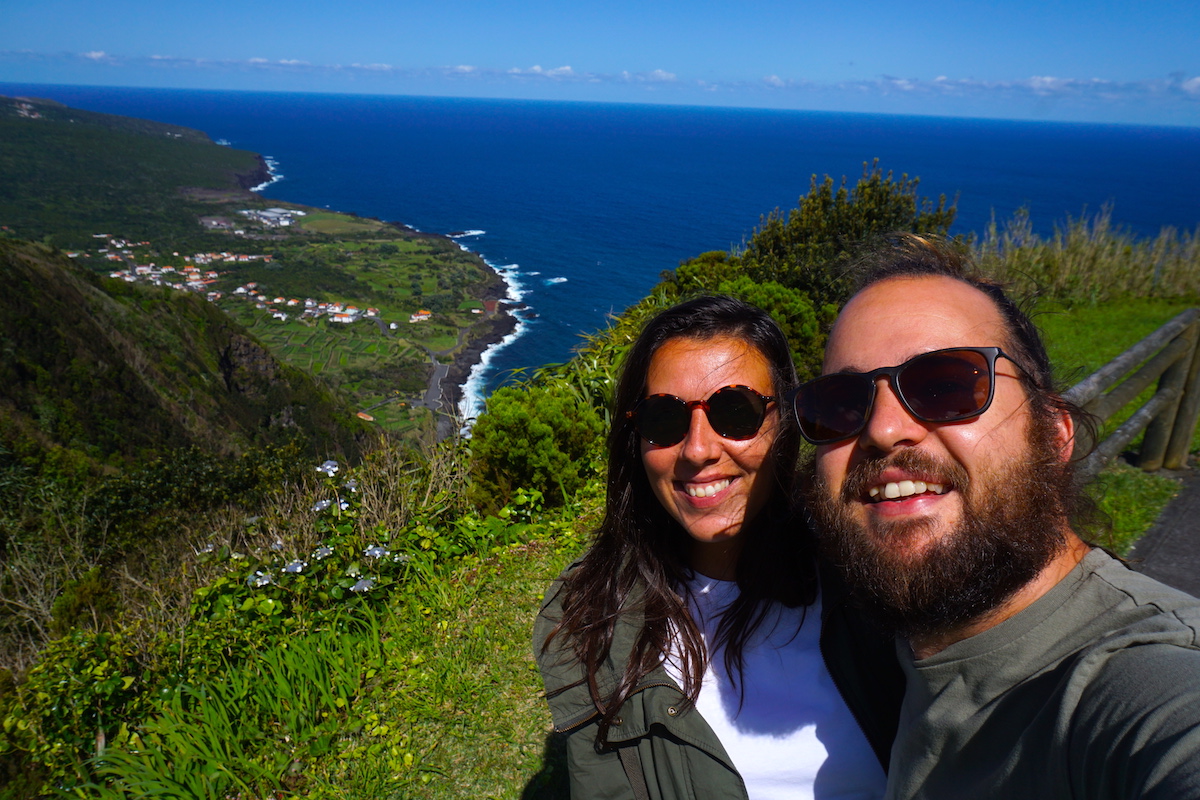
Azores travel insurance
Do you know what cannot be missing in your luggage? A good travel insurance! We are affiliates of several specialized travel insurance companies and you can get a discount in some of them if you book with us:
Appart from the medical assistance in case something happens when you visit Portugal, the insurance can also cover anything that happen while you get into adventures like hiking, kayaking, snorkeling and diving. Also, if something happens to your luggage (damage, theft, delays, losing it) or if your flight is cancelled or delayed (or, if because a delay you lose another connecting flight), a travel insurance can also help
Carefully read the terms and conditions of each policy and hire the insurance that best suits your needs.
Things to see and do in Faial
Here we leave you a summary of the places of interest to visit in Faial, and below you have the map and specific information about each place.
Things to see and do in Faial
- Capelinhos, Portugal’s newest land after the volcano eruption
- Caldeira de Faial, a sanctuary of biodiversity and one of the most incredible landscapes of the archipelago
- Horta, meeting point for sailboats loaded with adventures from all over the world.
- Natural pools between lava flows in Varadouro, Castelo Branco and Feteira
- Viewpoints with breathtaking panoramic views of a profiled coastline where the black-lava contrasts with the blue-sea.
- Biodiverse trails that can be followed by a hike or end with a dip in the sea.
Map of Faial
Here we leave you all the places of interest in Faial that we talk about in this guide on a Google Maps map that you can carry on your smartphone to consult at any time.
Here is also a tourist map with the roads of Faial (click on the image to download it in larger size and resolution).
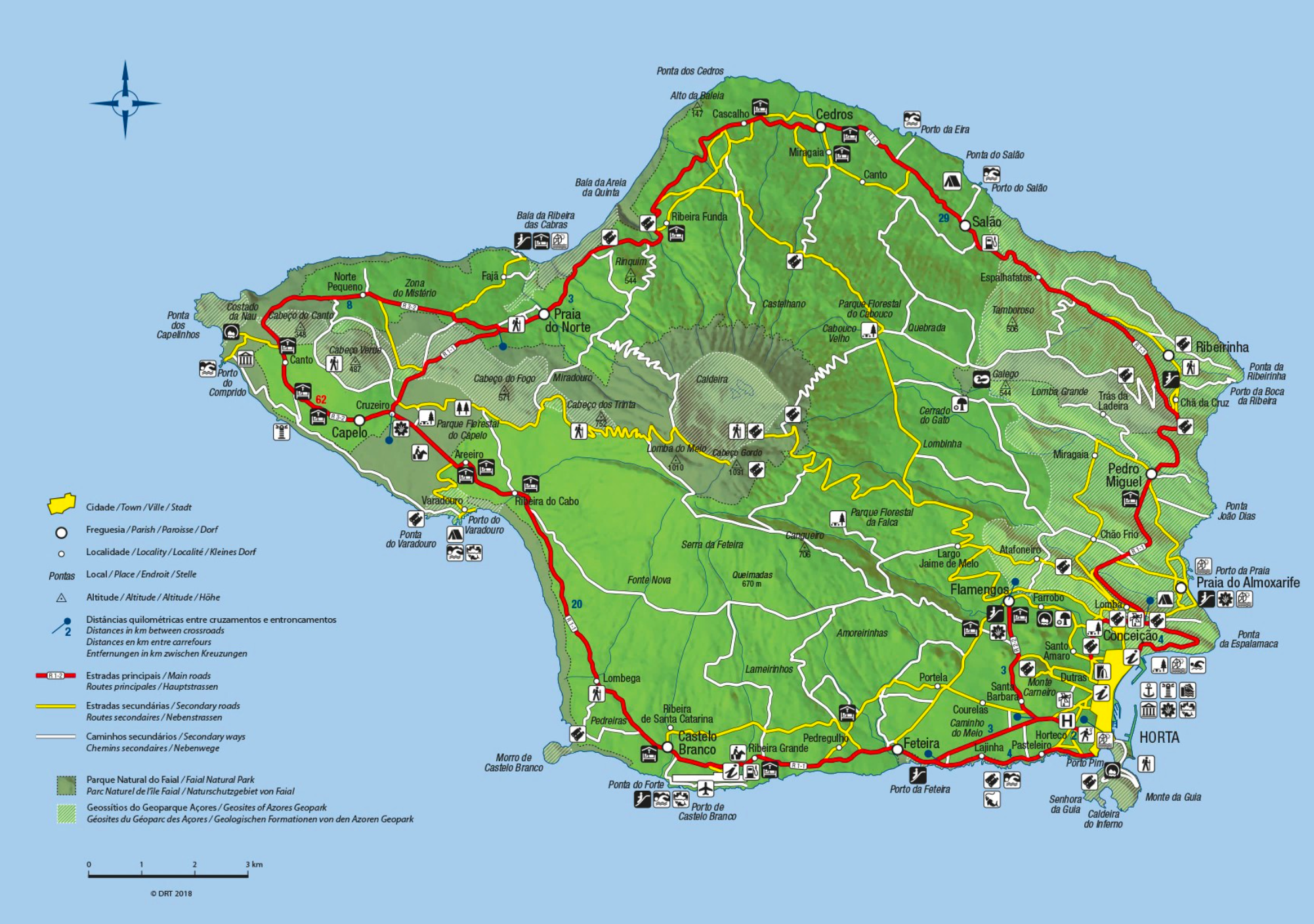
Vulcão dos Capelinhos
The Capelinhos Volcano erupted in 1957 for 13 months: it started on September 27, 1957 and did not end until October 24, 1958. The volcano woke up under the sea, with the emission of ash jets that reached 4 km, and initially created an island off the coast. The eruption moved from the submarine to the subaerial phase, with lava jets (the Capelinhos lighthouse was left standing, buried up to the third floor) and expelling enough material to join the new island to the mainland, increasing the surface of Faial by 2.4 km2. This area is the youngest land in Portugal and this entire protected area is one of the geosites of the Azores Geopark.

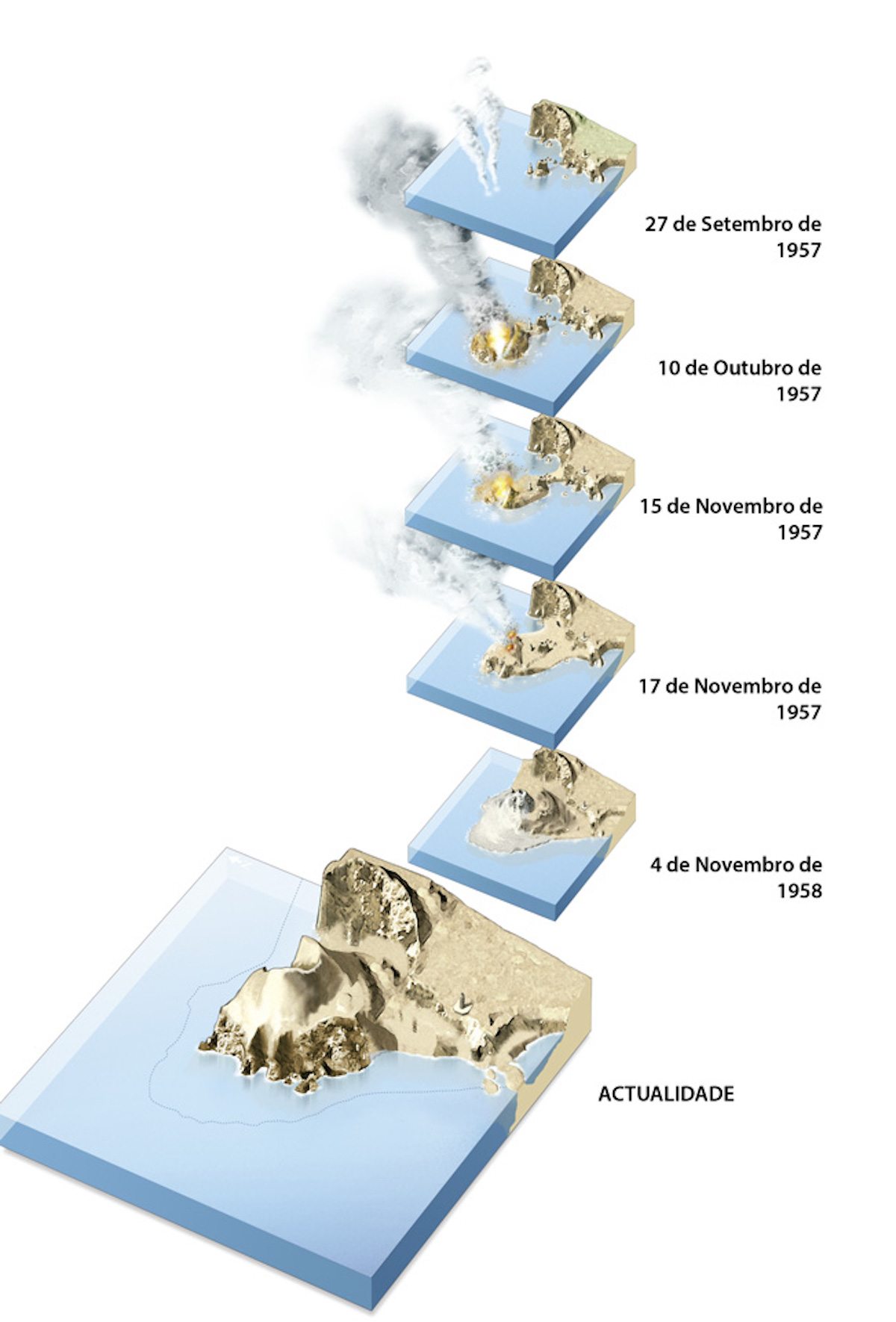
Graphic of the evolution of the eruption in Capelinhos. Source: National Geographic Portugal
There were no human fatalities from the Capelinhos volcano eruption due to the evacuation of the closest populations, but the destruction of houses and agricultural lands caused the emigration of more than 10,000 people from Faial (about half of the island’s population) to the USA. The Azorean Refugee Act of 1958, granted 1500 visas for the affected families, although in the following decades, more than 175,000 people from the Azores (from several islands) migrated to the USA and Canada, more than 30% of the Azorean population.
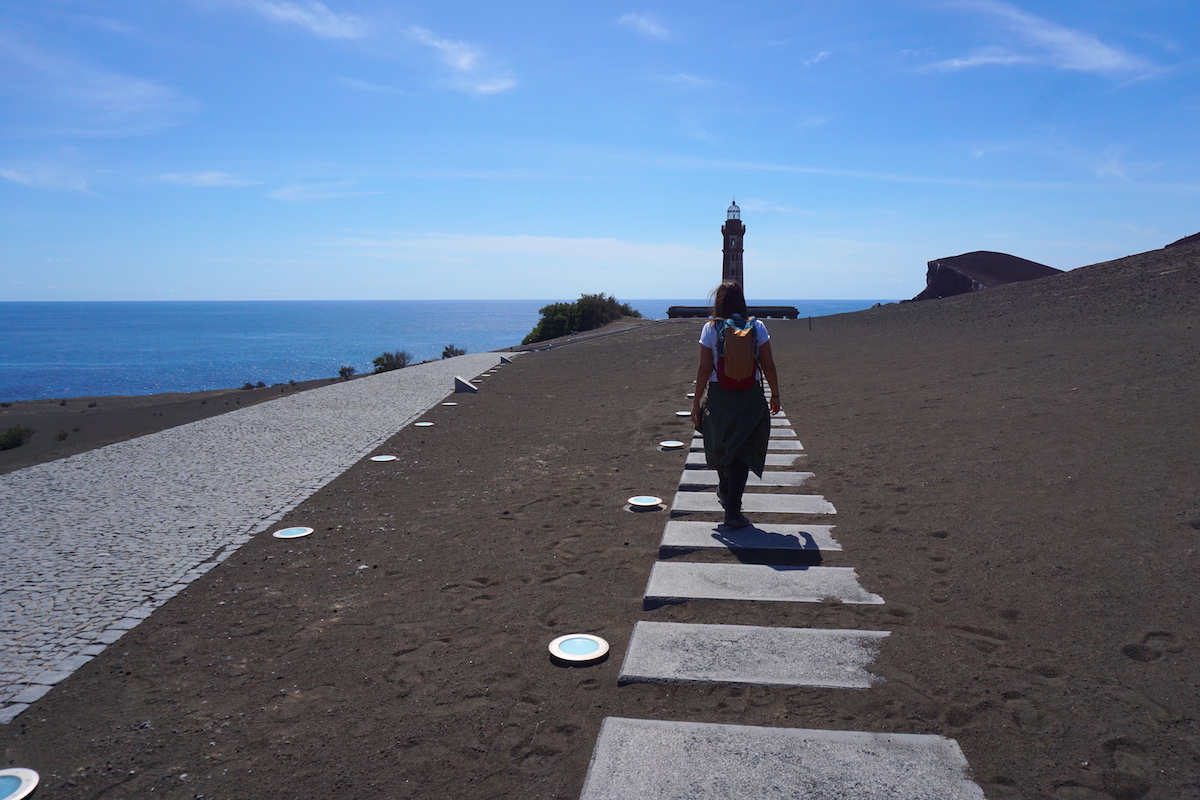
And although the greatest Azorean migratory expression was in the 60s of the twentieth century as a result of the eruption of Capelinhos, emigration in the Azores has always been very significant and the cultural connection with the USA and Canada goes back a long way. As early as the 18th century, the Azorean population was heading to North America aboard American whaling ships that began to appear in the islands. It is estimated that there are currently 1.5 million Portuguese emigrants of Azorean origin in the USA, predominantly concentrated in states such as Massachusetts and Rhoad Island on the East Coast and California on the Pacific Coast. So don’t be surprised if on a trip to the USA or Canada, you come across a Casa dos Açores where part of the migrant community and Portuguese descendants gather.
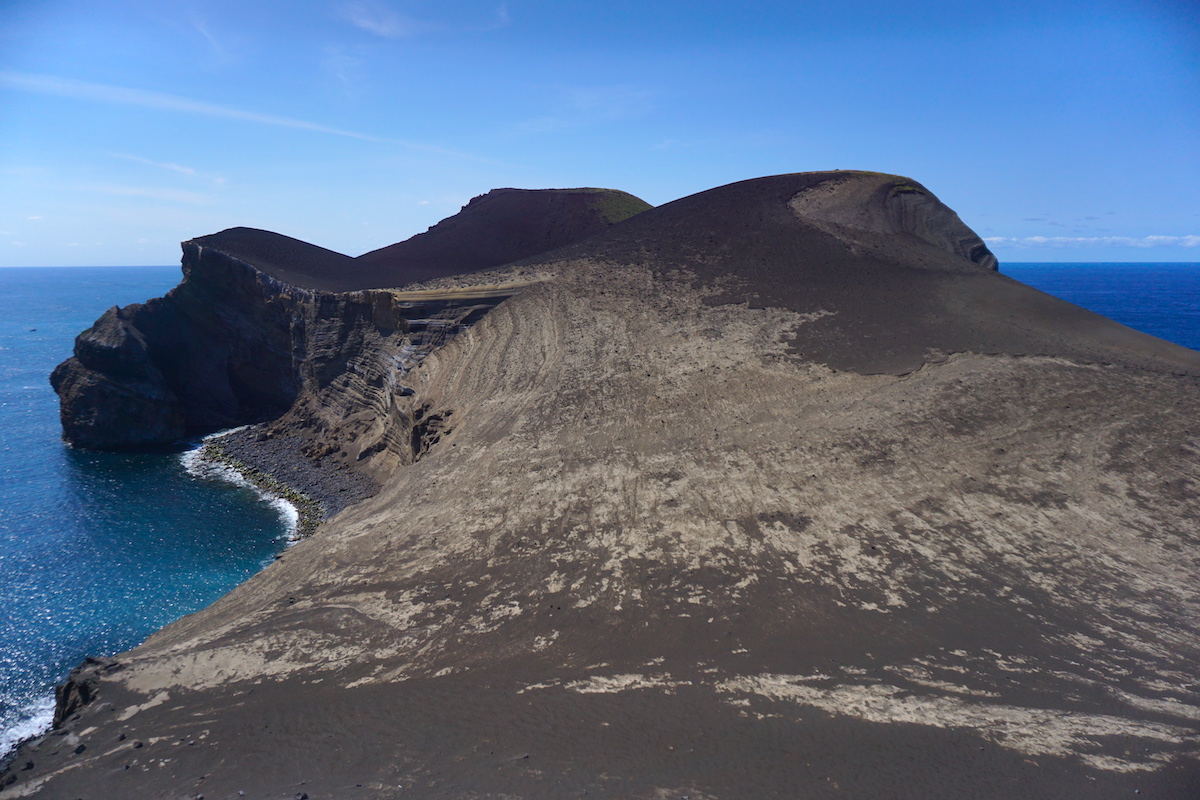
The Capelinhos Lighthouse, the resistant that stood upright
Climbing the sturdy Farol da Ponta dos Capelinhos that remained standing, buried by lava up to the third floor, is a must to enjoy a unique view of Portugal’s newborn land. It is striking to be aware that this was the edge of the island of Faial before the 1957 eruption and to look out over the entire land area that was added to Faial since that time.
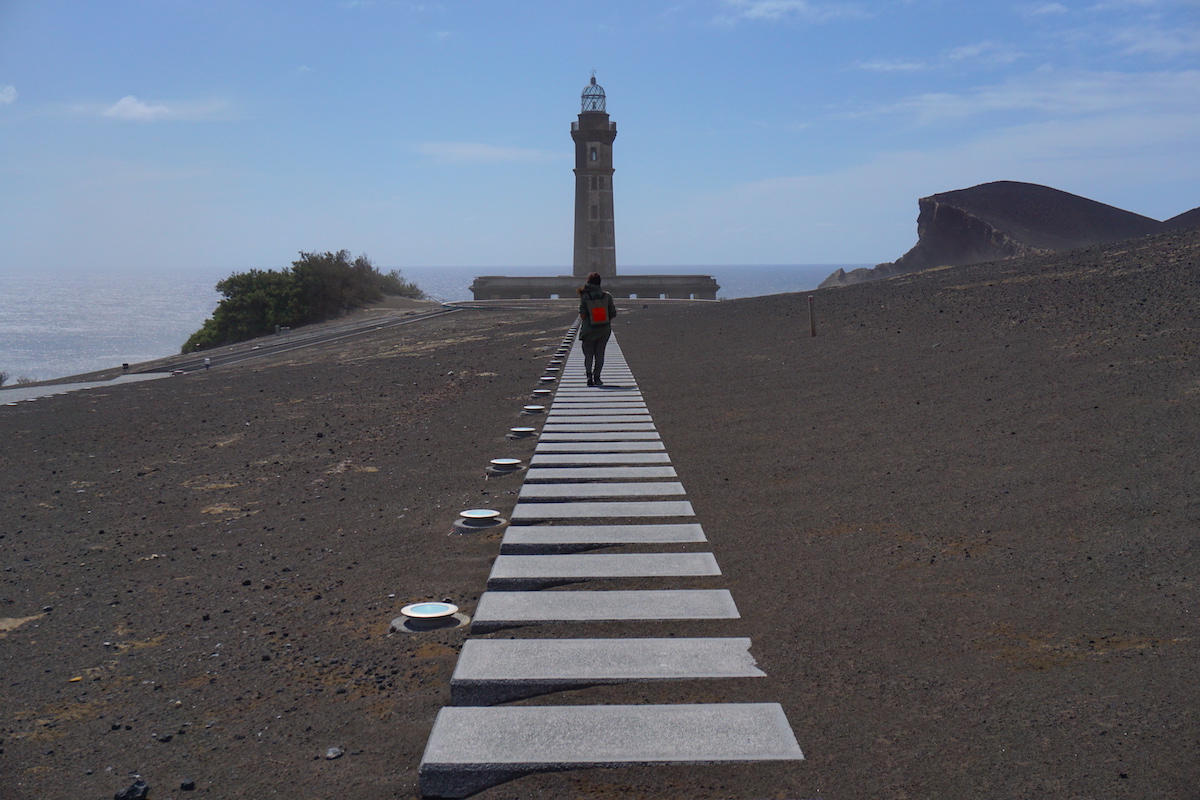
Built at the end of the 19th century, the Punta de Capelinhos lighthouse (Farol da Ponta de Capelinhos) was in operation when the volcanic eruption began at 06:45h on September 27, 1957. As the eruption continued, lighthouse workers removed the volcanic ash but when, finally, the volume of ash became so big, it was necessary to abandon the area. Although the lighthouse survived the eruption intact, it never functioned as a lighthouse again.
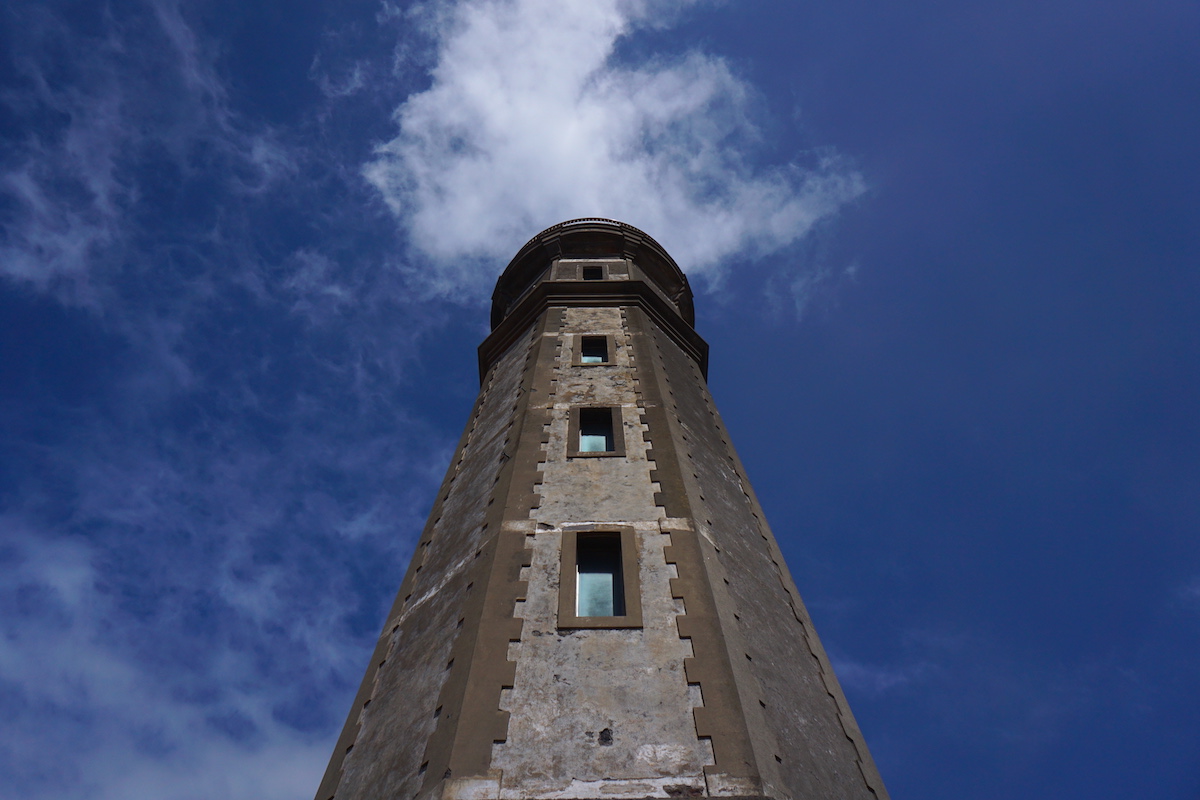
Hours: Open every day from 10h to 18h. Price to get upstairs inside the lighthouse: 1 € / person
Capelinhos Volcano Interpretation Center
The Interpretation Center, inaugurated in 2008 and designed entirely in concrete by architect Nuno Ribeiro Lopes, is buried in the ground in front of the lighthouse (to minimize its impact on the landscape) and is currently the most visited museum of the archipelago. It is located on the first floors of the old lighthouse, now buried by ashes, and with a huge cone in the center symbolizing an eruption and whose diameter is accompanied by a circular light entrance.
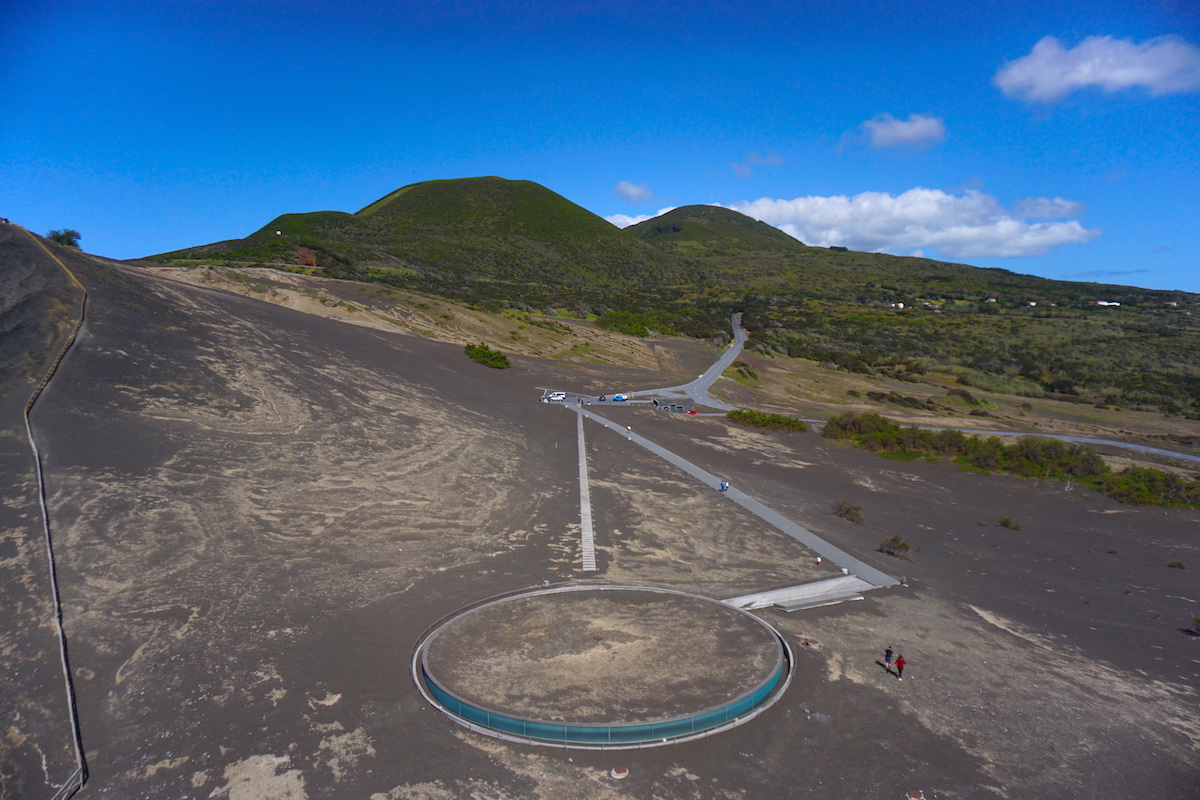
Its exhibition brings us closer, in an interactive way, to the eruption of the Capelinhos volcano and the days after the eruption, the geological phenomena that led to the formation of Faial, the Azores and the different types of volcanic activity in the world. In addition, we will learn about the history of the lighthouses of the Azores, including the Ponta dos Capelinhos Lighthouse.
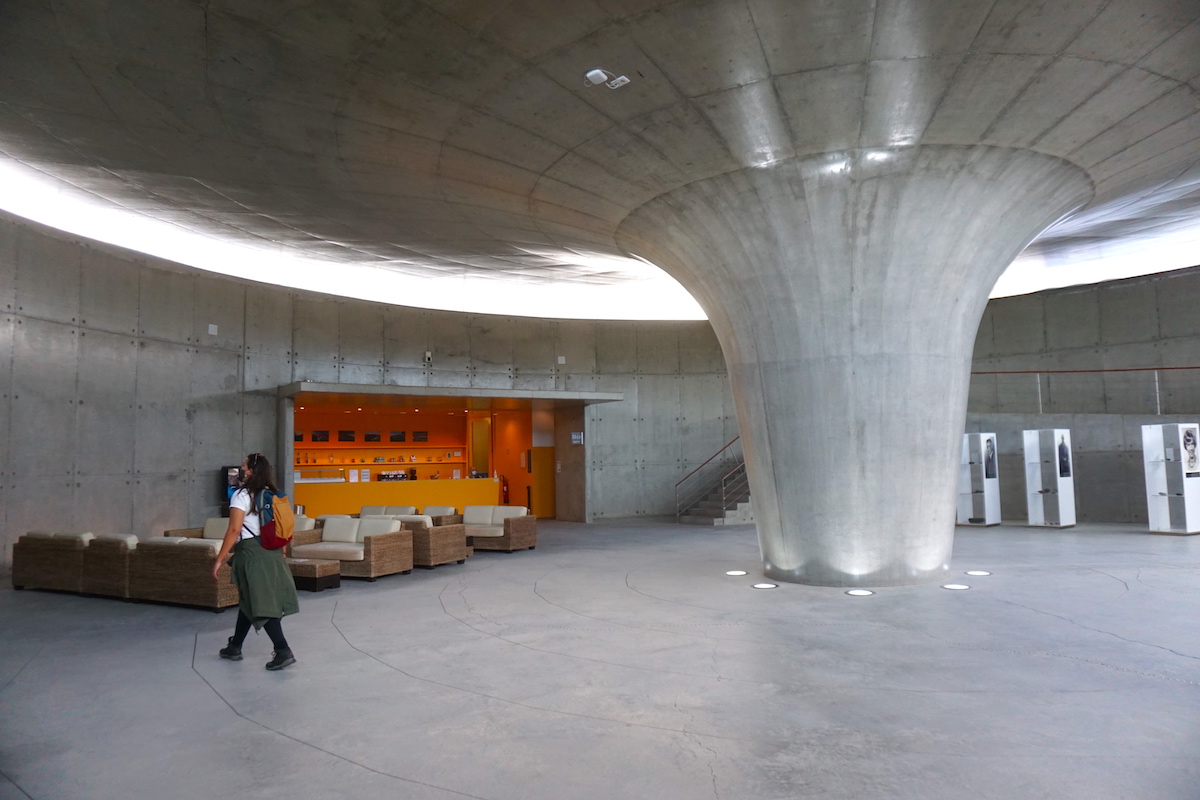
The island of Faial was formed by a large eruption 800,000 years ago (there is a huge model of what the island of Faial looked like on display) and changed over time, the most striking change being the new 2.4 km2 added by the Capelinhos volcano, of which we can only see about 20% today.
That great eruption 800,000 years ago began in a place known today as Porto da Boca da Ribeira where the Great Faial Coast to Coast Hiking Route (GR01 FAI) begins, a linear route of 19.3 km (36 km round trip) that follows the geological evolution of the island along volcanic cones and craters from the oldest eruption to the most recent, Capelinhos. More details of the route in the section The Best Hiking Routes in Faial.
In addition to the geological phenomenon, the photographs of the documentation center bring us closer to the sociological phenomenon of the eruption of the Capelinhos volcano, with black and white images from the 1950s with families visiting the area and even children playing with the ashes.
Schedule and Guided Tours (to be booked at least 48 hours in advance. The duration of the visit is 60 minutes):
- From 01/04 to 31/10:
- Schedule: from 9:00h to 18:00h
- Guided tours:
- 10:00h
- 11:30h
- 14:30h
- 16:00h
- From 01/11 to 31/03
- Schedule: from 9:00h to 17:00h
- Guided tours:
- 11:00h
- 15:00h
Reservation contact: +(351) 292 200 470 or e-mail: info.sraac.civc@azores.gov.pt
Price to enter the Documentation Center: 10€ for adults, 5€ for children between 7 and 14 years old and over 65 years old. Free admission for children under 6 years old and Azorean residents.
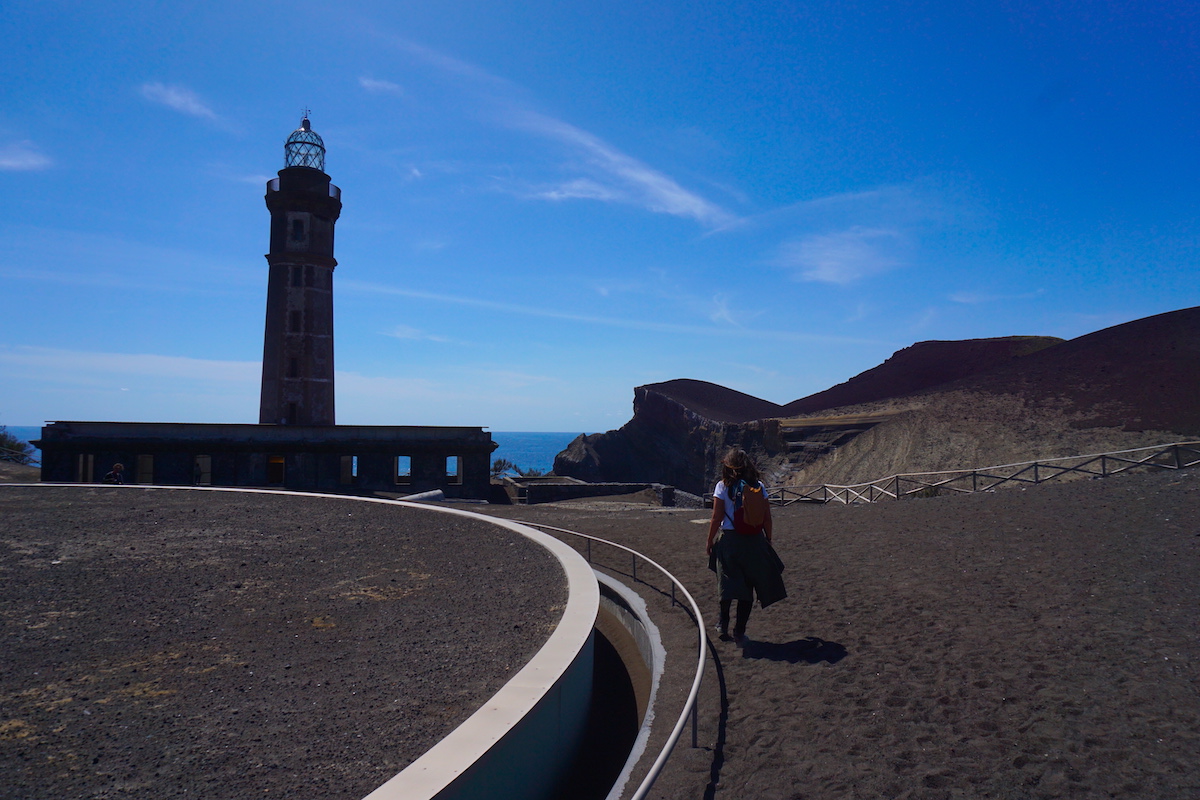
Trails through Capelinhos: exploring on foot the youngest land in Portugal
It is very impressive to step on land (it looks like Mars) that 67 years ago was not here. It is possible to walk along a trail and contemplate the material thrown by the volcano less than 70 years ago. The Cabeço do Canto (PRC01FAI) is a circular trail of 5 km round trip (2.6 km one way), of medium difficulty that takes about 2 hours to complete to reach the Capelinhos Volcano on foot. The trail runs through areas of great volcanic interest, such as the volcanic mountain range of the Capelo Peninsula, a geosite with about 20 volcanic cones, from Cabeço dos Trinta to Capelinhos. More details of the trail in the section The Best Hiking Routes in Faial.
In addition, thanks to the Azores Trail Run (48 km), an ancient trail was rediscovered that connects the Praia do Norte fajã with Capelinhos along a centuries-old stone path, possibly built by the island’s first settlers.
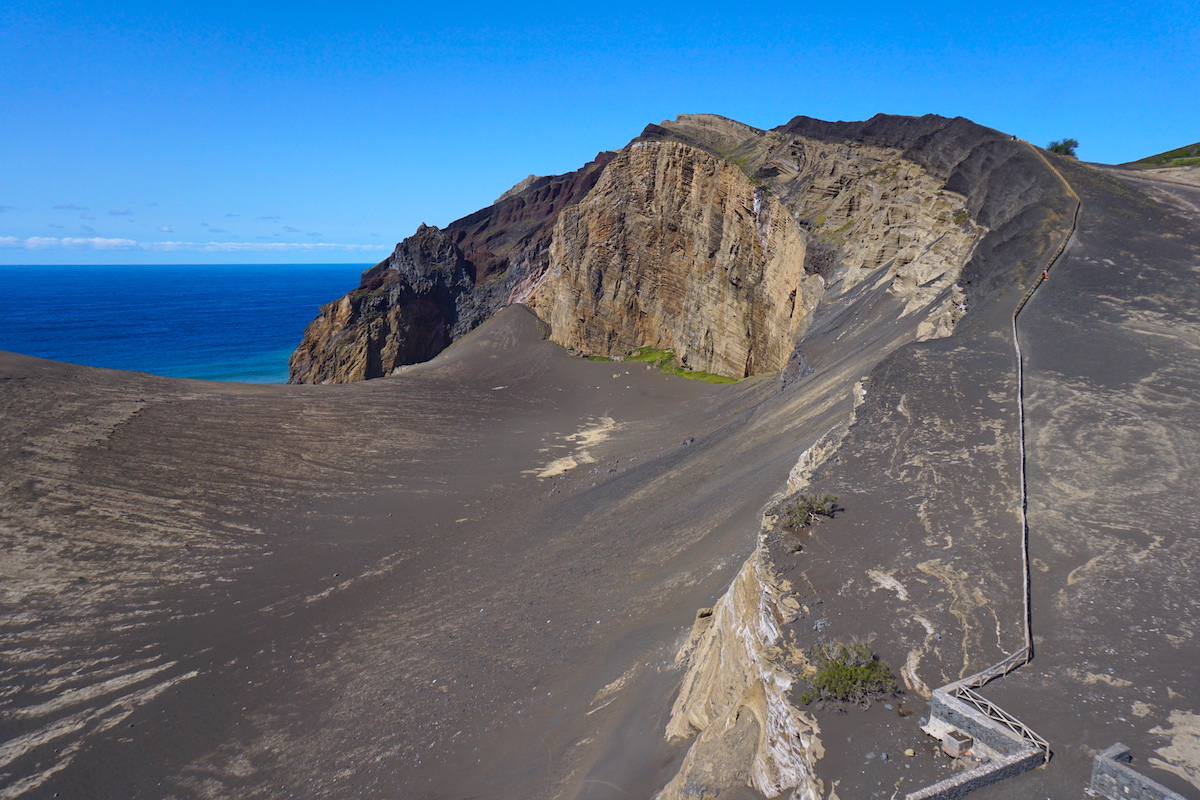
Contemplating the Capelinhos volcano from the sea or from the road
You can also contemplate the Capelinhos volcano from another perspective on a boat ride, it costs 45€/person (35€/children under 12 years old) in a 3-hour ride on the Horta-Capelinhos-Horta route and you can book and get more information on this link.
If you prefer a roadtrip to contemplate the island’s most recent lunar landscape, try driving along the road from the natural pools of Varadouro to Capelinhos, along the coast, and slow down.
It is about 10 nautical miles from Capelinhos where you will find the famous Condor underwater bank where you can do one of the best dives of the island (a shallow dive) or, if you prefer because you are not a certified diver, snorkel with the famous blue sharks. You can book your dive (equipment included) and check the details here or book your blue shark snorkeling tour here. We recommend you to do this activity if you visit the island between July and September.
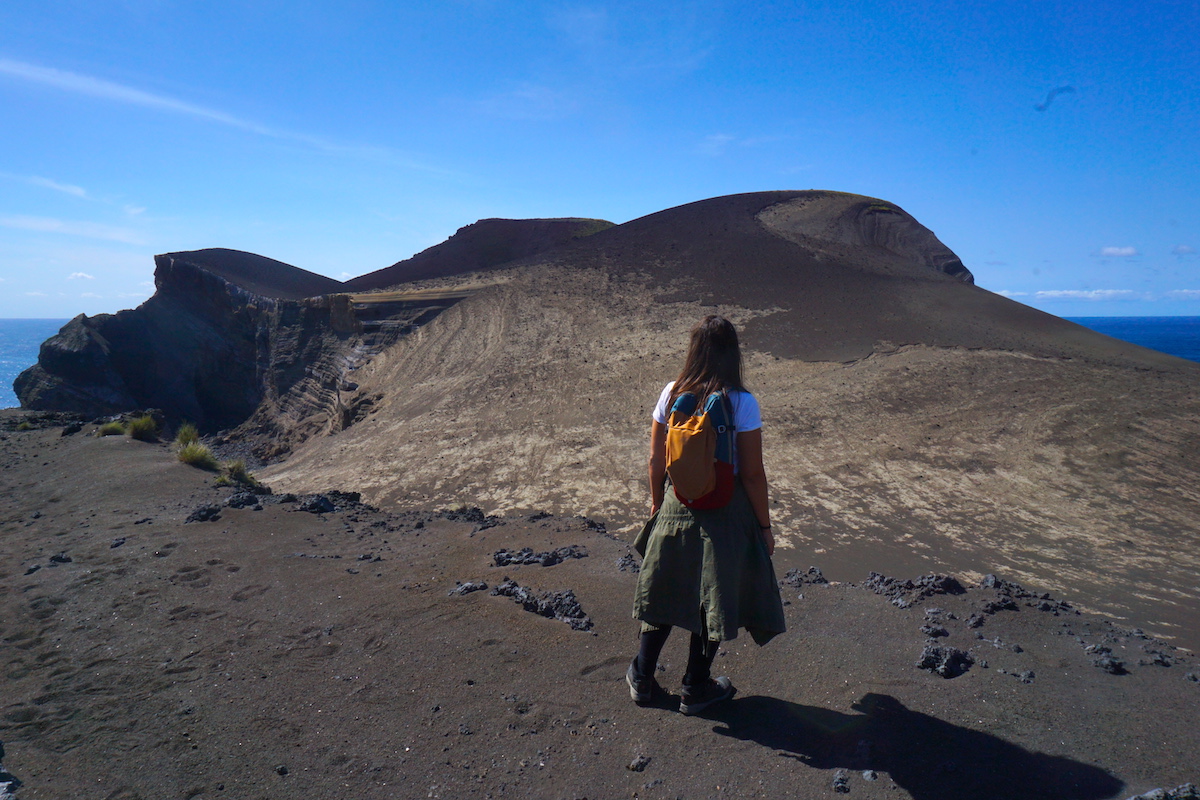
Surroundings of Capelinhos
Natural pools Porto do Comprido
Precisely next to the youngest piece of land in Portugal are some natural pools overlooking the volcano, those of Porto do Comprido (also known as Piscina Natural dos Capelinhos). Porto do Comprido was once one of the most productive whaling stations in the Azores, before the whaling ban.
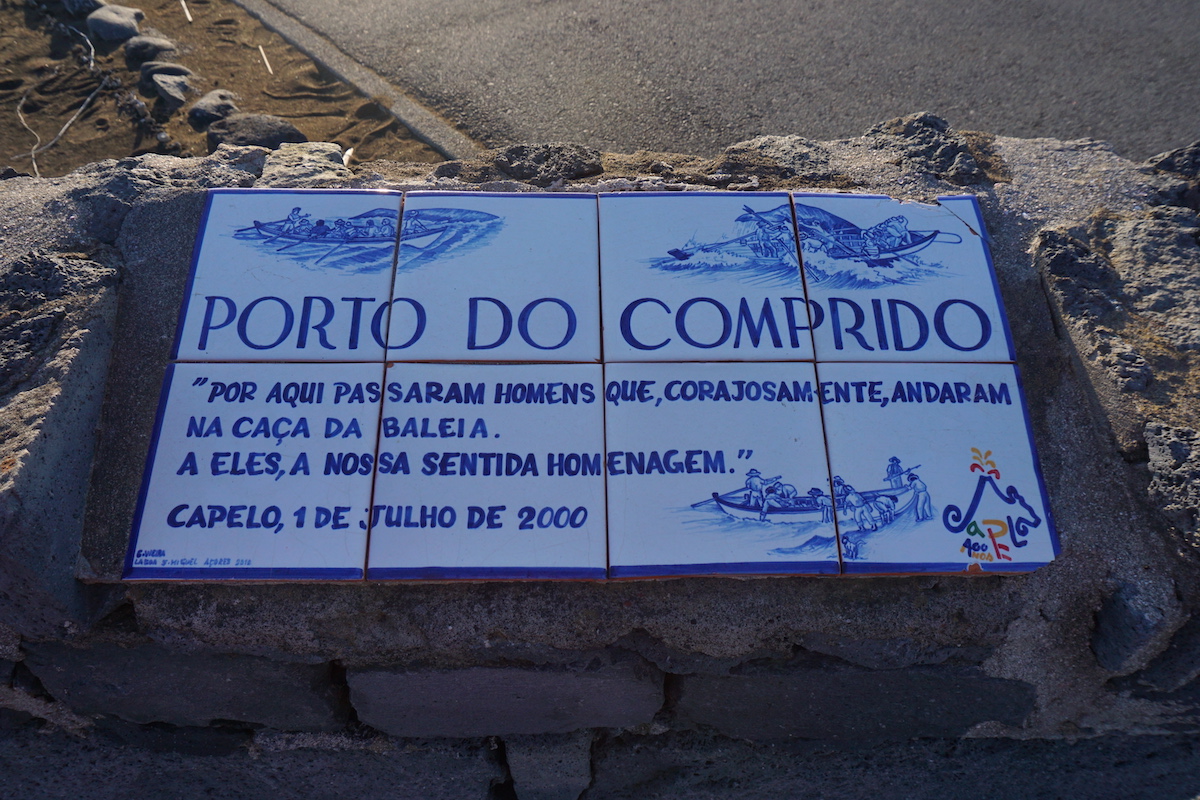
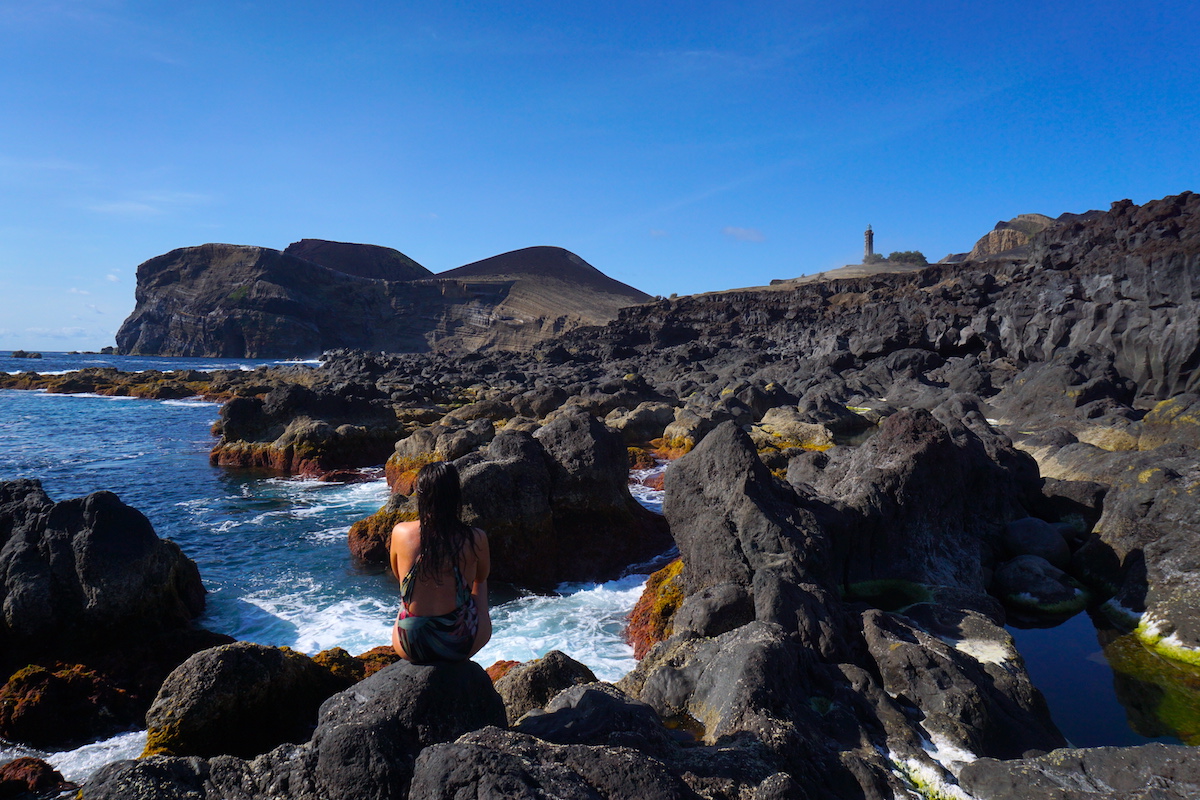
You can take a dip next to the youngest land in Portugal or jump into the water in a kayak to observe the volcano from the sea. At Randomtrip we liked this spot so much that we stayed until sunset and, spoiler: Capelinhos with the sunset is a great plan.
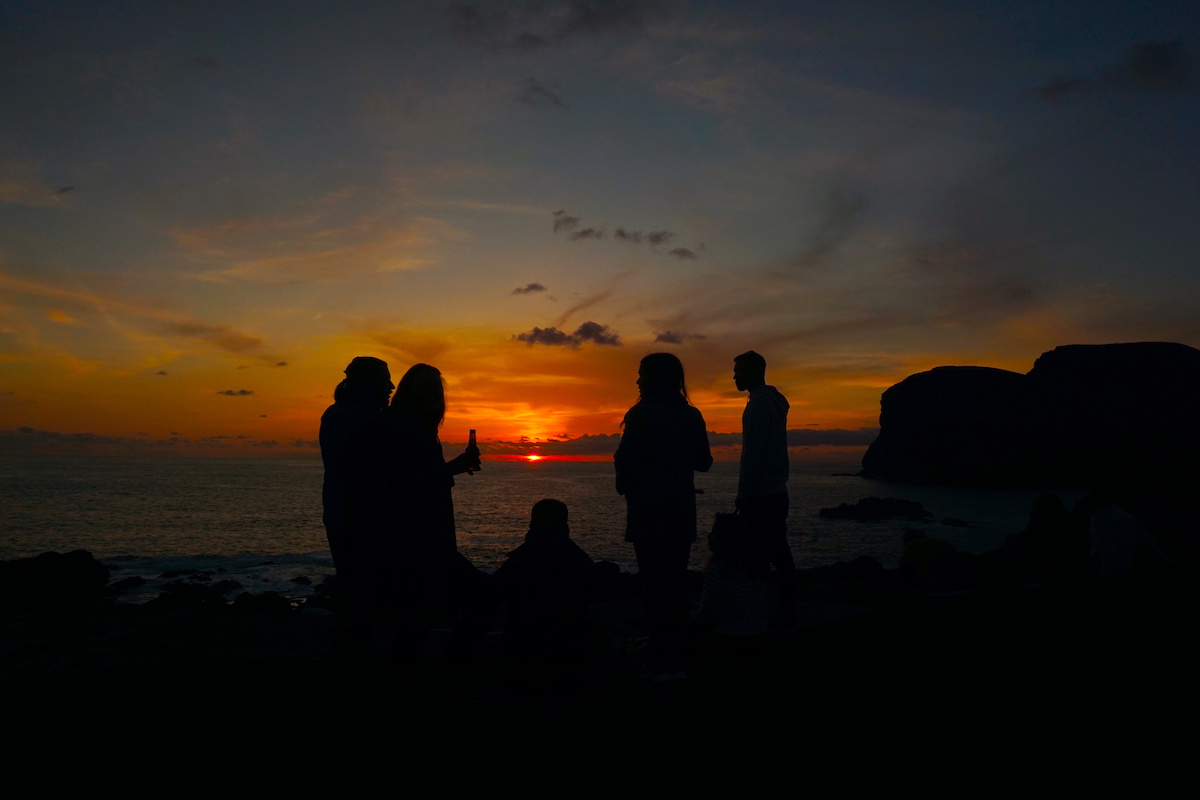
Casa dos Botes
Just off the access road to Porto Comprido, a former whaling village, the small Casa dos Botes museum shows us an old whaling boat and some facts about the whaling industry, one of Faial’s most dangerous occupations, vital to the island’s economy for many years, from the 19th century until it was banned in 1982.
Since its prohibition, the activity of the whaling industry and whaling derived to the respectful observation of cetaceans in their habitat, in the wild. You can book your whale watching tour from Horta here
Centro de Artesanato de Capelo
At the Capelo handicraft center, a white building with incredible views of the Atlantic Ocean, we found authentic relics. We learned about the island’s traditional handicraft techniques such as straw embroidery, which has a similar effect to gold thread embroidery but with straw (the straw is broken and then softened with a knife because only when it is soft and in very fine pieces is it possible to start embroidering).
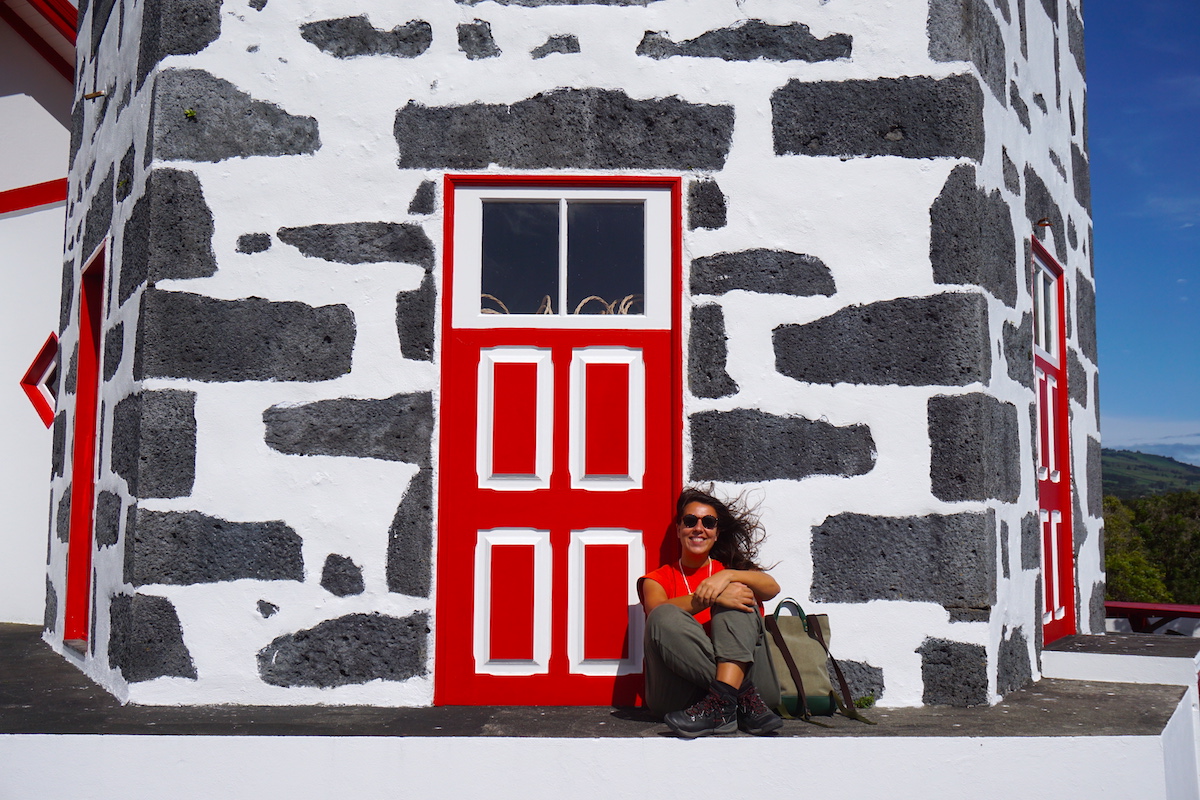
We also learned about the handicraft technique made with the inside of the fig tree branches.
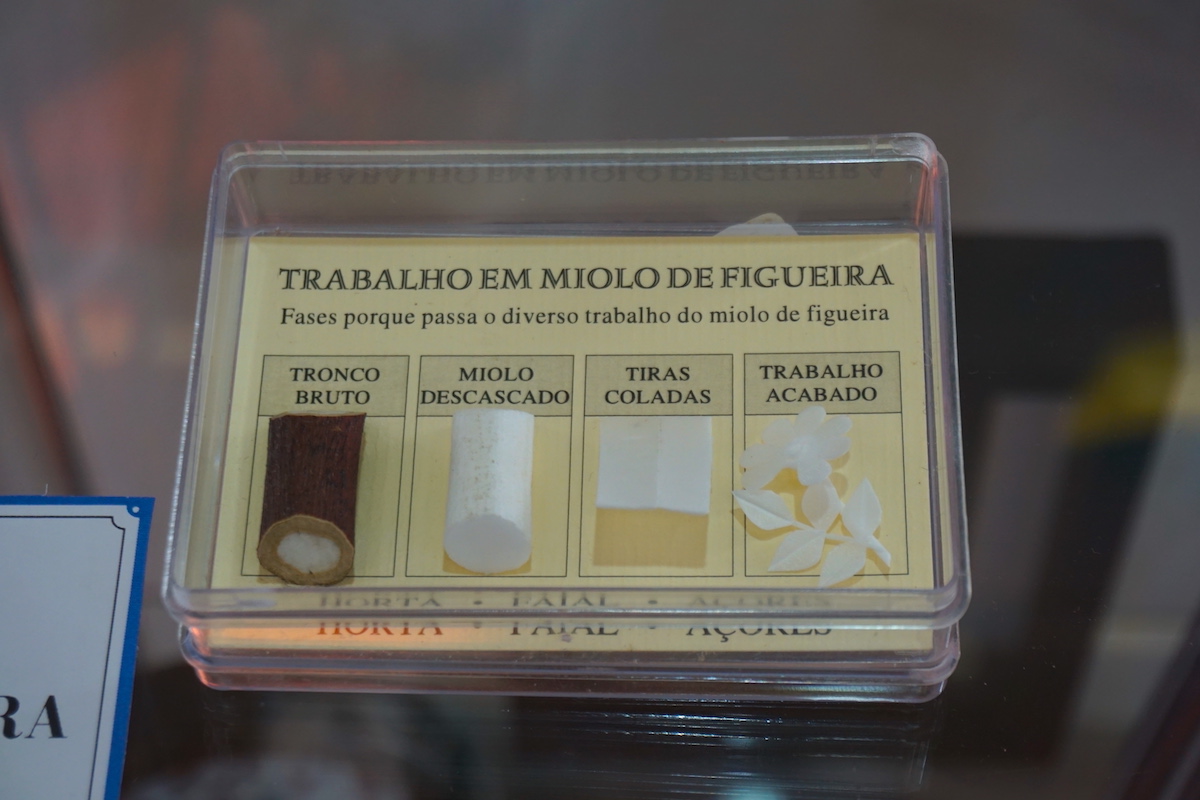
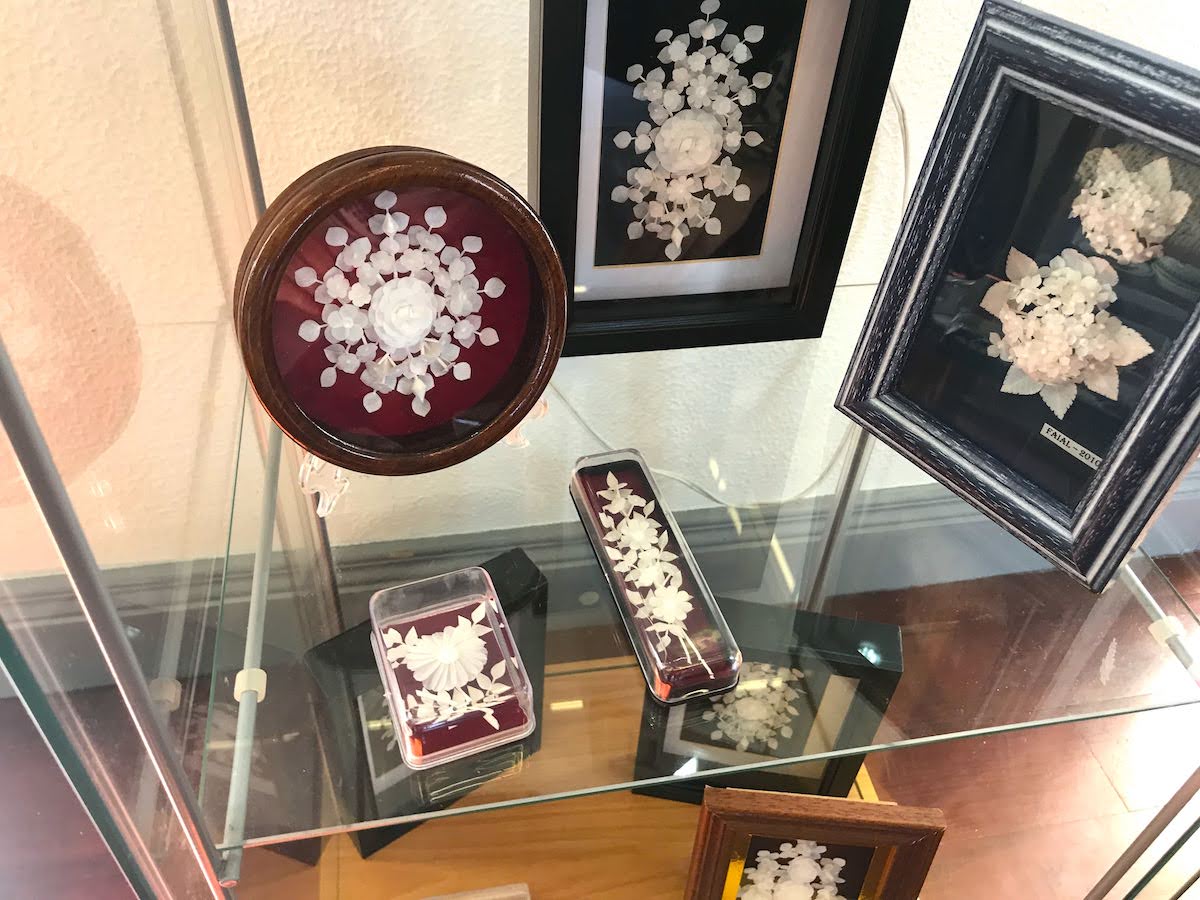
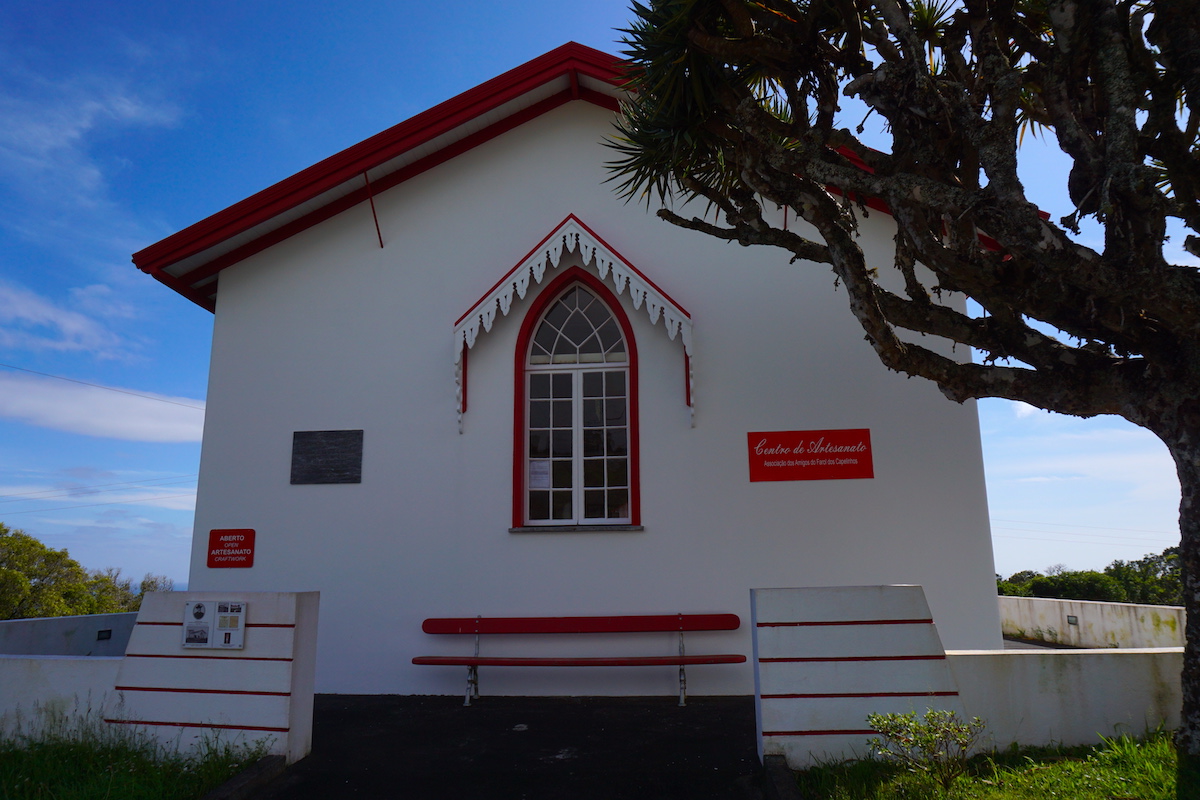
But we were most excited to find an album of old photos of the Capelinhos eruption. Photographs of the phases that the area went through from September 1957 to October 1958:
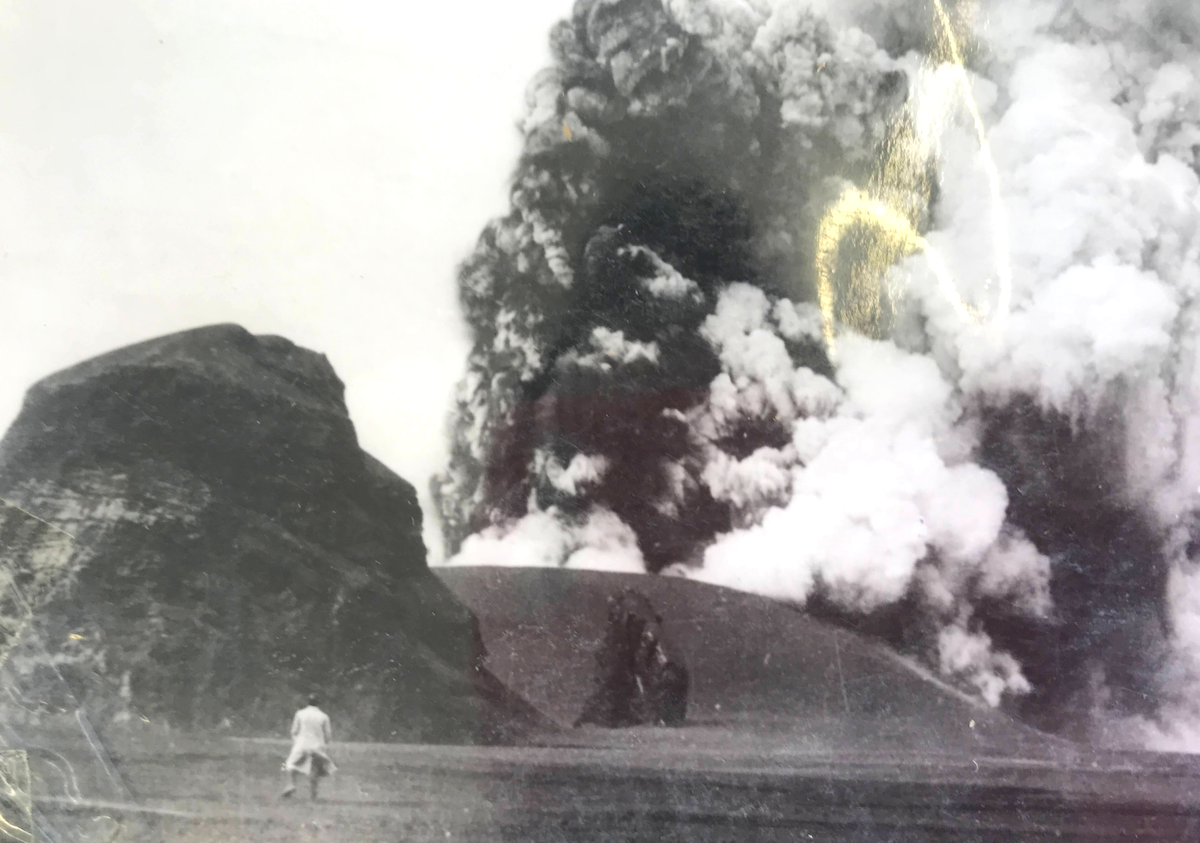
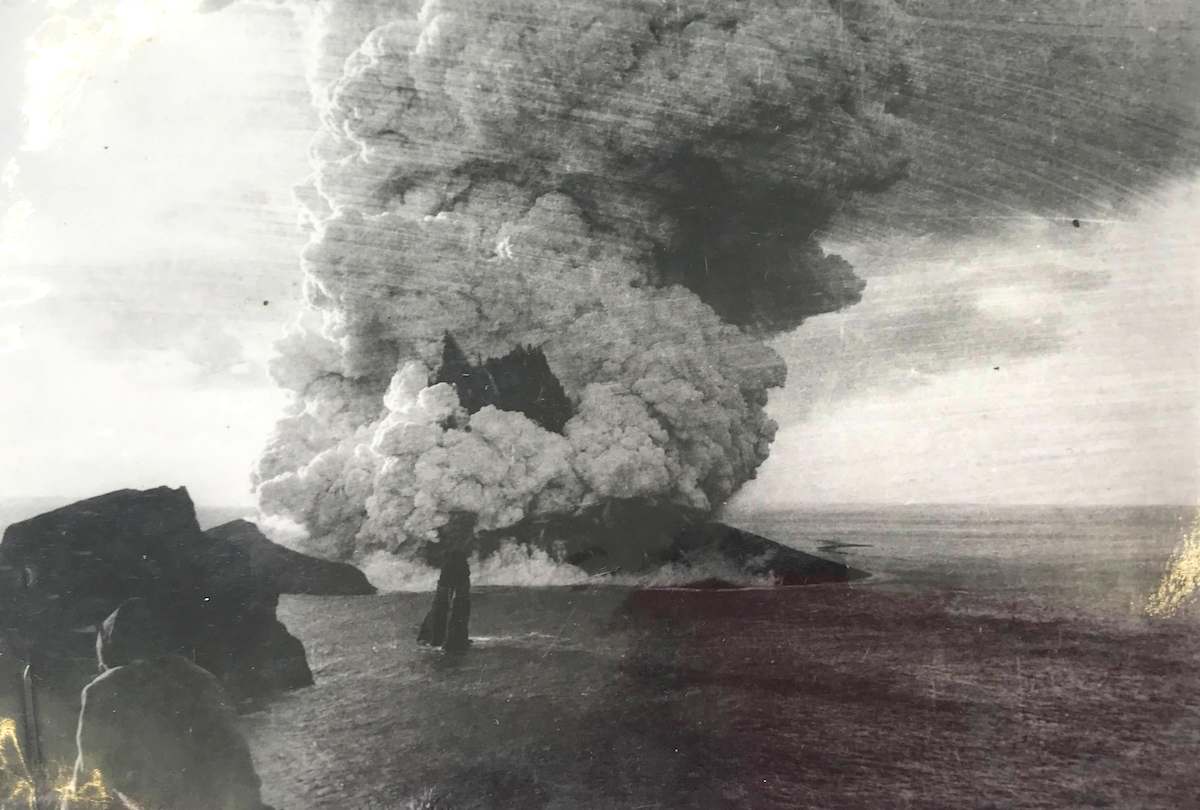
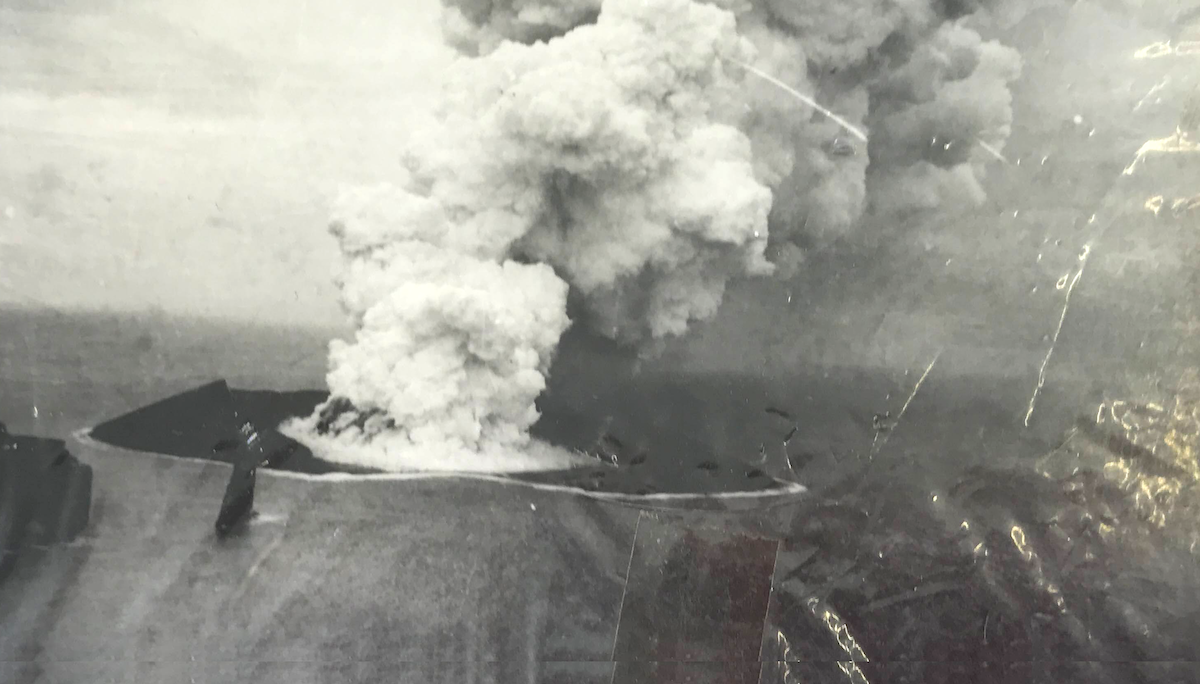
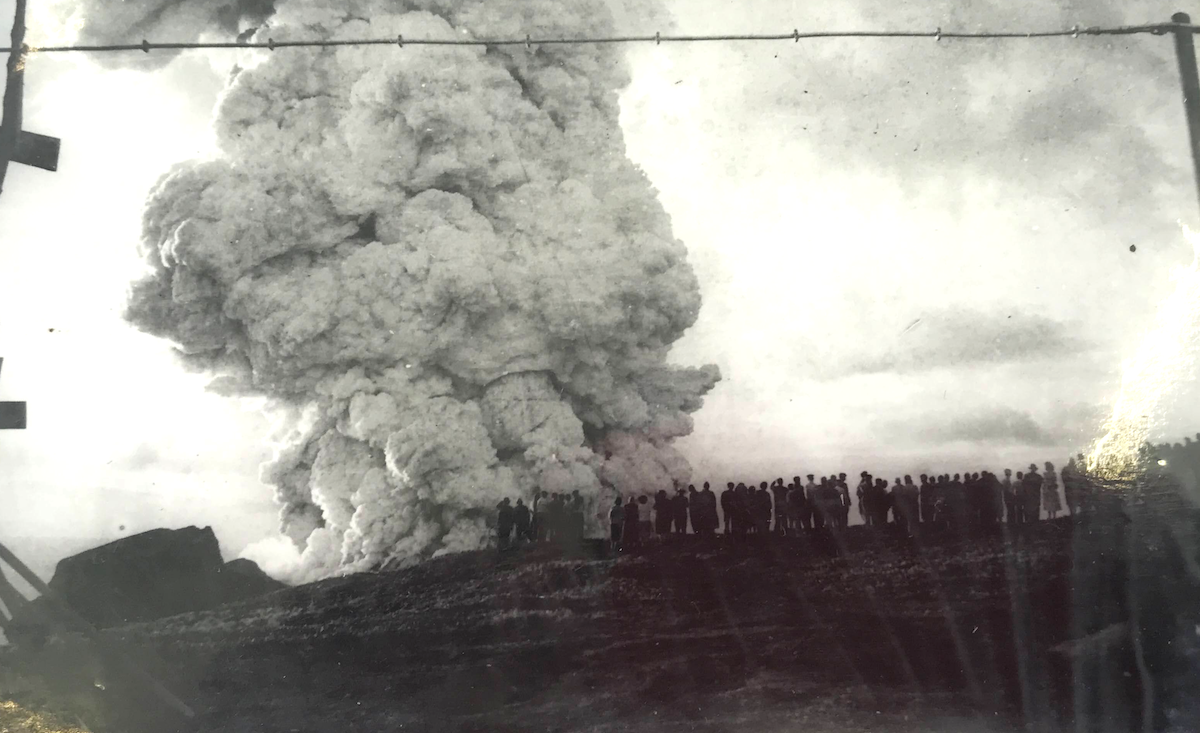
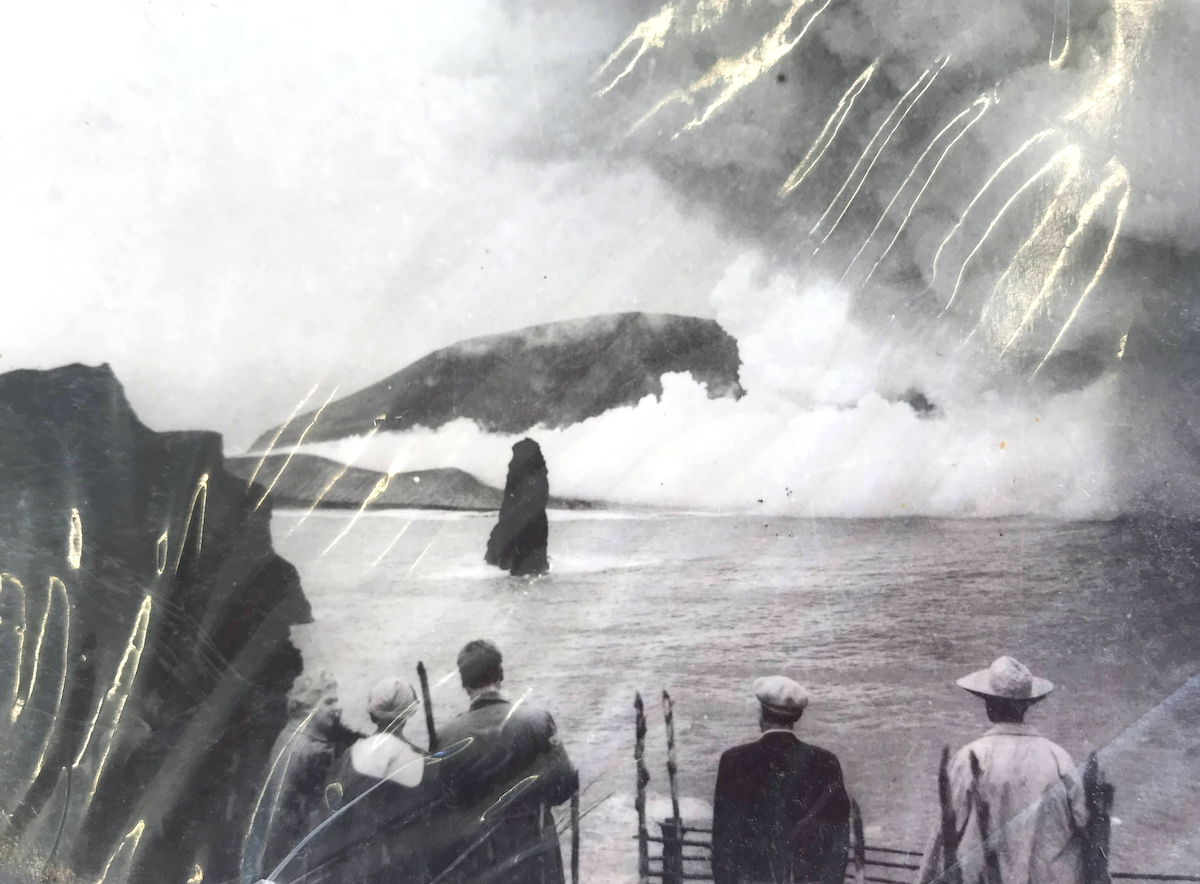
If you want to stay overnight, the Casas do Capelo (from 70€/night) are seven traditional houses recovered with all the comforts and ocean views that are found throughout this municipality.
Caldeira de Faial (Caldeira do Cabeço Gordo)
At 1043 meters above sea level, the Caldeira do Cabeço Gordo, better known as Caldeira do Faial, boasts the highest point of the island and is one of the most beautiful and interesting spots.
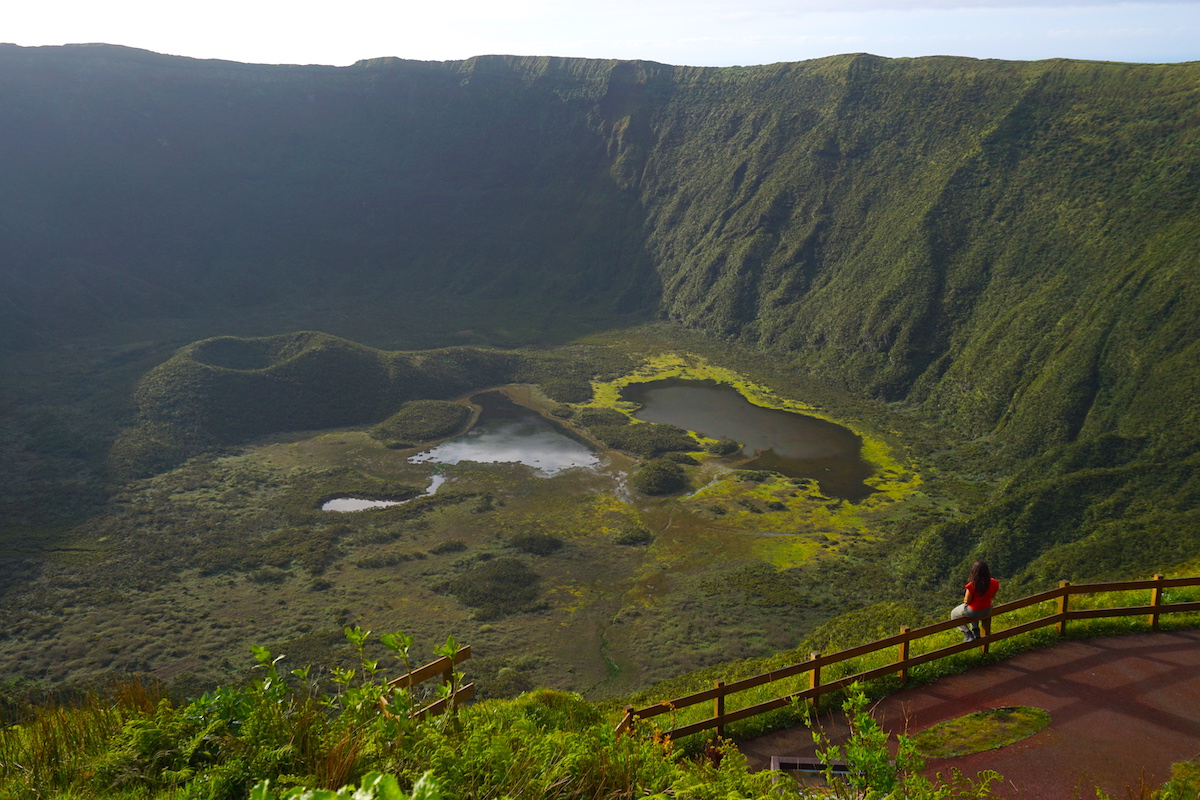
On clear days you will be able to greet from here almost all the neighboring islands of the central group: Pico and its magnetic mountain, São Jorge and even Graciosa. The caldera is 2 kilometers in diameter, 6.8 kilometers in perimeter and 400 meters deep and it is highly recommended to take the trail around it to enjoy the magnificent scenery. In a circular trail of 8 kilometers that lasts approximately 2h30, always on the edge of the Caldera. This trail that borders the Caldeira de Faial can be done on your own, whenever you want and the day you feel like it .
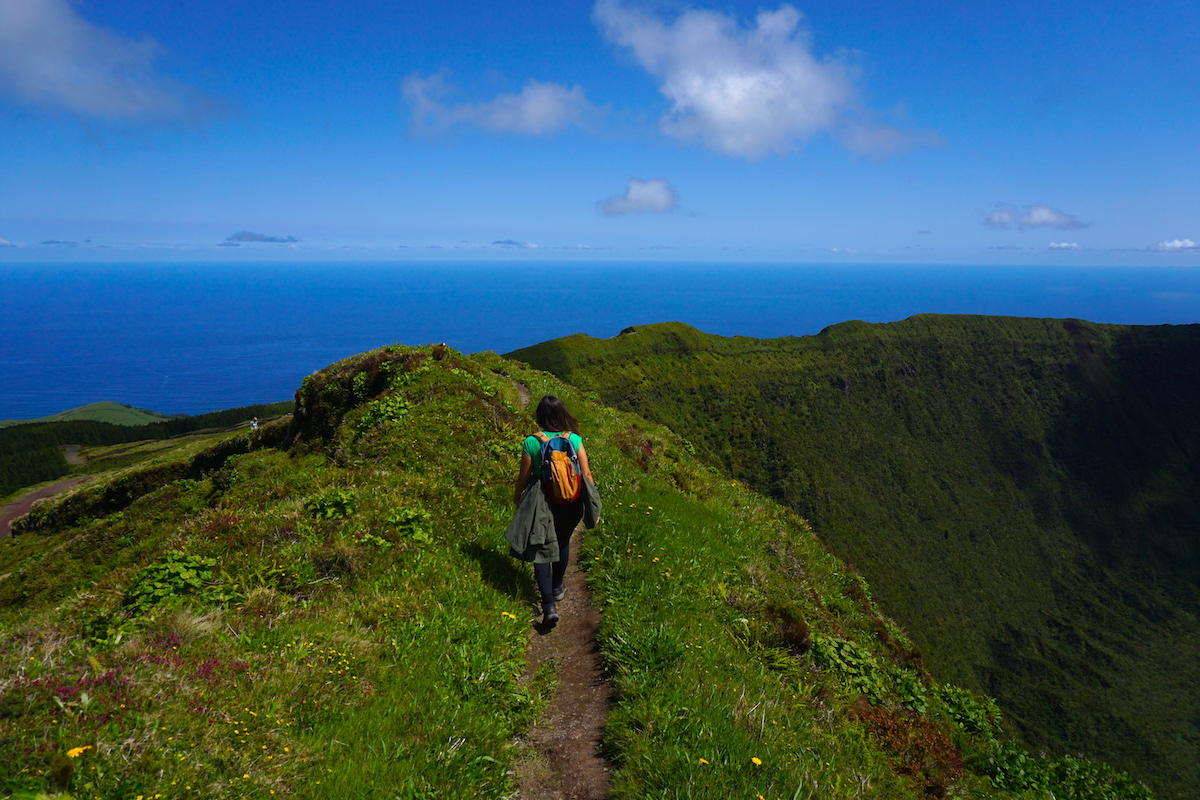
Randomtrip Scale of Difficulty: Easy. Circular trail of 8 km that we did in approximately 2:30h with stops for photos and contemplation. More info about the trail in the section The Best Hiking Routes in Faial.
The interior of the Caldera, a protected area, is like a Macaronesian forest that survived the last glacial period: it is home to more than 75% of the endemic species of the Azores and is an aquatic habitat at its base. Of course, you can only go down those 400 meters with a guide, reservation and prior authorization to pass the gate that is seen from the viewpoint.
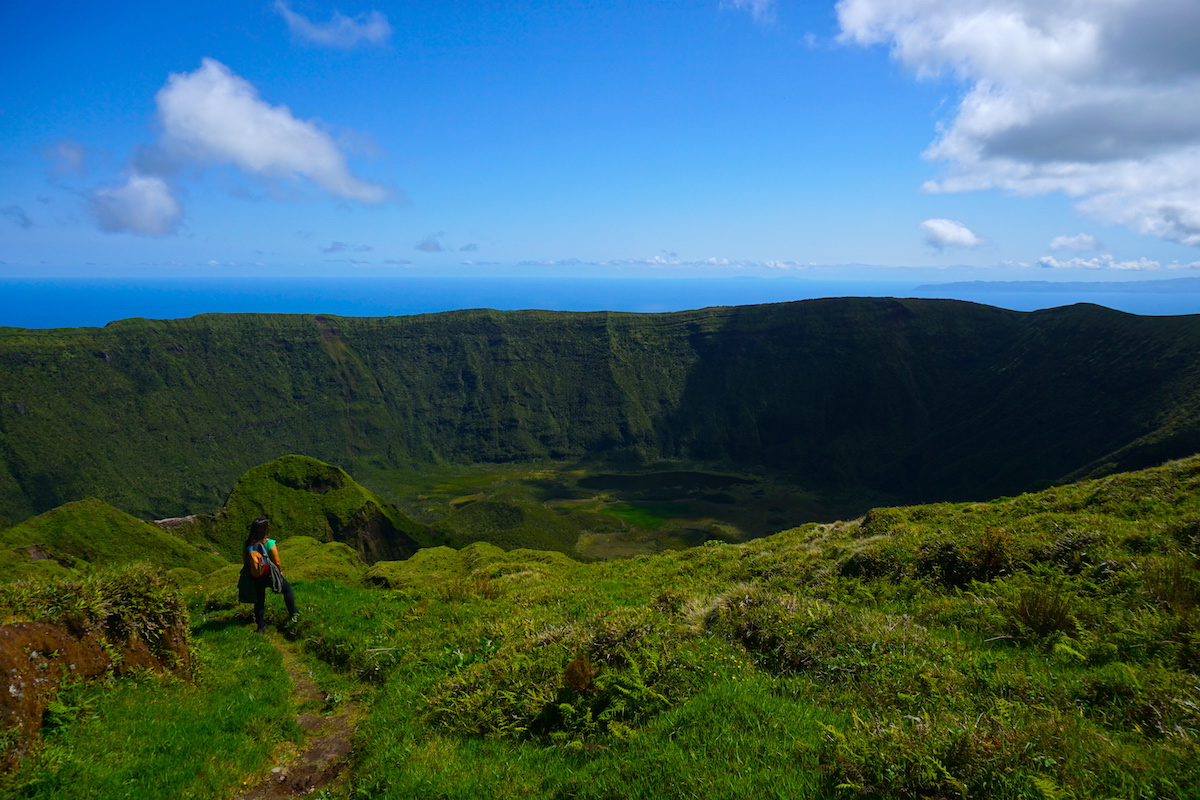
There you will enter a sanctuary of endemic biodiversity and primitive laurel forest, lose cellular coverage and contemplate half of the original vegetation of the island. To safeguard the natural heritage of the caldera, the authorities admit a maximum of 40 visitors per day divided into a maximum of 3 daily descents of 12 visitors each. If you want to live this experience, we were recommended to do it with the Endemic Azores certified guide (70€/person in groups of 4 or 5 people; 75€/person in groups of 2 or 3 people; and 115€ individual departure).
Randomtrip Scale of Difficulty: Difficult. Descending the 400 meters to the interior of the caldera (and climbing back up) requires good physical condition. It will take you between 5 and 6 hours. The trail is narrow and steep and you have to zigzag down the slope. In some areas you have to use the help of your hands to continue. There is also another danger: being considered a wet habitat, it is common to find mud and, therefore, to be able to slip (there is even a flooded area at the bottom of the Caldera).
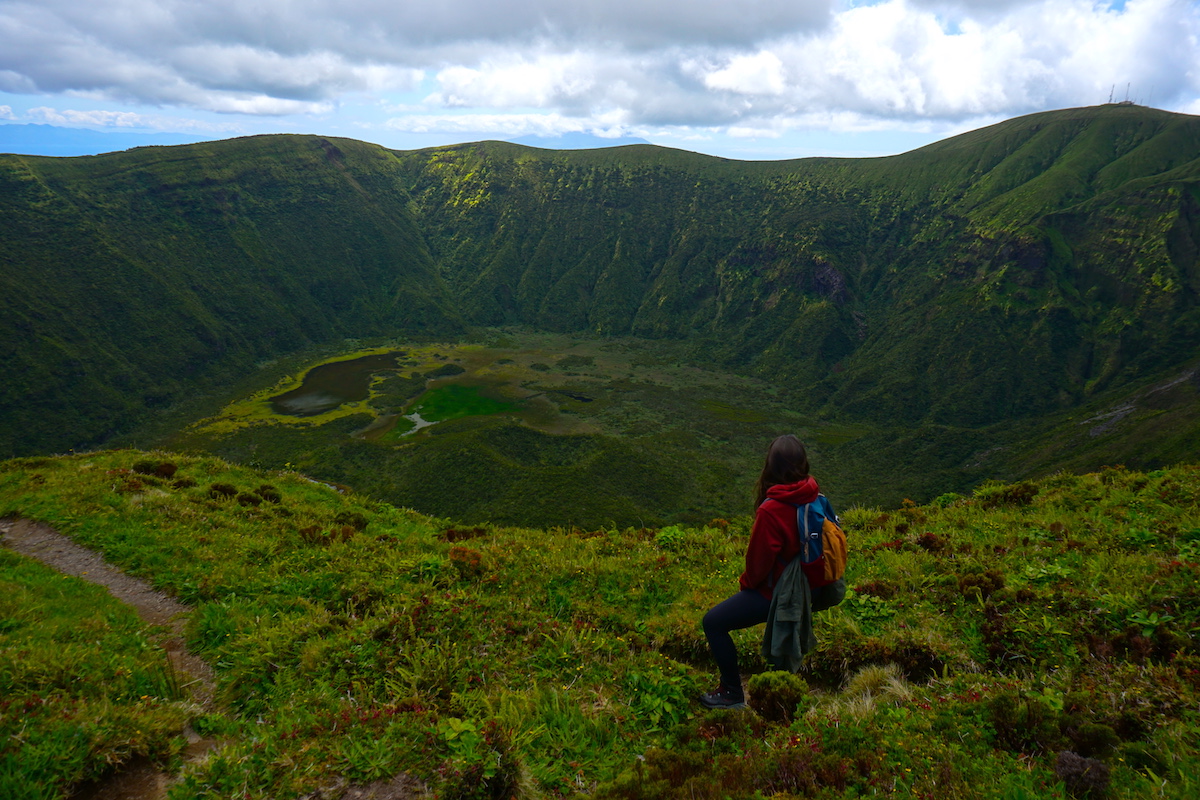
The Caldera is classified as a Natural Reserve in the Faial Natural Park which ensures the protection of these habitats, climates and species along with the historical and geological importance of the area.
Technically it is a collapsed caldera, the crater of the large volcano whose activity originated much of the island. However, it was another volcano that had a major impact on the Caldera. The eruptions of the Capelinhos volcano in 1957 caused cracks in the interior of the Caldera that led to the overflowing of the lagoon that existed there permanently, allowing water to drain away. Today, inside the Caldera there is a smaller lagoon whose volume of water varies according to rainfall and even disappears during dry periods.
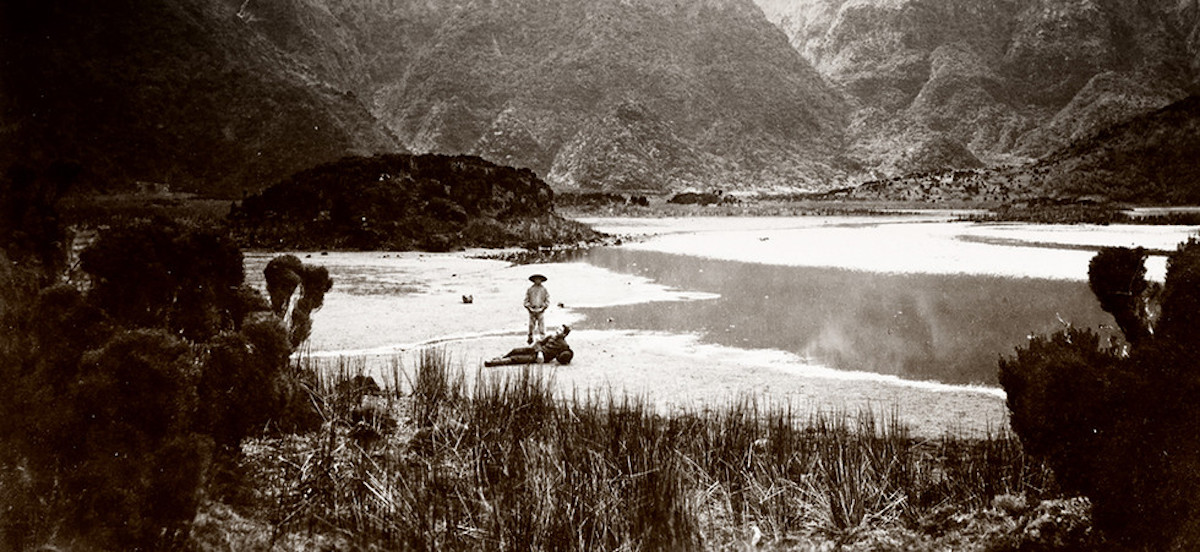
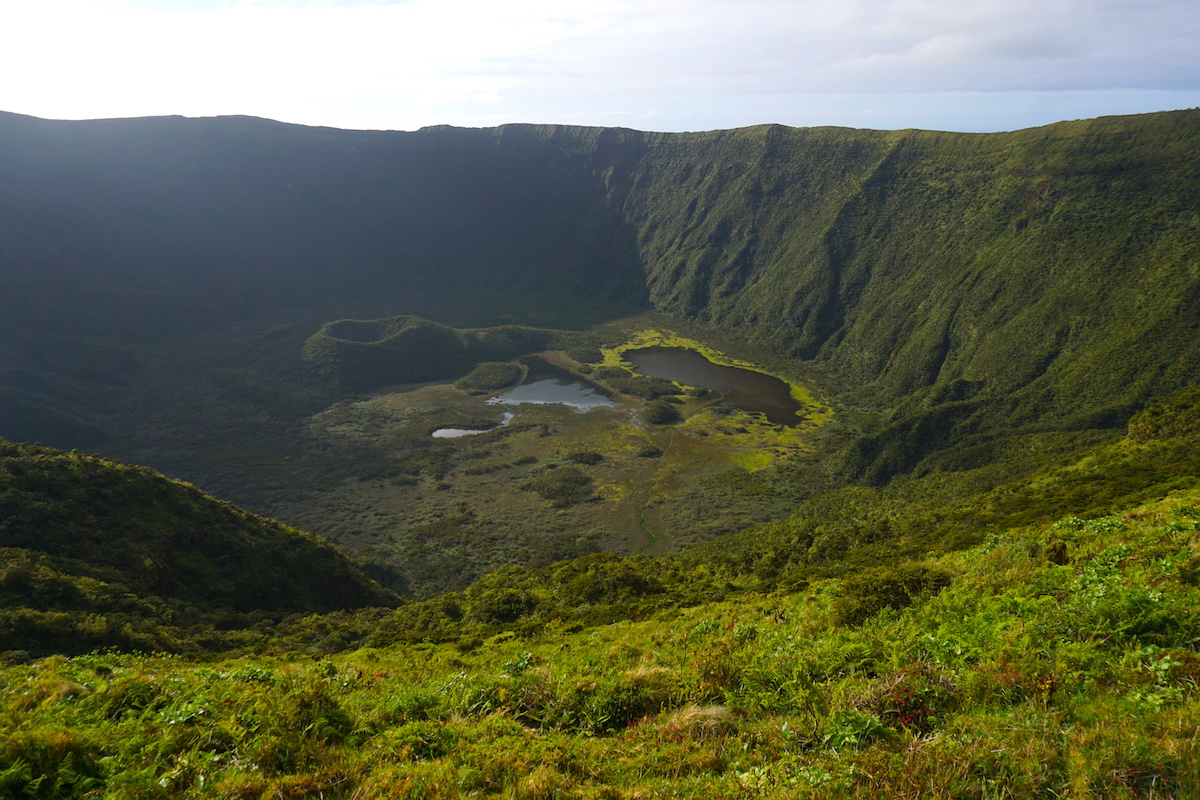
On the left, photo of the Caldeira de Faial before the eruption of Capelinhos (Photo by ParquesNaturais). On the right, the Caldeira de Faial today (Photo by Randomtrip. All rights reserved).
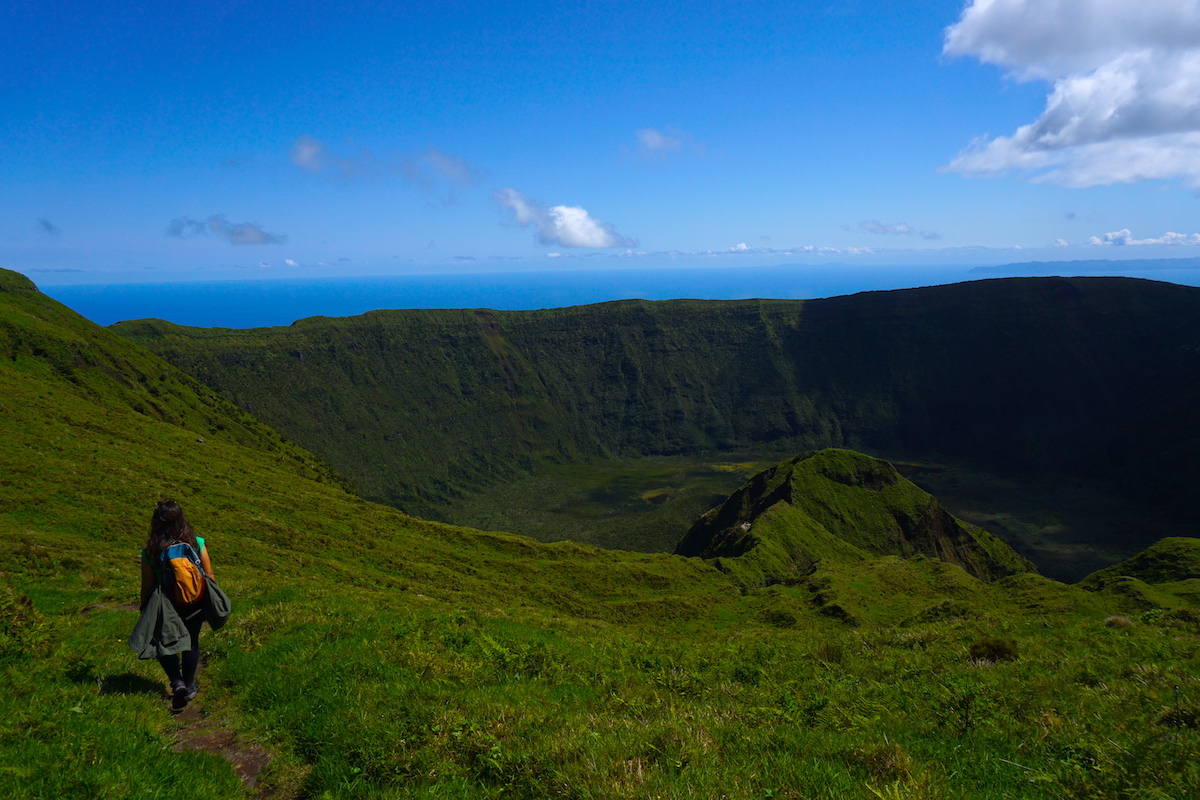
RandomTIP: If you want to get the best views of the Faial Caldera with Pico in the background, one of the postcards of the island, we give you a tip. At Randomtrip we started the trail along the Caldera to the left, but if you see that the day is clear when you arrive it is best to start the trail on the right to get views of Pico and the caldera as soon as possible before the clouds close in (the weather is very unstable). Also, be aware that instead of parking and starting the trail at the viewpoint, you can go by car to the opposite side to get this view without doing the trail but beware, the road is worse (although feasible with a normal car) and in this case you would already have the postcard “without effort” but also, in our opinion, missing the best of the adventure.
In any case, both to visit the Caldera and in the whole planning of the days you spend in the Azores, it is always advisable to check the weather before starting the visit because the view changes radically depending on the sunlight. In addition, it can also happen that, when you reach the top, a rebellious mist appears that prevents you from contemplating the other islands. But that’s the Azores, as beautiful as they are changeable and unpredictable.
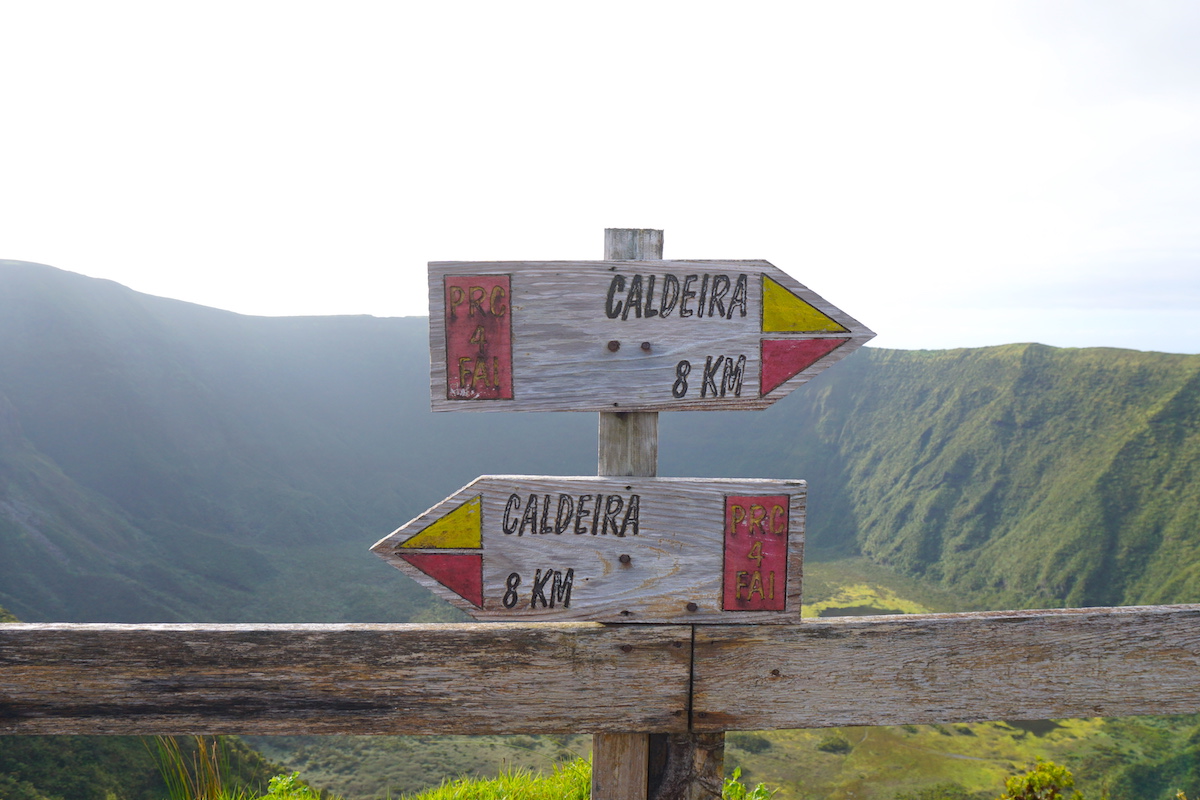
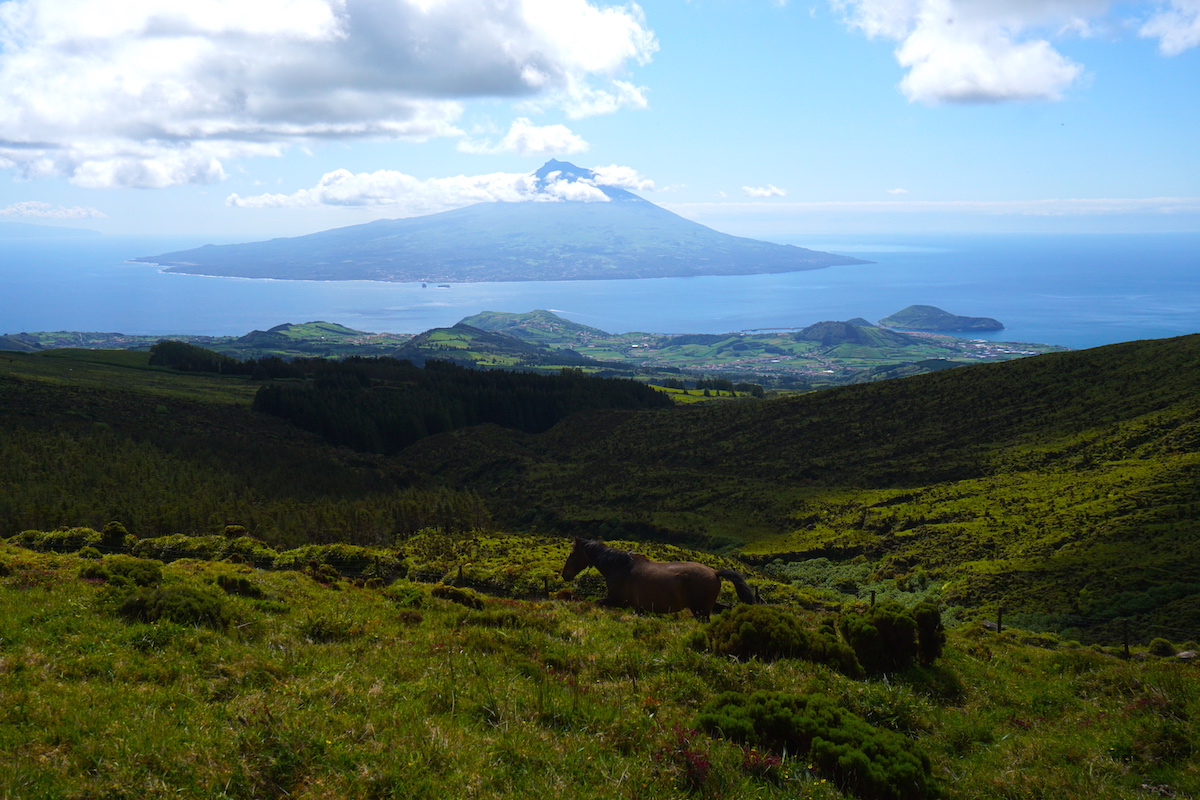
Levada Trail: walking through the laurel forest
One of the most beautiful trails on the island, in the Levada trail it seems that we enter the territory of fairies and enchanted elves. It is a 7.6 km linear trail, easy, in which you will walk through one of the areas with more biodiversity of fauna and flora, typical of the ancestral forest of laurel forest.
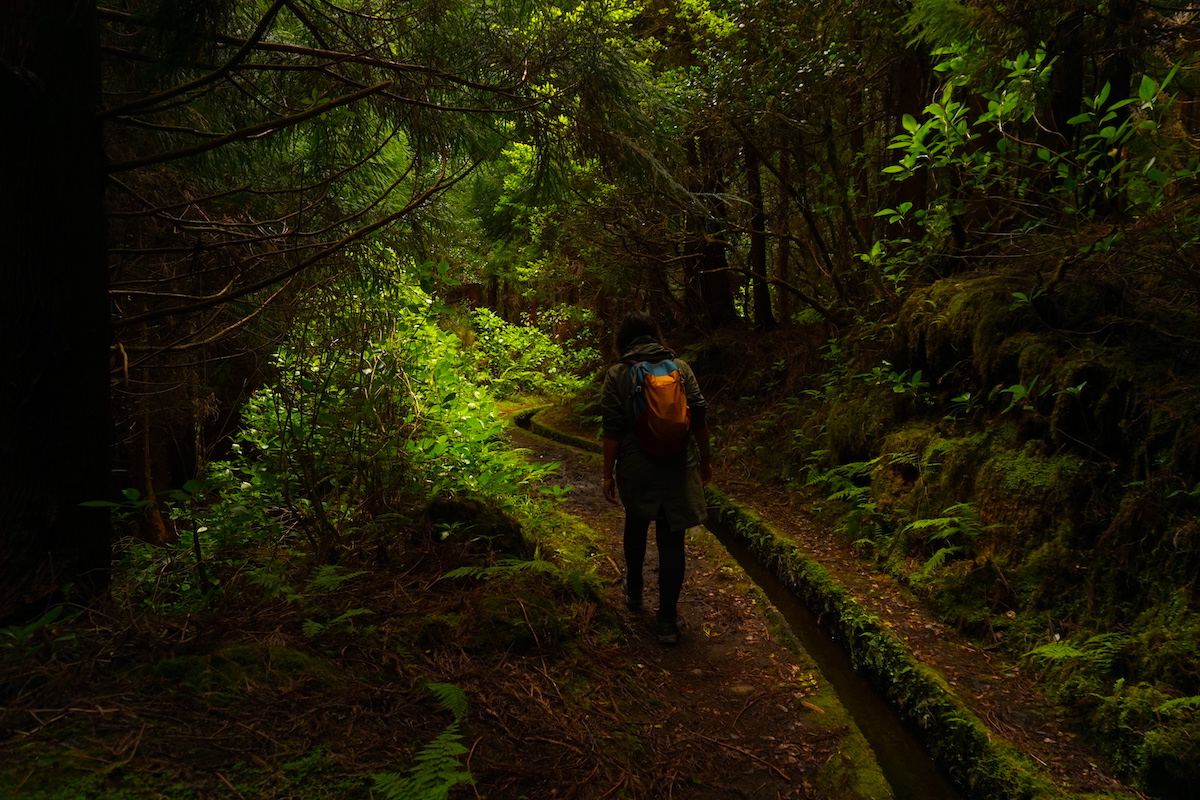
If you make a small detour of 400 meters, you can also pass through the Caldeirão do Cabeço dos Trinta, which is reached by going through a long lava tunnel (use your cell phone flashlight) full of vegetation.
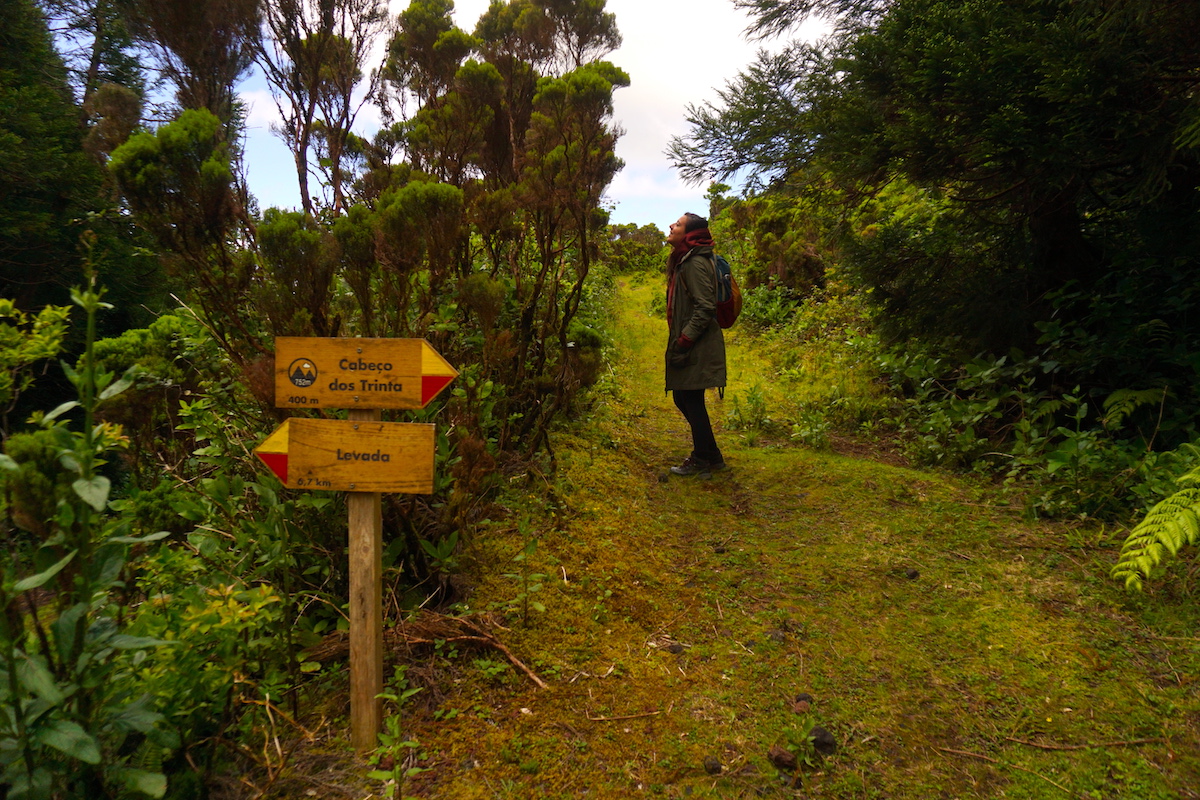
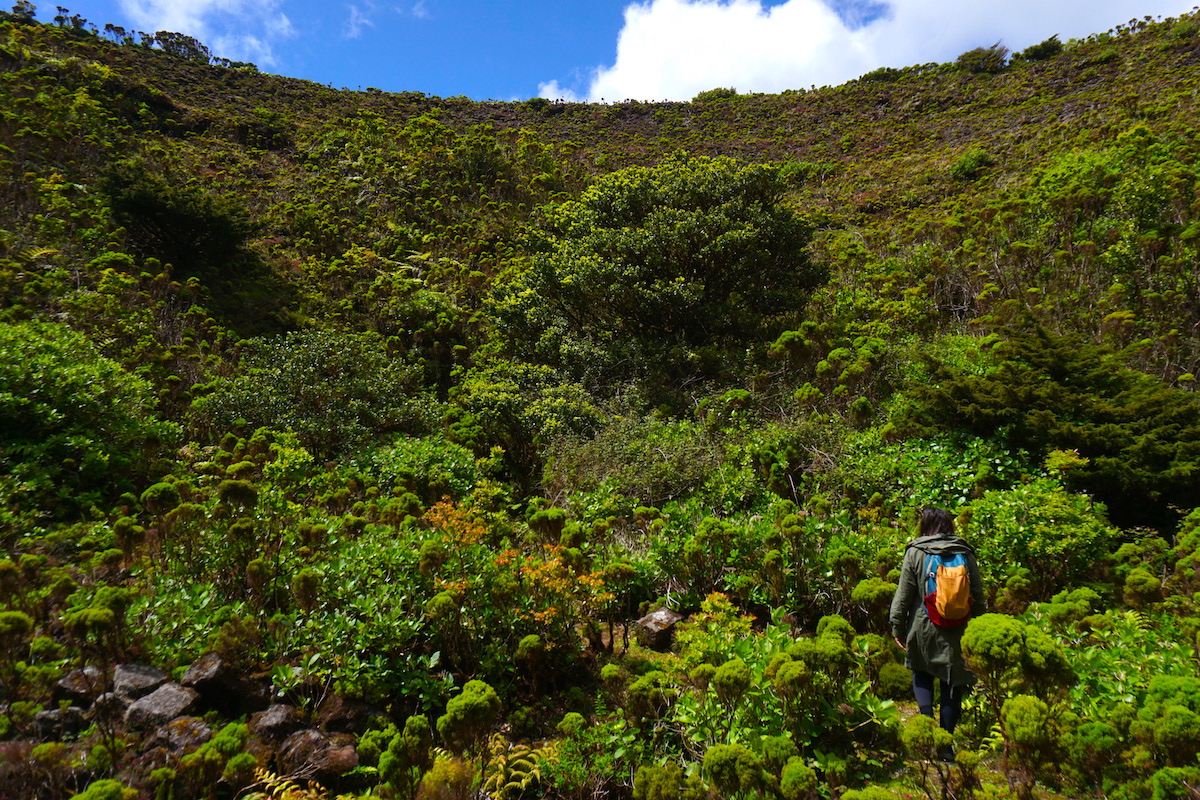
And why is it called the Levada Trail? If you have already been to Madeira you surely know that a levada is a channel built to transport water from one point of the island (where it rains more) to another where more water is needed and where, in addition, most of the population usually lives. This levada was specifically built in 1964 with the aim of channeling water to a hydroelectric plant but it stopped being used a few years ago and has recently been enabled as a trail.
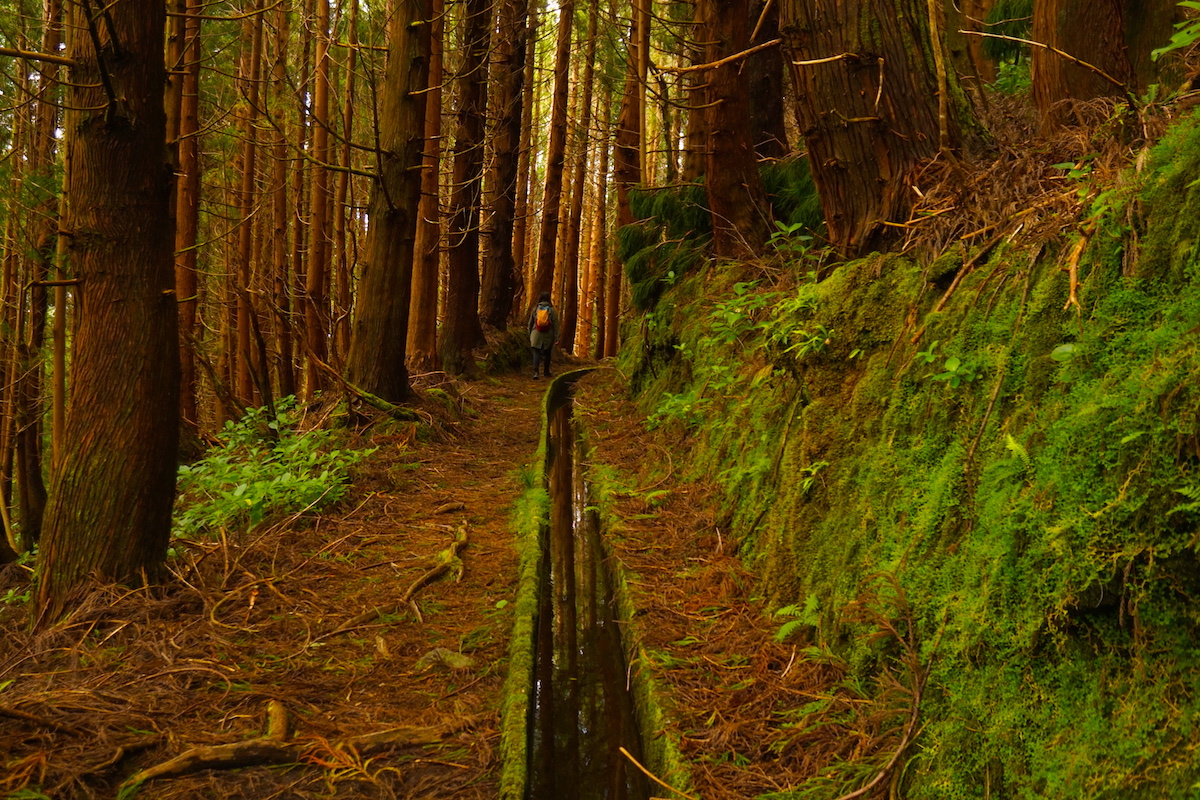
Randomtrip Scale of Difficulty: Easy. A linear trail of 7.6 km, 2:30h one way and another 2:30h return. Note that the road to get there is not complete in Google Maps but it is in Maps.me. We leave you the exact point where to park and start the route. Taking into account that it is linear, the ideal would be to hire a cab service to avoid making the way back, which is the same, to where you have left the car parked, or do only part of the trail and return. More info about the trail here.
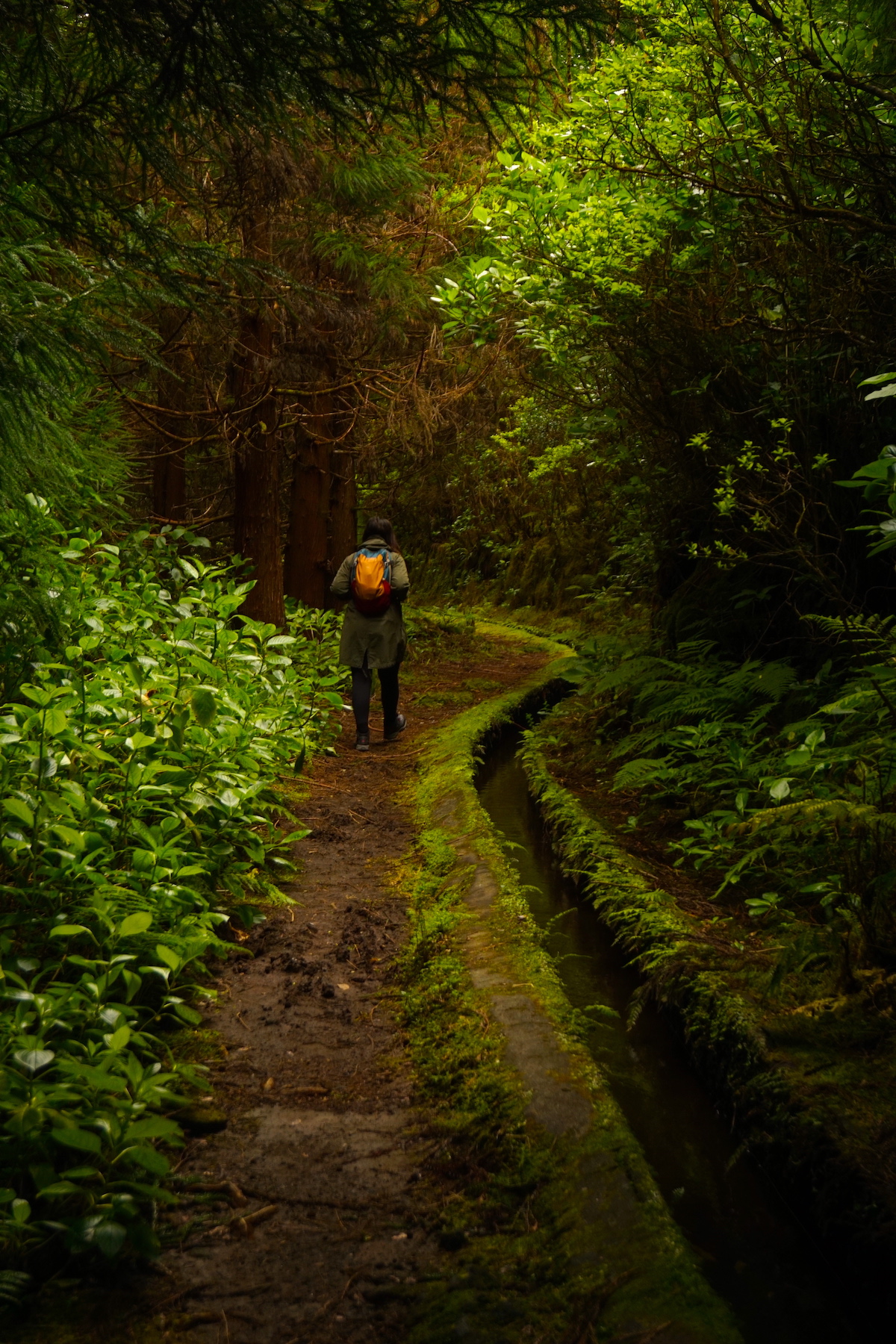
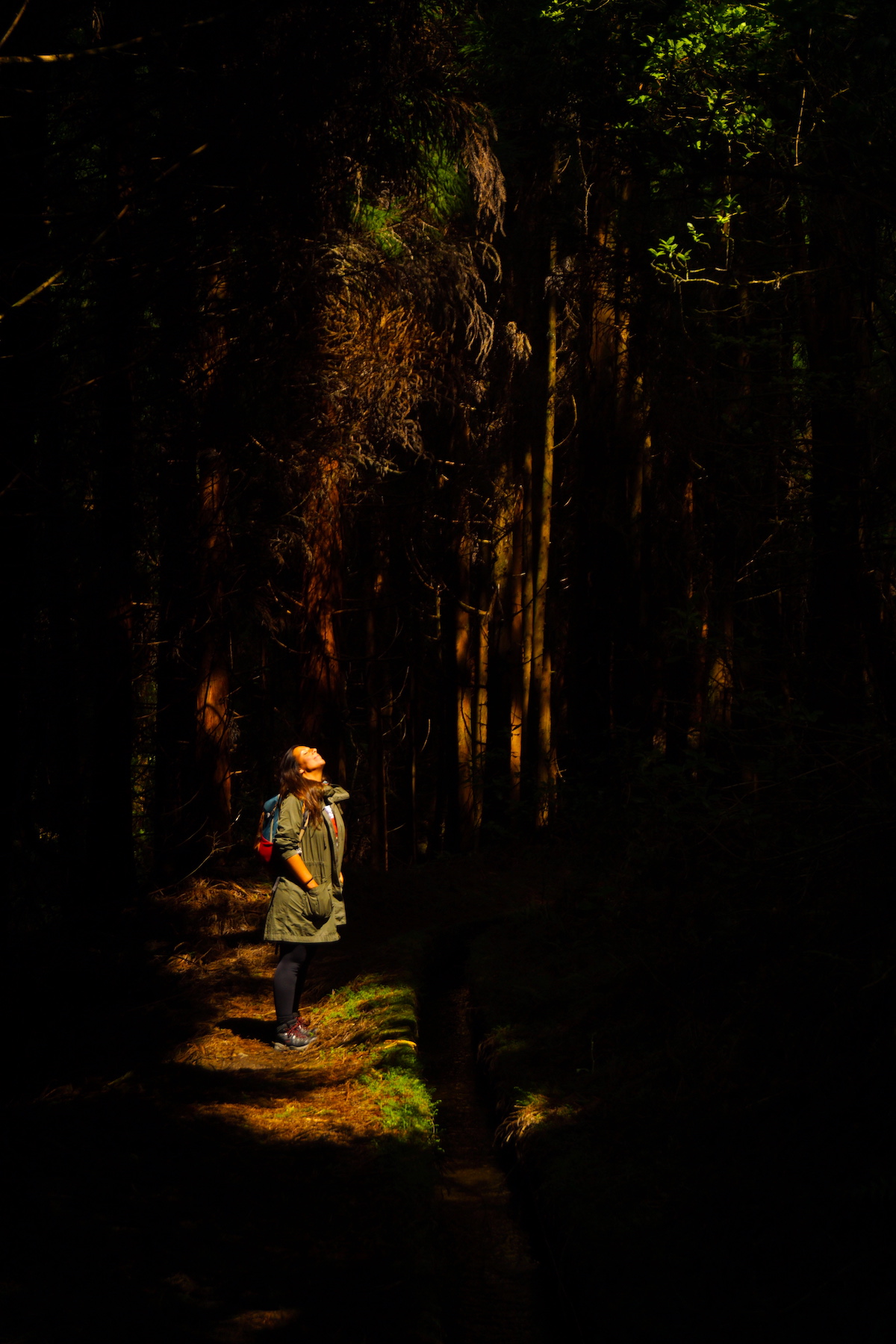
If you like walking, this route intersects with a longer route, the Trail of the 10 volcanoes (20 km), which passes through the Caldera, along the route of the Levadas and ends at the volcano of Capelinhos. It is the most complete route of the island but also the most demanding. More info in the section The Best Hiking Routes in Faial.
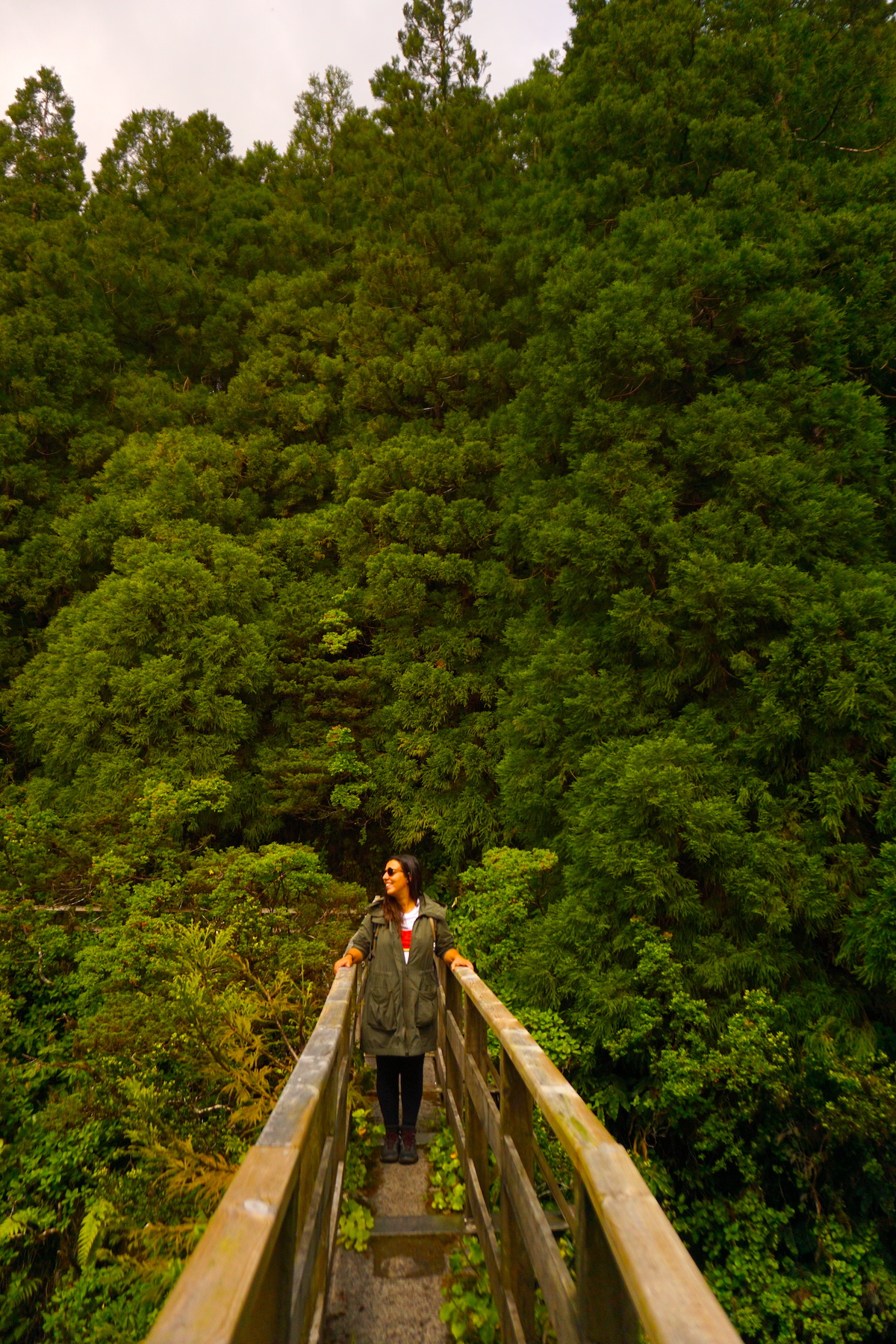
Horta: the main city, international meeting point
“Gosto da Horta como de nêsperas.”[I like Horta as I like medlars].
Vitorino Nemésio in his book “Corsário das Ilhas” ( 1946), a bible for those who travel and/or live in the Azores.
Horta, the main city of Faial, being an important meeting point for sailboats crossing the Atlantic, hosting the fourth most visited oceanic marina in the world, is one of the most cosmopolitan cities of the archipelago (if not the most) and a city that has always been very open to receive seafarers.
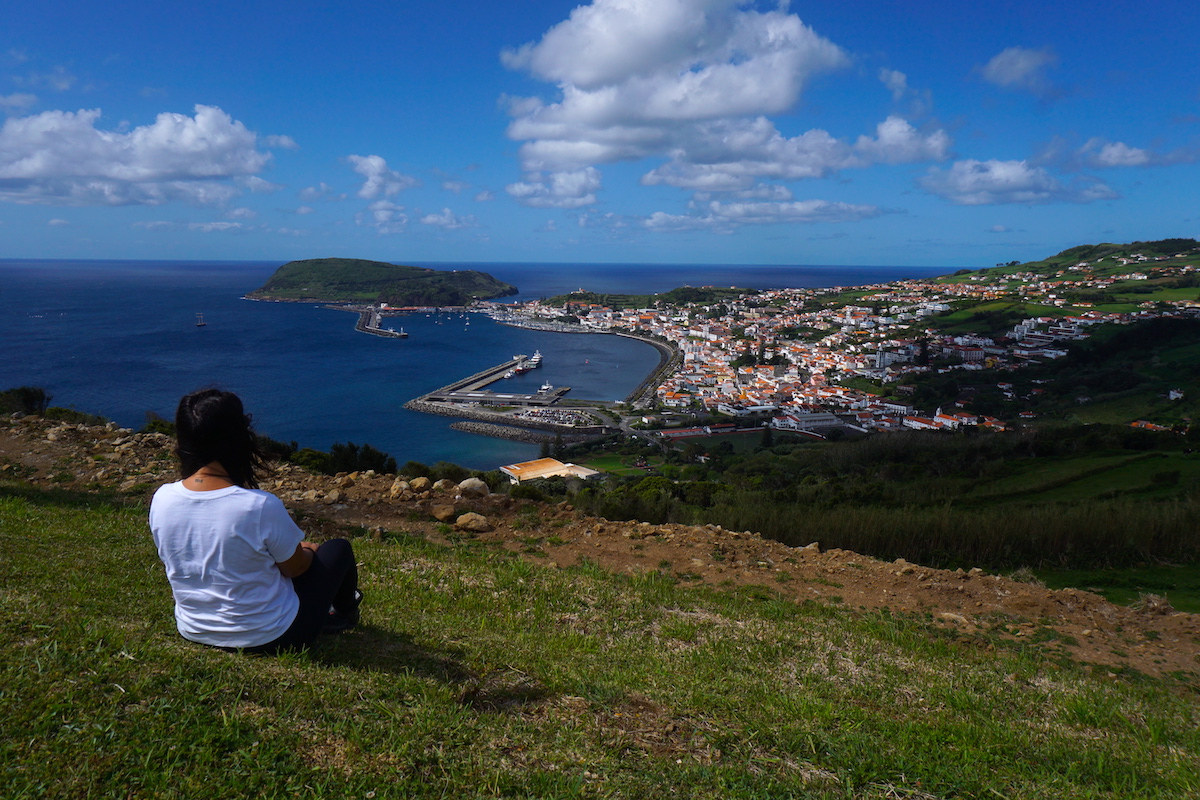
Strategically located in the middle of the ocean, Faial is an island of seafaring and adventurous people and the Horta Marina, one of the most visited in the world, is a reflection of this. Inaugurated in 1986, the first marina of all the Azores has capacity for 300 boats and is an open-air gallery in constant evolution. It is worth a visit to discover the painted symbols or logos that dress it, made by the crews of ships from various parts of the world who, according to tradition and loaded with superstition, ask to arrive safe and sound at their destinations.
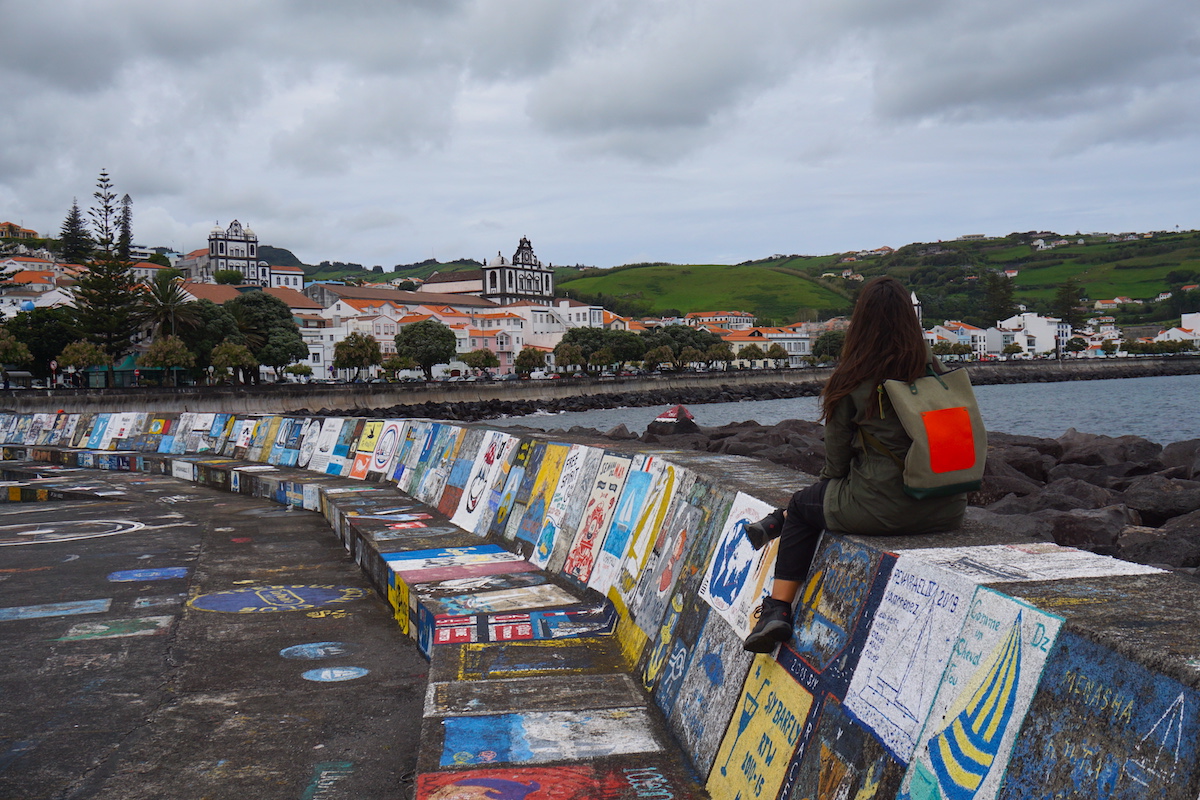
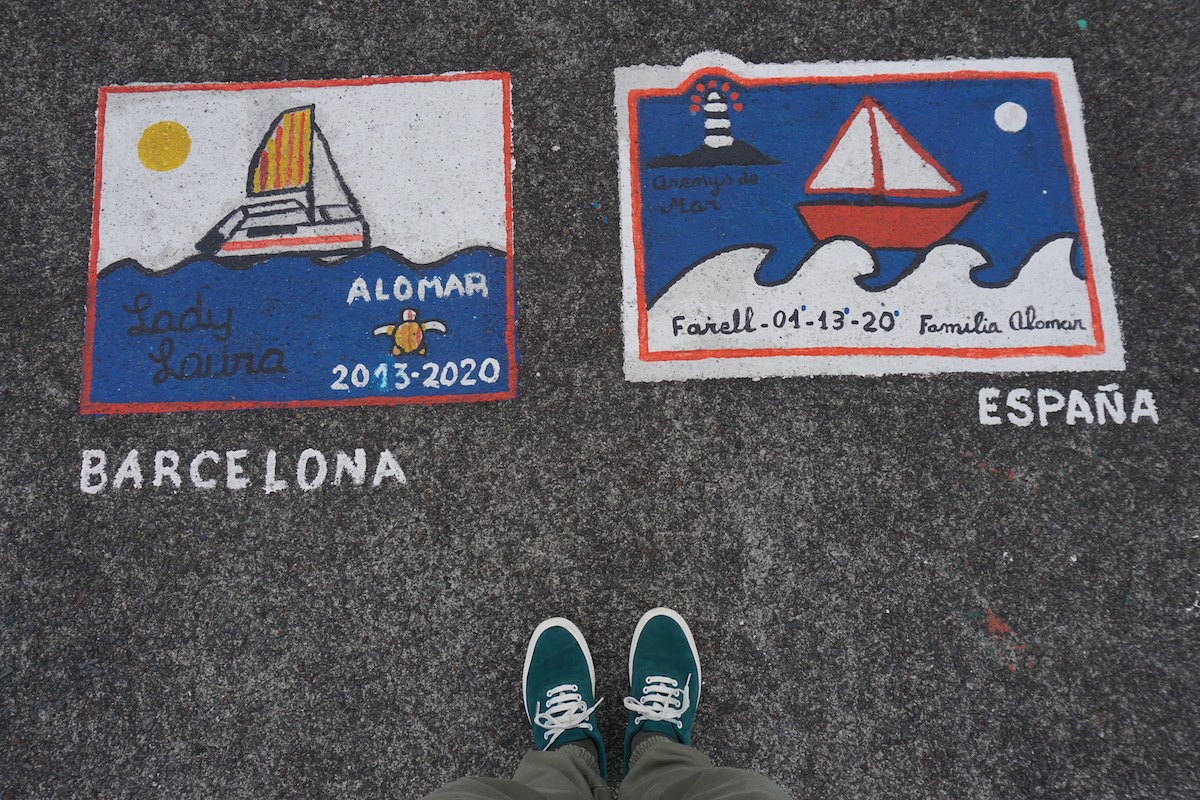
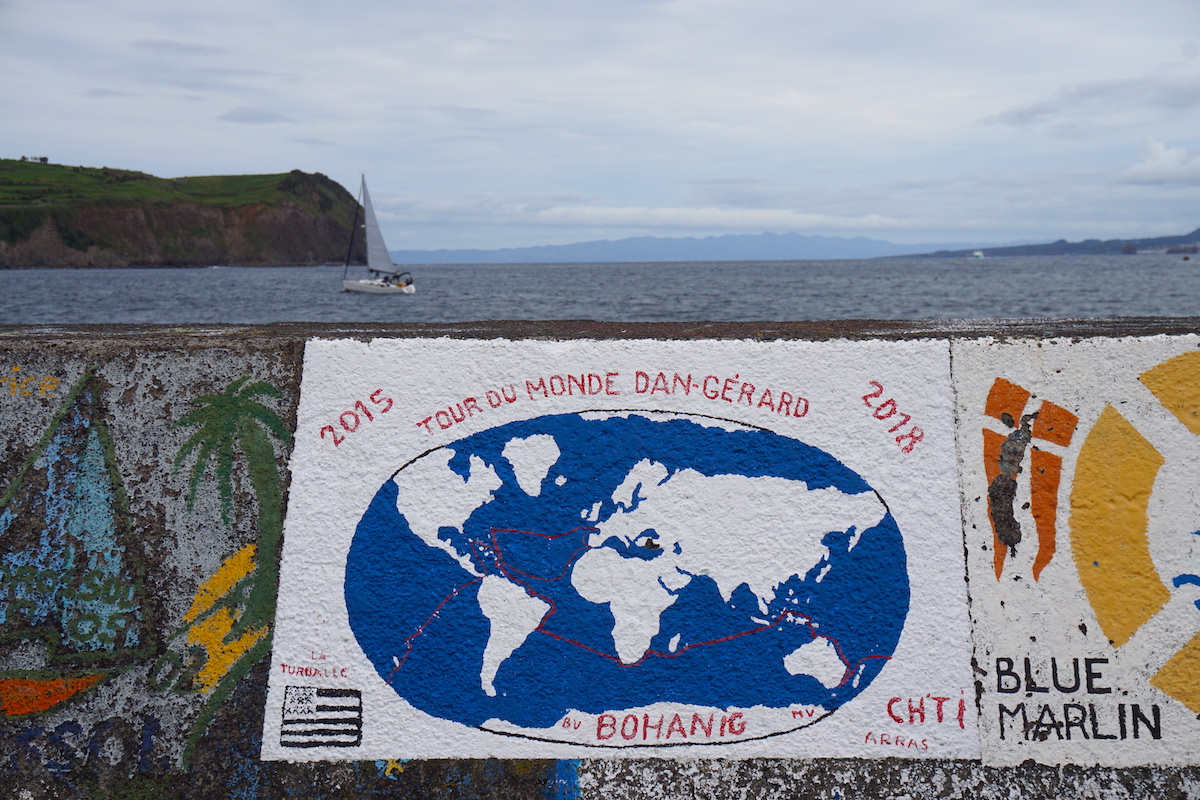
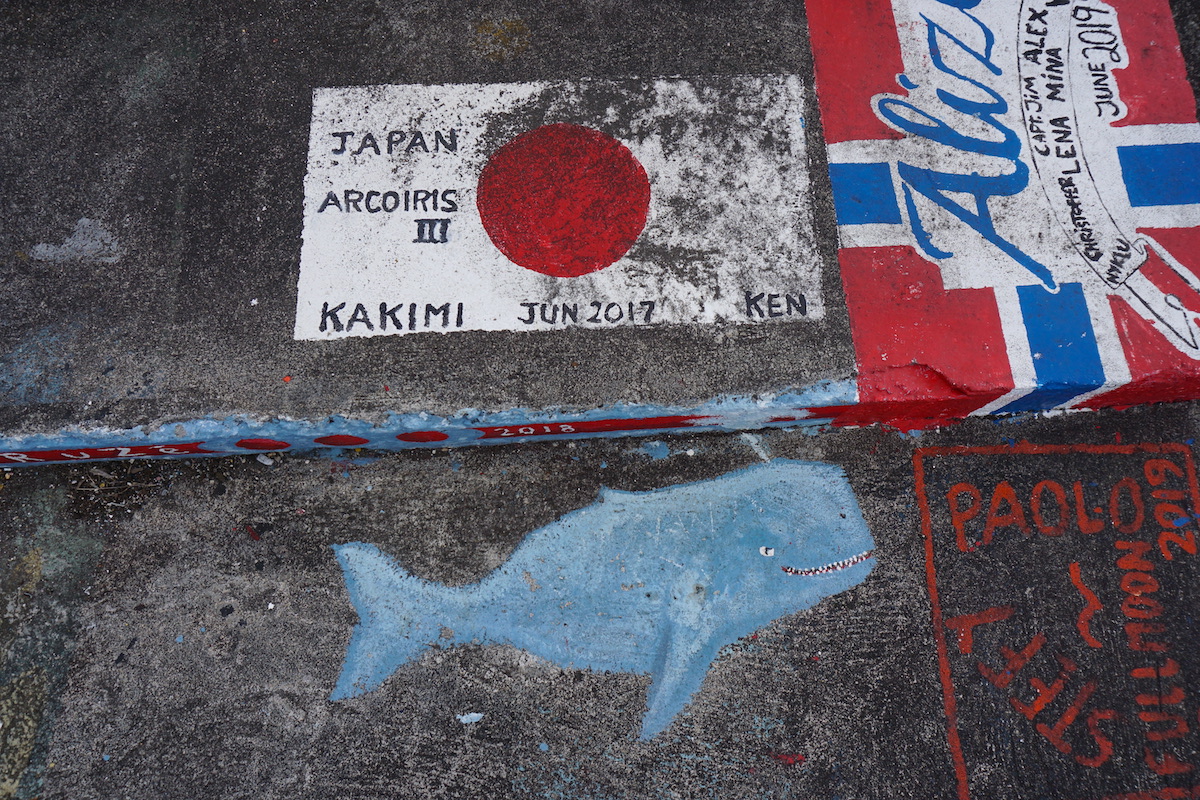
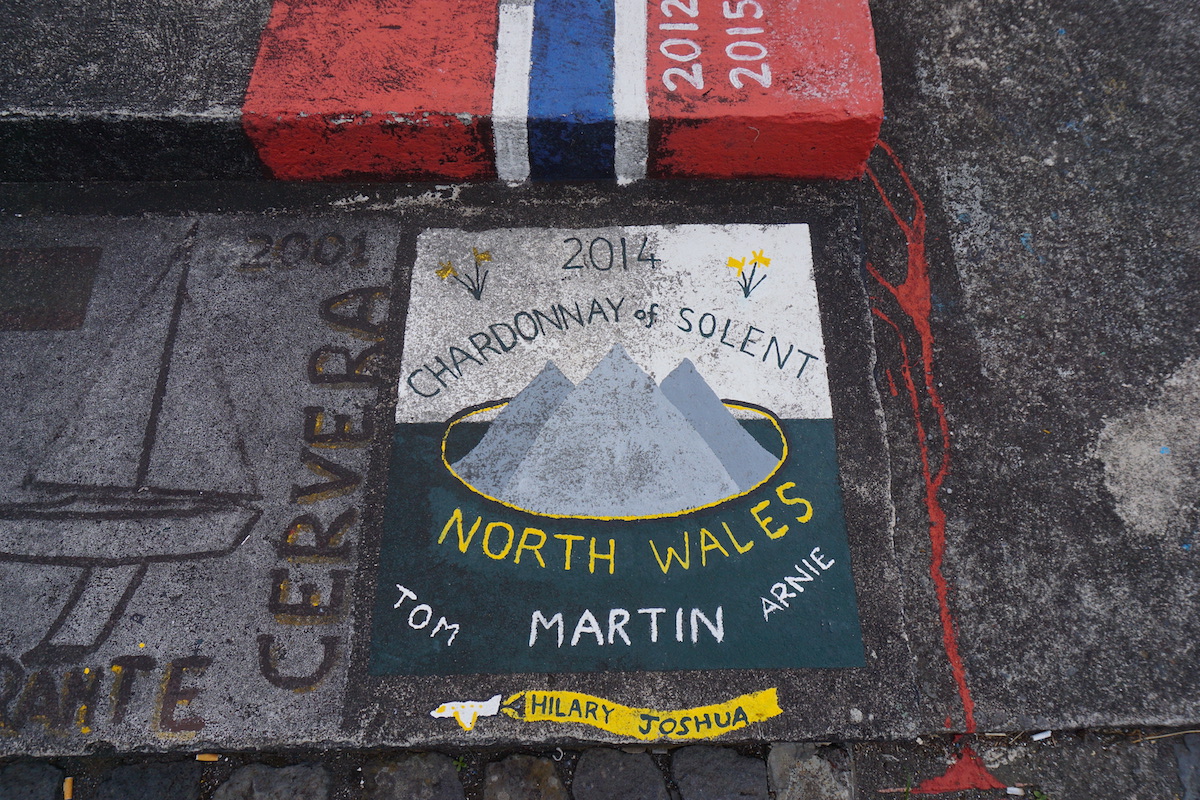
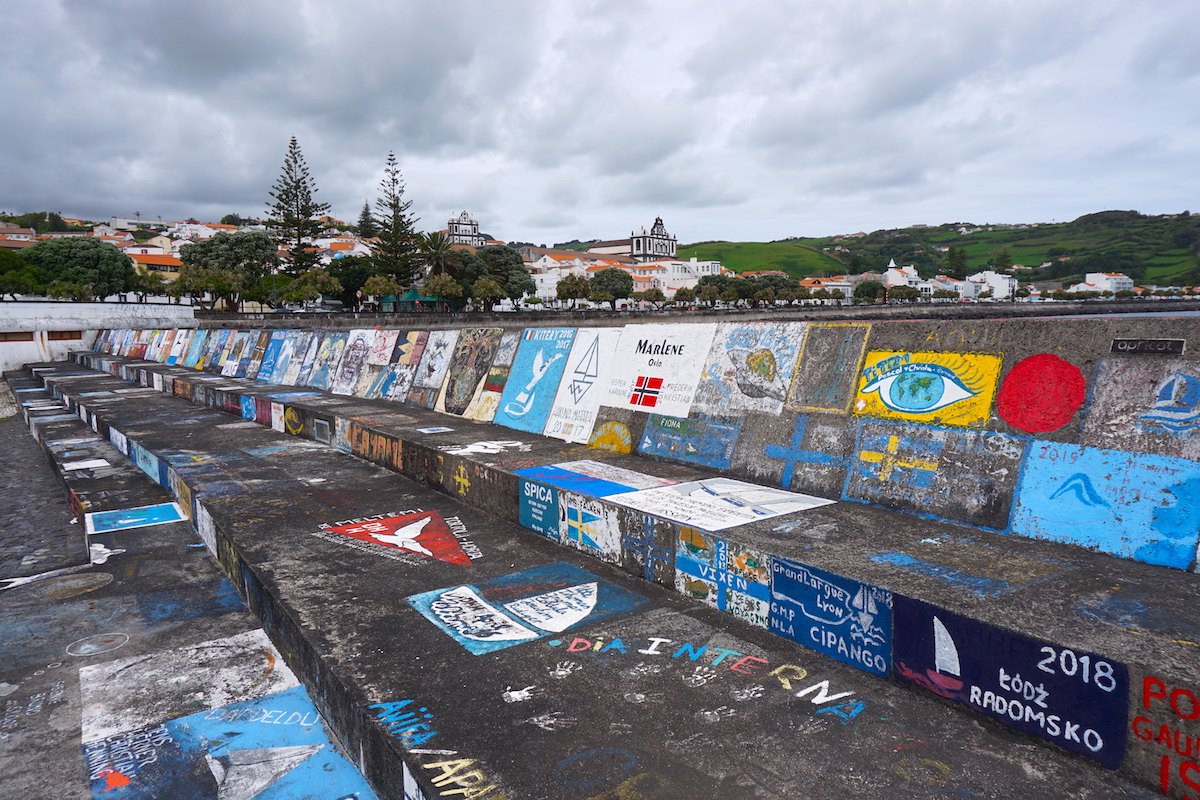
Whale and dolphin watching tours depart from the Horta marina. Book yours here
By the way, next to the Horta marina is the Forte de Santa Cruz da Horta, a fort built between the 15th and 17th centuries and the main fortification of the island. It became a national monument in 1947 and is currently a luxury hotel of the Pestana Pousadas de Portugal group. If you want to sleep in a national monument, book your stay at the Pousada Forte da Horta (from 155€/night).
Companies such as Pan Am used Horta Bay to moor seaplanes on the first transatlantic voyages and, in 1893, the internet of those companies was installed in Faial with 15 submarine telegraph cable companies, from several countries, operating on the island. An international history that goes back a long way and continues, to this day, to captivate the most traveled people.
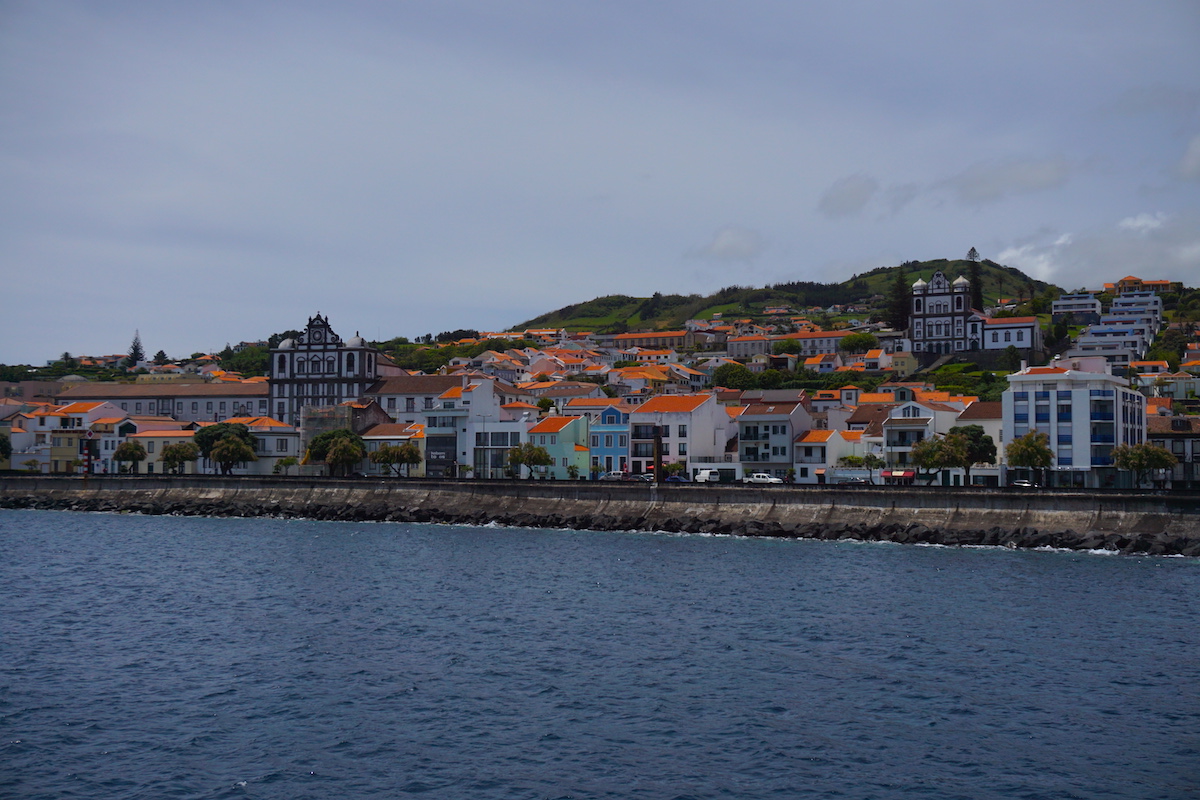
This international charisma of Horta has marked it historically and sociologically: those who have known it for a long time say that it has always been more open than its “bigger” neighbors such as São Miguel or Terceira, and that even here women joined the labor market earlier than on the “mainland” (as mainland Portugal is called in the Azores).
Of course, open to the people of the sea but with respect. Something interesting that we have noticed is that most of the houses and buildings on the promenade of Horta, turn their backs to the sea. Why? Although today it is precisely the sea views and the proximity to the sea that make the buildings more valuable, in the past the sea was synonymous with pirates and storms, from which one had to protect oneself.
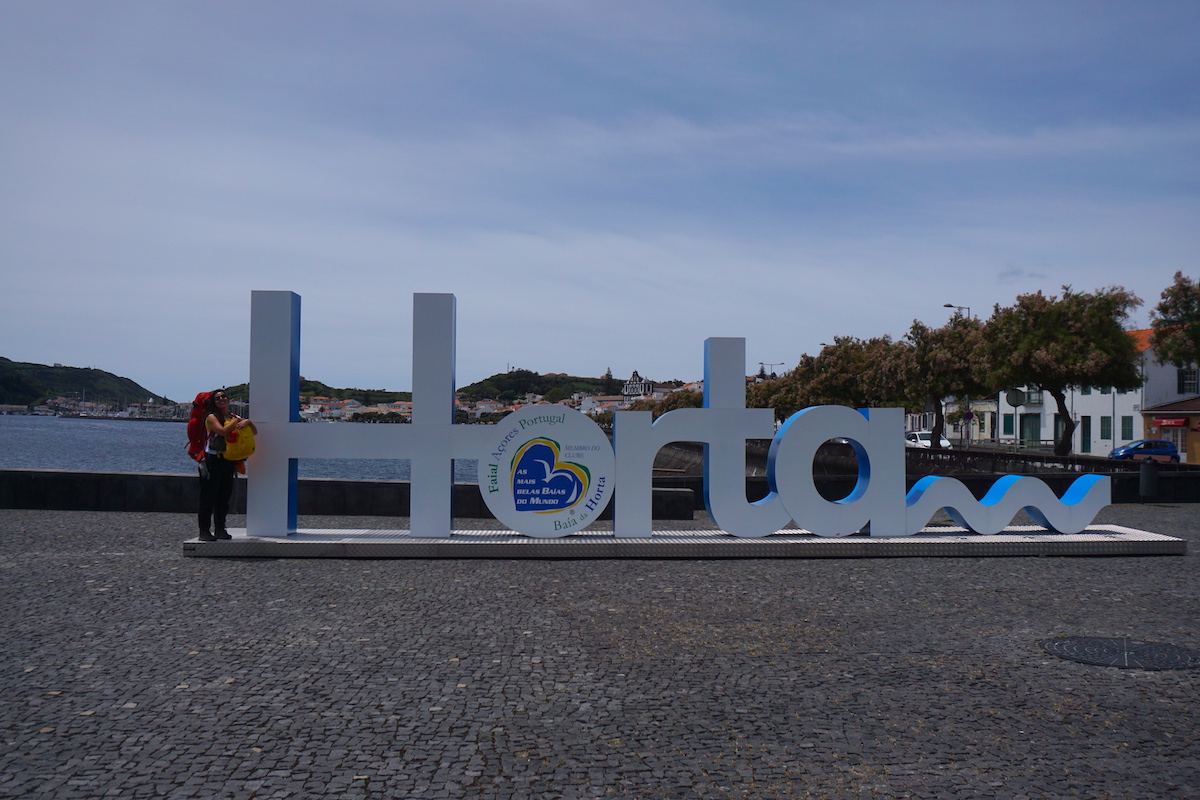
A curiosity: Randomtripper, if you associate (as in our case, with some prejudice) the nautical world to posh people, you should know that the president of the Clube Naval de Horta for 25 years (1996-2021), Decq Mota, is a historical leader of the PCP (Portuguese Communist Party).
Horta got us hooked by the beauty of its buildings and cobblestone streets overlooking the magnetic Pico Mountain and, above all, by its atmosphere (you have to walk at least once from Peter to Porto Pim), inaugurating an exception in our belief that one should not invest much time in the Azorean cities (an exception that was later joined by Angra do Heroísmo and Ponta Delgada).
Horta is also an ideal base on the island because of the wide range of accommodation and restaurants and with any destination on the island less than 40 minutes by car. At Randomtrip we stayed at Monte da Guia (from 40€/night, in front of Porto Pim beach, overlooking Pico, 10 minutes walk from Peter’s) but the Casa da Baía (from 44€/night), for example, is in the center, right behind Peter’s. Also highly recommended is the Hotel do Canal ( from 68€/night): a few meters from Peter’s, this hotel was inspired by the maritime history and tradition of the island for its decoration, visible in the photographs and illustrations of sailboats, fishing boats or seaplanes. It has privileged views of the sea and the highest point of Portugal, the Pico mountain. We recommend more accommodations in Horta in our section Where to stay in Faial.
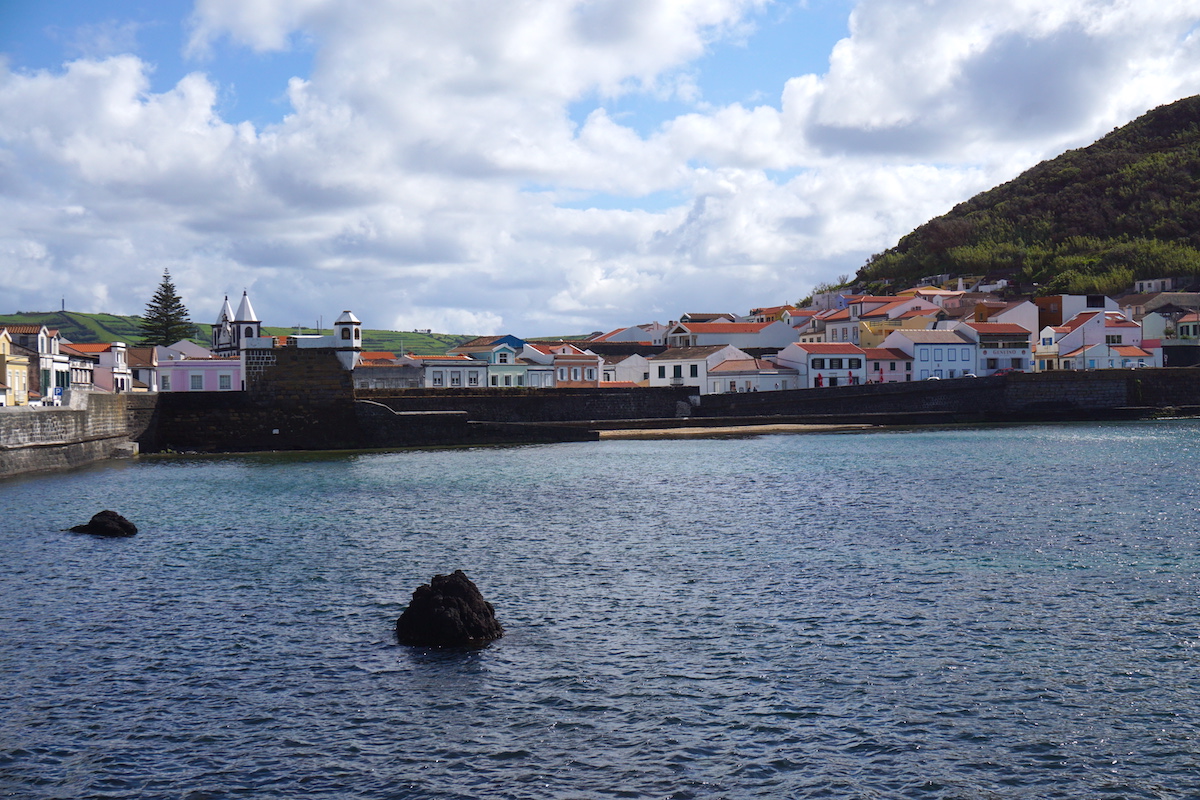
There are several places where we recommend you to go to feel the atmosphere of the city:
Peter Café Sport: stories of the sea with passion fruit gin flavor
The Peter Café Sport is an institution in Faial with more than a hundred years and it is even said that “if you haven’t been to Peter you haven’t really been to Horta”. Strategically located near the marina, overlooking Pico, the bar has become a symbol of the sea and openness to travelers. Its walls and ceiling denote the international soul of the place decorated with colorful flags and colorful insignias of yachts that make us curious and, somehow, travel the world from our chair.
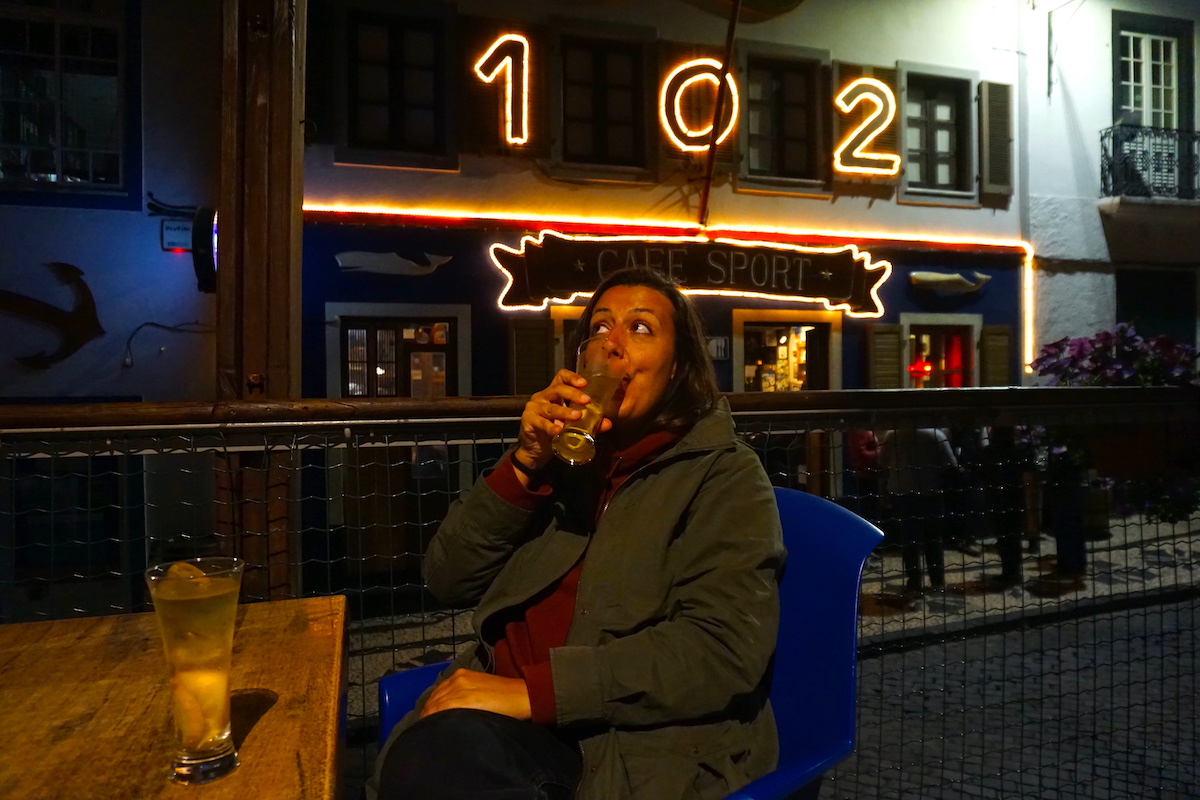
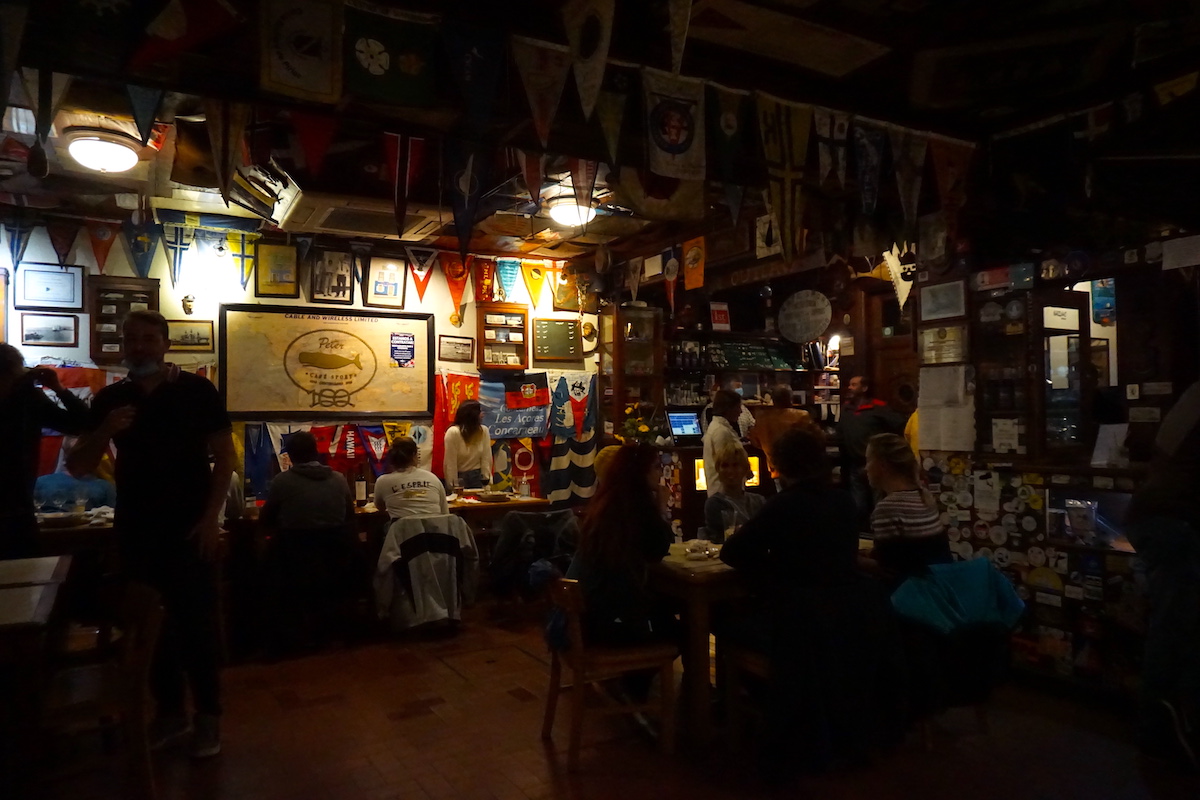
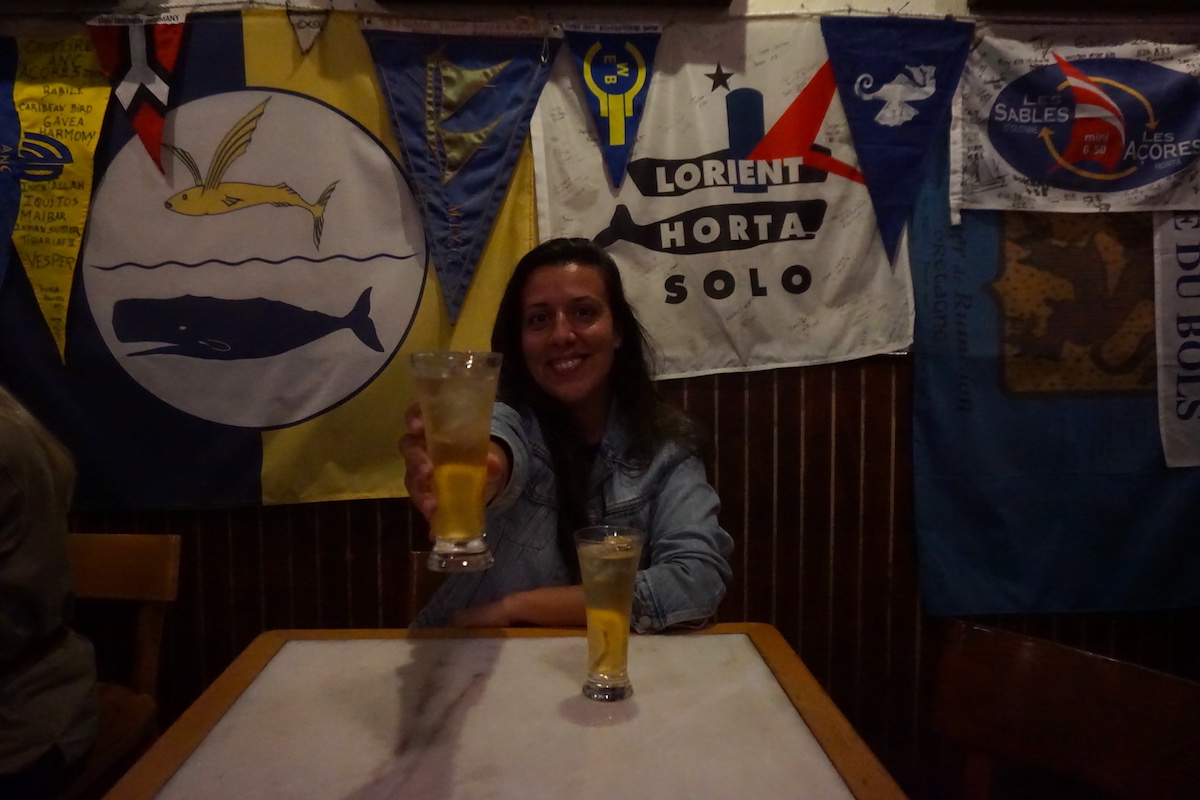
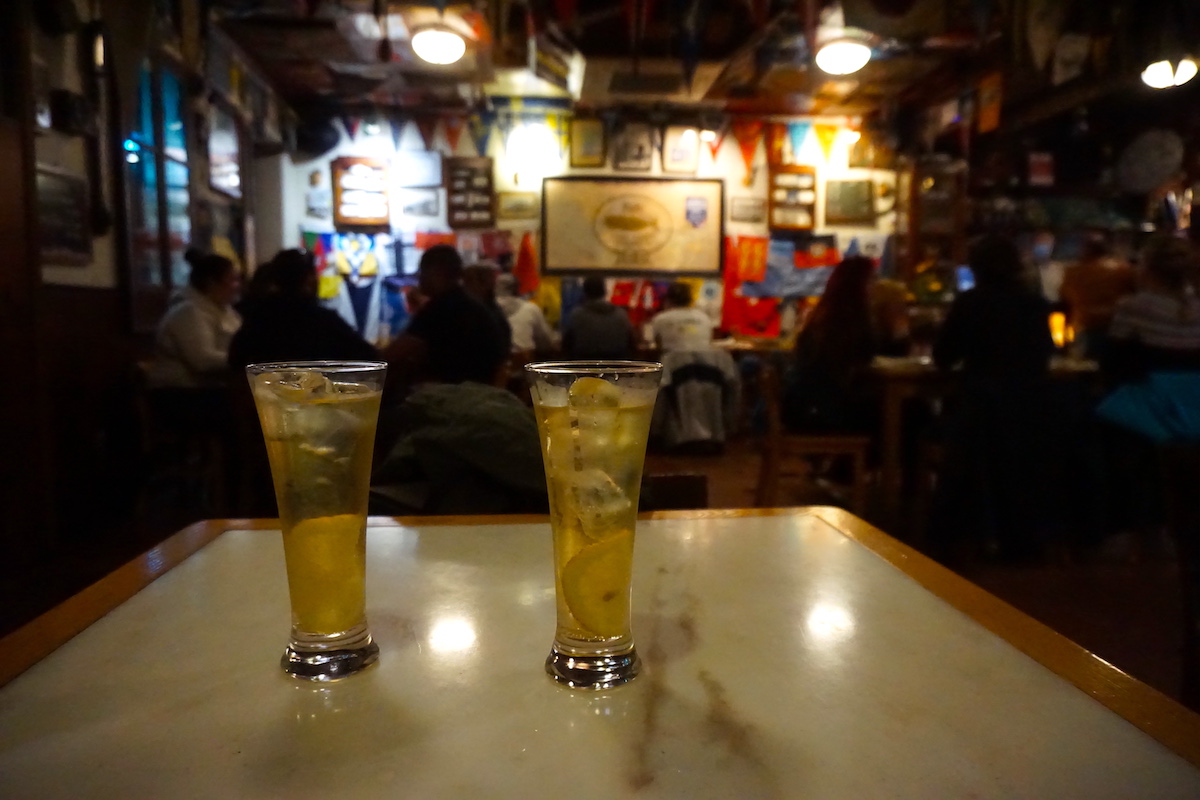
It’s easy to know you’ve arrived because the neon in the shape of a sperm whale marks the beginning of the street and it’s a meeting point for sailors and travelers from all over the world, so you’ll always see people outside, most of them with a drink in hand. Under the influence of the English people, gin became the drink of the house so if, as in Randomtrip, you like gin and tonic, you can’t miss their Gin do Mar, distilled with passion fruit (and only 2.90€ each). In addition to gin, there are other cocktails on the menu and several more or less light dishes, including a whale soup which is actually a meat soup inspired by what whalers ate before setting sail.
The activity of whaling was happily banned when Portugal joined the then European Economic Community (EEC) in 1986 but it was not until 1987 that the last sperm whale was hunted on the island of Pico. The Peter Café Sport was one of the first companies to offer whale watching tours. When you go to Peter, if you feel like it, know that on the second floor you can visit the Scrimshaw Museum ( for 2,50€, a little less than a gin and tonic) where the largest private collection of Scrimshaw’s artwork in the world is hidden. The Scrimshaw consists of engravings and carvings on whale bones, cartilage or ivory, from the 19th century, made by whalers.
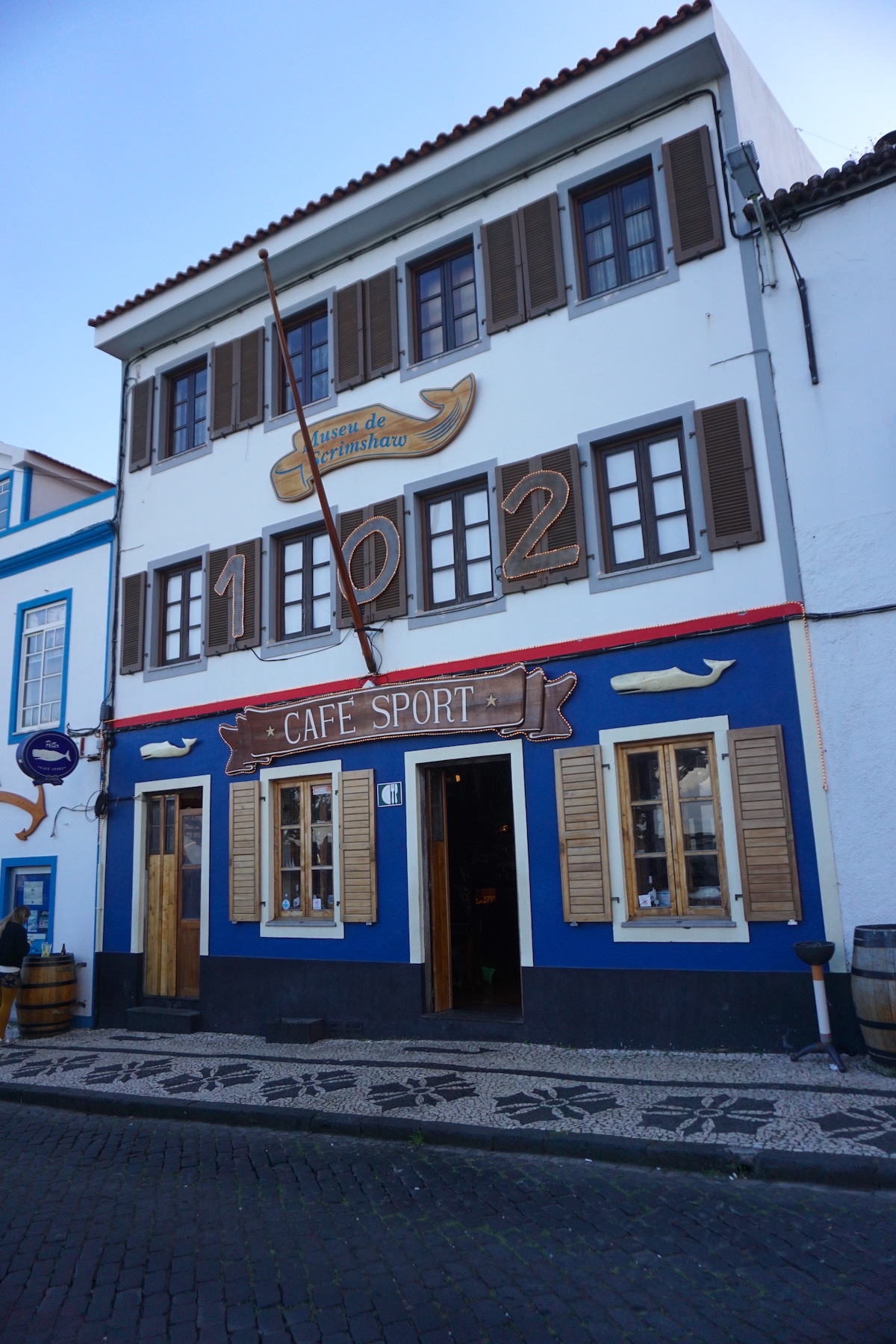
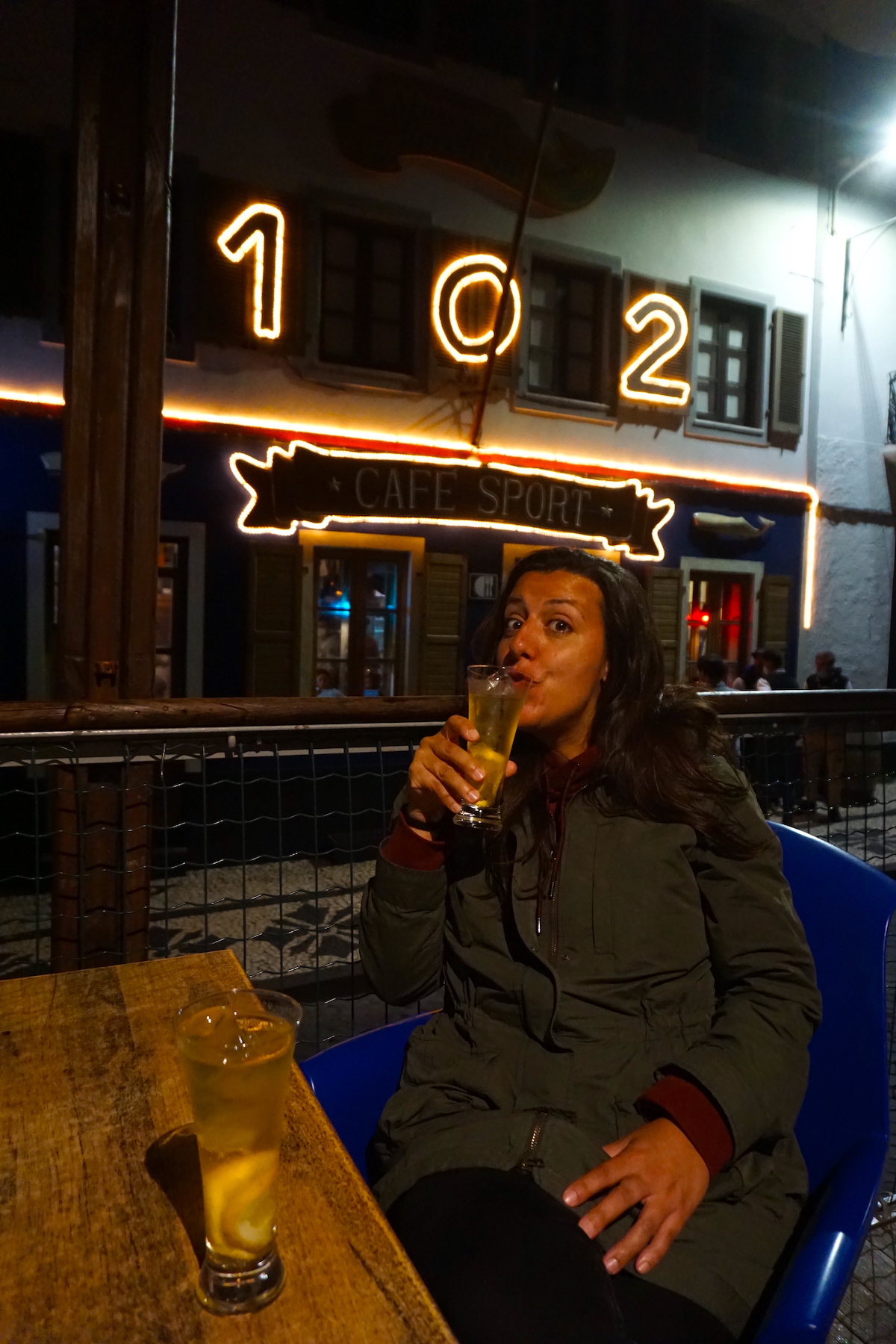
Porto Pim and Monte da Guía: Beach, Genuíno, Whaling Factory and Dabney House.
According to history it was in Porto Pim that the first settlers settled, where D.Filipe III ordered to build a port to dock ships and boats and where we at Randomtrip chose our exploration base.
Porto Pim Beach
Porto Pim beach is a beautiful sandy beach (with showers and toilets) much sought after by the people of Faial to take a dip on sunny days.
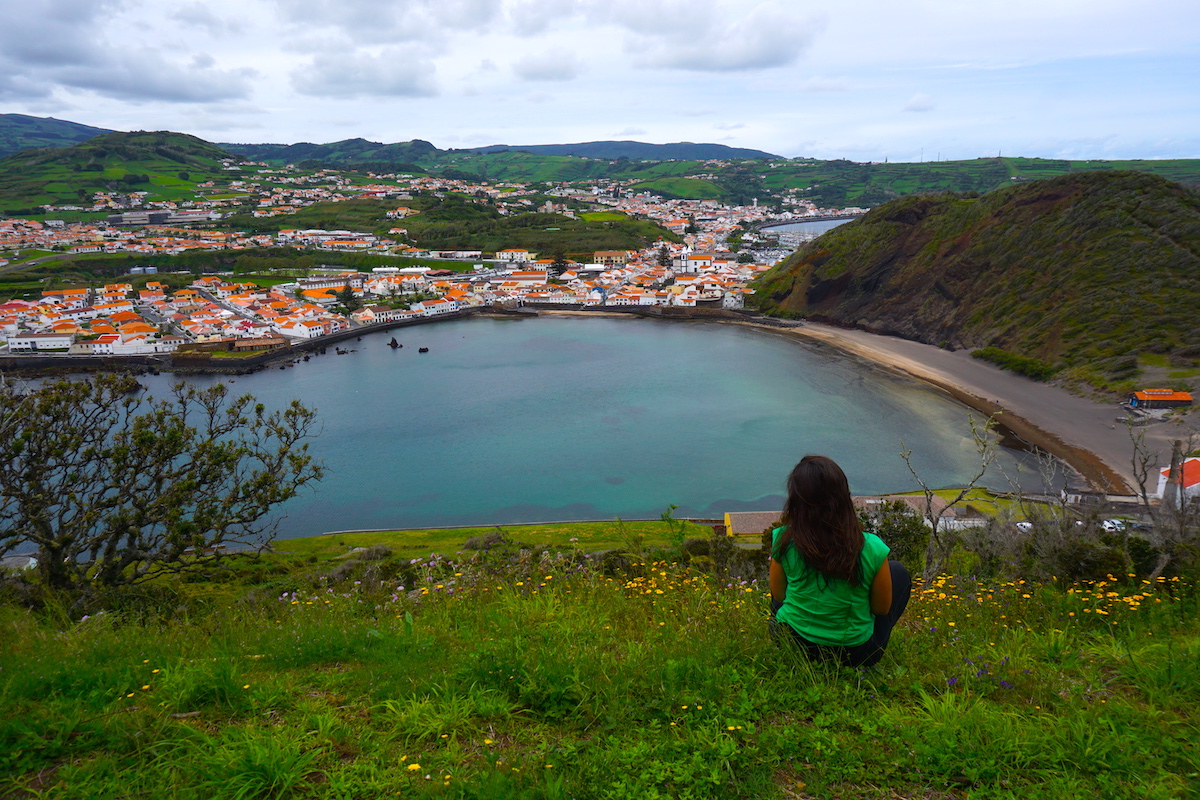
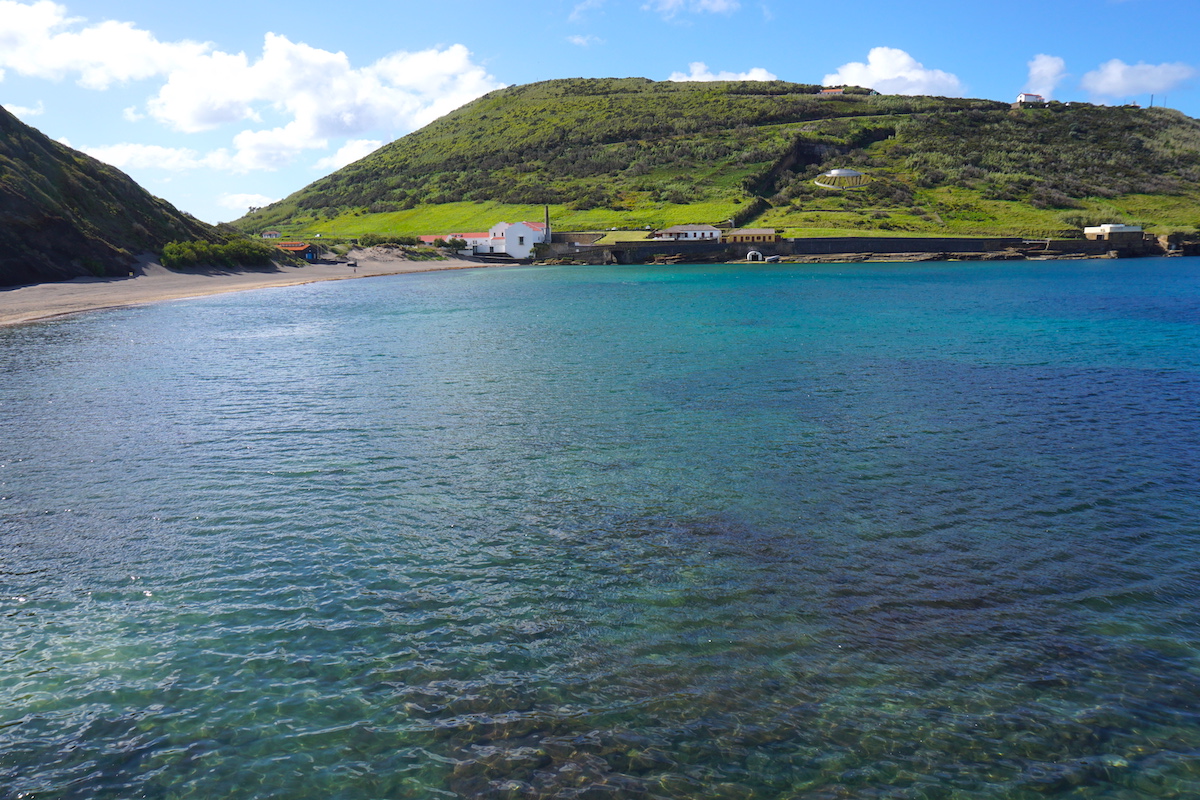
In addition, the vicinity of Porto Pim beach is a wonderful option to stay because of the proximity to the center of Horta with several restaurants and bars (10 minutes walk from Peter and 15 minutes from the marina) but in one of the quietest areas. At Randomtrip we stayed at Monte da Guia (from 40€/night), for the views of the homonymous mountain, the Pico mountain and the sea but there are several options nearby (open the Booking map to see where the accommodations are located and which one interests you).
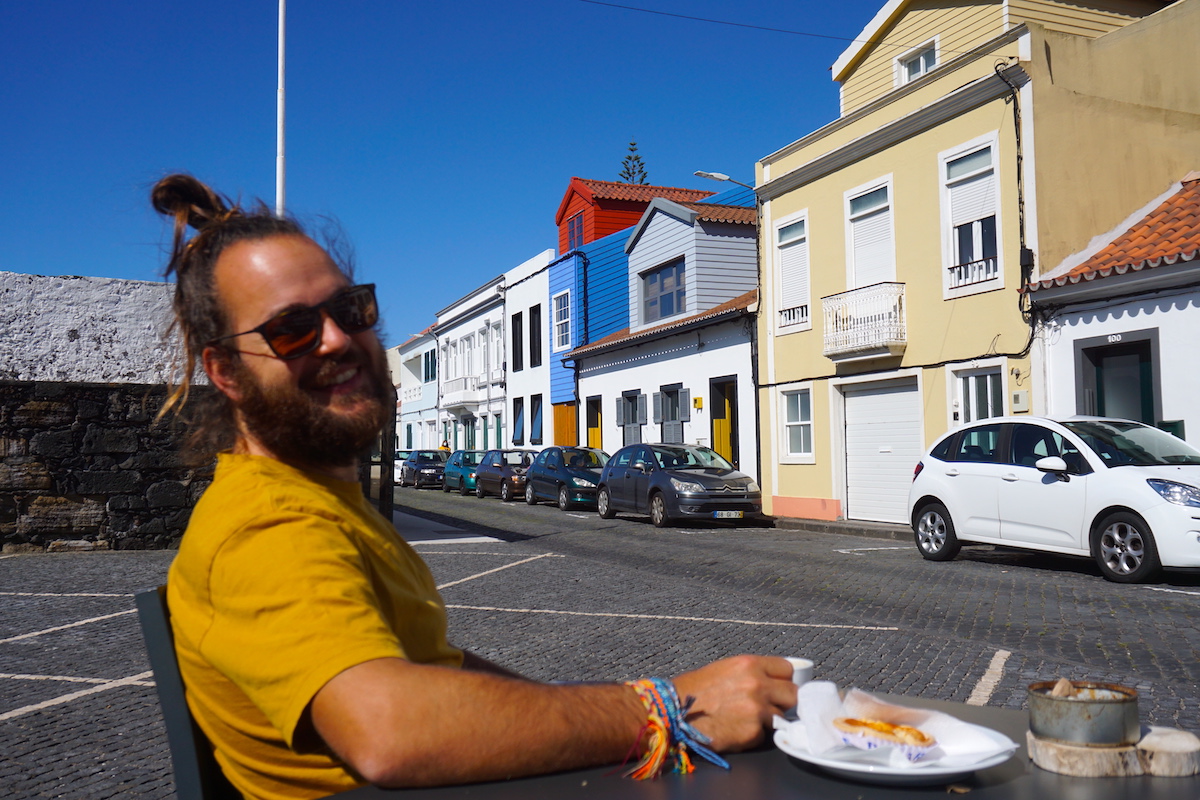
Genuíno Restaurant
A must visit in Porto Pim is the restaurant Genuíno, more than for the restaurant, for its owner, whom you can meet when you go there. Genuíno Madruga is an adventurer from Faial who between 2000 and 2002 made the first circumnavigation under sail, alone, and repeated the round-the-world trip in the same boat between 2007 and 2009. Our curiosity about one of the countries we most enjoyed entering in Southeast Asia, East Timor, led Genuíno to tell us in first person that in the first solo circumnavigation he could not enter East Timor due to the independence process the country was going through, but that in the second one he could. If you are curious about the hard history of one of the least known and most interesting countries in Southeast Asia, we summarize it in this article.
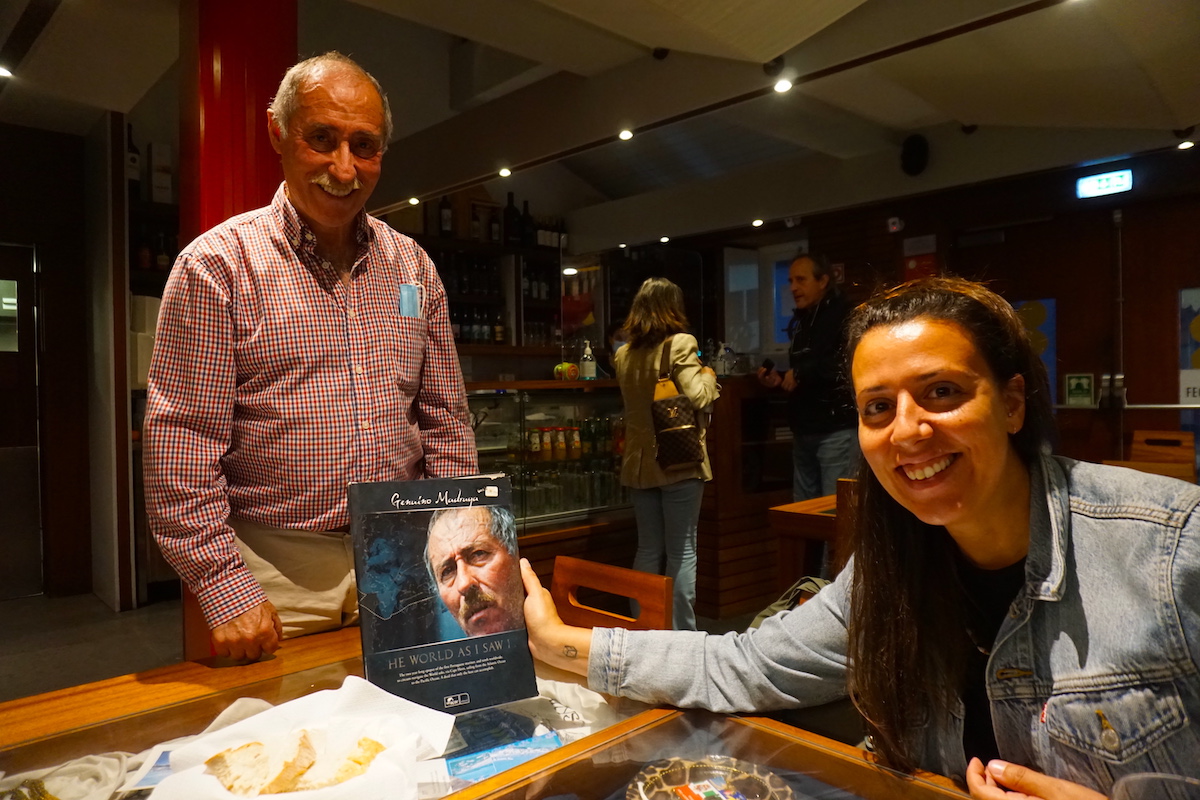
According to Genuíno, being born in Faial and growing up among sailors, explorers and adventurers from various parts of the world made his dream of a solo round-the-world trip aboard a sailboat (come true) start early.
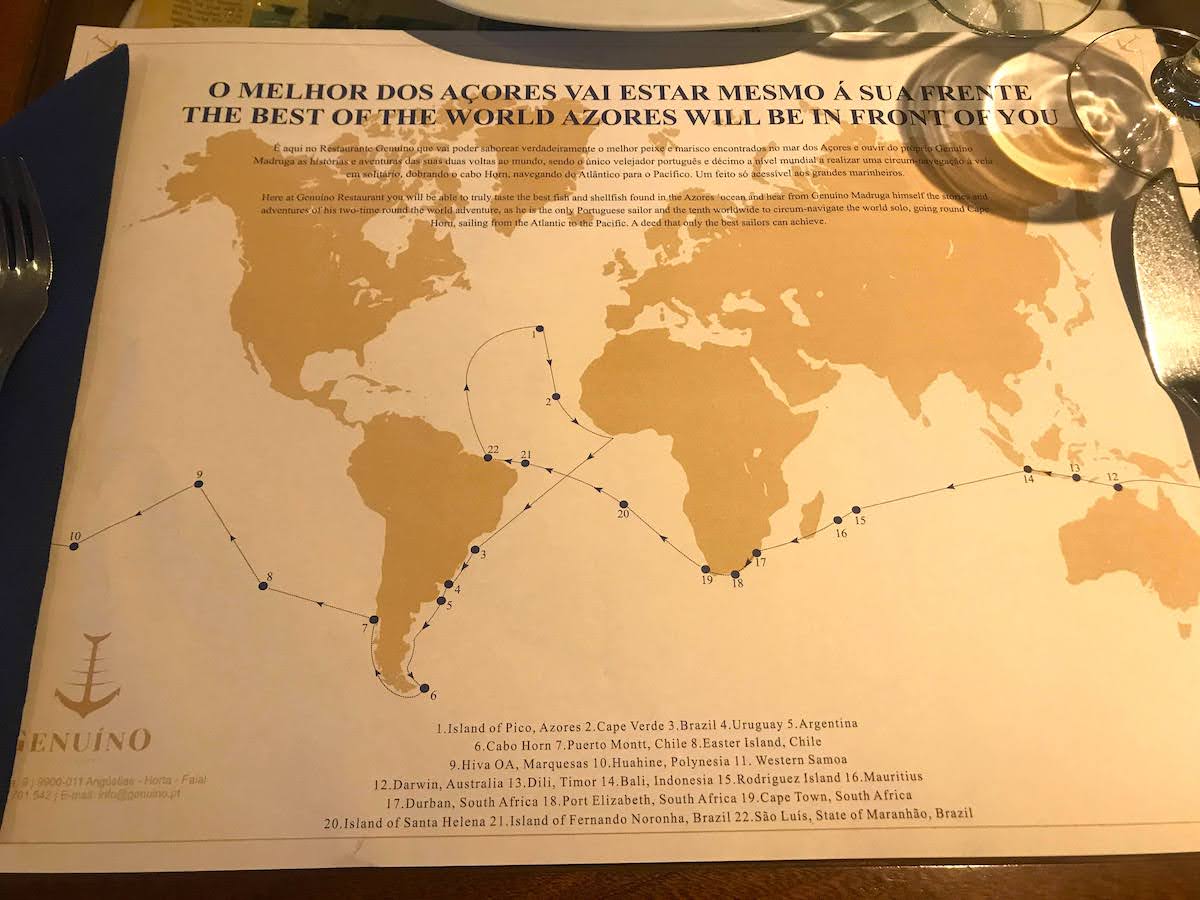
In the restaurant, open since 2014, you will not only have the luxury of being able to meet this legend from Faial, but also to explore his library, where you will find several autographed books of circumnavigation, as well as a second edition of The Old Man and the Sea, which made him baptize his sailboat as Hemingway. As a curiosity, when the dish arrives at the table do not be surprised if you hear a “Boa Viagem” (Bon Voyage) instead of the classic “Bom Apetite” (Bon Appetit), after all, you are in a traveling house and, in this case, about to sail through Azorean flavors. More information about the restaurant in our section Where to Eat in Faial.
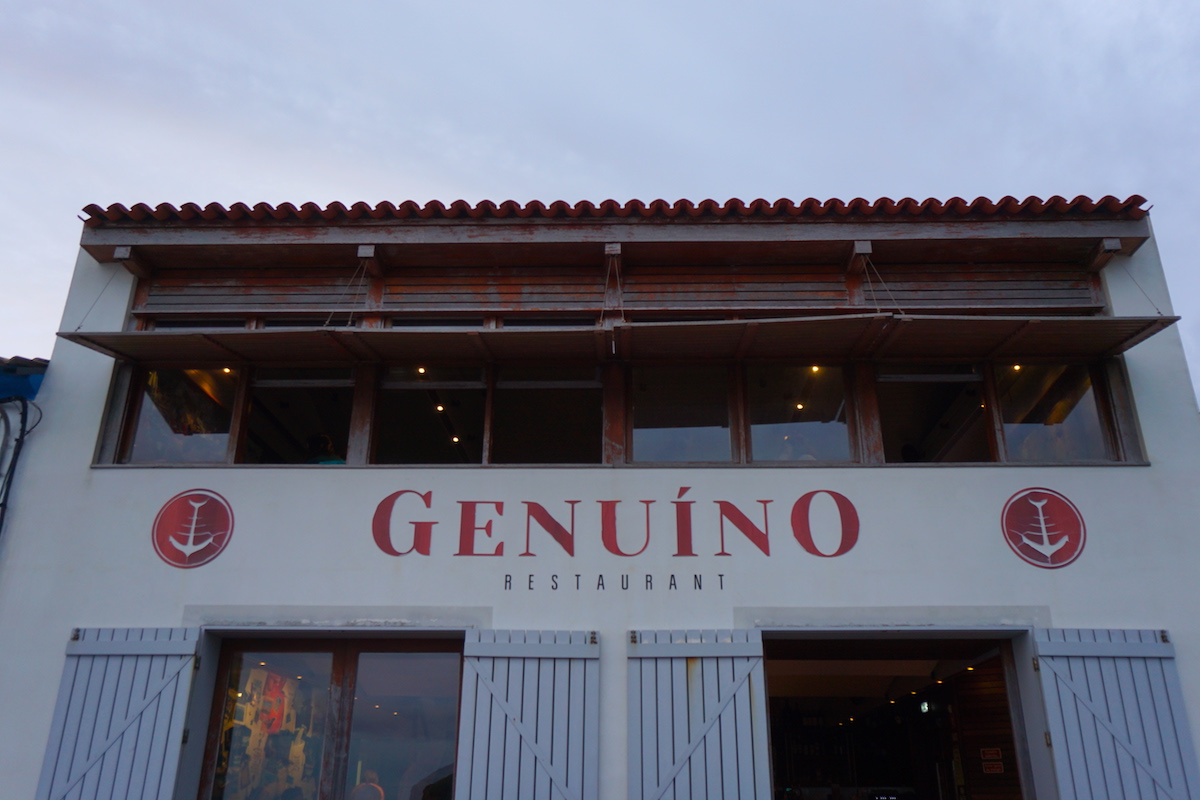
Fábrica da Baleia of Porto Pim
It is also in Porto Pim that we find the Fábrica da Baleia de Porto Pim, a museum at the southern end of Porto Pim beach that takes us back in time to understand the whaling industry, a very important economic activity in the Azores, especially on the island of Pico, for about 50 years and whose numbers are impressive: between 1896 and 1949 about 12 thousand whales were hunted.
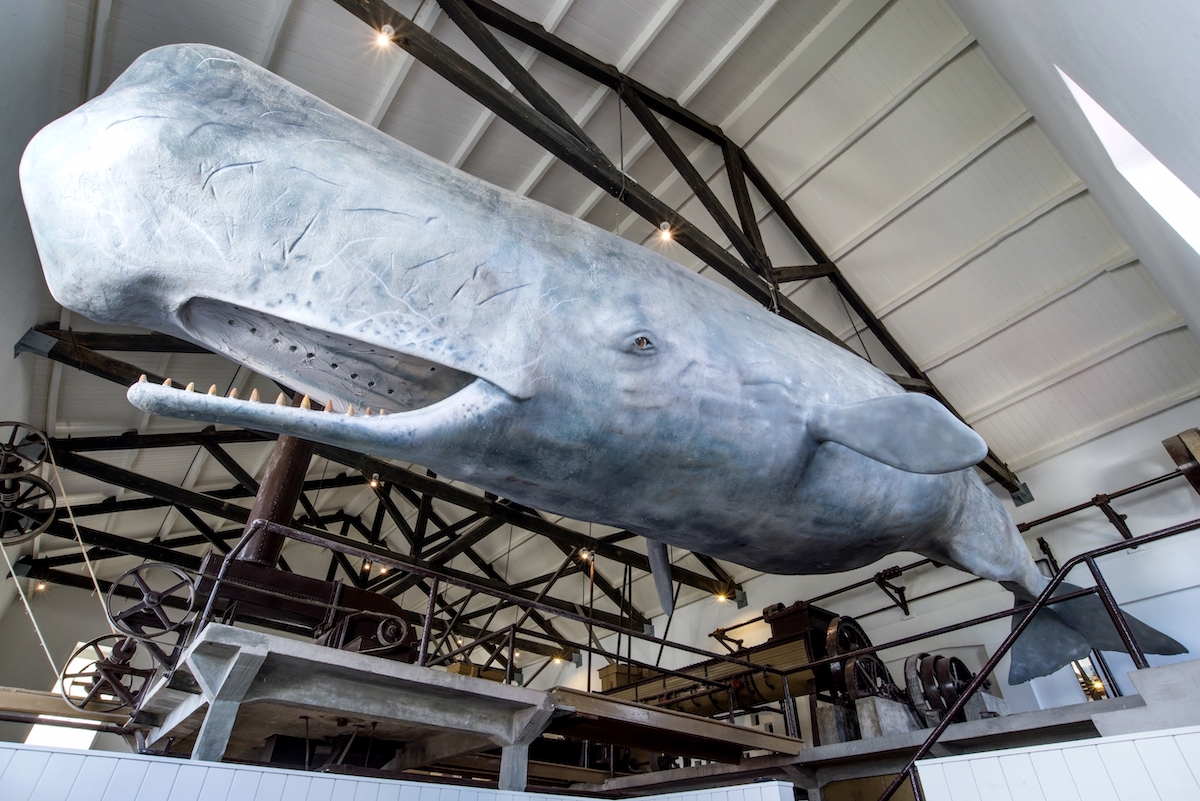
It was a very hard activity where the animals and some of the humans involved in it lost their lives. The target: products derived from sperm whales and other whales: oils for lighting and lubricants (mainly for export) and various types of flour (made from the bones). It is a visit where you will swallow dry many times, especially after having greeted the beautiful and majestic cetaceans in freedom in their Atlantic home.
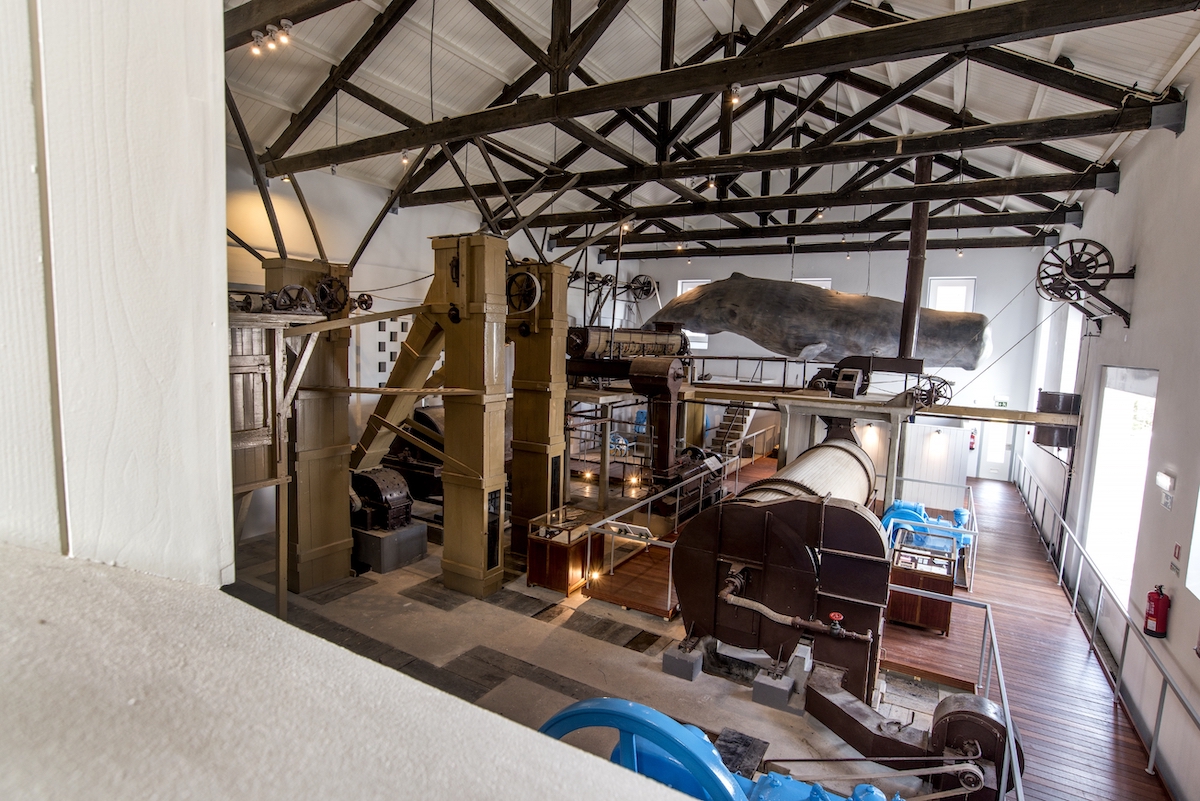
The museum contains most of the actual equipment used by the factory during its commercial operations from 1941 to 1974 and is also home to the Azores Sea Observatory, an NGO dedicated to environmental education and activities related to ocean sciences.
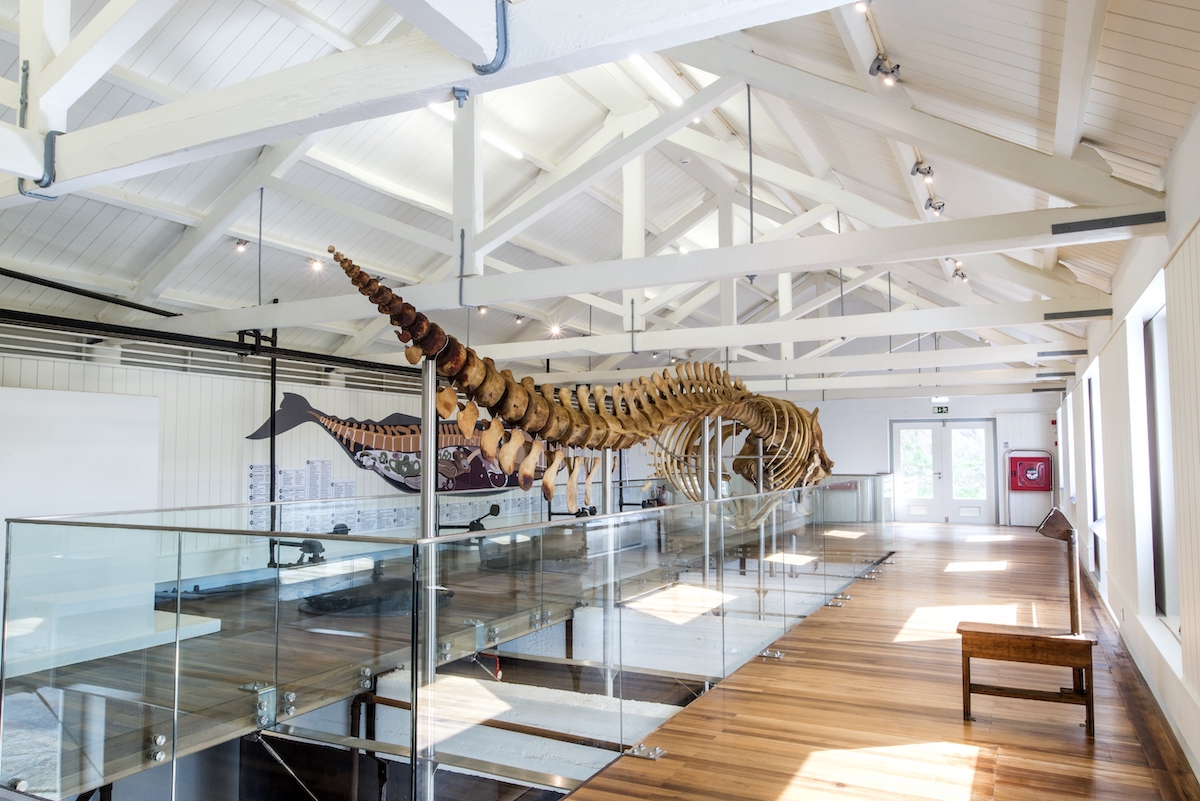
On this tour you will learn about the history of the island and the whaling tradition in the Azores passing by some of the observation points for whale watching and ending at the Museu da Fábrica da Baleia de Porto Pim, passing by Capelinhos, a must to learn about the history of the island and some of the most impressive viewpoints to contemplate the views. Book your tour here.
And if you want to book one of the star activities in Faial, whale and dolphin watching from Horta, book your tour here.
Dabney House
Right next to the Fábrica da Baleia museum in Porto Pim is the Dabney House where you can learn about the three generations of the Dabney family and their importance in the history and economic development of the island of Faial. John Bass Dabney (1767 -1826) born in Boston but based in Bordeaux (France), where he had a trading house, decided to move with his family back to the USA due to the growing political tensions between Great Britain and France and the confirmation of the conflict that confronted both nations in 1803. But on the return trip to his native Boston, he passed through Faial, where he remained during the winter of 1804.
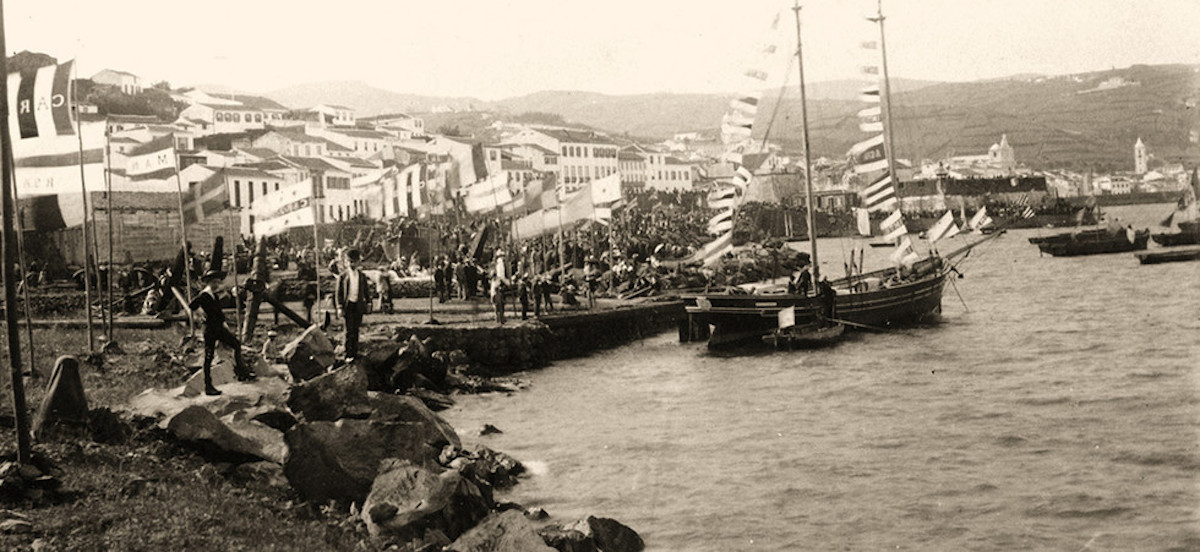
And Faial, of course, hooked him. Between the Portuguese neutrality before the war, the geographical situation of the island strategically positioned in the Atlantic, the weather conditions and the prospects for new business (such as wine produced on the neighboring island of Pico, which we tell you more about here) made John Bass Dabney began to look at Horta with the eyes of a new home. And so it was. In August 1806, John B. Dabney returned to Faial with the title of first Consul General of the United States in the Azores. During the time the Dabney family lived in Faial (1806 to 1894), both John’s son Charles and grandson Samuel held the office (yes, nepotism is not a new thing, it goes back a long way).
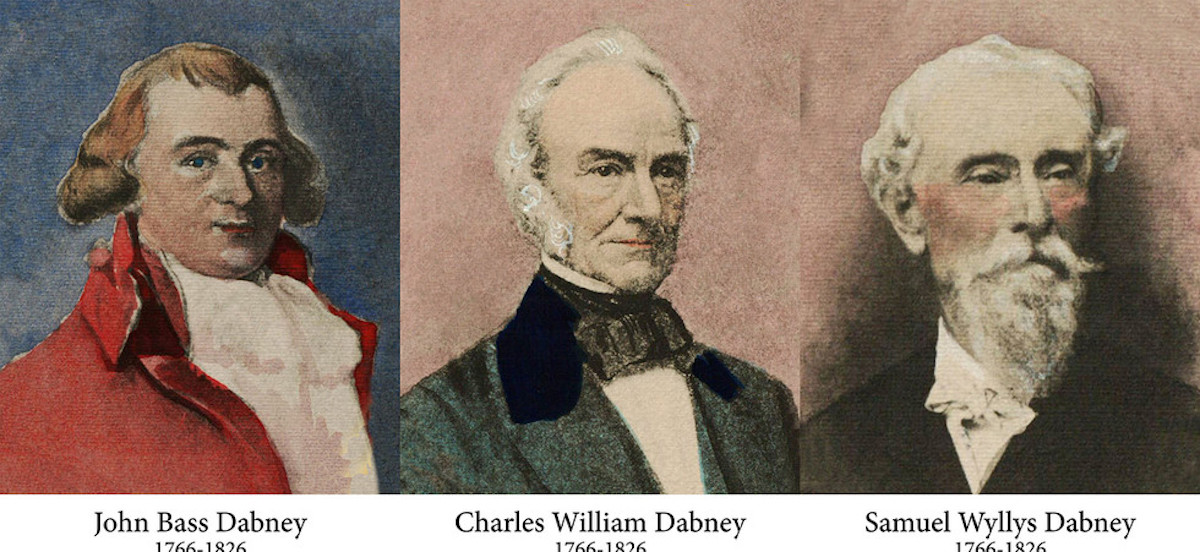
The House of the Dabneys tells us how the history of Faial is intertwined with the history of the Dabneys: this family marked, throughout the 19th century, the dynamics of commercial, economic and social relations in the Azores and in particular on the island of Faial, with both sides of the Atlantic.
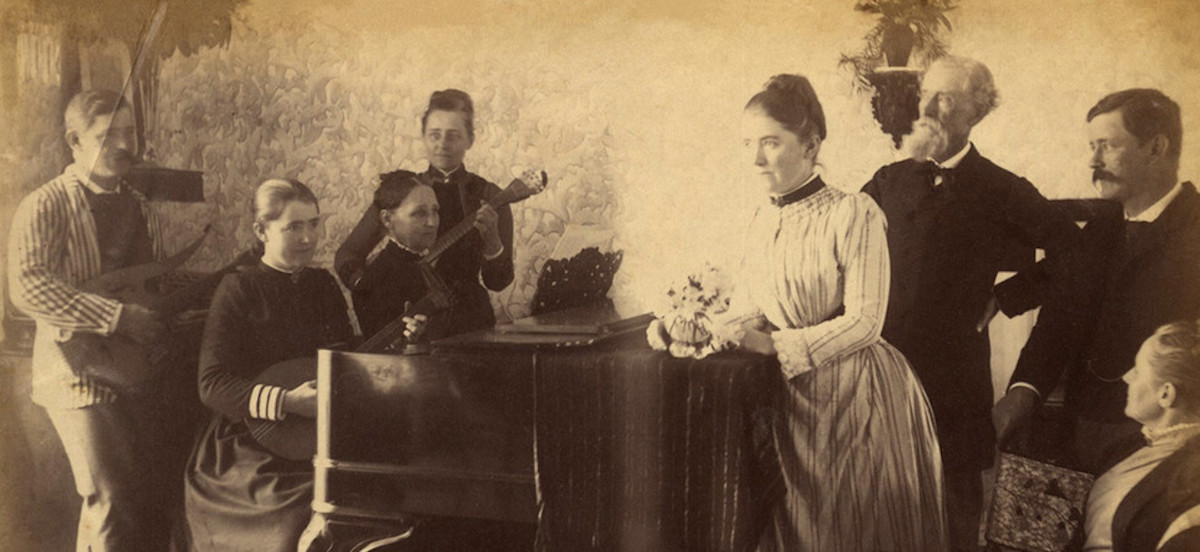
From the bay of Horta wine was exported, coming from Pico island, oranges, lemons, tangerines and products derived from whaling carried out by the Dabney family, especially to the United States, Europe and the Baltic, also reaching India and Macao. They also left their mark architecturally as can be seen in several properties in the city and in this very house next to Porto Pim beach, originally the summer home of Charles Dabney (John’s son).
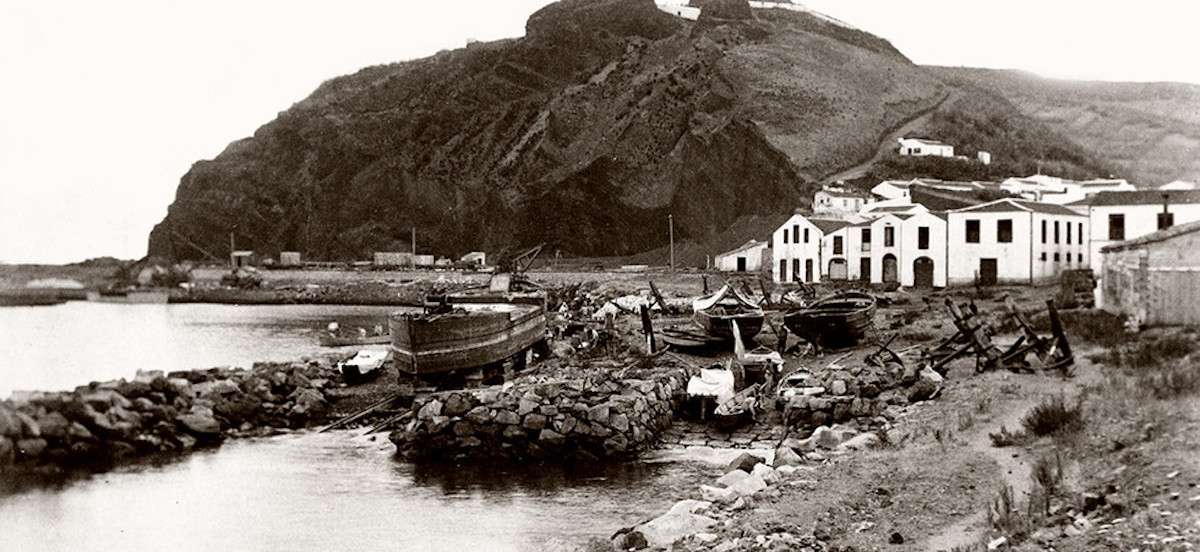
RandomTip: If you are interested in delving deeper into the history of the Dabney family, there is a 5km pedestrian route through the city of Horta and Monte da Guia passing through the residences and favorite places of this family (for business or leisure) that portrays the history of this family in the nineteenth century. The meeting point is at Casa Dabney, between 14:00h and 17:00h and the price 3€ but, since we did not do it, it is better to confirm in advance. You can ask for more information by phone (+351 292 240 685) or by email (info.sraac.cd@azores.gov.pt).
Monte da Guía
A highlight of Faial, the Monte da Guia geosite actually includes the Monte da Guia volcano, Porto Pim beach and the Monte Queimado volcanic cone, in addition to all the sand dunes, slopes, cliffs, bays, inlets and sea caves around and within this area. This Azorean Geosite is also two protected areas of the Faial Natural Park, which protect plant and animal species native to the Azores.
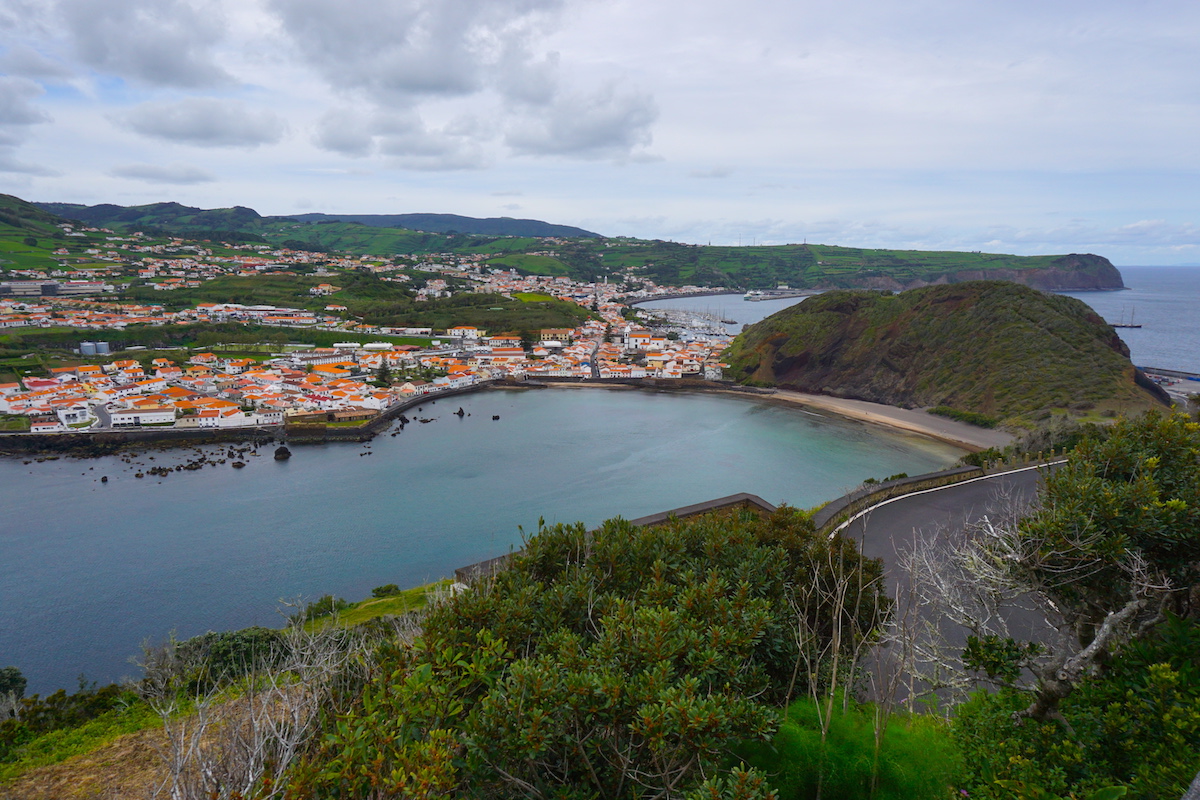
The best is to contemplate the panoramic views of Horta, the bay of Porto Pim protected between two volcanic cones, the south coast of Faial and the island of Pico from the top of Monte da Guia and Monte Queimado. The best way to get this view (although you can also go by car) is by doing the Entre Montes trail (PRC08FAI), an easy circular route of 3.4 km (approx. 1:30h) between Monte da Guia and Monte Queimado, both of great historical importance in Faial. Its strategic location was fundamental for the development of telecommunications between Europe and the United States, where in 1893 the first submarine telegraph cable was installed and operated until 1969, key in periods such as the Great World Wars. More info about this trail in the section The Best Hiking Routes in Faial.
Also enjoying, at the top of Monte da Guía, the incredible panoramic view is the Chapel of Our Lady of Guía. It was built in 1943 to replace a chapel built in the late seventeenth century in honor of the patron saint of fishermen and sailors.
Historical center of Horta
In the historic center of the city of Horta, do not miss it:
- Horta Municipal Market: beyond its function as a market with its fruit and vegetable stalls, you should go there for three reasons. The first is called Ah! Boca Santa and has the best artisan burgers with local and organic ingredients and craft beer. The second is called Cantina da Praça where you can cook your food on a boiling lava stone. And the third is called Loja do Triângulo where you can get all the specialties of the islands of the Azorean triangle (Faial, Pico and São Jorge), from picaroto wine, cheeses of São Jorge, spirits and even edible seaweed.
- Igreja Matriz: the Igreja do Santíssimo Salvador is one of the largest churches in the Azores and its interior is decorated with gilded carvings and tiles.
- Town Hall: the former Jesuit College was abandoned in 1760, when the Jesuits were expelled from Portugal and the College buildings have been converted into the Town Hall and the Horta Museum which highlights its collection of fig wood art, a traditional craft we had learned about at the Capelo Craft Center.
- Clock Tower: it was used as a watchtower in the 19th century and can be climbed to get a panoramic view of Horta.
- Florencio Terra Garden: a beautiful park with a gazebo, a kiosk and a dragon tree. A perfect place to rest your legs on the route through the historic center of Horta.
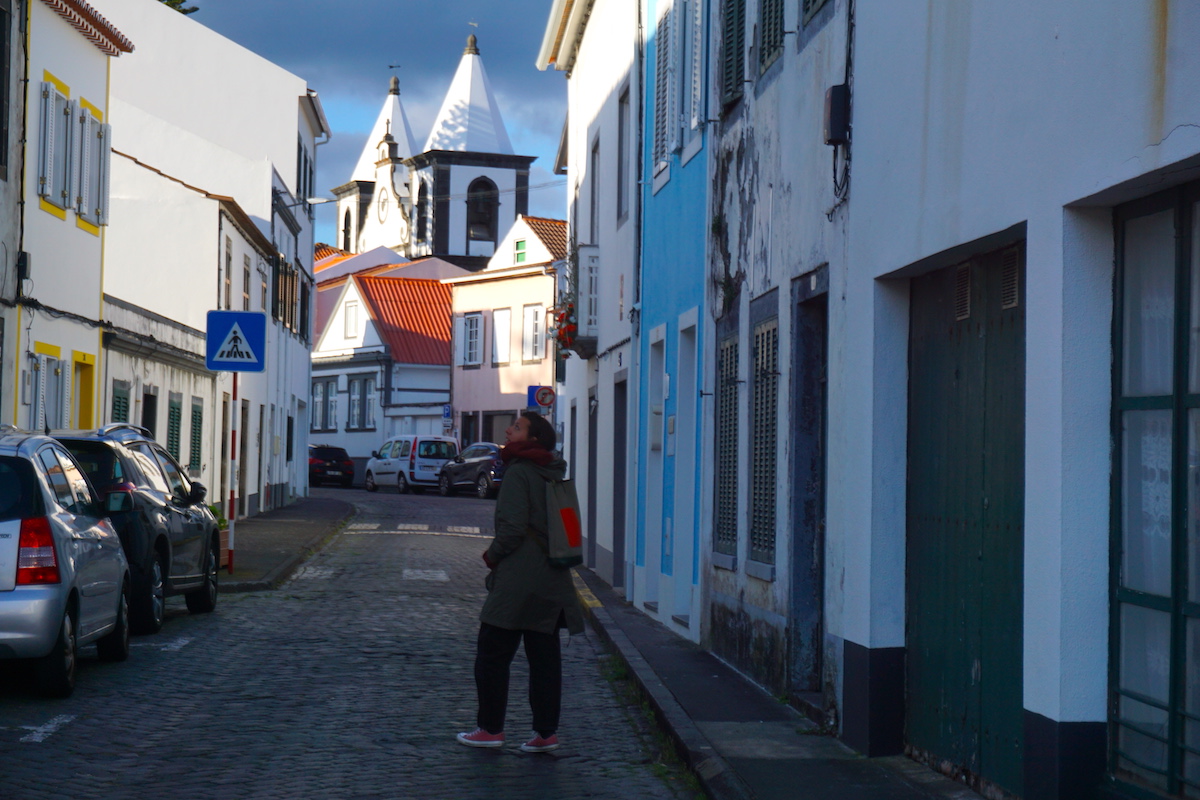
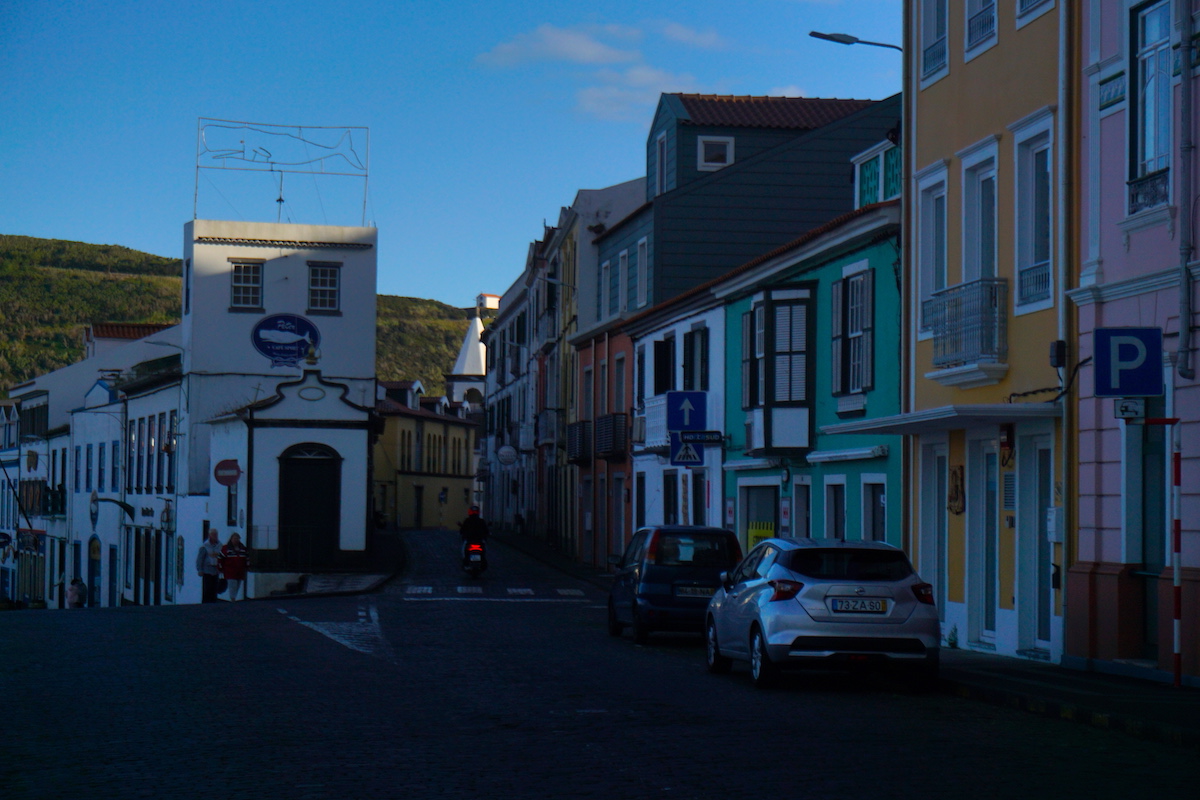
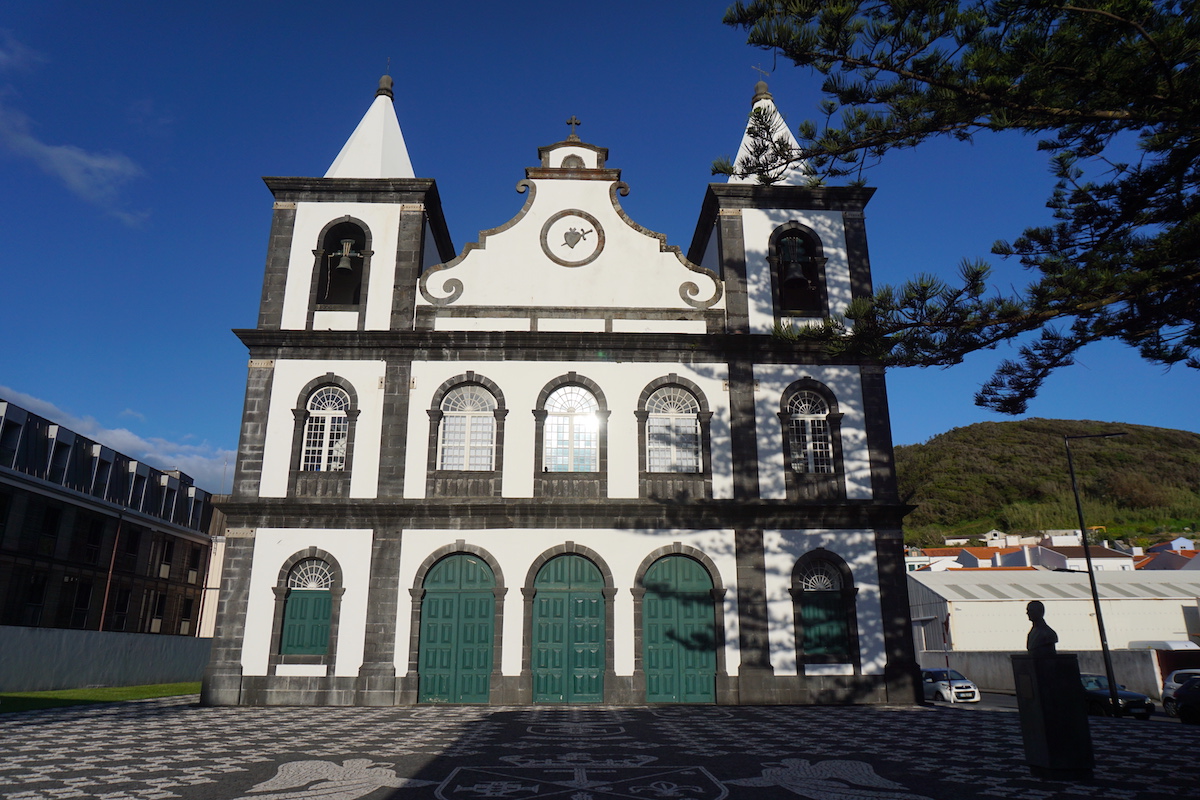
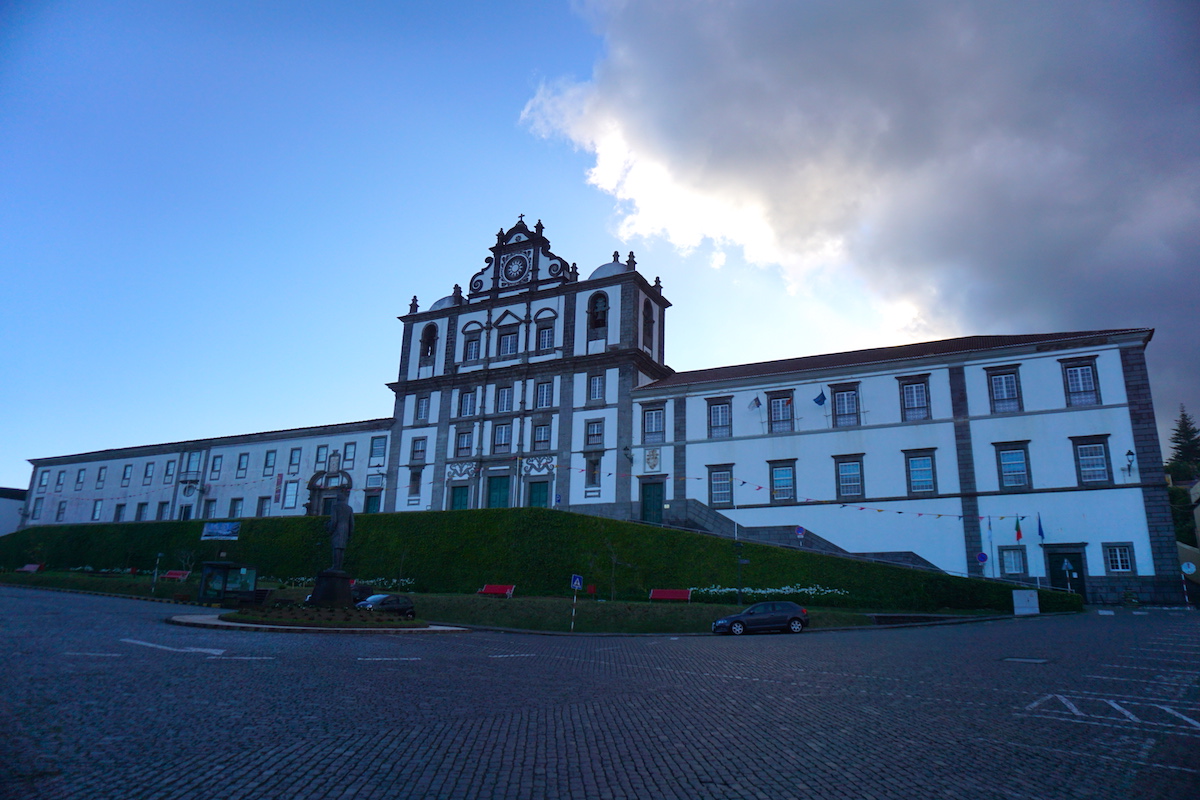
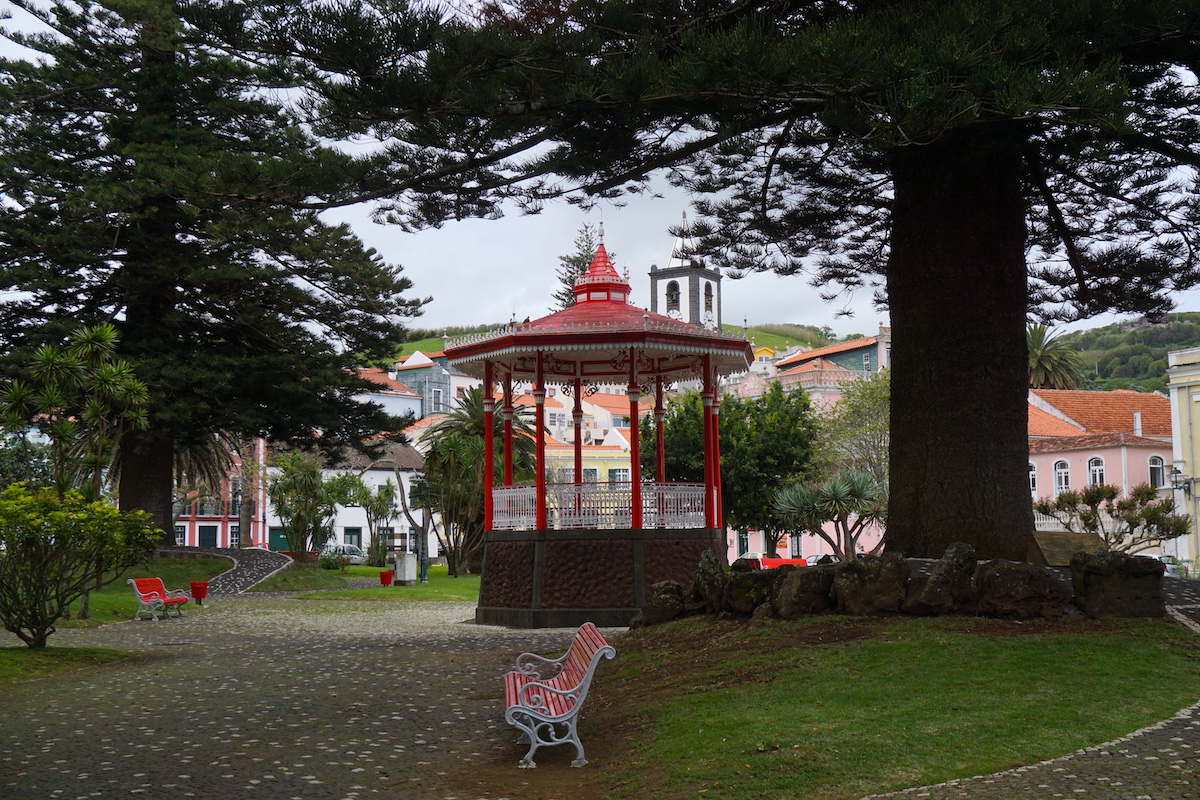
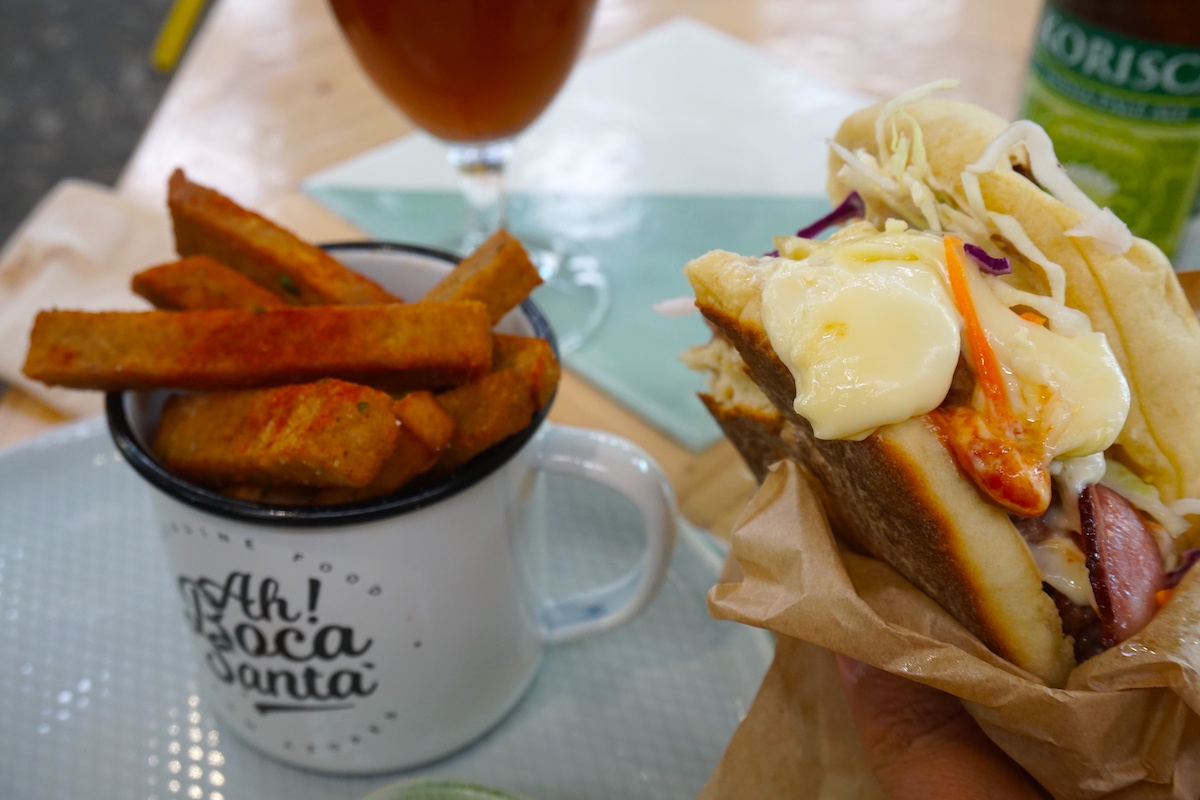
Not in the historical center but of interesting visit is the Botanical Garden of Faial and its Orchidarium. It is the oldest environmental center of the Azores with about 1.5 hectares of area that recreates the seven different types of habitats characteristic of the island, from dunes and sands, to areas of high altitude vegetation, with a predominance of grasses. The Orchidarium houses 5,000 orchids, with 320 species or hybrids and 51 genera, including species endemic to the Azores. In order to reintroduce endangered species and help in the conservation of the original flora, a seed bank and a nursery of rare plants were also created in the garden, from where specimens are sent to all the islands. For example, the small blue flower Myosotis azorica, of which only 50 specimens were known on the small island of Corvo, was reintroduced.
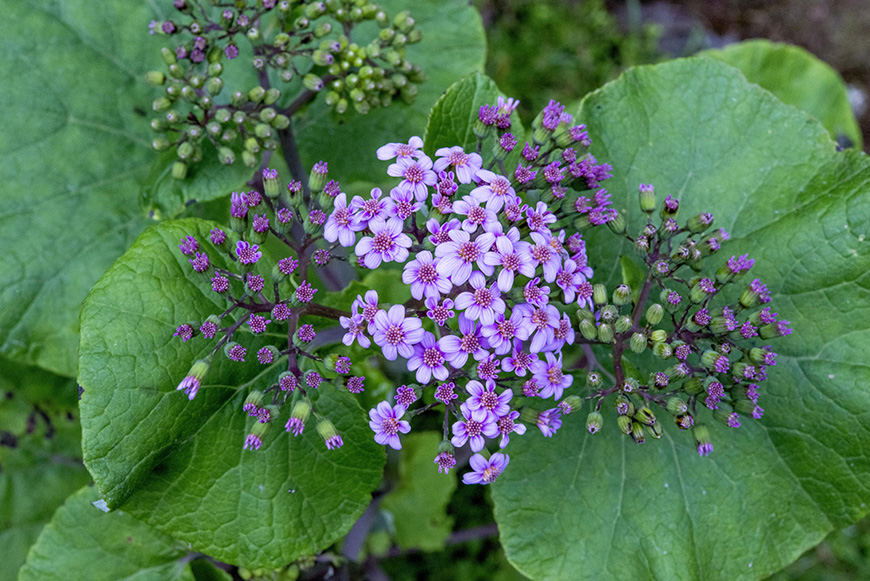
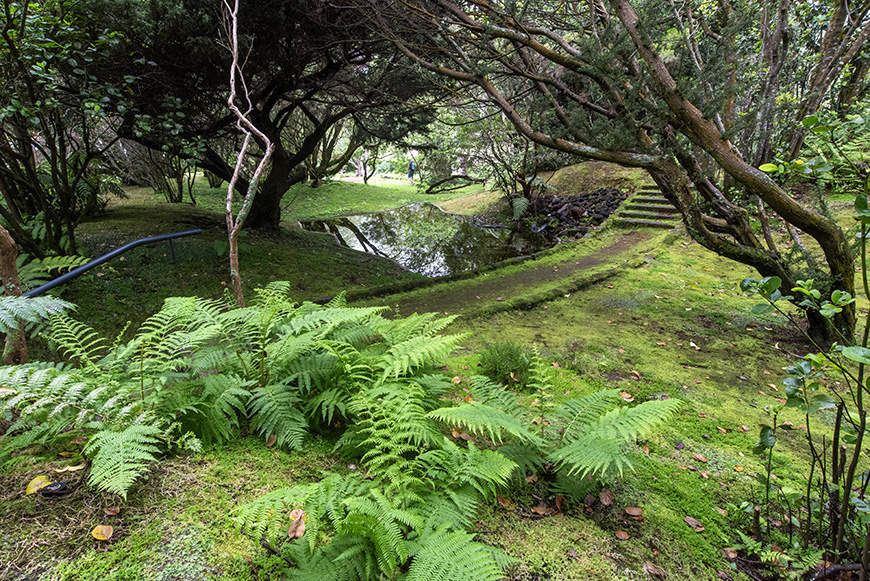
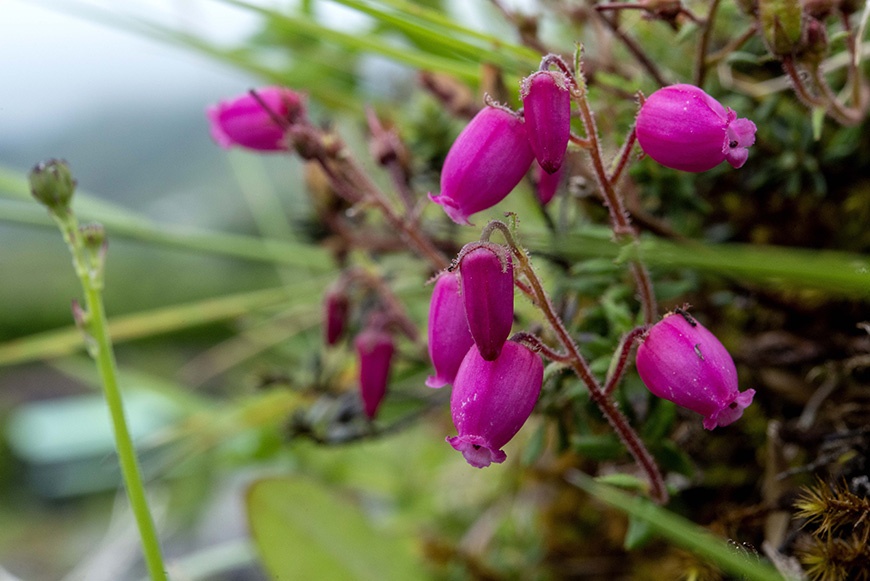
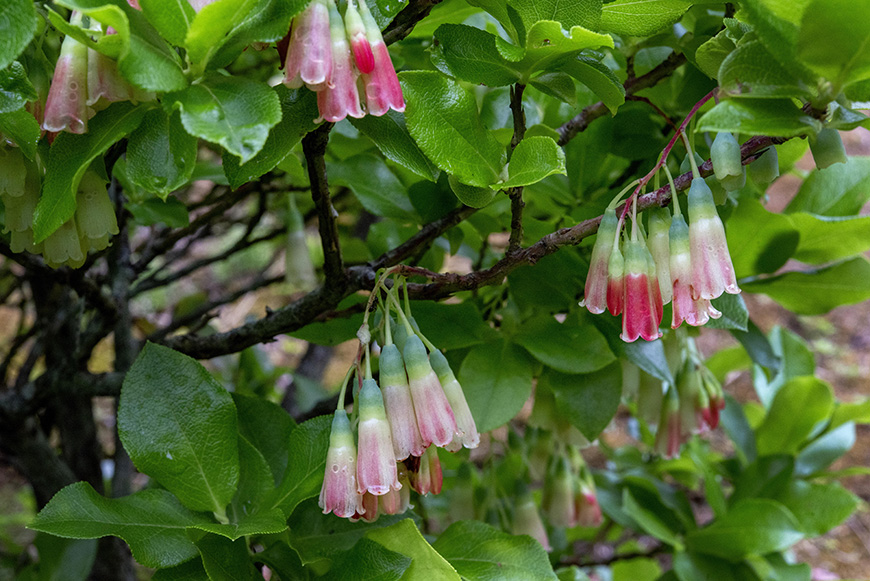
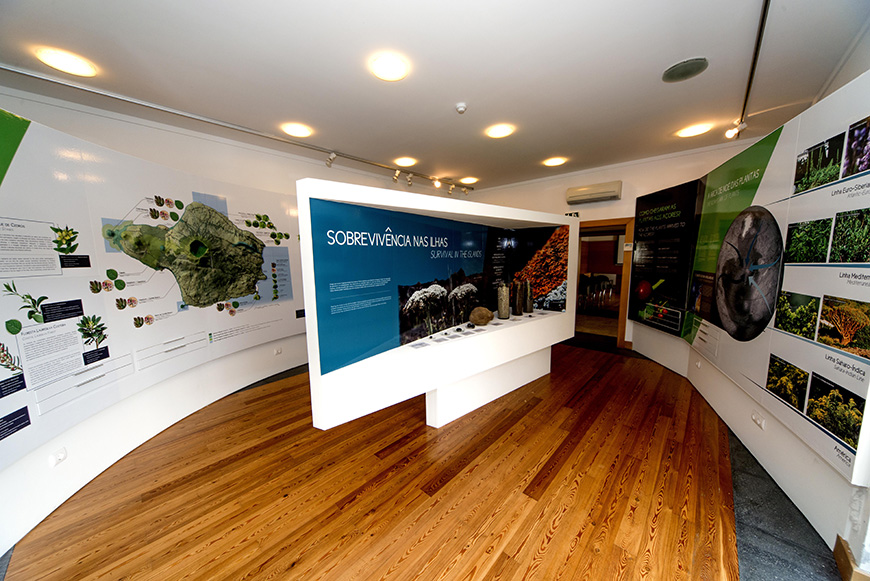
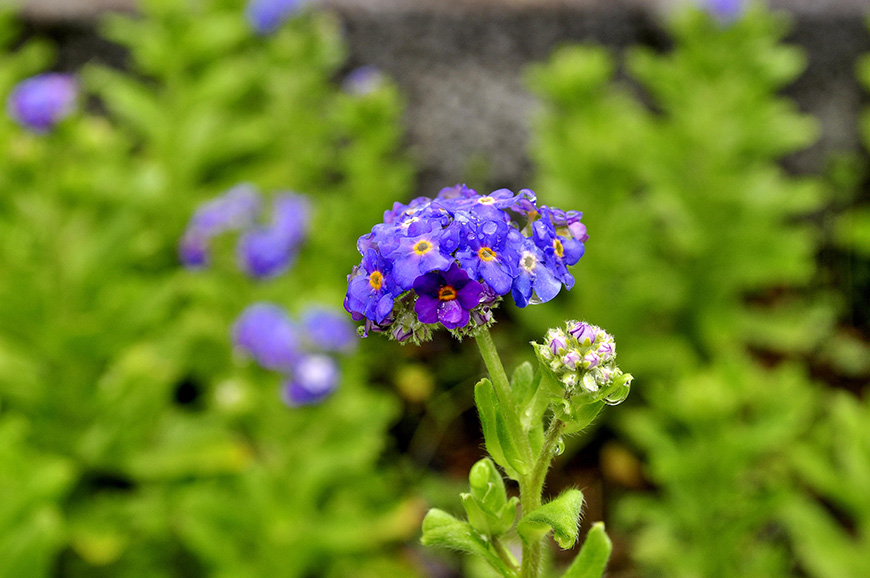
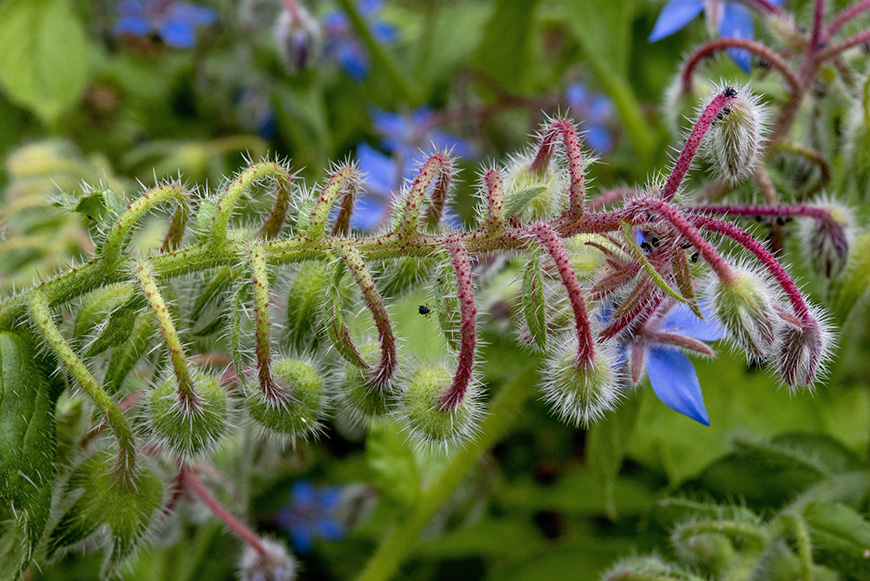
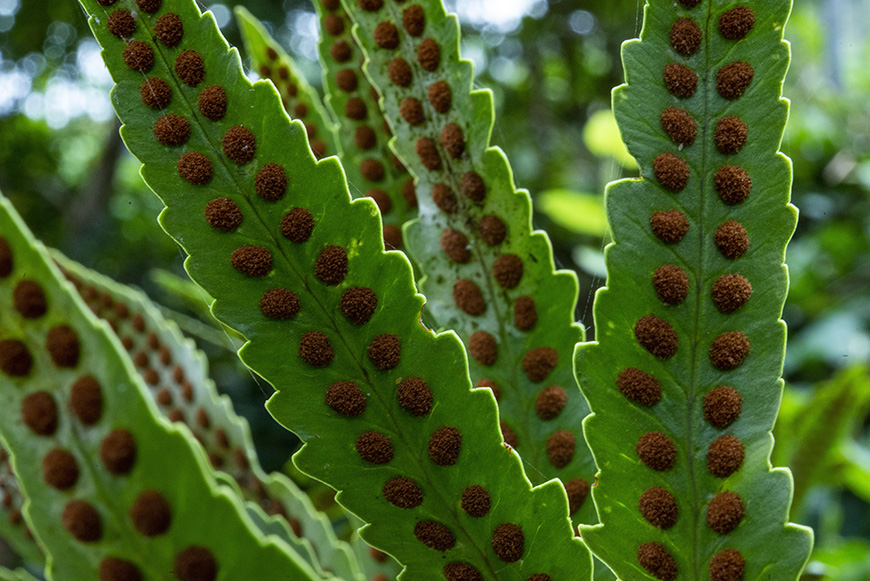
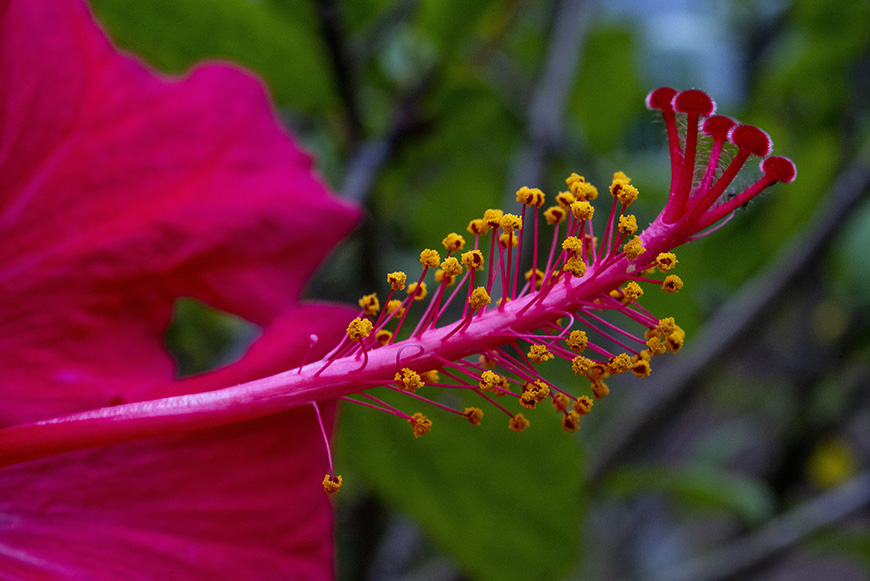
Faial Botanical Garden. Photos of Siaram.
Miradouro Monte Carneiro
If you want to have one of the best views of the island you have to go up to the Monte Carneiro viewpoint because from the top of its 267 meters of altitude you get a 360º panoramic view where you can see the entire bay of Horta, flanked by the promontory of Espalamaca (on the left) and Monte Queimado and Monte da Guia (on the right), including its marina and the area of Porto Pim, the valley of Flamengos and, of course, the island of Pico with its imposing mountain of the same name.
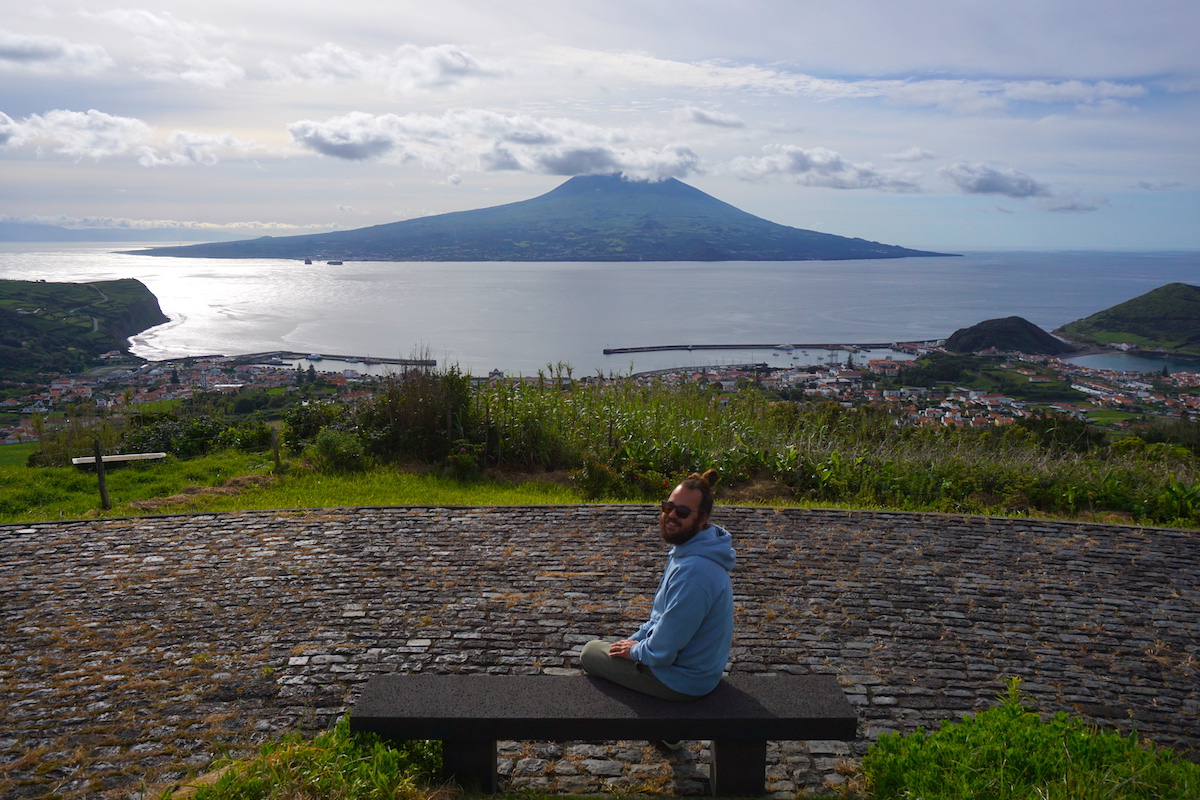
Monte Carneiro is an ancient volcanic cone and has interpretive panels explaining the main points of interest. In addition, it is worth sitting and contemplating the living postcard that makes up this city of the sea where the movement of all types of vessels is constant (from cargo and fishing vessels, passenger ferries, yachts and sailboats, maritime transport, tour operators or international regattas).
Whale watching in Faial from Horta (in a responsible way)
Different types of cetaceans live in the Azores – some resident, others on their migratory routes depending on the season – and watching them in their habitat is one of the star activities of the archipelago, being Faial one of the best places to do it. In the whale watching from Horta you can see more than twenty species of cetaceans, from sperm whales, common dolphins, spotted dolphins and gray dolphins and you can go from a boat to greet them, from a distance and with respect, of course.
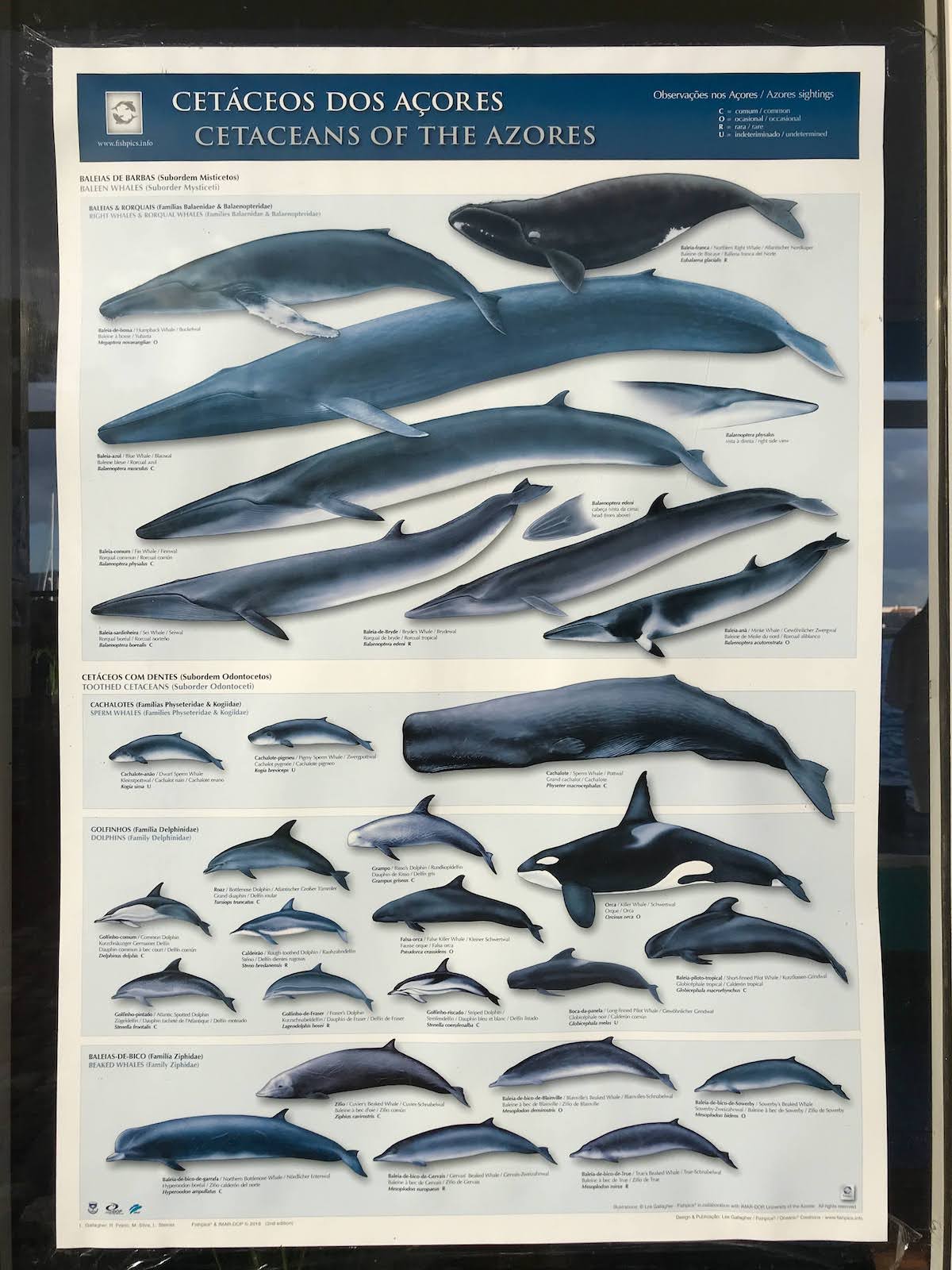
Among these species, the one you will most want to see from the boat is the beautiful sperm whale, symbol of the Azores and whose photogenic tail diving into the sea is an image that all of us who embark on a whale watching adventure aspire to. At Randomtrip we do it every time we visit the Azores and we have already been able to greet a blue whale (the largest mammal in the world), three sei whales (the third largest in the world) and several dolphins. The most important thing is to make sure that you go with a company that respects the rules of sustainability and animal protection (prudent distance from the boat to the cetaceans, etc.).

The whale watching tour from Horta lasts about 3 hours during which the boat you are on is in communication with the different lookout points that are on land and communicate if they see anything “big”. Everyone hopes to see a sperm whale during the tour but it is important that you adjust your expectations when you do this tour as you are doing something beautiful and responsible which is trying to observe an animal in its habitat and, for that reason, it is a lottery if the animal comes out to “greet” you or not.
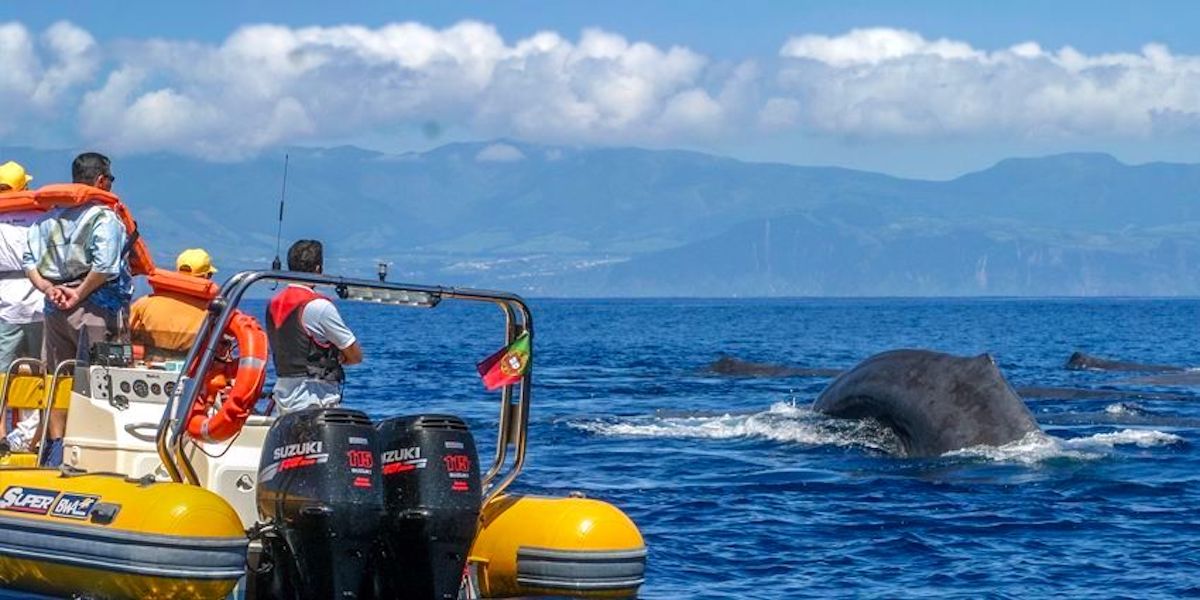
Remember that whale watching in the wild done in a respectful way must include rules such as approaching the animals with reduced and constant speed, maximum 3 boats, never less than 50 meters and never more than 15 minutes with the same animal, ethical commitment to the animals and the environment.

April and May are usually the best months for whale watching, although these Atlantic waters are attractive to whales all year round, so you can be lucky in any month you visit the archipelago.
Nossa Senhora da Conceição Viewpoint
The Miradouro de Nossa Senhora da Conceição is one of the best places to have an aerial view of Horta. It is located on the Ponta de Espalamaca, at the top of a slope, on the way to the Almoxarife beach that we will tell you about later.
In addition to the view over Horta, from here you can also see the Caldeira do Faial, the highest point in the center of the island and, on clear days, the islands of Pico, São Jorge and Graciosa.
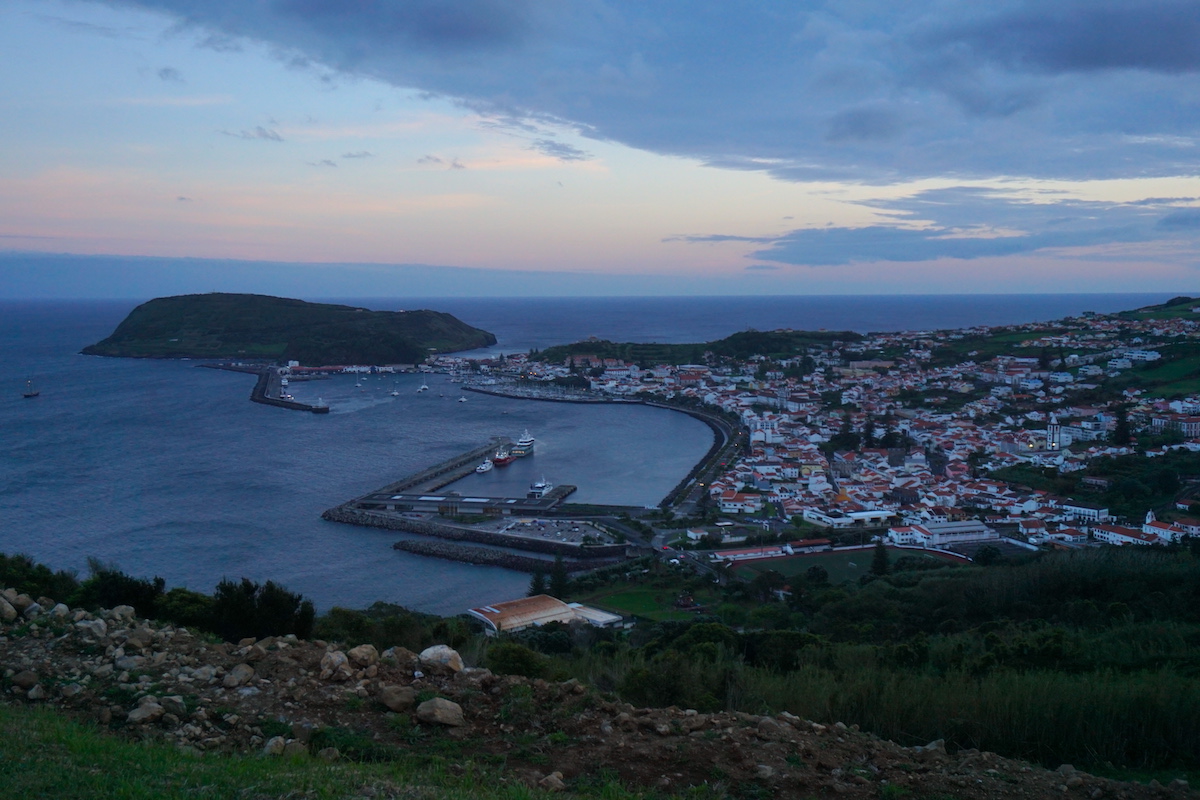
In this viewpoint there is a huge statue of the Virgin Mary and a cross 30 meters high.
Almoxarife Beach
Almoxarife is the Portuguese name for the royal official responsible for collecting taxes during the Middle Ages. And apparently, it was precisely an almofarixe who gained fame here and became famous on this beach of black sand and calm sea, between Lomba de Espalamanca and dos Frades overlooking the mountain of Pico. On the other side of the road there is a nice public garden with a kiosk.
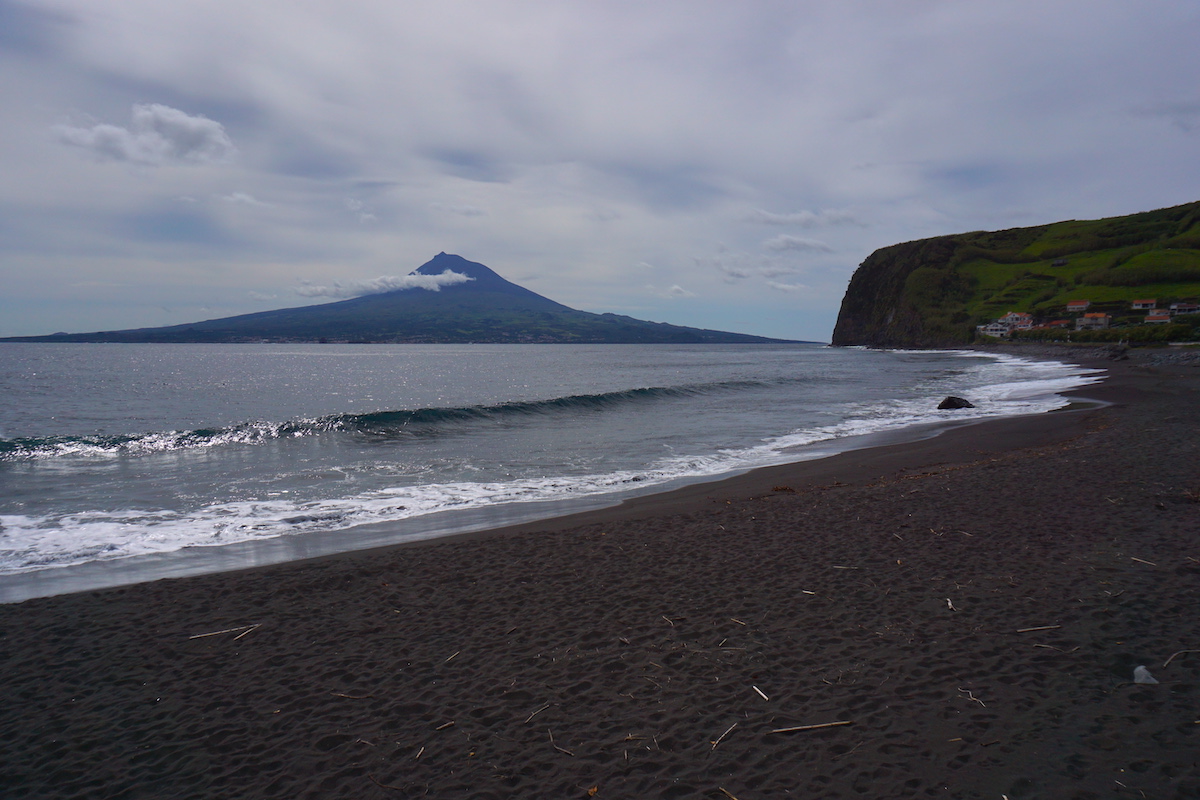
In case you get hungry here, Praya is a restaurant in the middle of Almoxarife beach overlooking the sea (and Pico, of course) and delicious dishes such as peixinhos da horta (battered beans), mini cuttlefish burgers or a typical Bacalhau à Brás.
Farol da Ribeirinha and Ribeirinha Church
We continue our route to a very marked point on the island that reminds us that we are in an area with seismic activity.
The Punta Ribeirinha lighthouse, in operation since November 1919, was severely damaged in a July 1998 earthquake that originated 5 km off the east coast of Faial. The earthquake measured 5.8 on the Richter scale and shook the islands of Faial, Pico and São Jorge for about 20 seconds. The parish of Ribeirinha suffered the most damage and many buildings, including the lighthouse, remain abandoned.
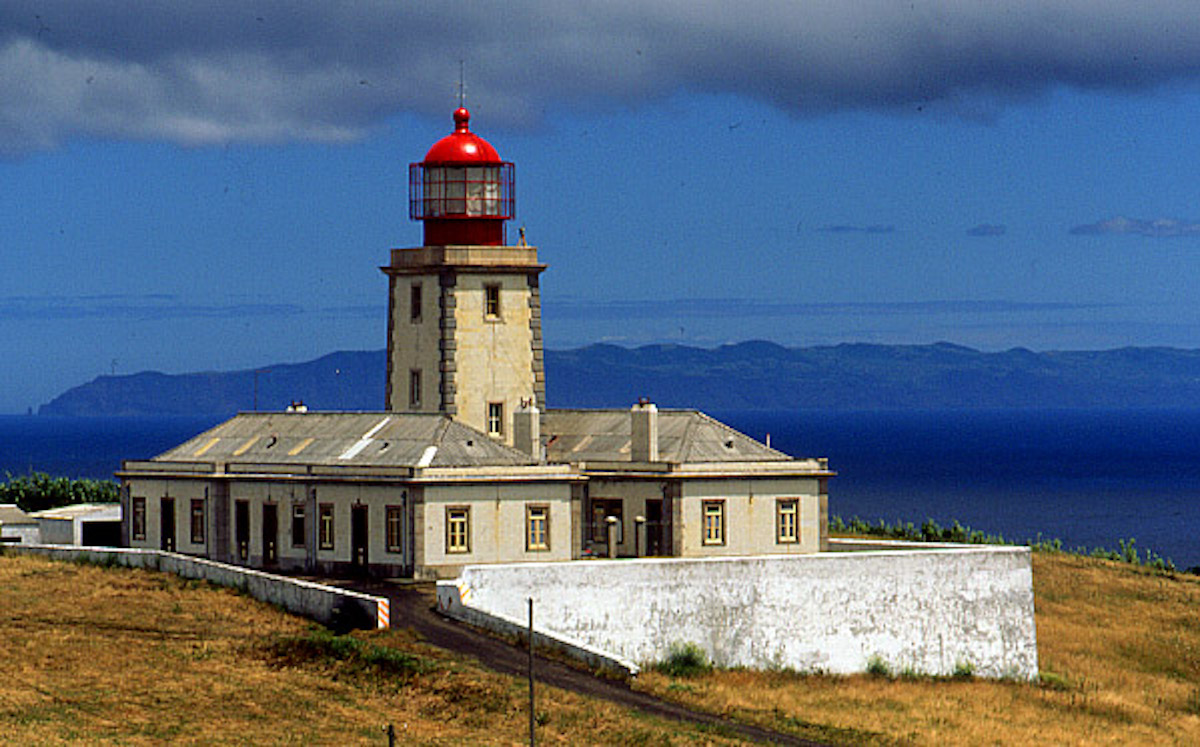
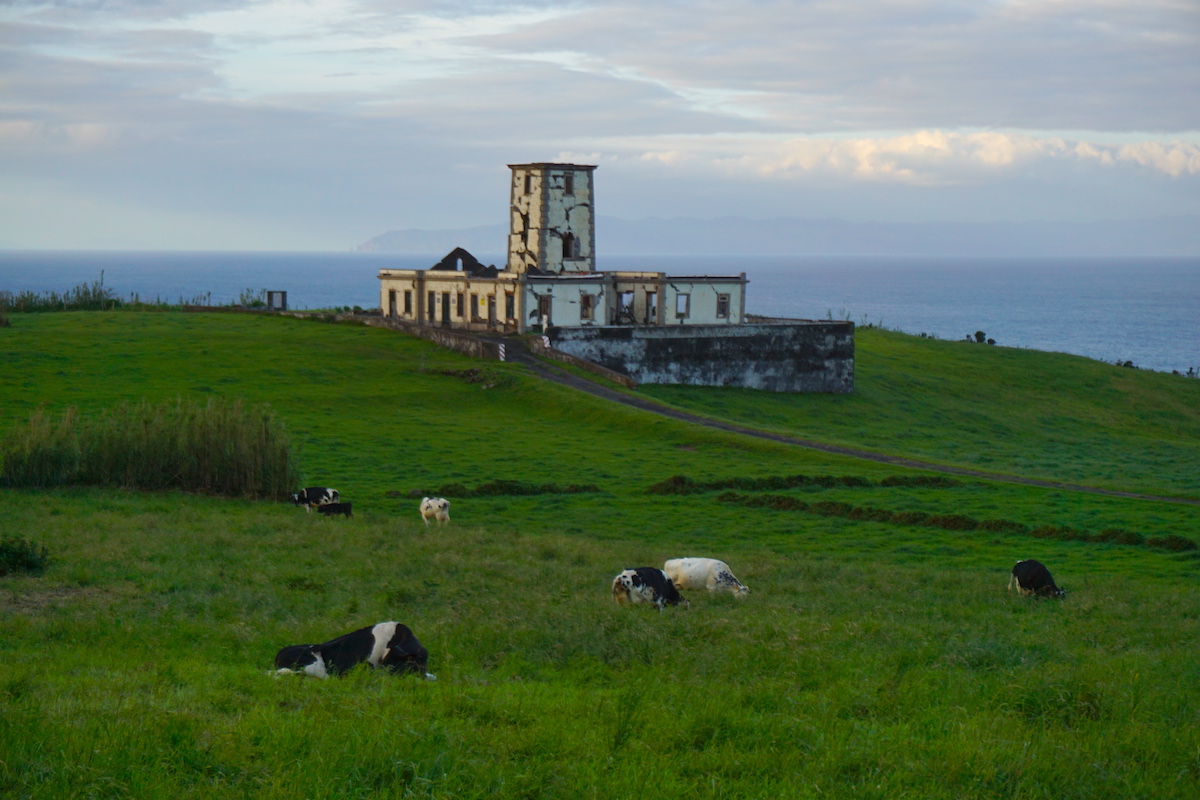
On the left, photo of the Ribeirinha Lighthouse before the 1998 earthquake (Photo from Wikipedia). On the right, the Ribeirinha lighthouse today (Photo by Randomtrip. All rights reserved).
What remains of the lighthouse can be visited since a small automated light replaced its function in 1999. It was a typical lighthouse of the era, with limestone corners, brick walls with the exterior clad in white tiles and a tower topped by a copper dome. The tower, four-sided and 20 meters high, housed accommodation for four lighthouse keepers and their families.
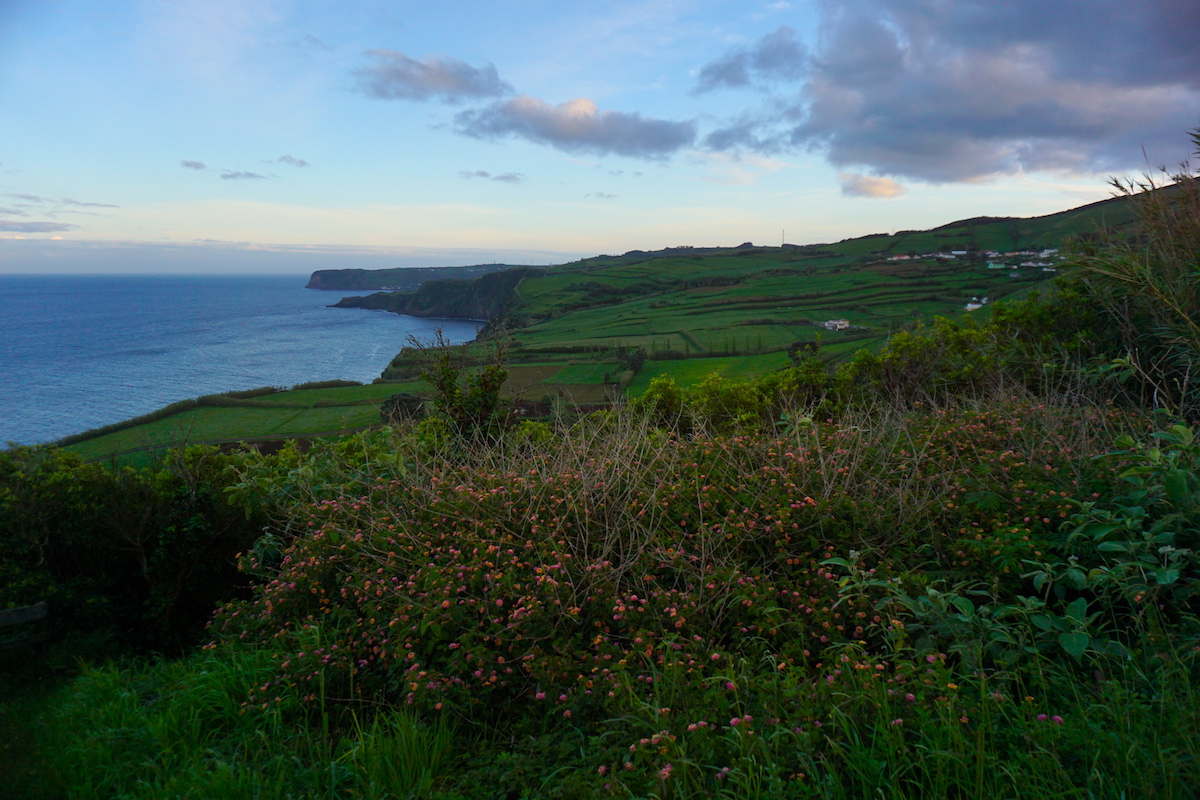
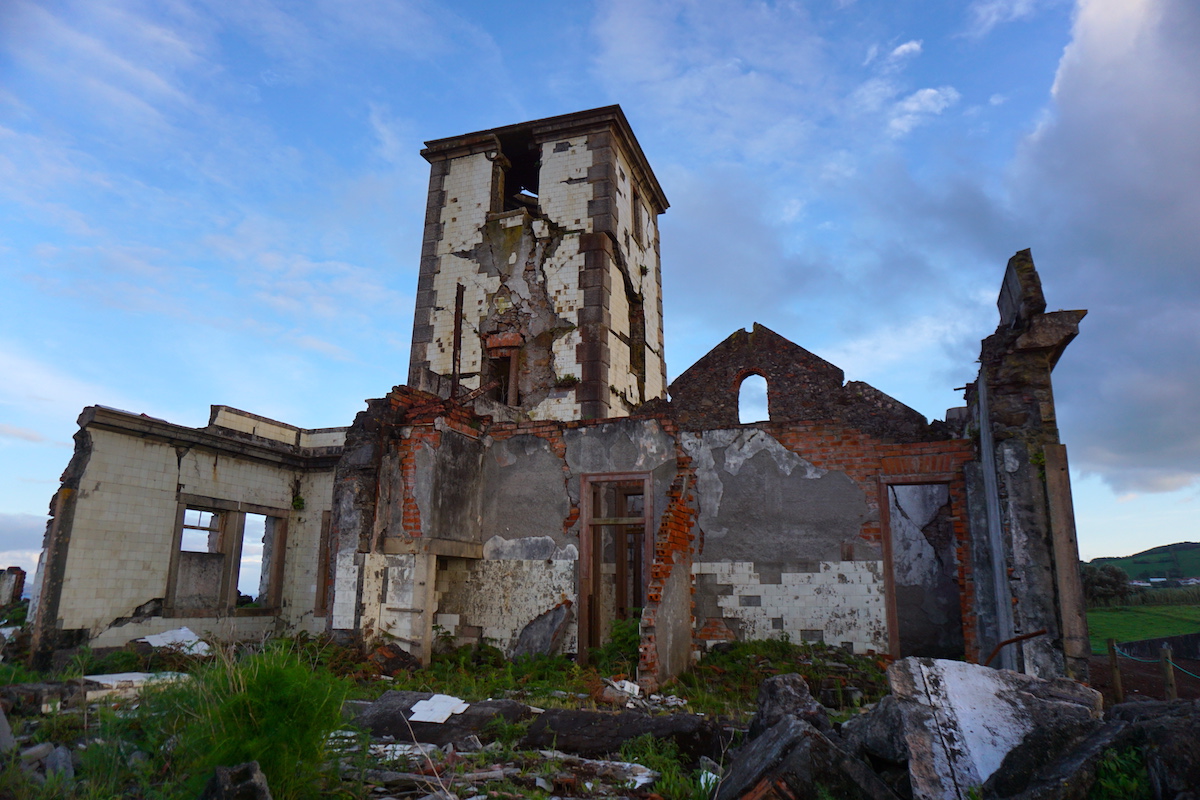

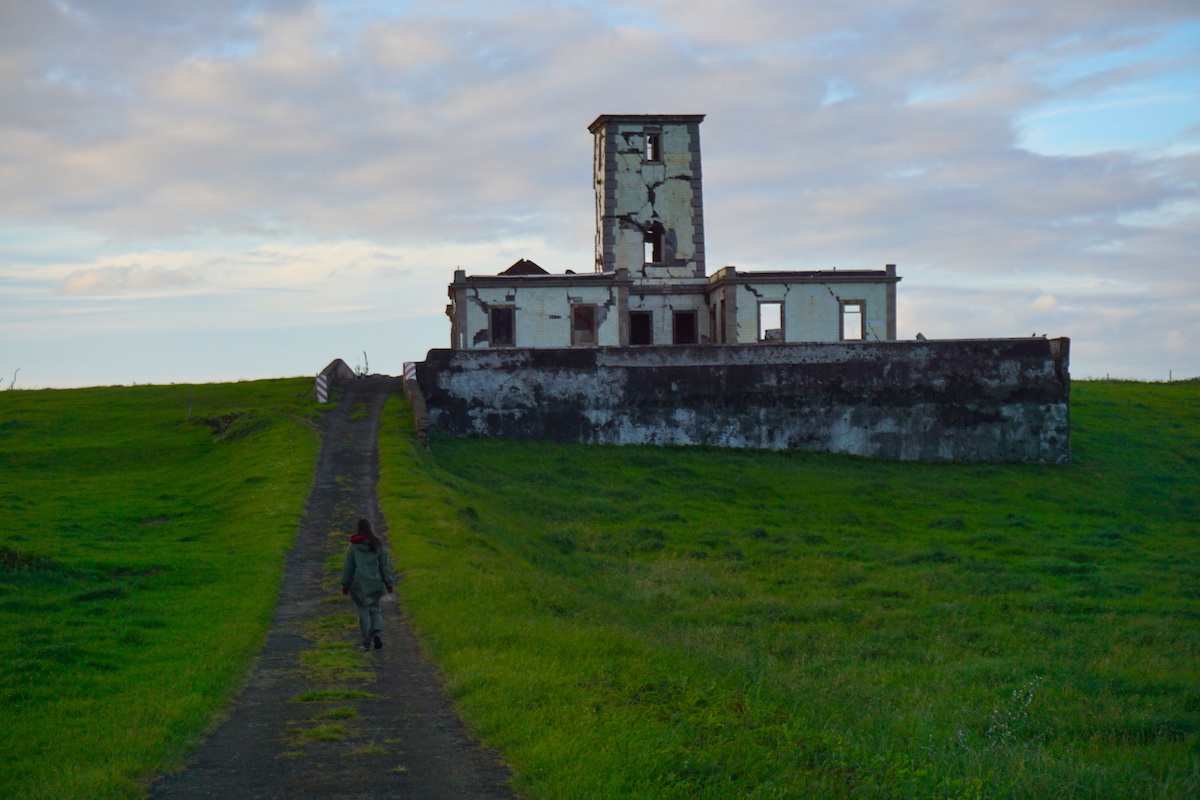
Next to the lighthouse there is a tile with a tribute to all the lighthouse keepers who passed by (not one woman among all the names).
We also approached the Igreja da Ribeirinha, a church that also suffered from the earthquake of ’98.
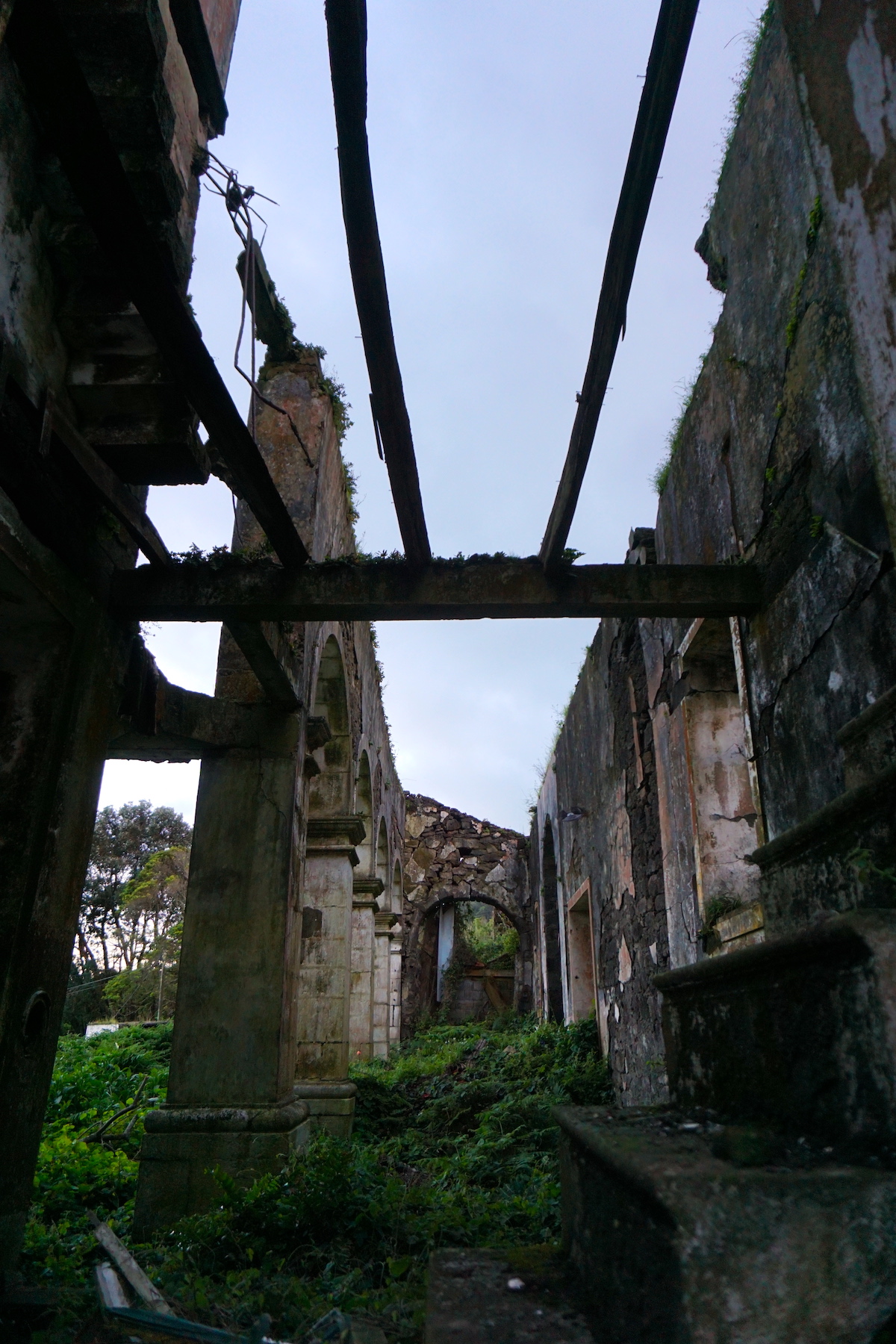
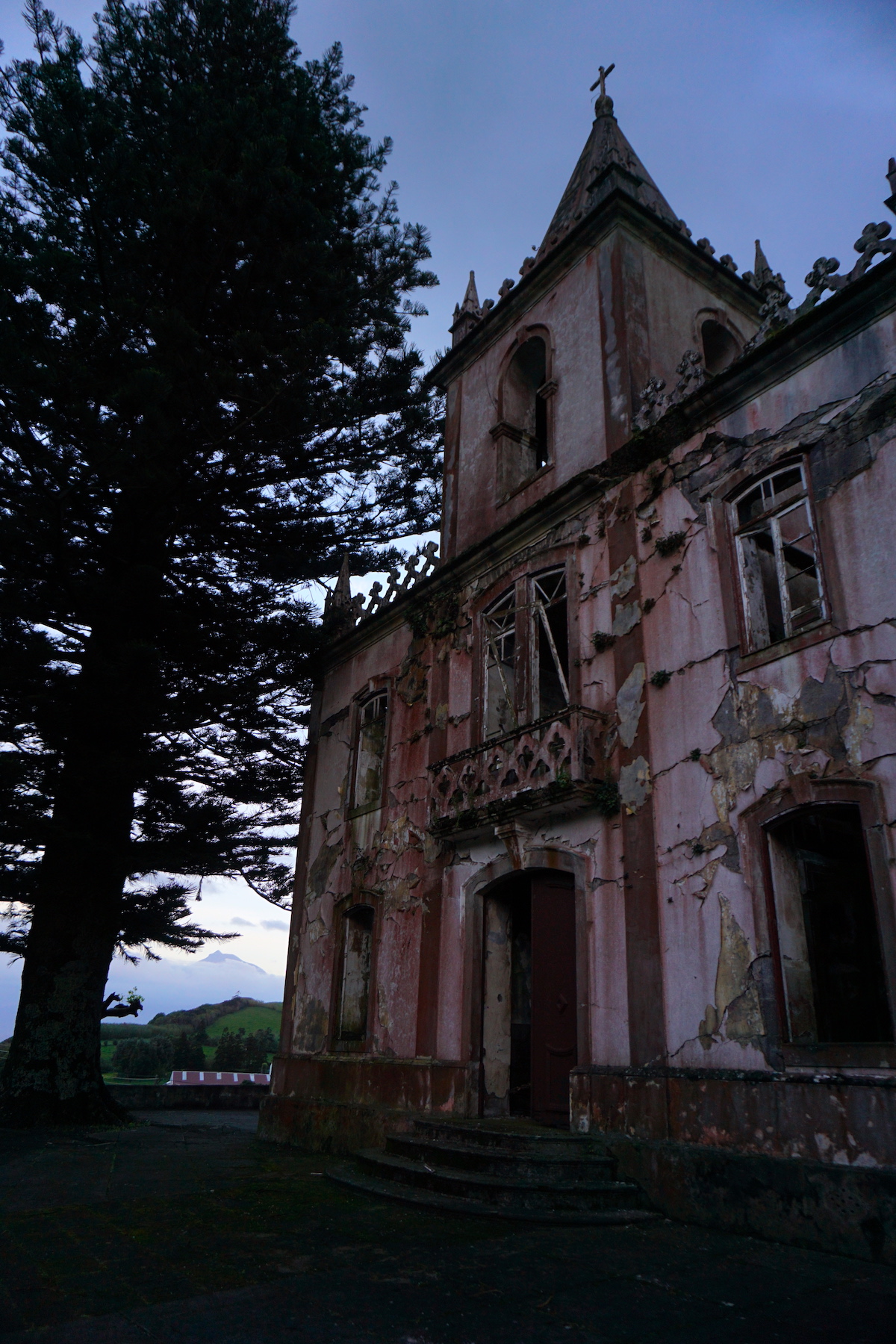
If you feel like hiking, the Caminhos Velhos (PR7 FAI) starts here, in Ribeirinha and ends at Caldeira de Faial, but be careful, it is a 17.5 km linear trail, hard, which will take you about 7h approx. More info about the trail here.
Salão: lunch, a mill and natural swimming pools
In all honesty, the main reason for coming to Salão has a name: Pasquinha. This restaurant, recommended both by Lenita from our accommodation Monte da Guia and by João from Ah! Boca Santa, we liked it so much that we went back! We recommend the tuna steak with garlic sauce and shrimp, but all the dishes are delicious and homemade.
With a full belly we find a redwood windmill that apparently operated between 1929 and 1969 to grind grain for local farmers. On your trip around the island you will see several windmills in various states of preservation that played an essential role in Faial’s important grain industry in the late 19th and 20th century.
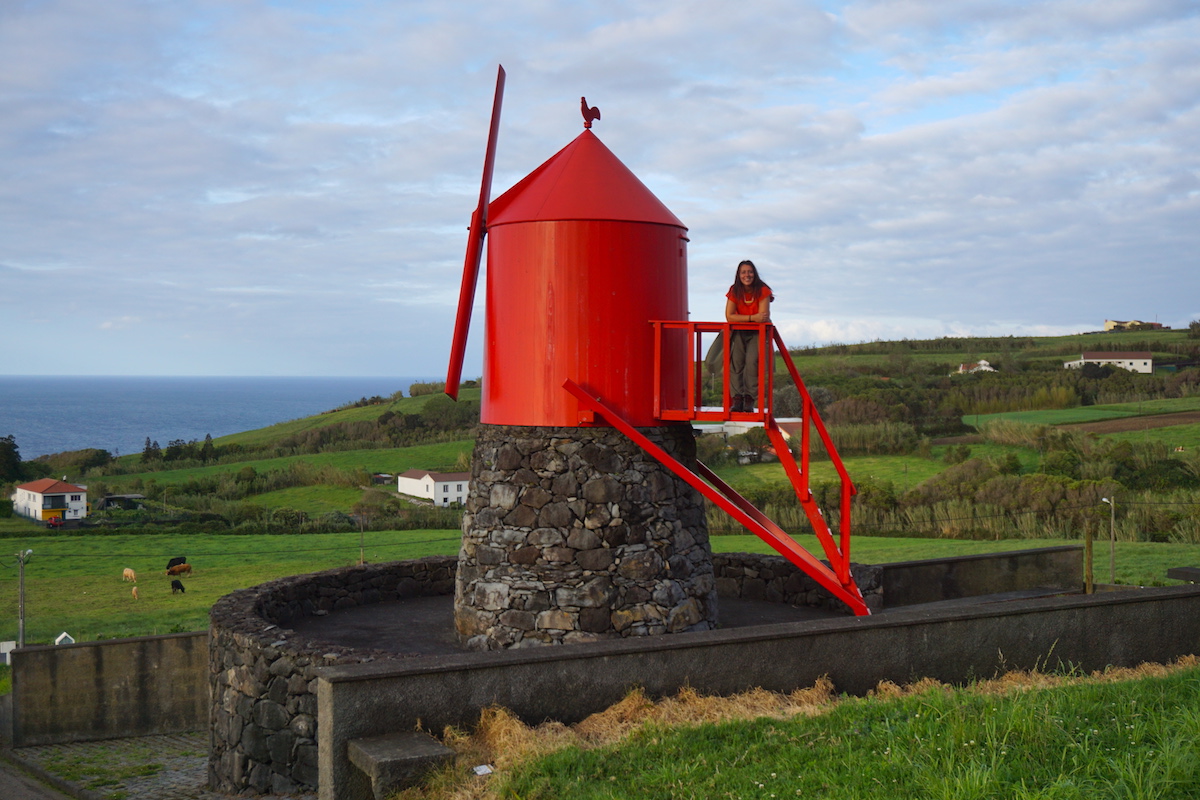
If you continue down to the pier, Porto do Salão, you will find the pleasant surprise of natural pools where you can take a dip.
That said, it is precisely here in Salão that you will find one of our favorite restaurants on the island, Pasquinha, with its delicious dishes and, for dessert, beautiful views. Don’t miss it.
Ribeira das Cabras viewpoint
This viewpoint offers a breathtaking panoramic view of the Capelo Peninsula, the youngest area of Faial (10,000 years old) which is home to about 20 volcanic cones of various sizes. On a clear day, you can see the Capelinhos Volcano, Cabeço do Canto, Cabeço Verde and Cabeço do Fogo (site of Faial’s first historical eruption in 1672) and, in addition, the new fajanas, the youngest land in Portugal born after the eruption of Capelinhos.
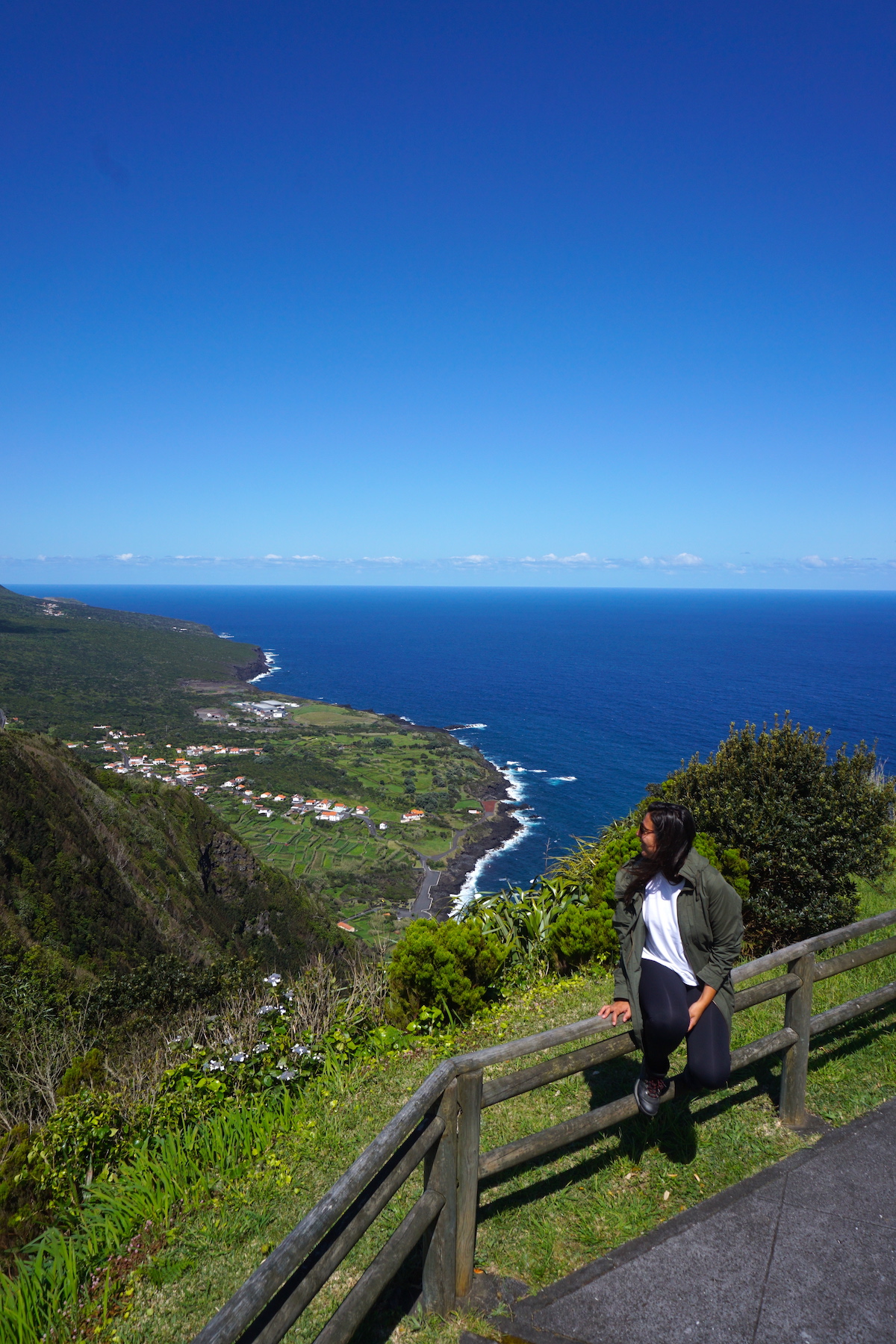
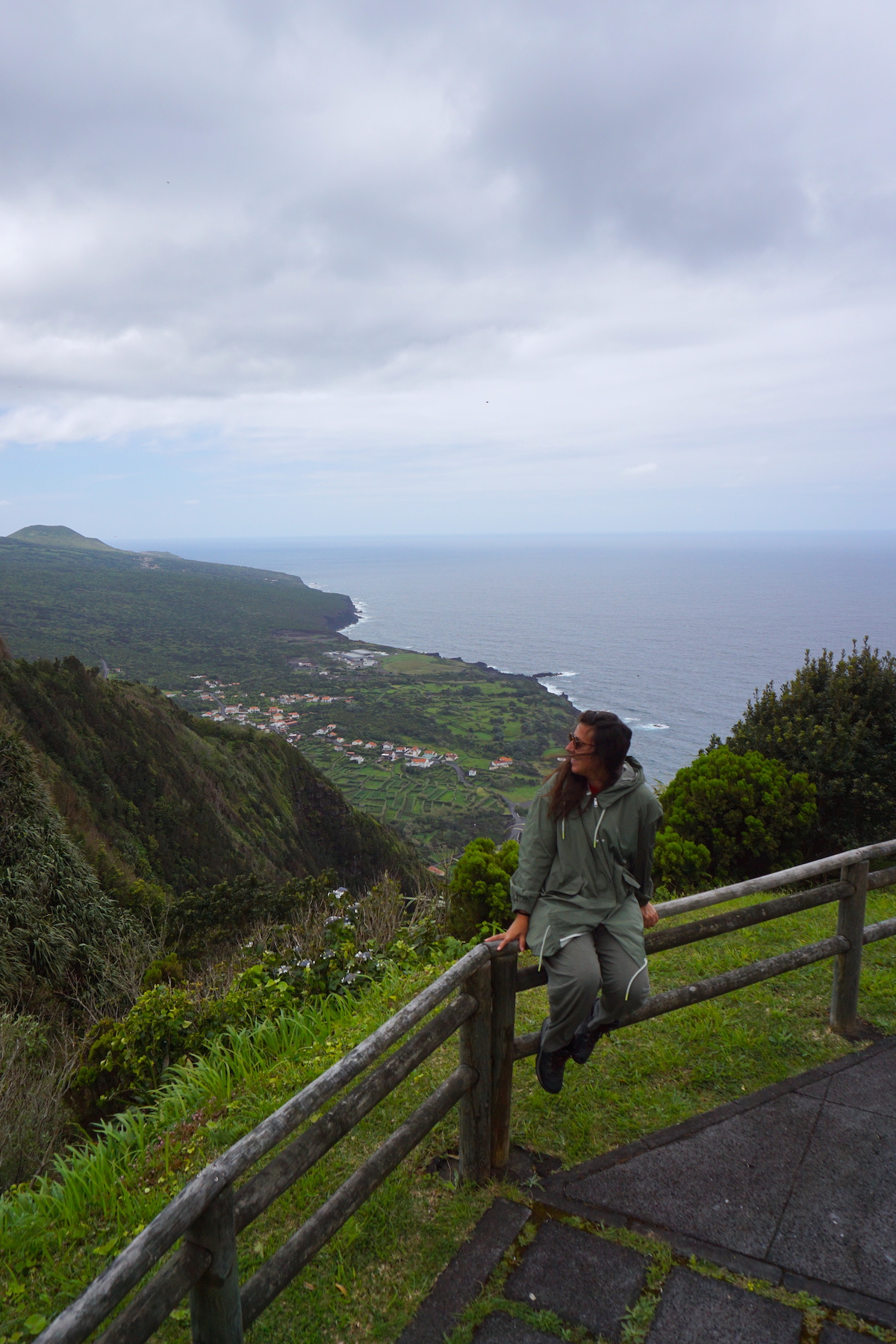
We passed by this viewpoint at two different times of the day, a few hours apart, once with a cloudy sky and then sunny. We could say that in this viewpoint we felt perfectly what it means the expression of the “four seasons in one day” with respect to the changing climate of the Azores.
Praia da Fajã and Rocha da Fajã Trail
The trail to get to Praia da Fajã, Rocha da Fajã Trail ( PRC02 FAI) was one of our favorites on the island for several reasons: the beautiful landscapes we crossed during the 5 km circular route (it took 1:45h) of a rocky, black coastline with the crisp texture of the rocks created when the lava cools rapidly in contact with the water; the reward of arriving at an incredible black sand beach, Praia da Fajã, where we would have taken a dip if the Portuguese caravels had let us; and, finally, ending up eating (a lot, we earned it!) at the delicious, homemade and highly recommended Rumar restaurant where the trail begins and ends.
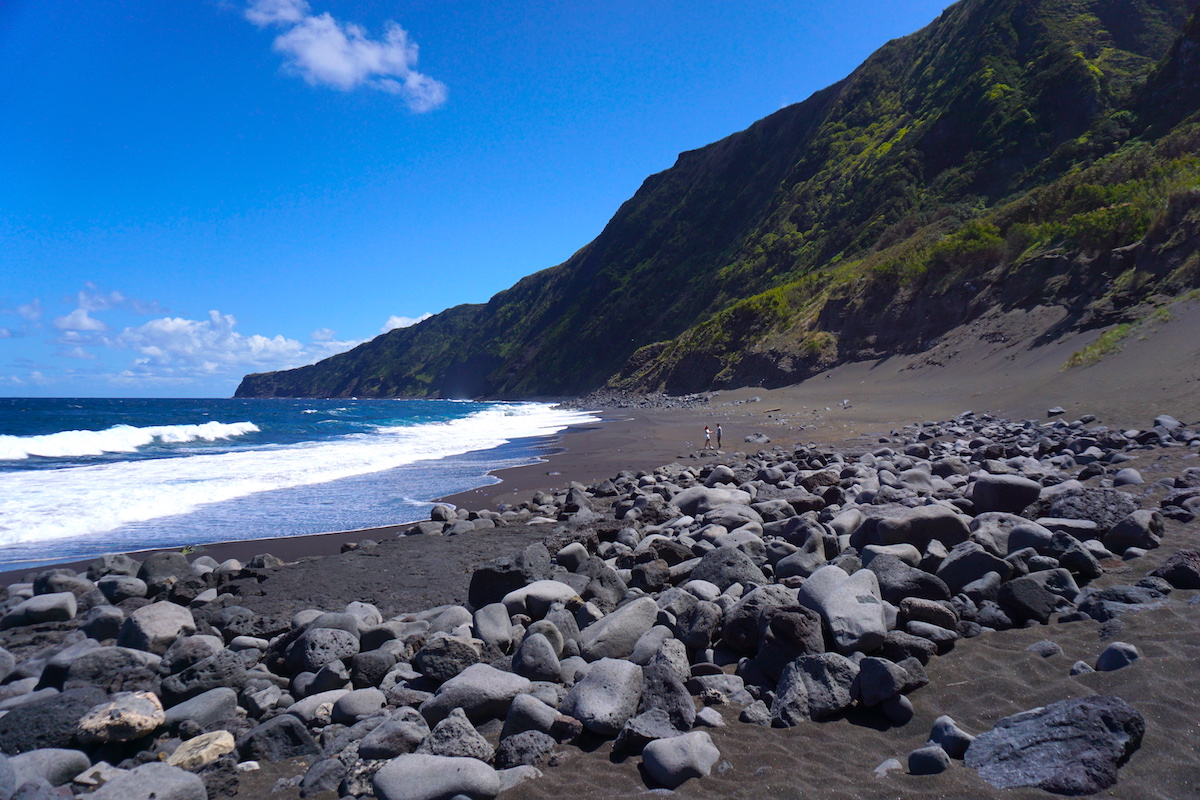
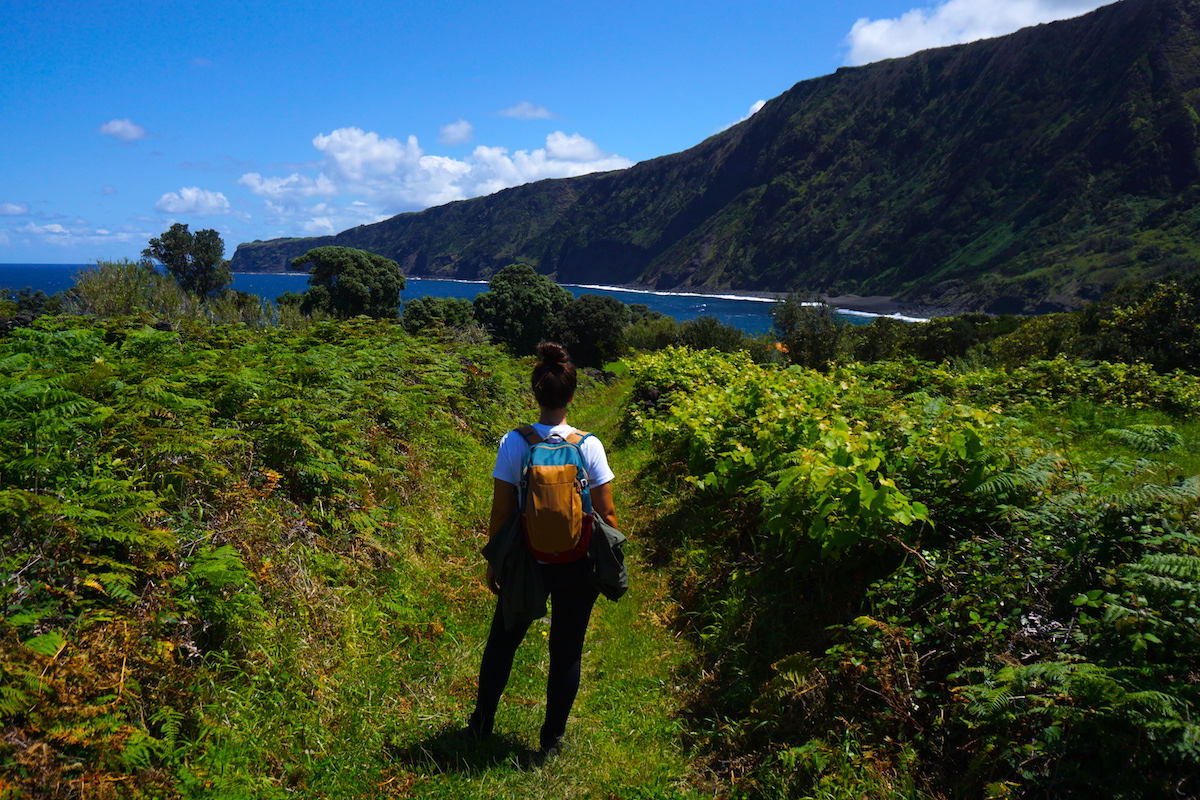
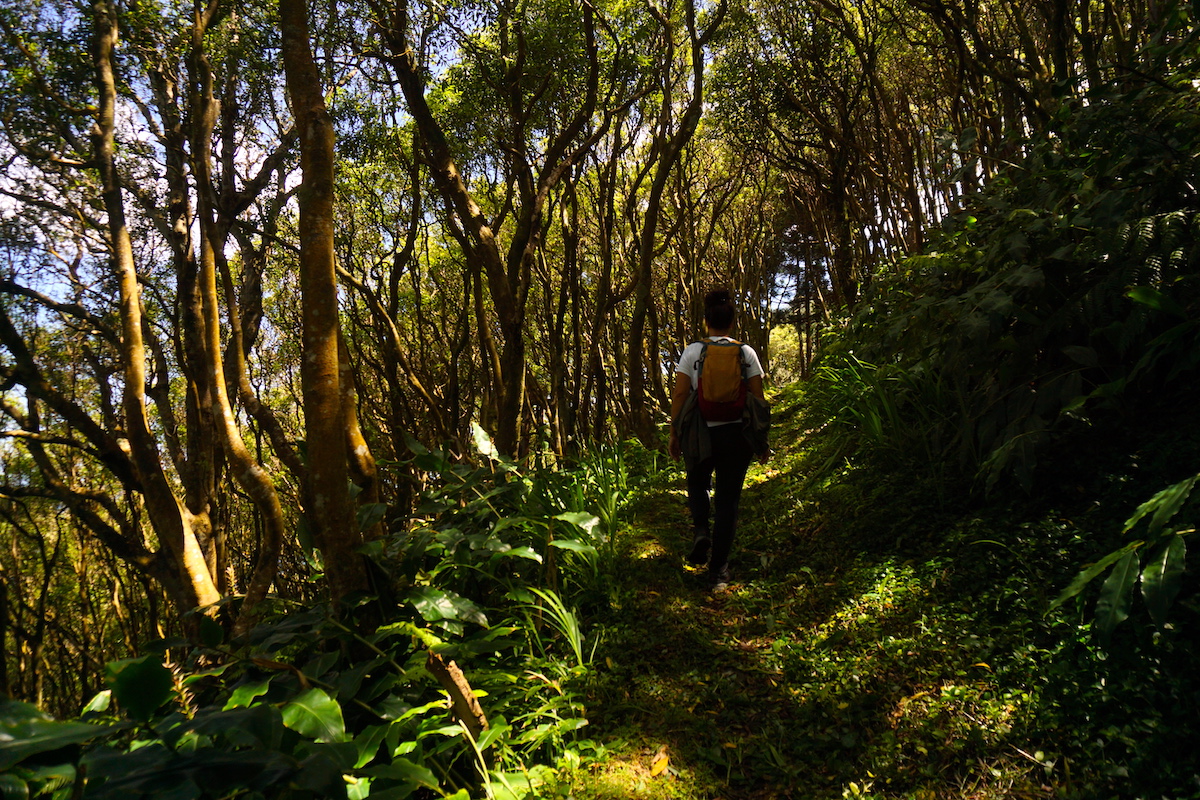
In summer, Praia da Fajã and its nearby playground are very popular with the locals.
Varadouro Natural Pools
These natural pools that were recommended to us by several local people may look a bit more constructed but actually, among solidified lava, they fit perfectly into the landscape in which they are located. In addition, the water temperature is reputed to be a few degrees higher than in other areas of the island…
Its name Varadouro comes from “Sítio de Ouro para Varar” (Golden Site for “Varar” meaning to take the boat out of the sea) but actually some mishaps in its history reflect less golden times. Until the great earthquake of 1998, which caused great damage in Faial (especially, as we have shown you, in the area of Ribeirinha), this area of Varadouro was known for its thermal baths and even had a sandy area where you could lay your towel, but the earthquake changed the course of the spring and the beach was covered with rocks. What remains, fortunately, are the beautiful natural pools, protected by the rocks, with a children’s area and even a long bench almost in the water. During the summer (from June 15 to September 15), there is lifeguard service, terrace area and changing rooms. In addition, the thermal baths at 34º may no longer exist, but the temperature of the sea water is around 22º in summer, not bad, right?
Morro de Castelo Branco
The huge and imposing rock monolith at the edge of the ocean, the Morro de Castelo Branco, was formed about 10 thousand years ago (it is associated with the central volcano of Caldeira de Faial) and forms a peninsula, being connected to the island of Faial by a strip of land. It is a true volcanic dome whose highest point is at 149 meters and was created from lava so thick that it did not flow before cooling.
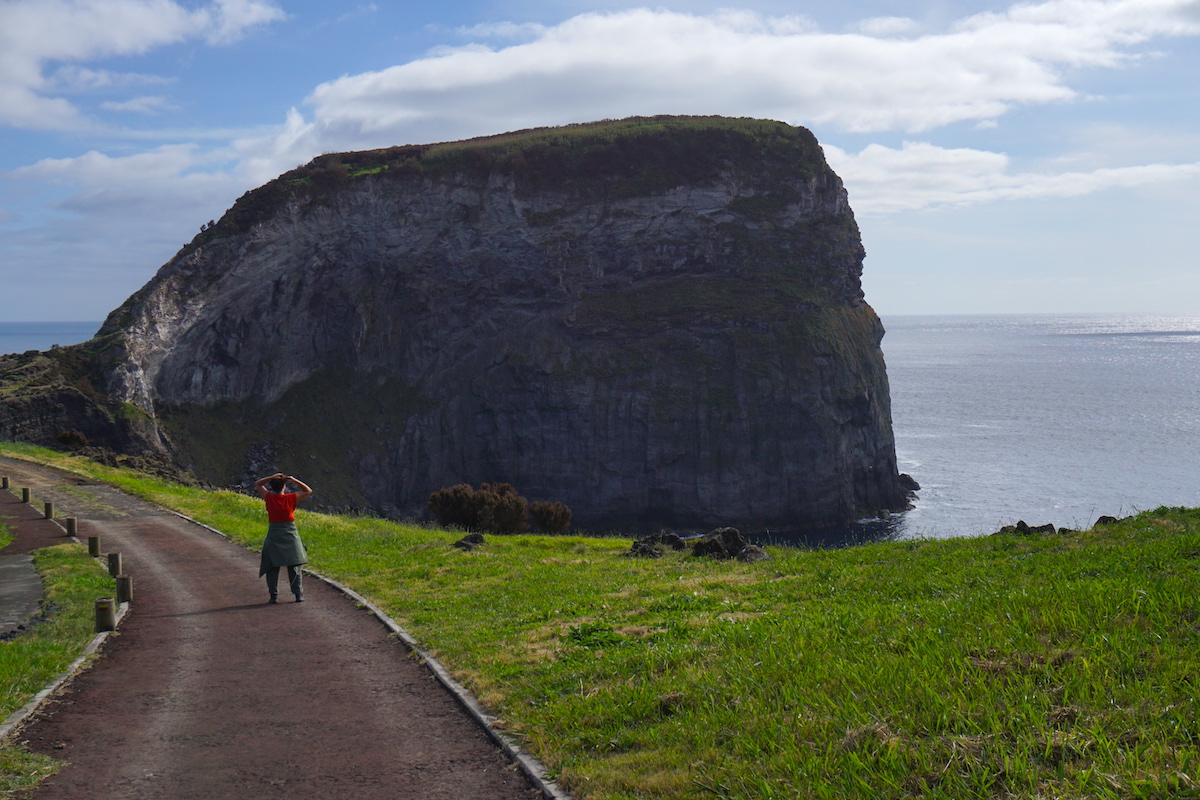
You can park here and walk along the path to the amphitheater and then up to the base of the dome. Warning: climbing is not allowed.

This hill is also special because it is an important nesting place for birds native to the Azores (protected as a Faial Nature Reserve and Azores Geosite) such as shearwaters. For this reason, this is where the original experience of nocturnal bird watching takes place, organized by the company Naturalista to listen, in the darkness of the night, to the unmistakable song of the shearwaters that seem to sing the “awa awa” of the famous refrain of the song Video Killed The Radio Star. If you like ornithology, don’t forget your binoculars before coming here.
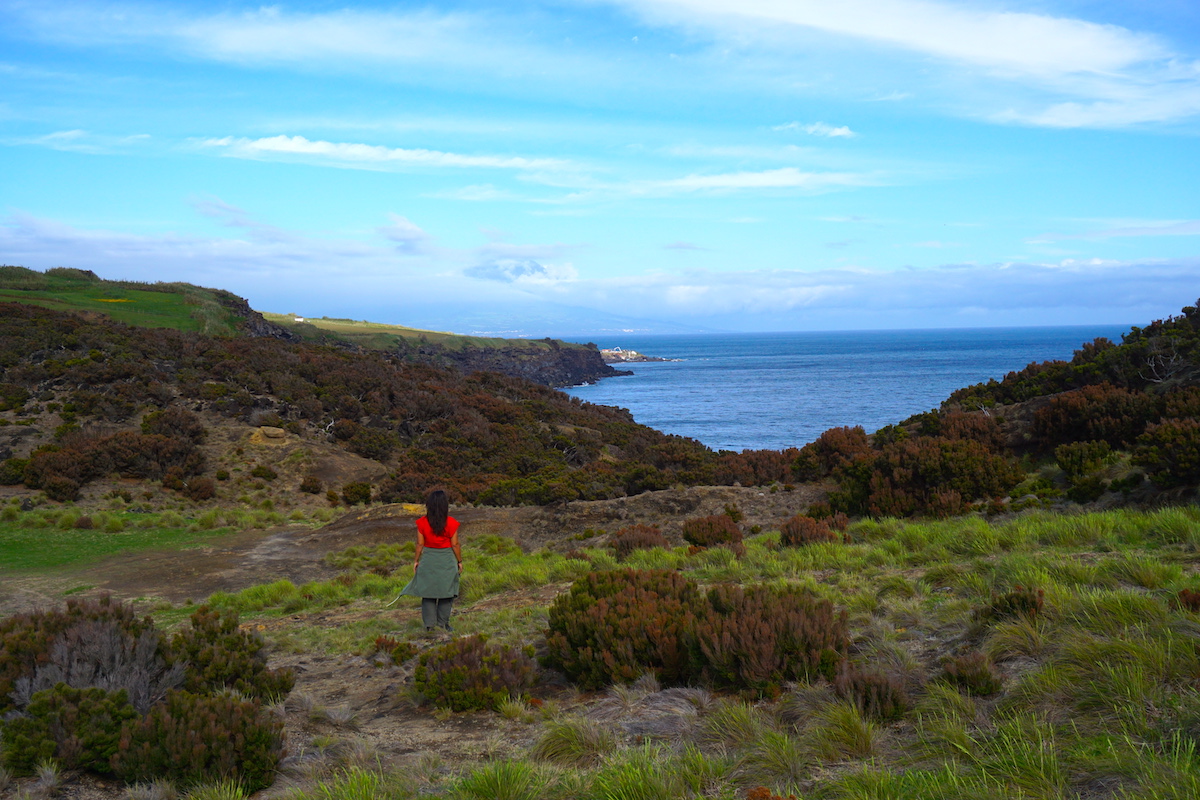
If you want to explore the hill on foot, the Morro de Castelo Branco trail (PRC5 FAI) is an easy circular trail (3.7 km, 1.5 h duration approx.) that runs through part of the protected area of Varadouro, in the Natural Park of Faial and the midpoint is the Morro de Castelo Branco. We give you more details in the section The Best Hiking Routes in Faial.
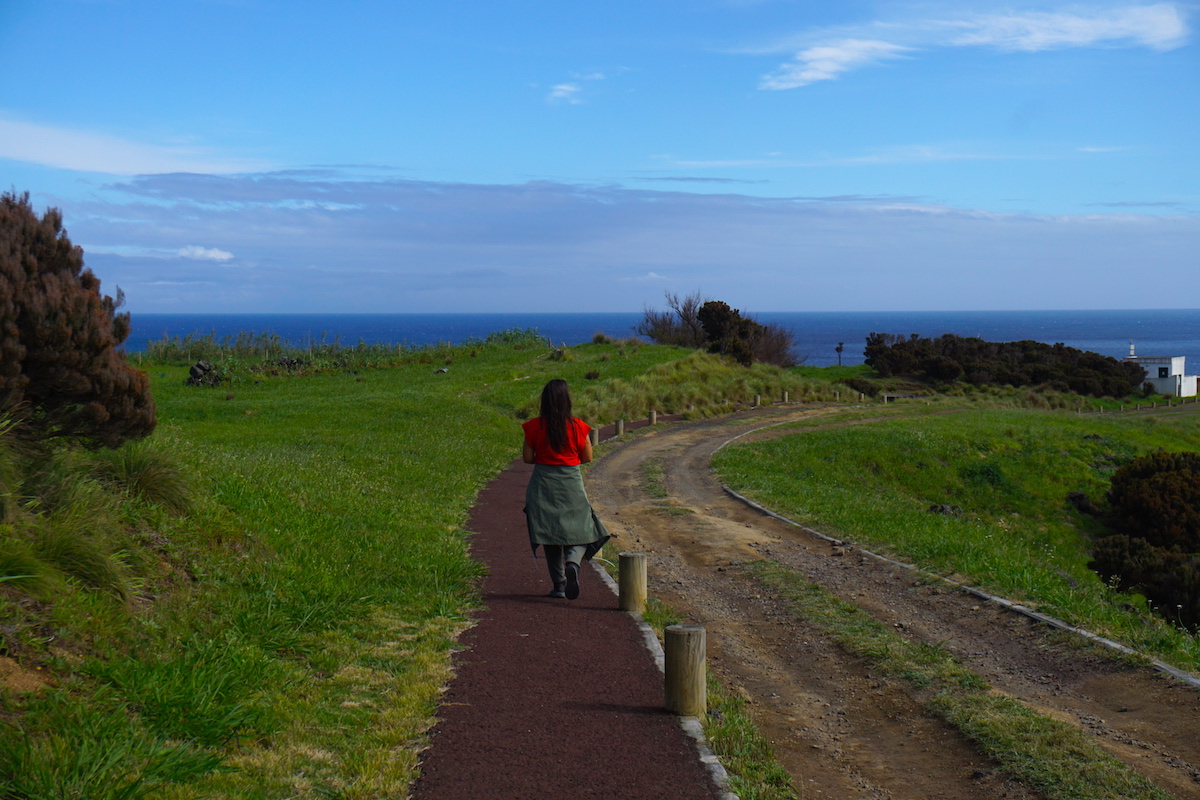
It is precisely near here that is the home of the Faial cheese to which we developed such an addiction that we always ordered it as a starter at every lunch/dinner: Queijaria o Morro. The cheese shop’s name comes precisely from Morro de Castelo Branco and beyond the outstanding amantequillado cheese, internationally famous since Wine Spectator magazine placed it in the Elite category in 2017 (and later that year, Monocle magazine) there are also delicious cured cheeses, a spicy cheese, another with paprika and even one with garlic and parsley to buy or enjoy right there. Each cheese costs around 5€ and is worth every penny. If you want to see how the cheeses are made, you can visit the factory, just behind the store, by appointment.
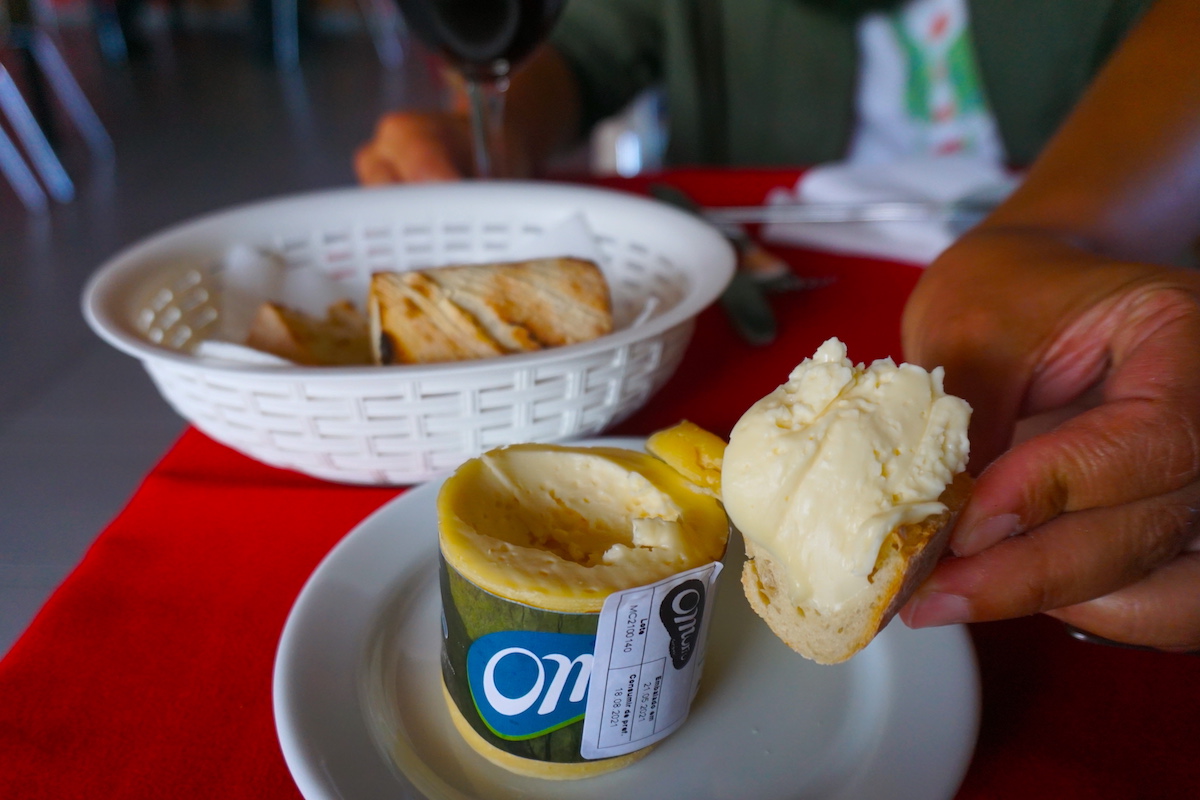
Natural pools of Castelo Branco
At 3 km (less than 10 minutes by car) from the parking of Ponta do Morro are the natural pools of Castelo Branco, pools not as beautiful as those of Varadouro of which we spoke earlier, where the tint of the blue-pool stands out more than the black-lava, with accesses in cement and two artificial pools (for children and adults) but perfect for cooling off on a hot day. It also has an artificial cement platform that is used as a solarium and picnic area.
Lajinha and Poça da Rainha Natural Pools
On the south coast of the island (Feteira), west of Monte da Guia, are these natural pools of Laginha and Poça da Rainha. Pools of transparent water, surrounded by basaltic rock, invite you to spend the whole day there. The pools also have a solarium, changing rooms and showers.
The rocks were formed when the fast flowing lava hit the Atlantic water and cooled very quickly. The cliff has beautiful caves and arches and this entire stretch of coastline is also a geosite of the Azores Geopark.
All this coastline is visible from the beautiful viewpoint of Ponta Furada, which we will talk about next.
Ponta Furada Viewpoint
This viewpoint offers a wide panoramic view of part of the coastline of the island, which extends from Monte da Guia to the outskirts of the parish of Castelo Branco. Along the coast you can see very unique rock formations, works of art of nature, formed with the force of the sea, creating caves and rocky arches such as the arch that gives it its name.
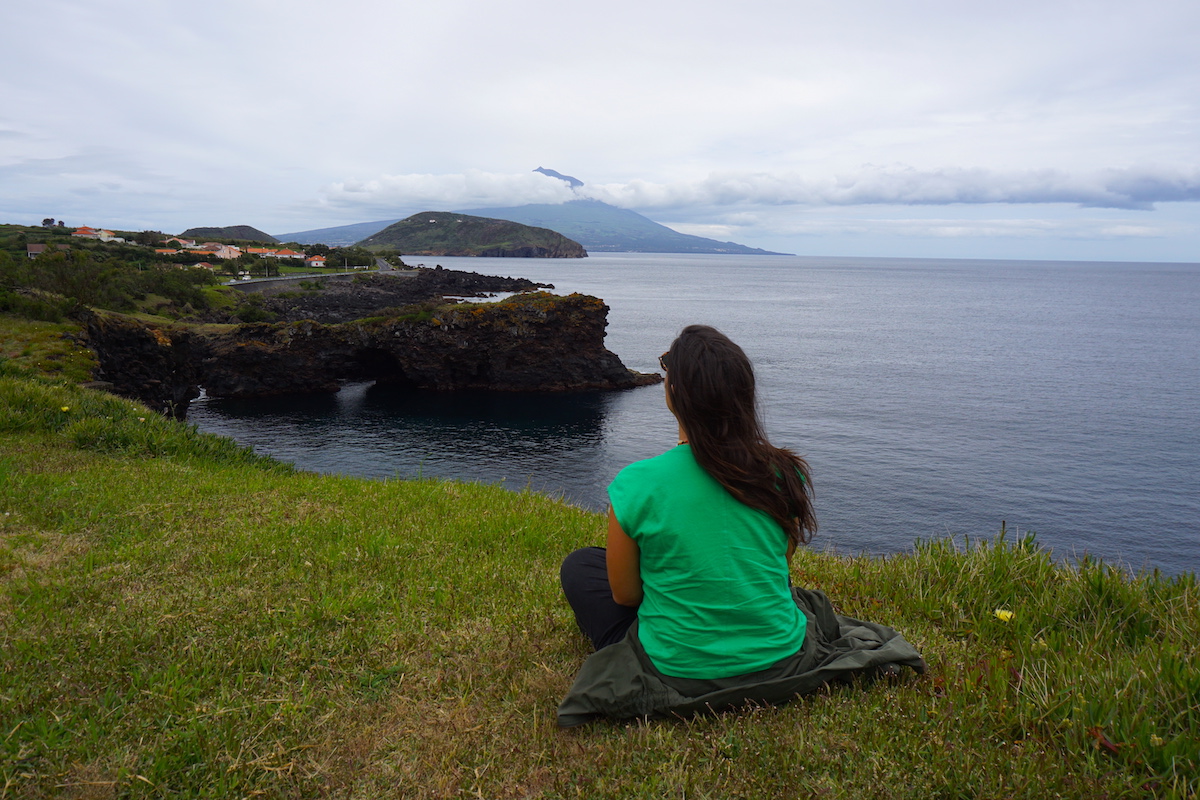
This photogenic volcanic arch could not have a more descriptive name: Ponta Furada means, in Portuguese, Punta Agujereada.
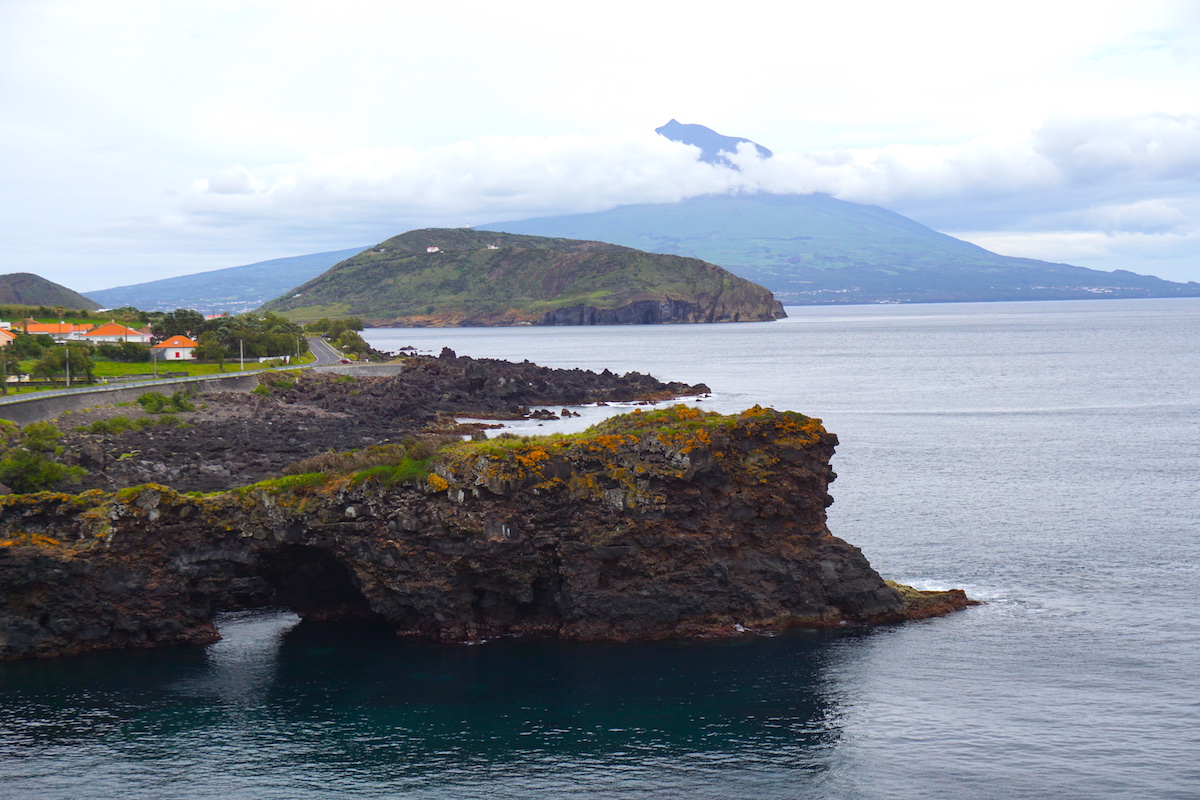
It is precisely here, on the south coast of the island, where one of the most beautiful and curious accommodations of Faial is located: Azul Singular (from 70€/night, minimum 2 nights) by architect Albino Pinho, has 8 yurts and wooden cabins as glamping among palm trees with private bathroom, heating and all luxury of details.
Get inspired with Instagram stories from our trip to Faial.
If you want to get inspired by our live adventures, we have saved on our Randomtrip_Blog Instagram (do you already follow us?), in highlights, a selection of what we did during the days we spent in Faial. If you click on these links you will be able to see the videos we recorded in several of the spots we recommend in this guide. Are you curious?
The best hiking trails in Faial
It was in Faial that we promised our friend Tiago to do, at least, one trail in each of the 9 Azorean islands in our 2 month trip through the archipelago and the truth is that we ended up doing several of them.
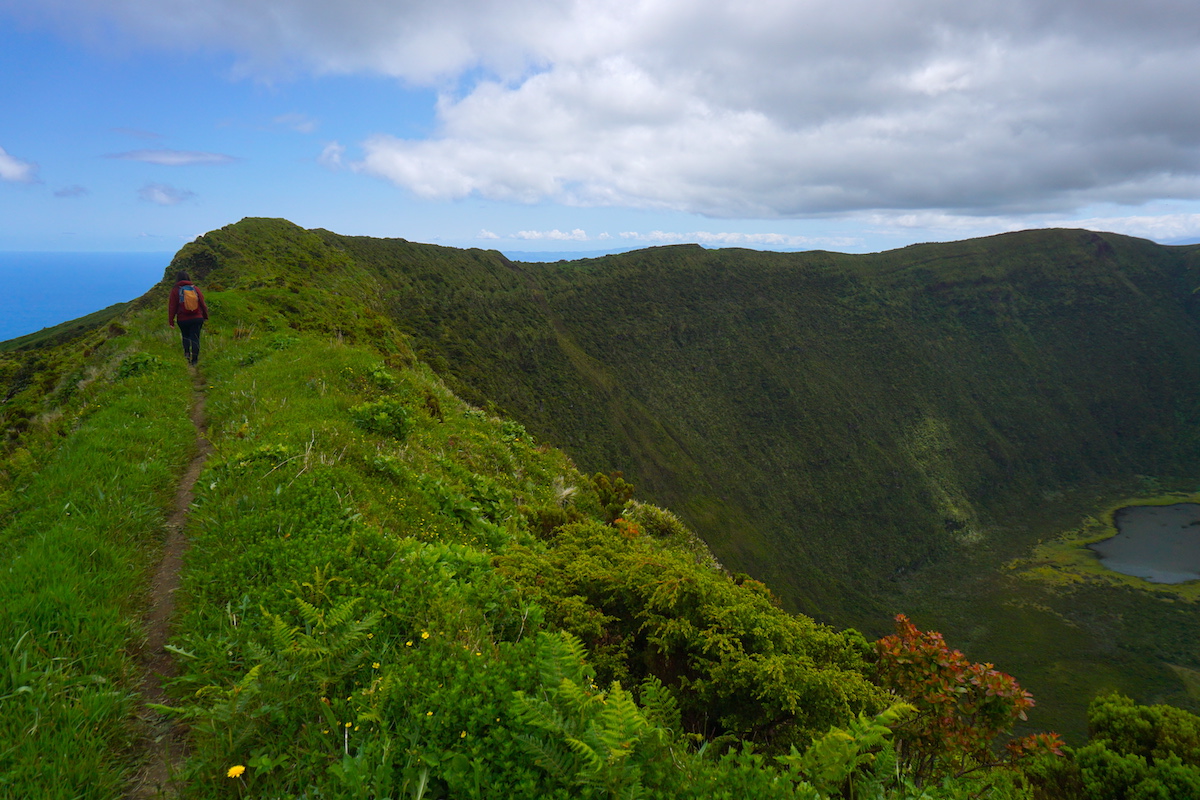
- Caldeira de Faial: You can do the trail along the perimeter of the caldera from above (free and easy) or go down into the interior of the caldera (guided and difficult):
- To go around the Caldeira de Faial, you can do it on your own. It is a circular trail, easy, 8 km and 2:30h long with stops for photos and contemplation. It starts at the parking lot, you cross the small tunnel to enjoy the first views of the Caldeira and the trail begins climbing the stairs to a small chapel. During the trail, you will see endemic plants and incredible views of the crater. Be careful, halfway along the trail forks: on the right is the 19.3 km Ten Volcanoes Trail so keep to the left and follow the crater rim.
- To go down to Caldera, you have to go with a guide and permit, making a reservation in advance. We were recommended Endemic Azores (65€/person). It is a difficult trail as going down the 400 meters into the caldera (and back up again) requires good physical preparation. The trail is narrow and steep and you have to zigzag down the hillside. In some areas you have to throw your hands to continue. There is also the danger of slipping: being considered a wet habitat, it is common to find mud and, therefore, to be able to slip and there is even a flooded area at the bottom of the Caldera.
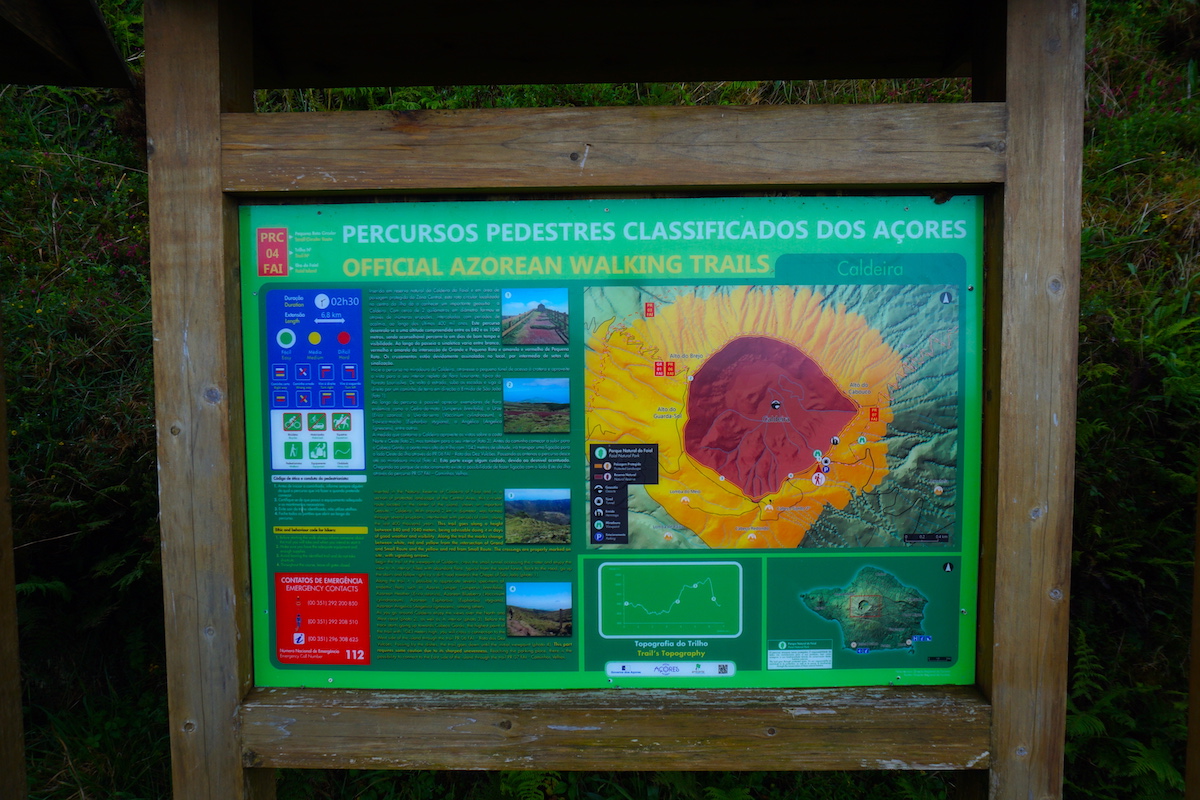
- Cabeço do Canto (PRC01FAI): circular trail about 5 km round trip (2.6 km one way), of medium difficulty, which takes about 2 hours to complete to reach the Capelinhos Volcano on foot. The trail runs through areas of great volcanic interest, such as the volcanic mountain range of the Capelo Peninsula, a geosite with about 20 volcanic cones, from Cabeço dos Trinta to Capelinhos. Start at the top of Cabeço Verde (where you can park), then to Furna Ruim (literally “bad cave”), a 55-meter deep lava pit, and continue to Algar do Caldeirão, which you must go around to the right. Continue through the laurel forest to Cabeço do Canto. This viewpoint overlooking the Capelinhos volcano is the midpoint of the trail. Finally, turn around to return to the starting point or, if you are up for it, to continue along a section of the 10 Volcanoes Trail to finish at the parking lot of the Capelinhos Volcano Interpretation Center, approximately 1.5 km further. More info in this link and in this official pdf
- Rocha da Fajã (PRC02 FAI): circular trail of 5km (it takes 1:45h) with beautiful scenery and the reward of bathing in a beautiful black sand beach (Praia da Fajã) if the Portuguese caravels allow it and finish eating at the restaurant Rumar which is where the trail begins and ends.
- Levadas Trail (PR03 FAI): linear trail of 7.6 km, easy, it will take you 2:30h approx. and you will walk through one of the areas with more biodiversity of fauna and flora, typical of the ancestral laurel forest. If you make a detour, you can also go through the Caldeirão do Cabeço dos Trinta, which you will reach by going through a long lava tunnel (use your cell phone flashlight) full of vegetation. Taking into account that it is a linear trail, it would be ideal to hire a cab service to avoid making the way back (which is the same) and leave you at the point where you parked your car.
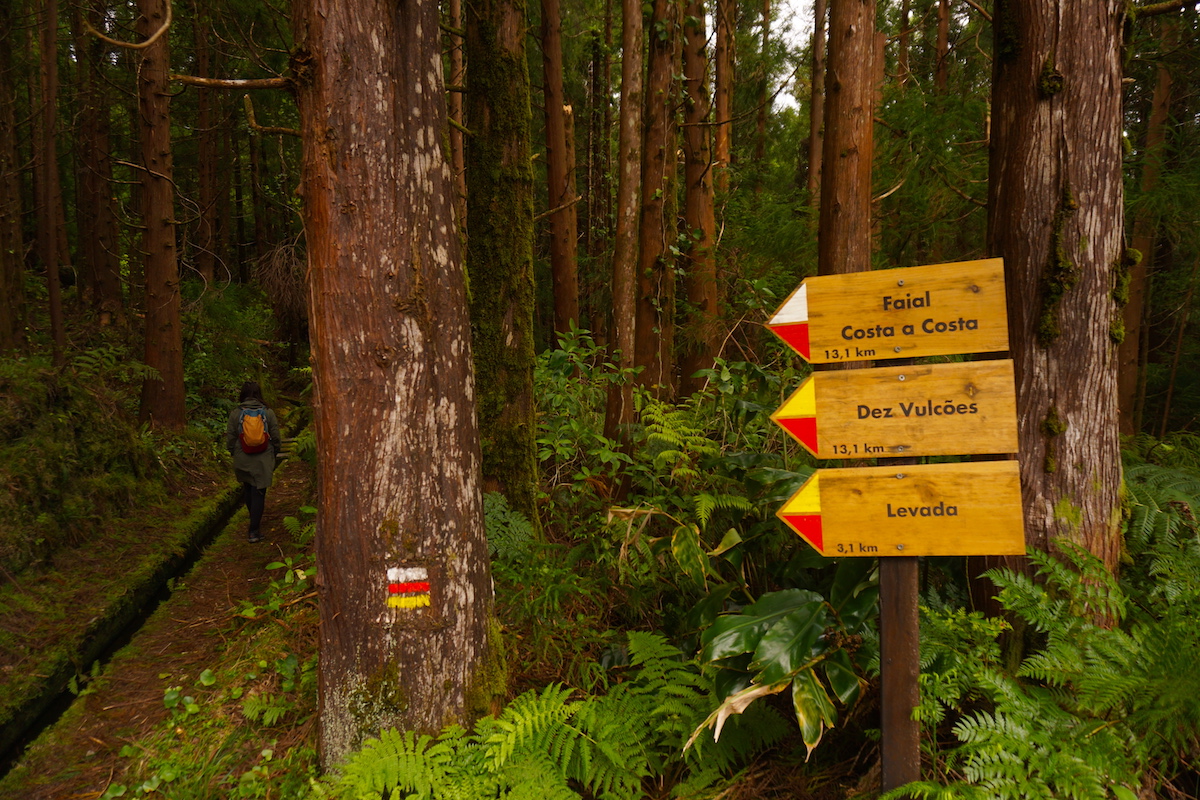
- Ten Volcanoes Trail (PR06 FAI). This trail crosses the Caldeira Natural Reserve and ends at the Capelinhos Volcano. It is a hard and linear trail, 19.3 km long, which takes about 7 hours to cover in one direction, recommended for Randomtrippers with good physical preparation. The reward: you will contemplate the main volcanoes of the island. More info in this pdf.
- If you don’t want to do the whole Ten Volcanoes Trail but you want to do the last 7 km, you should know that this last part is one of the most diversified, but also one of the most physically demanding.
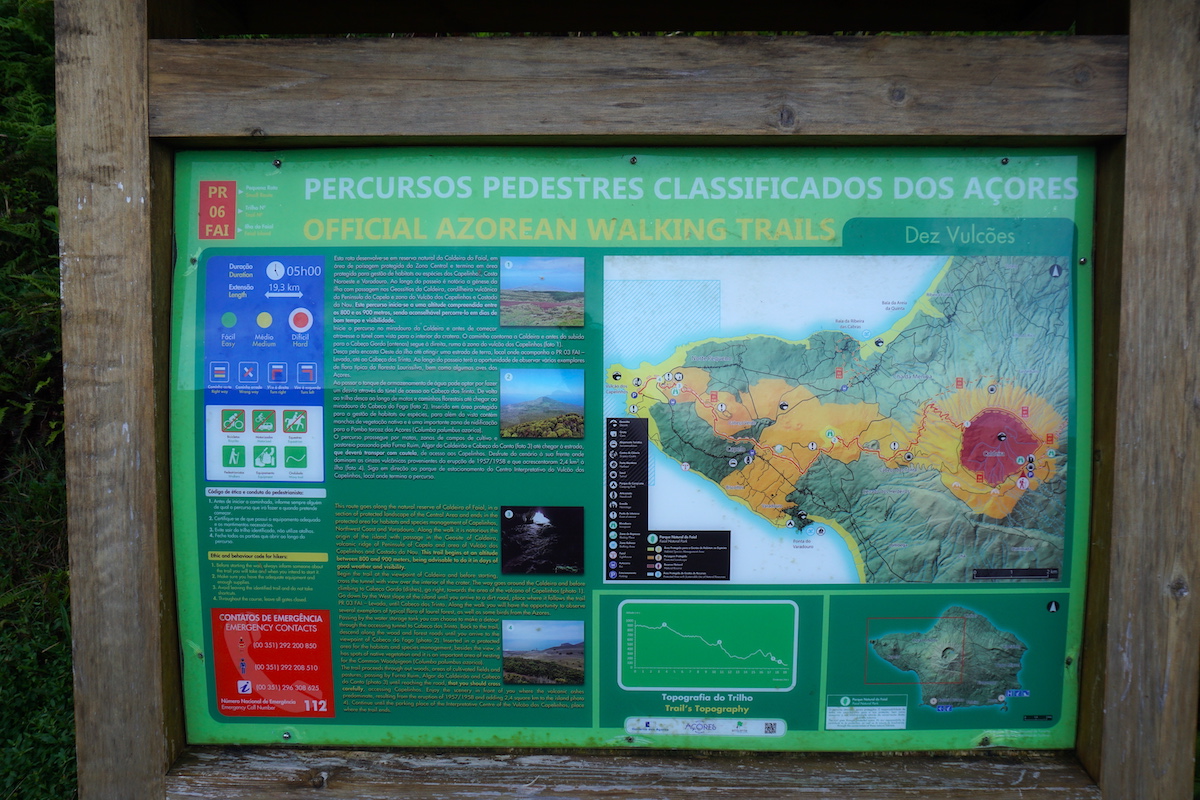
- Entre Montes (PRC08 FAI): easy circular trail of 3.4 km, which takes about 1:30 h and links all the sites of the Monte da Guia geosite. The route runs between Monte da Guia and Monte Queimado, both with great historical importance in Faial since its strategic location was fundamental for the development of telecommunications between Europe and the United States, where in 1893 the first submarine telegraph cable was installed and operated until 1969, key in periods such as the Great World Wars. It is very common to find local people training on this route. Park the car at Porto Pim beach and start on the paved path at the back of the Porto Pim Whaling Factory heading west to the top of Monte da Guia and the Chapel of Nossa Senhora de Guia. Follow the trail markers to descend to the south side of the bay, passing the Porto Pim Aquarium, the Dabney House and the Porto Pim Whaling Factory. Continue along the beach, along Rua da Rosa and finally, climb to the top of Mount Queimado and return to the car at the Porto Pim Beach parking lot.
- Morro de Castelo Branco (PRC5 FAI): easy circular trail of 3.7 km (1:30h approx.) that runs through part of the protected area of Varadouro, in the Natural Park of Faial and the midpoint is the Morro de Castelo Branco. It starts on the main road, in the village of Lombega, next to the bus stop and then you have to follow the dirt road next to a stream to the coast. Turn south and walk towards the Morro de Castelo Branco, easily visible in the distance. Then turn right, always following the signs and walk to the monolith. After exploring the Castelo Branco area, go back, turn left on a side road, which returns to the main road and follow that direction north and back to the starting point. By the way, about 7 km from the trailhead is the Centro de Artesanato do Capelo, so you can visit before or after the trail.
- Caminhos Velhos Trail (PR07 FAI): hard and linear trail of 17.5 km in which it will take you approximately 7 hours one way. This trail starts in Ribeirinha and ends in Caldeira de Faial. More info about the trail here.
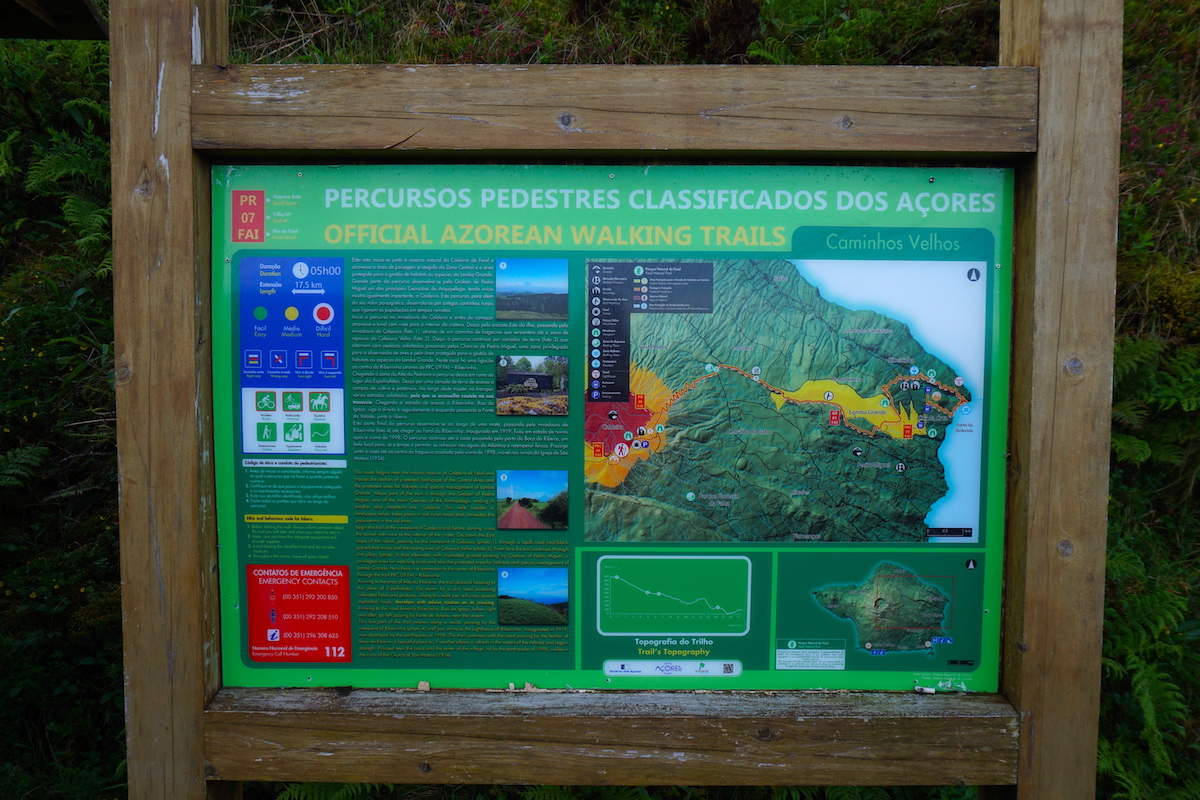
- Faial Coast to Coast Trail (GR01 FAI). This trial is the combination of the two previous trails (Caminhos Velhos and Ten Volcanoes) that goes from the east coast of Faial to the west coast for 19.3 km. It is about 36 km round trip and will take you about 12 hours to complete.
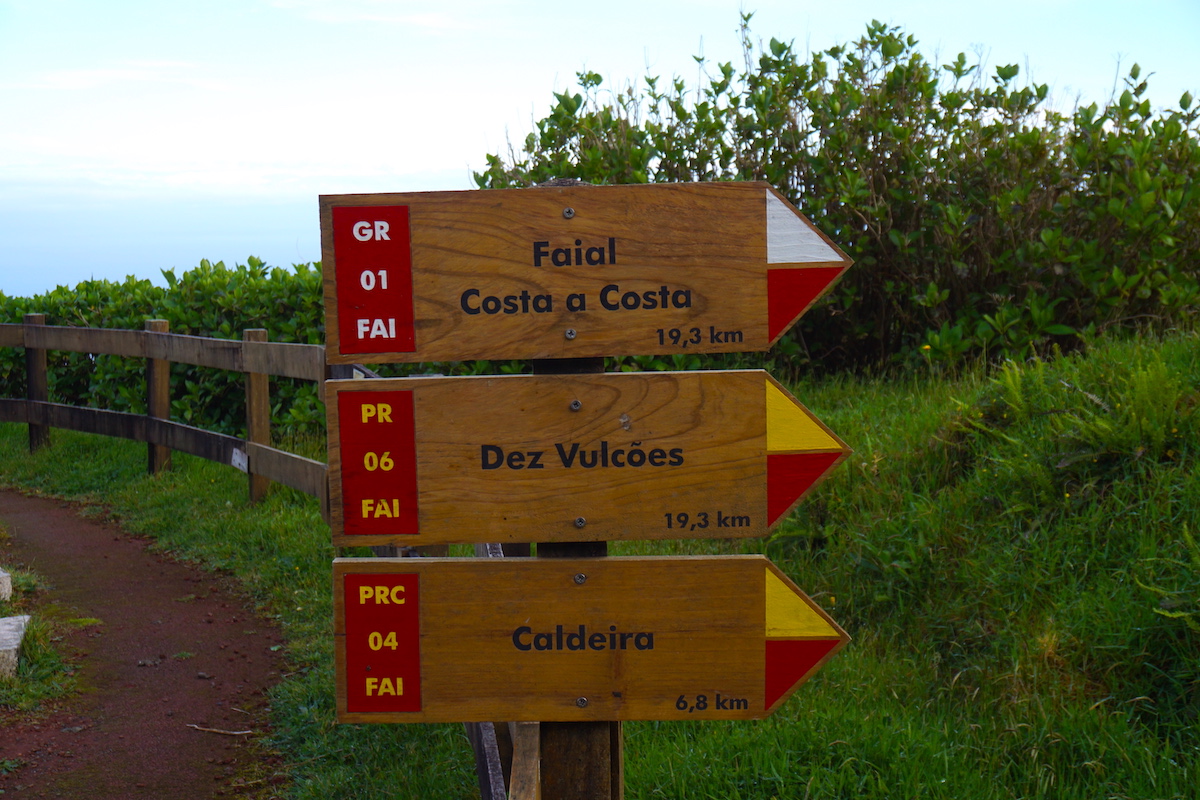
Where to dive in Faial
Between the island of Faial and the island of Pico, there is an incredible underwater world teeming with life and in fact, given the proximity of both islands, it is possible to dive in the Pico-Faial channel, a narrow 8.3 km ( or 4.5 nautical miles) arm of sea that separates the two islands. If you don’t scuba dive, your trip to Faial can be a good opportunity to learn how to do it, and you can try a diving baptism first. If you prefer to contemplate the marine life without a tank, you always have the option of contemplating the incredible seabed by snorkeling.
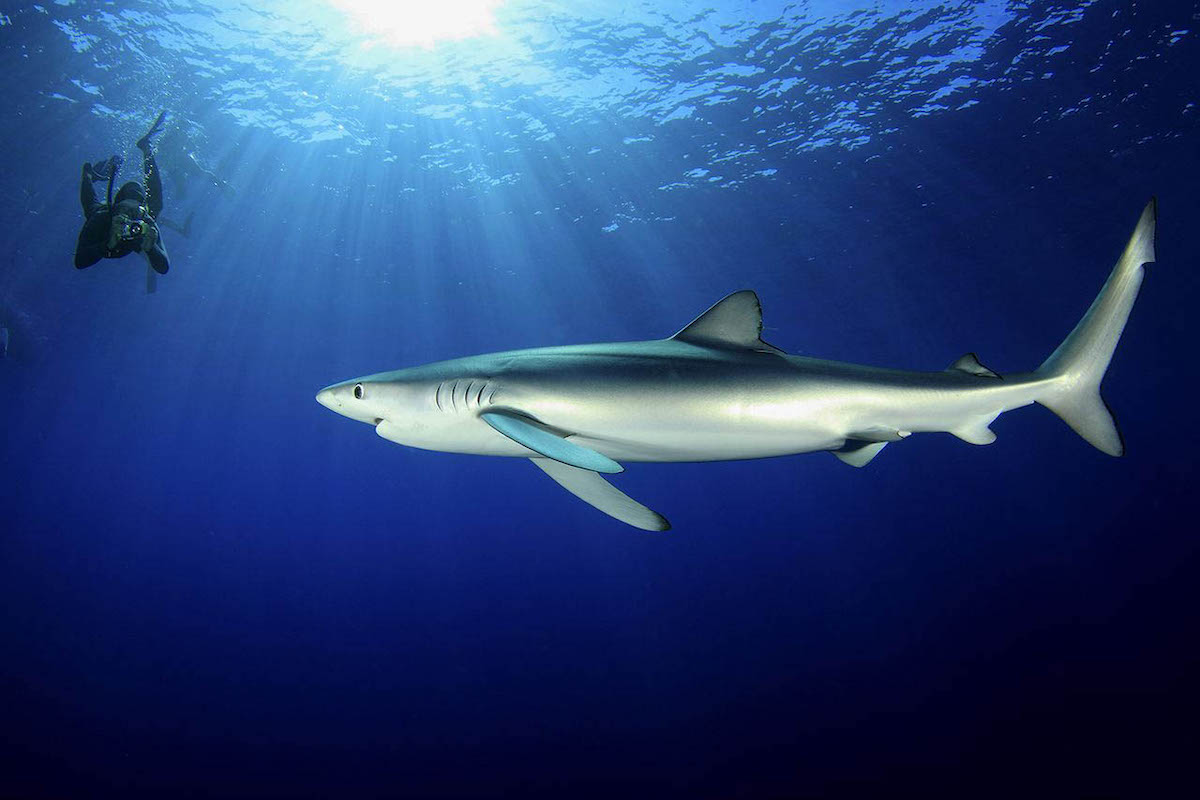
One of the most sought after dives is diving with blue sharks (blue sharks) that swim off the Atlantic coast which we recommend you to do between July and September. You can book your dive (equipment included) and check the details here. In addition, in Faial you can also say hello to manta rays (in Randomtrip we dived almost an hour with more than 20 manta rays in the neighboring Azorean island of Santa Maria), groupers, old groupers, queen fish, barracudas, damselfish, octopus and moray eels, colorful nudibranchs, lobsters, among other species. If you also want to see the faialense seabed with snorkeling because you are not a certified diver, book your snorkeling tour with blue sharks here.
Here we highlight the main dive sites:
- Princess Alice Bank: a seamount with an extensive area of shallow depths, about 50 nautical miles (90 km) southwest of the island of Faial and Pico and an ideal dive to try to see manta rays, from July to September. The shoal reaches a minimum depth of 35 m in its western part and occupies more than 100 km². The crystal clear waters allow the observation of the bottom from the surface.
- Condor Bank: one of the smallest spots to dive with blue sharks, in the Condor Bank the dive is done at shallow depth (up to 10 m), and for those who are not certified divers, it is also possible to observe them by snorkeling on the surface.
- Monte da Guia: in the Furnas do Monte da Guia there are two large caves 50 meters apart, both located at 20 meters deep, being possible to visit both caves in one dive, and the small wreck between them. This dive is only for experienced divers (Advanced Open Water) and with cave diving certification.
- Fumarolas da Espalamaca: a unique environment, where it is possible to observe the active volcanic activity in this place with hot water springs and curtains of small bubbles emerging from the seabed. Suitable for divers with or without experience and even for divingbaptisms.
More dive sites with description and difficulty, in this link.
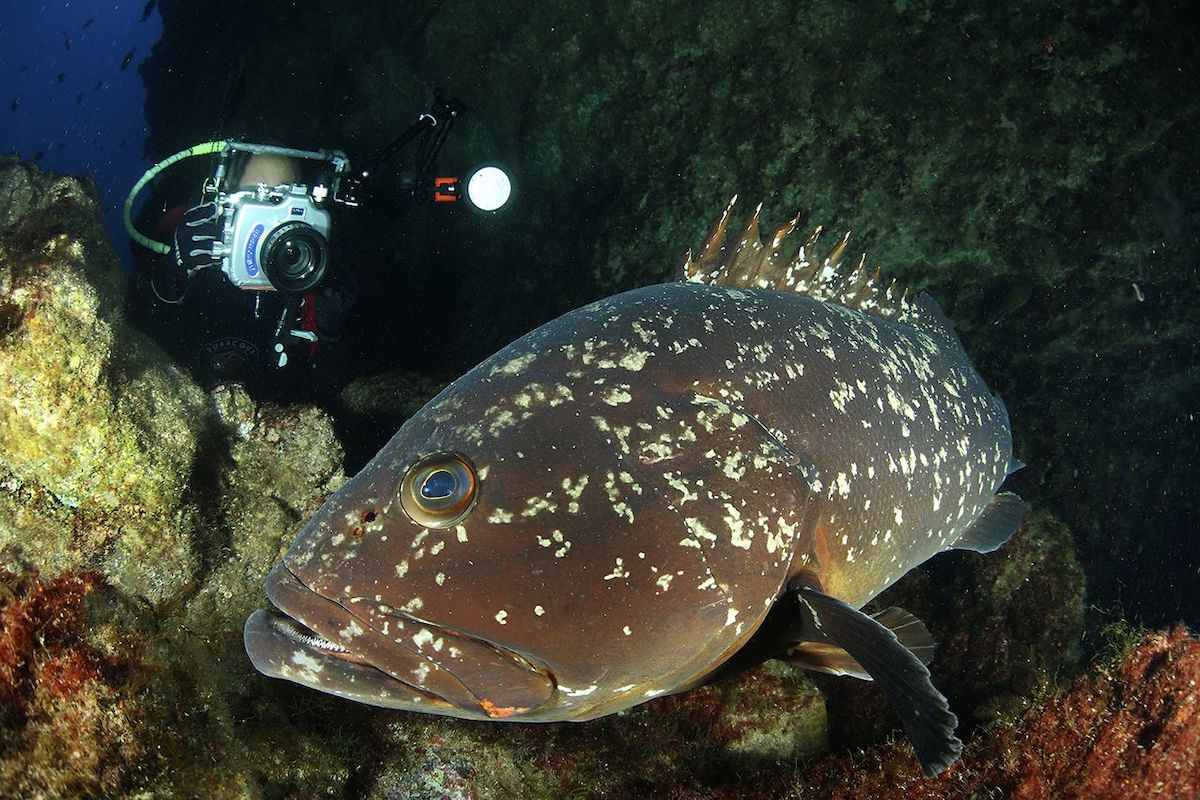
The best time to dive is from May to October (for dives with blue sharks and manta rays, best between July and September) although the visibility is excellent throughout the year, between 20 and 30 meters. And remember, always, due to Decompression Syndrome, after your last dive, you should wait at least 24 hours before getting on a plane or in high altitude areas.
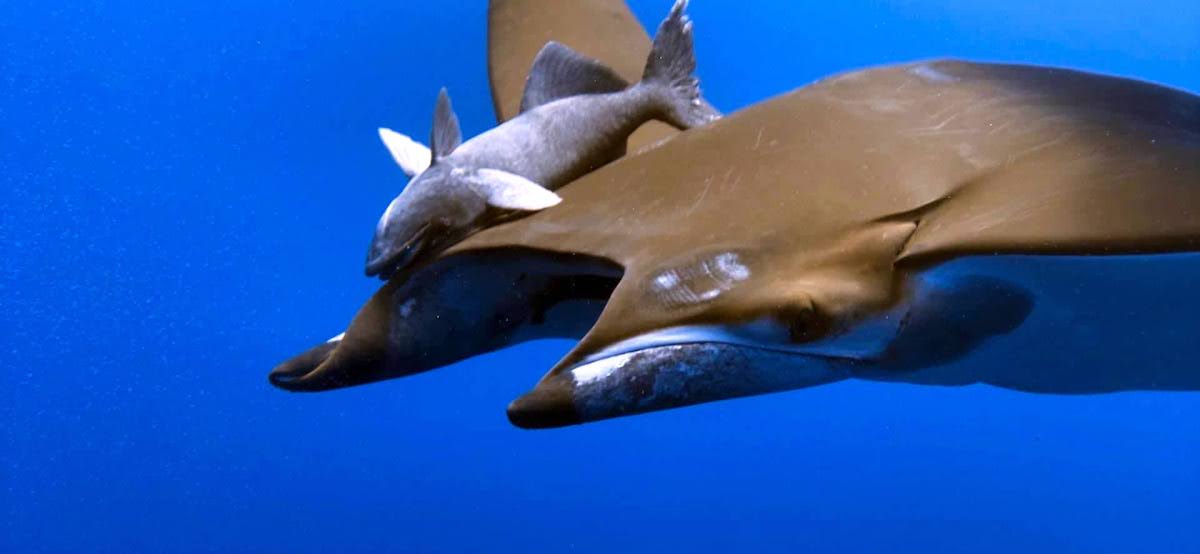
If you want to do one of the star activities in Faial, without getting wet and from the boat, book your whale and dolphin watching in freedom, book your tour here.
Where to stay in Faial: best areas
Horta is the ideal base on the island of Faial with many accommodation options for all wallets and several restaurants. In addition, any destination on the island is less than a 40-minute drive from Horta. At Randomtrip we particularly liked staying near Porto Pim beach, within walking distance of the town center, with views of the sea and Pico mountain. We stayed at Monte da Guia (from 40€/night), in a room with views of the sea and Pico and, while it is true that not all rooms have these views, the common area (where we worked some days) and where the kitchen is located do.
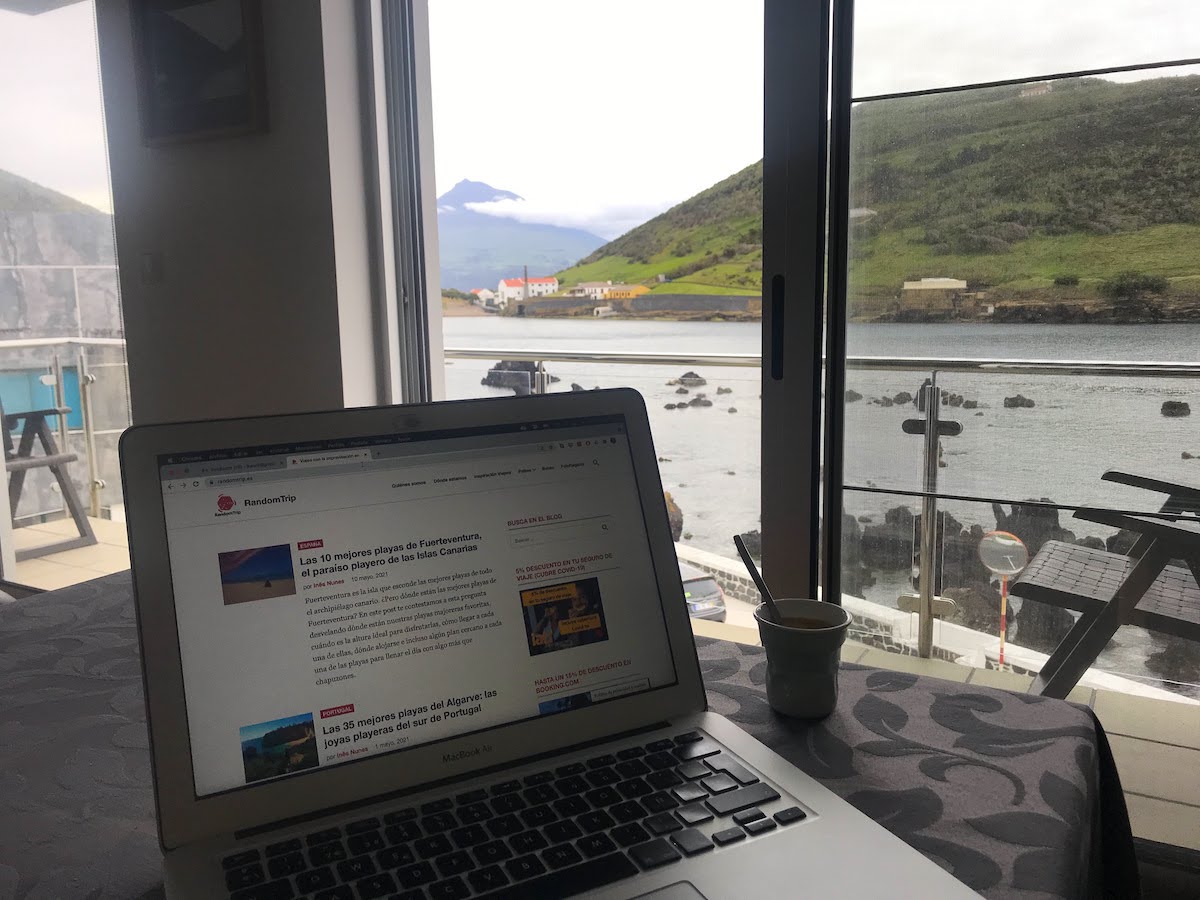
More accommodations that we recommend in Horta:
- Casa da Baía (from 44€/night): more centrally located, as this accommodation is just behind the Peters, next to the marina and overlooking the mountain of Pico. It has 8 double rooms, all with private bathrooms, some with sea views, and living room and kitchen shared with other guests. Breakfast optional. A 15 minute walk from the ferry, in case you also go to Pico or São Jorge by boat.
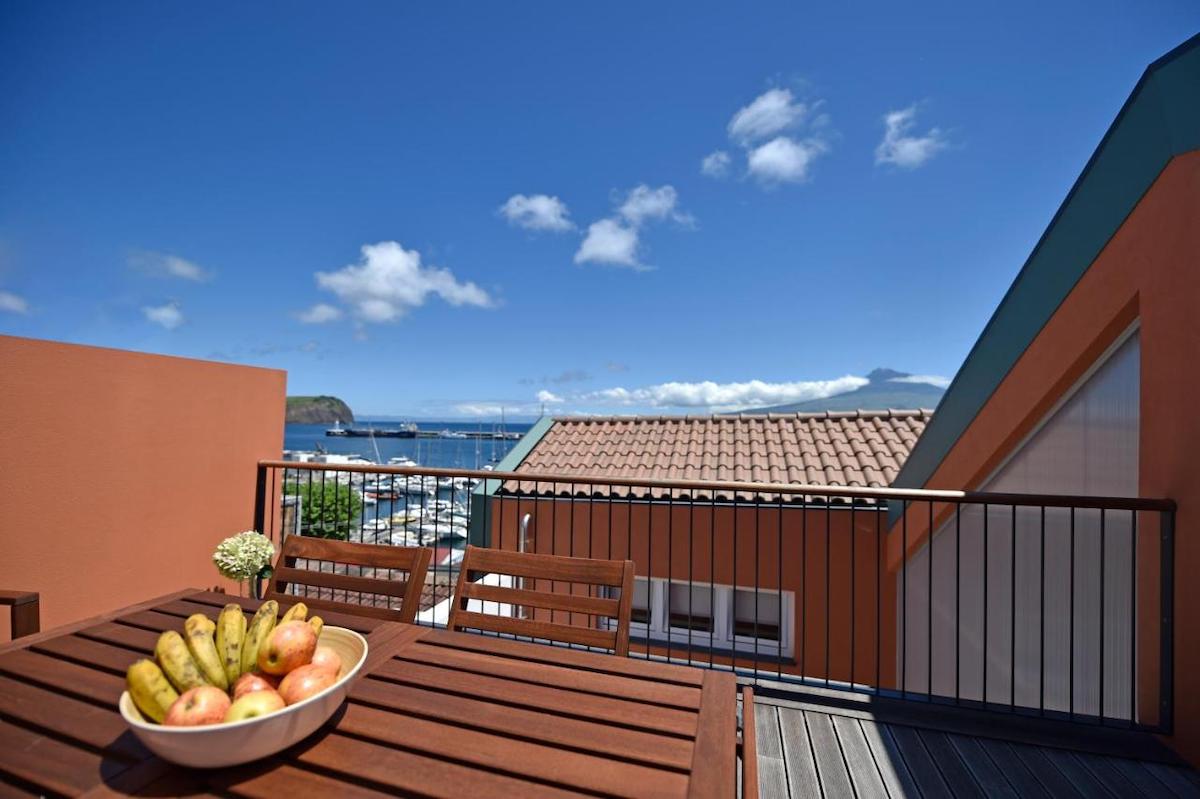
- Azoris Faial Garden (from 45€/night): double rooms, some with sea view, in a hotel with swimming pool. It is located on one of the slopes of Horta overlooking the bay and the islands of Pico and São Jorge. It maintains the architecture of the period, end of the 19th century (it is located in the neighborhood of the former officials of the Western Union Telegraph Company who installed the famous submarine cable that revolutionized communications between Europe and America). It is one of the references of the island and, in fact, of the archipelago. One of the best value for money options
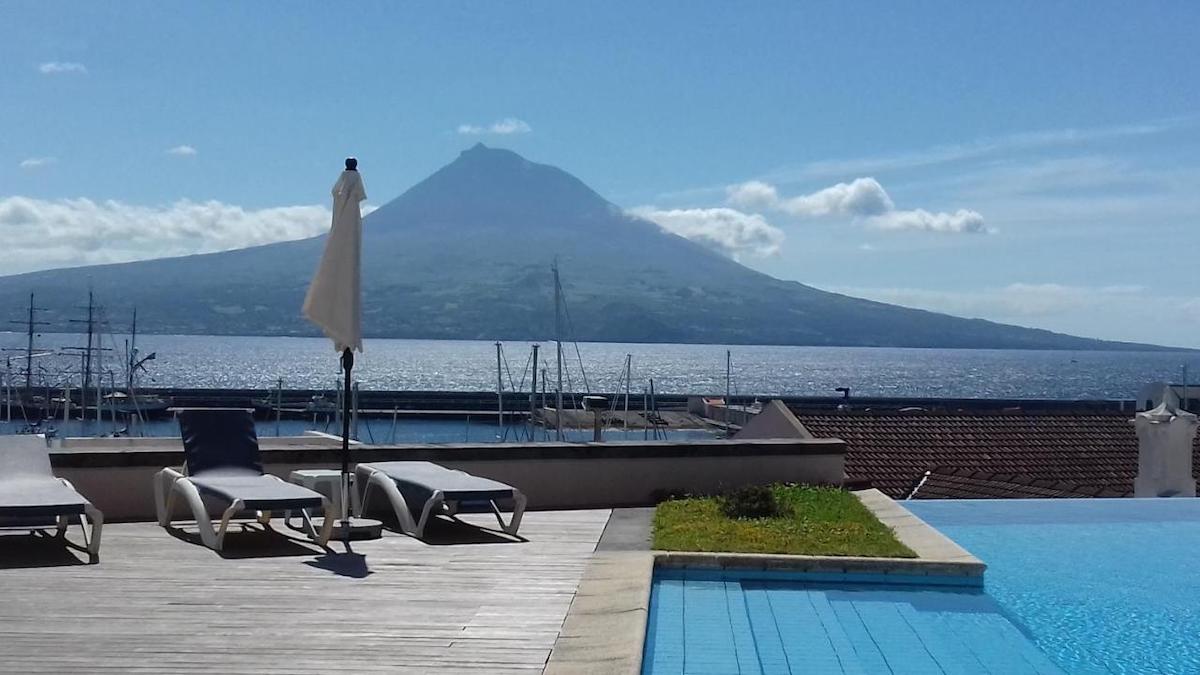
- Internacional Azores Boutique (from 64€/night, depending on the season): comfortable rooms in a more posh hotel, well priced out of season. In high season they go up quite a bit.
- Hotel do Canal ( from 68€/night): a few meters from Peter’s, this hotel was inspired by the maritime history and tradition of the island for its decoration, visible in the photographs and illustrations of sailboats, fishing boats or seaplanes. It has privileged views of the sea and the highest point of Portugal, the Pico mountain.
- Porto Pim Bay (from 103€/night): 5 modern wooden apartments overlooking the bay of Porto Pim, designed by architect Albino Pinho (from Oporto but living on the island of Faial for more than 20 years) and with free access to kayaks and bikes.
- Pousada Forte da Horta (from 155€/night): if you want to sleep in a national monument, know that the Fort of Horta is an exquisite Parador (Pousada de Portugal). The fort was built between the 15th and 17th centuries and was the main fortification of the island. It became a national monument in 1947.
- Ladomar Matriz (from 615€/night for 7 people): if you come to Faial in a group, this 3-bedroom apartment can accommodate up to 7 people and you can enjoy this incredible terrace overlooking the mountain of Pico.
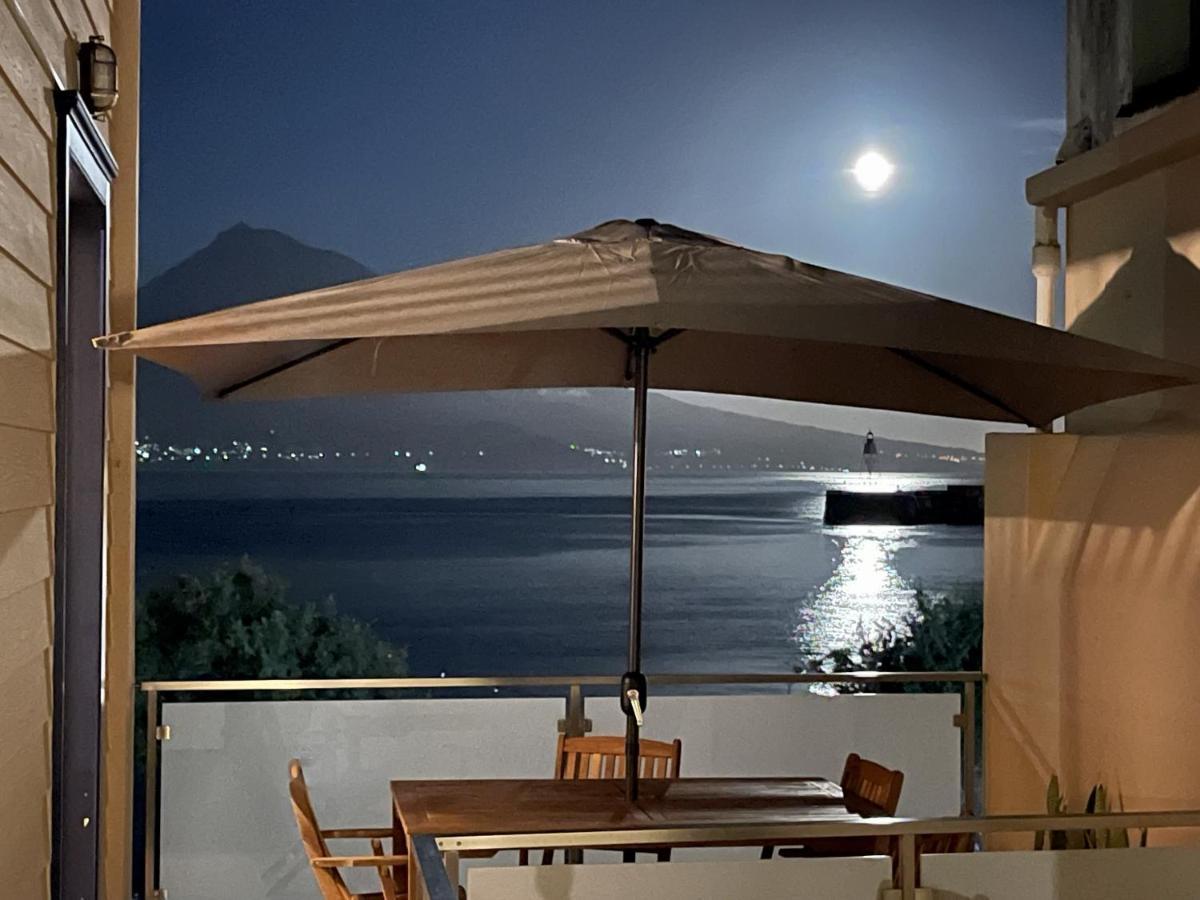
Accommodations that we recommend outside Horta for a different experience:
- Azul Singular, Feteira (from 70€/night, minimum 2 nights): one of the most curious and beautiful accommodations in Faial, also by the architect Albino Pinho (just like Porto Pim Bay), it has 8 yurts and wooden cabins like glamping among palm trees with private bathroom, heating and delicious breakfasts made with local products.
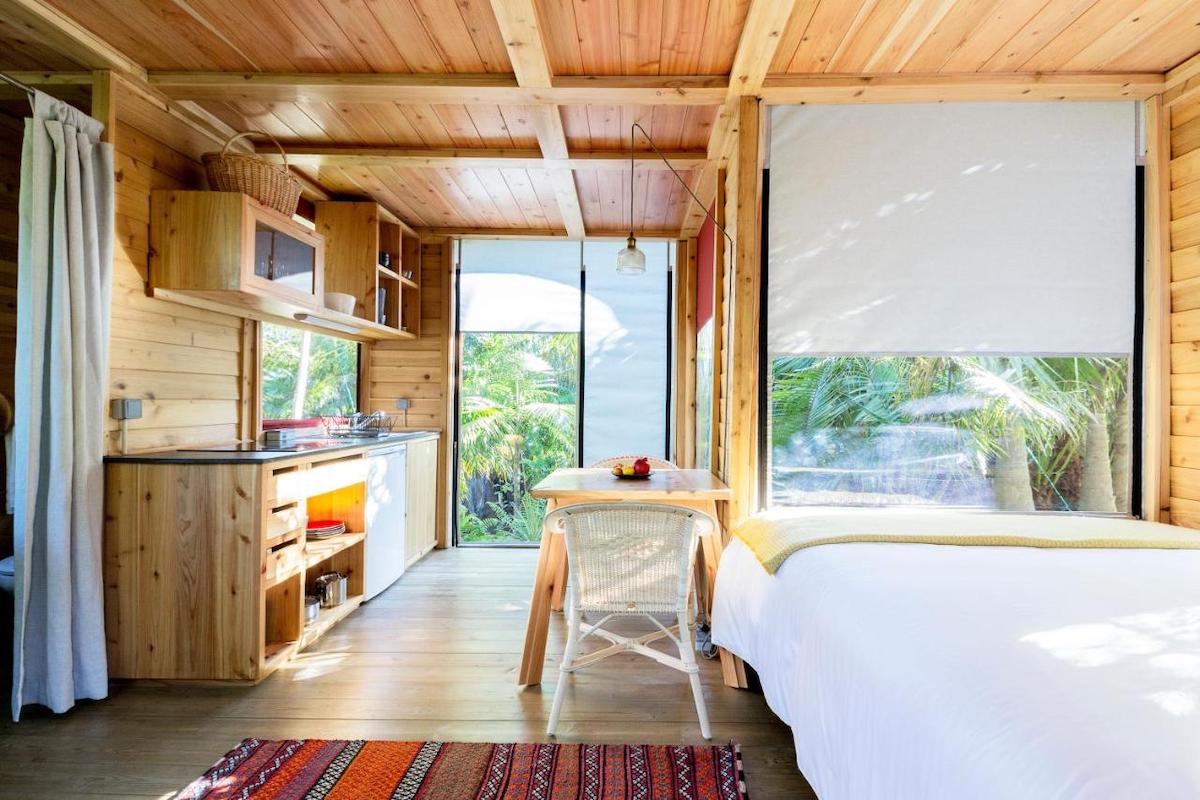
- Casas do Capelo (from 70€/noite): seven traditional houses recovered with all the comforts and ocean views.
- Quinta das Buganvílias, Castelo Branco (from 69€/night): a rural tourism with agricultural exploration and light-filled houses
- Quinta da Meia Eira, Castelo Branco (from 101€/night): in addition to the incredible pool with sea views and sleeping in a very comfortable room or apartment (they have both), you will eat divinely since everything served on the farm, from breakfast to dinner, is organically grown on the farm. Can you imagine starting the day with a buffet breakfast with products from the countryside?
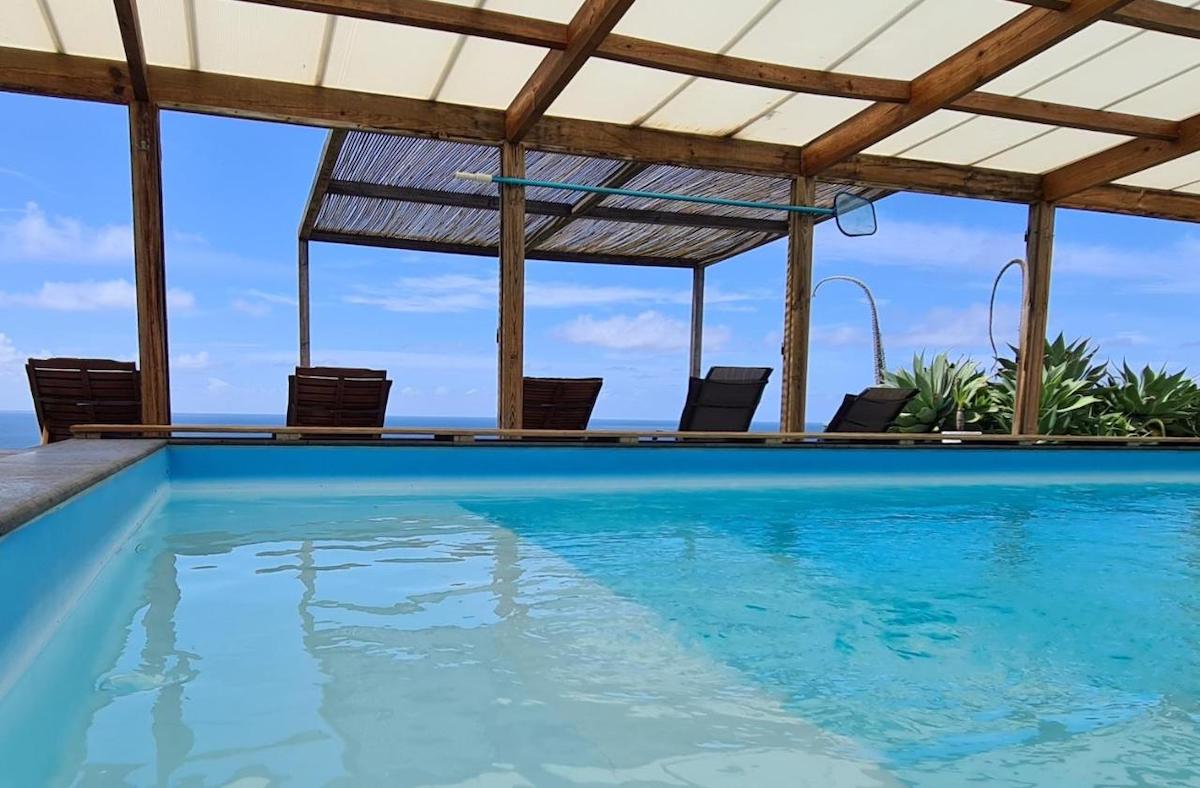
Best restaurants in Faial
Before recommending specific restaurants, I would like to mention that Faial is the island of our 2 month trip throughout the Azores where we have eaten the best thanks to the great variety of restaurants and delicious local food (along with São Miguel and Terceira, although we have to say that proportionally Faial takes the cake as it is a much smaller island).
First of all, special mention for the Ah! Boca Santa (inside the municipal market of Horta) because, without detracting from the great restaurants on the island that we will tell you about next, here we tried what are undoubtedly and indisputably the best burgers we have ever eaten (and there are vegetarian ones!) with homemade bolo lêvedo and adapted for hamburger and local and seasonal ingredients, made with care and love from Faial. Secondly, alert for cheese lovers, it will be very difficult not to start every lunch (or dinner) with a cheese amantequillado d’O Morro to inaugurate what is coming as it is an incredibly addictive cheese (he who warns is not a traitor) and, of course, available to buy at the cheese shop and bring back as a souvenir (if you get home …). Thirdly, if you visit the island for Carnival (between February and March) try the fofas, a typical sweet of this time that according to our friend Joana Lima is something like a cross between a ball of berlim and lemon éclair that will delight the most sweet-toothed randomtripper people.
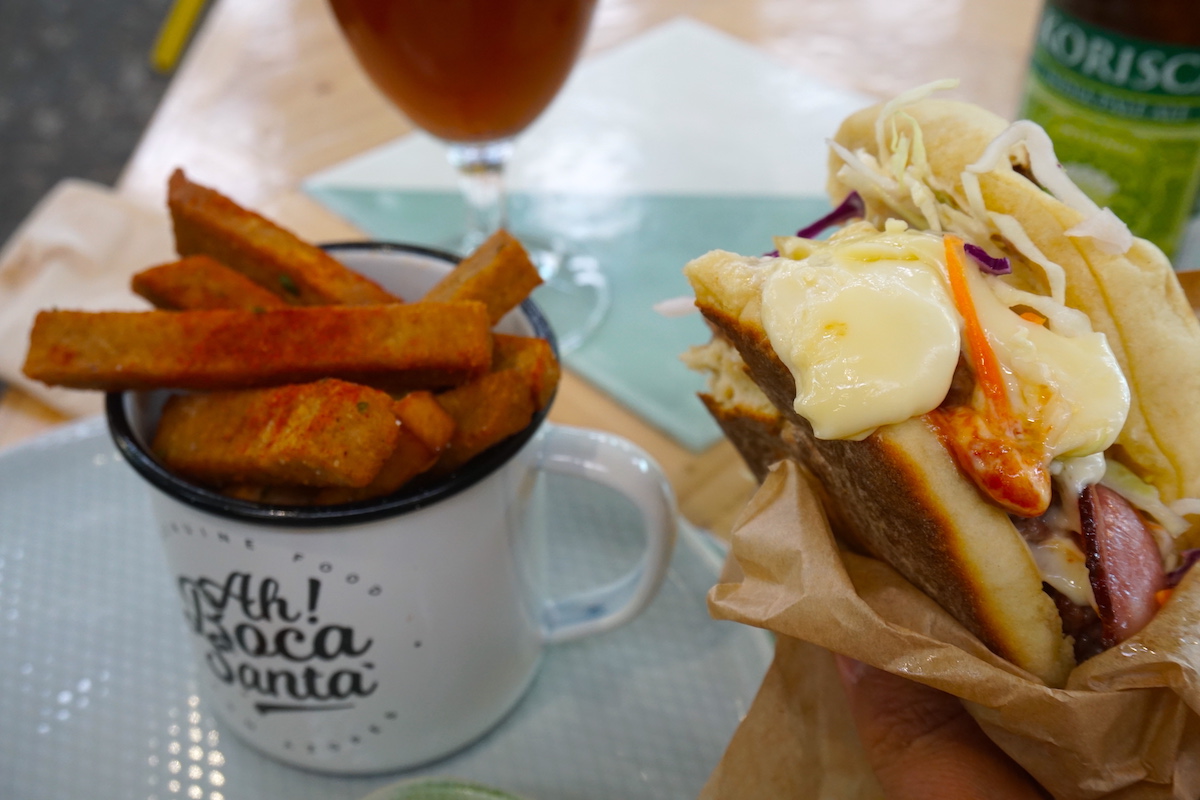
Beyond these gastronomic considerations, do not miss these restaurants in Horta:
- Peter Café Sport: a mythical place in Faial with more than a hundred years and of which it is even said that “if you have not been to Peter’s you have not really been to Horta”. It’s easy to know you’ve arrived because the neon in the shape of a sperm whale marks the beginning of the street and it’s a meeting point for sailors and travelers from all over the world, so you’ll always see people outside with a drink in their hand. If, as in Randomtrip, you like gin and tonic, you can’t miss their Gin do Mar, distilled with passion fruit (2,90€ each) although if you want to have a snack too, they have for example then “açorianinha“, a francesinha from the Azores (don’t get your hopes up, you are not in Porto), or a whale soup (calm down, not everything is what it seems) which is actually a meat soup inspired by what the whalers ate before going to sea (at Randomtrip we didn’t try any of the food at Peter’s so we can’t tell you first hand, we “only” tried a few Gins do mar….) and we were especially spoiled by the wonderful ambiance.
When you go to Peter’s, if you feel like it, you should know that on the second floor you can visit the Scrimshaw Museum ( for 2,50€, a little less than a gin and tonic) where a private collection of engravings and carvings in bones, cartilage or whale ivory handmade by whalers in the nineteenth century is hidden. If you prefer to contemplate them free, alive and in their habitat, book your whale watching tour and you may be lucky enough to greet a sperm whale, departing from Horta.
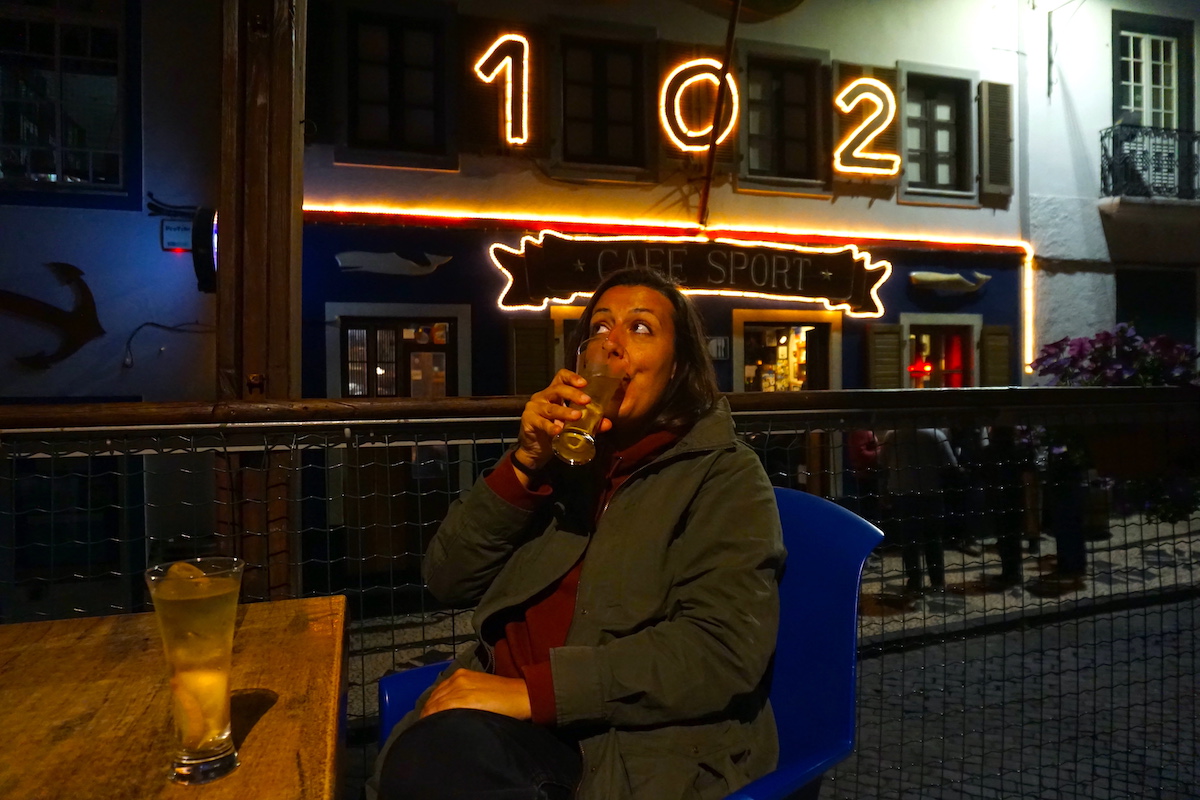
- Atletico, one of our favorites in Horta, a restaurant with a wood-fired oven for meat and fish. We tried a firewood-flavored snapper and the garlic and tomato bread as a starter (included in the price). Highly recommended.
- Genuíno, or rather, the restaurant of Genuíno Madruga, Portuguese adventurer who between 2000 and 2002 made the first circumnavigation under sail, alone, and repeated the round-the-world trip in the same boat between 2007 and 2009. Each table in the restaurant tells a story, as under the glass of the table top are various objects from his voyages. We tried the fish and tuna meatballs but the best part was meeting the endearing adventurer Genuíno. On Fridays there is fado night. As a curiosity, tell you that when the dish arrives at the table do not be surprised if you hear a “Boa Viagem” (Good Trip) instead of the classic “Bom Apetite” (bon appetit), after all, you are in a house of travels and, in this case, about to sail through Azorean flavors.
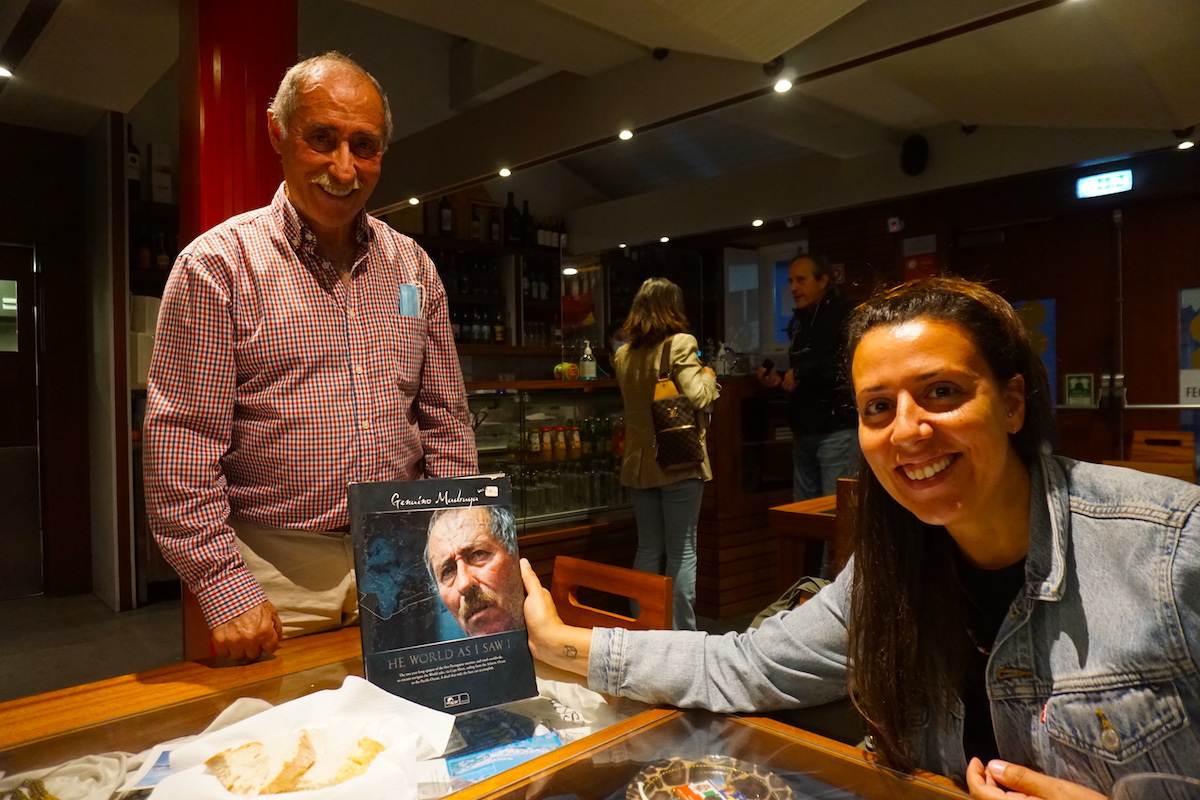
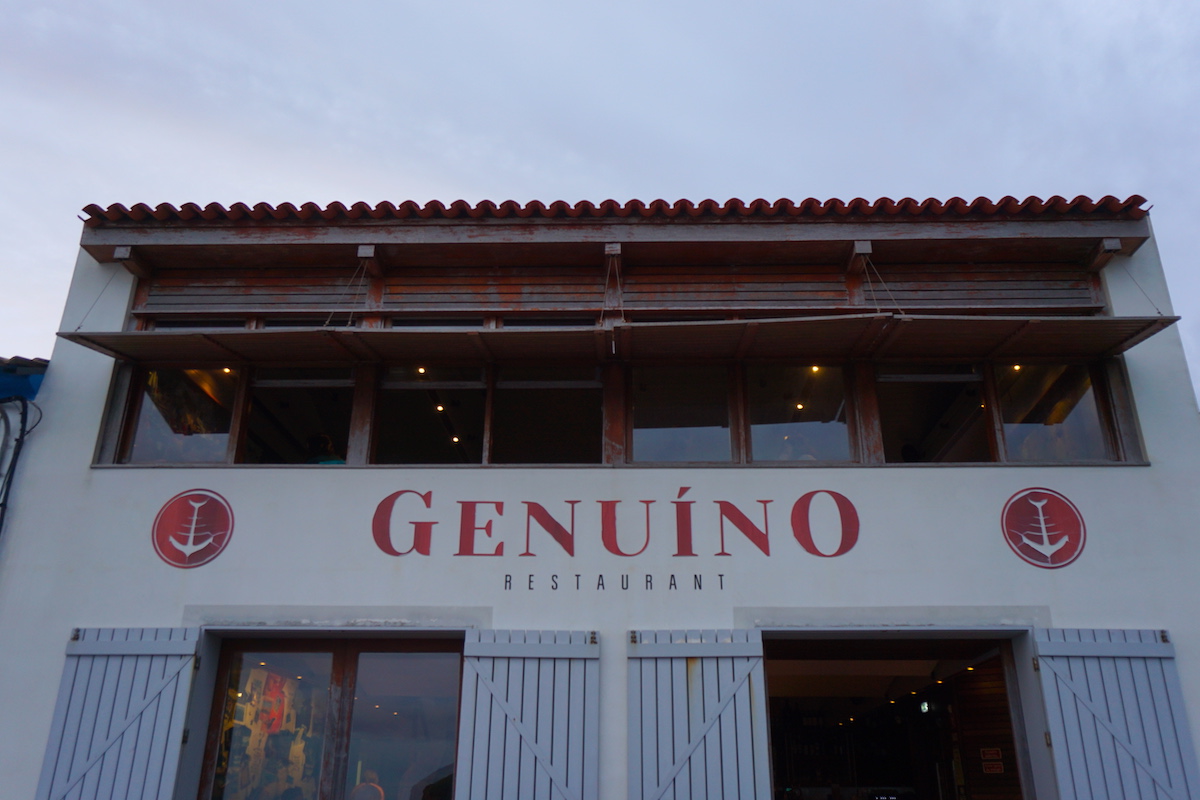
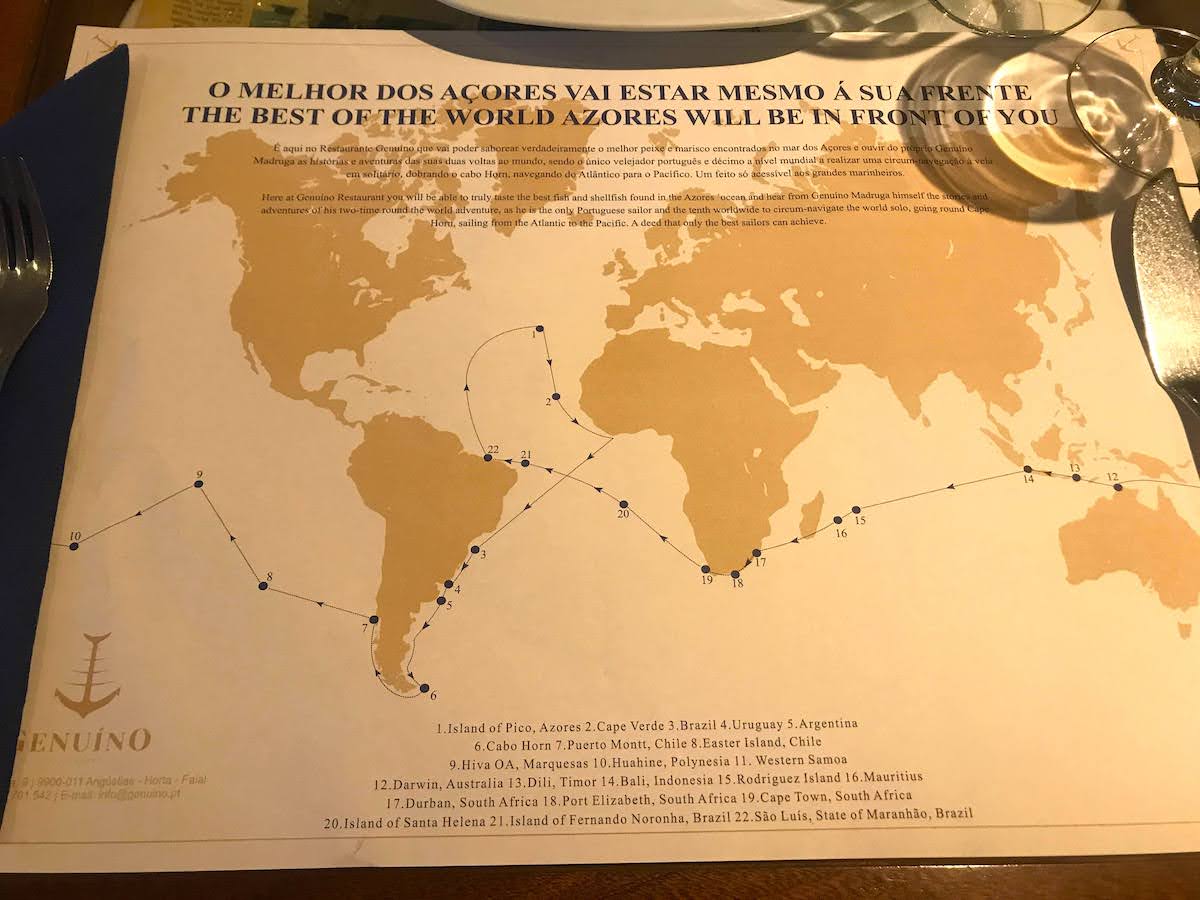
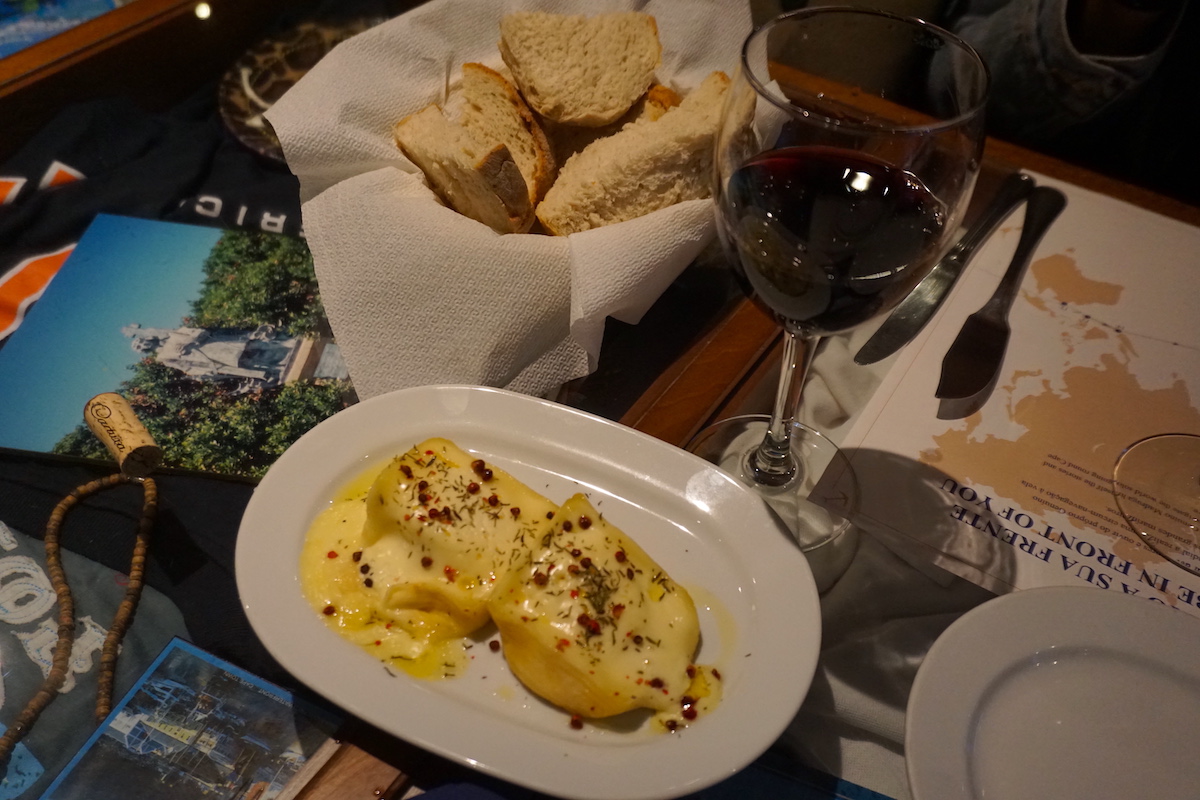
- Café do Porto Pim: for a beer at the end of the day in front of the bay of Porto Pim accompanied by local people.
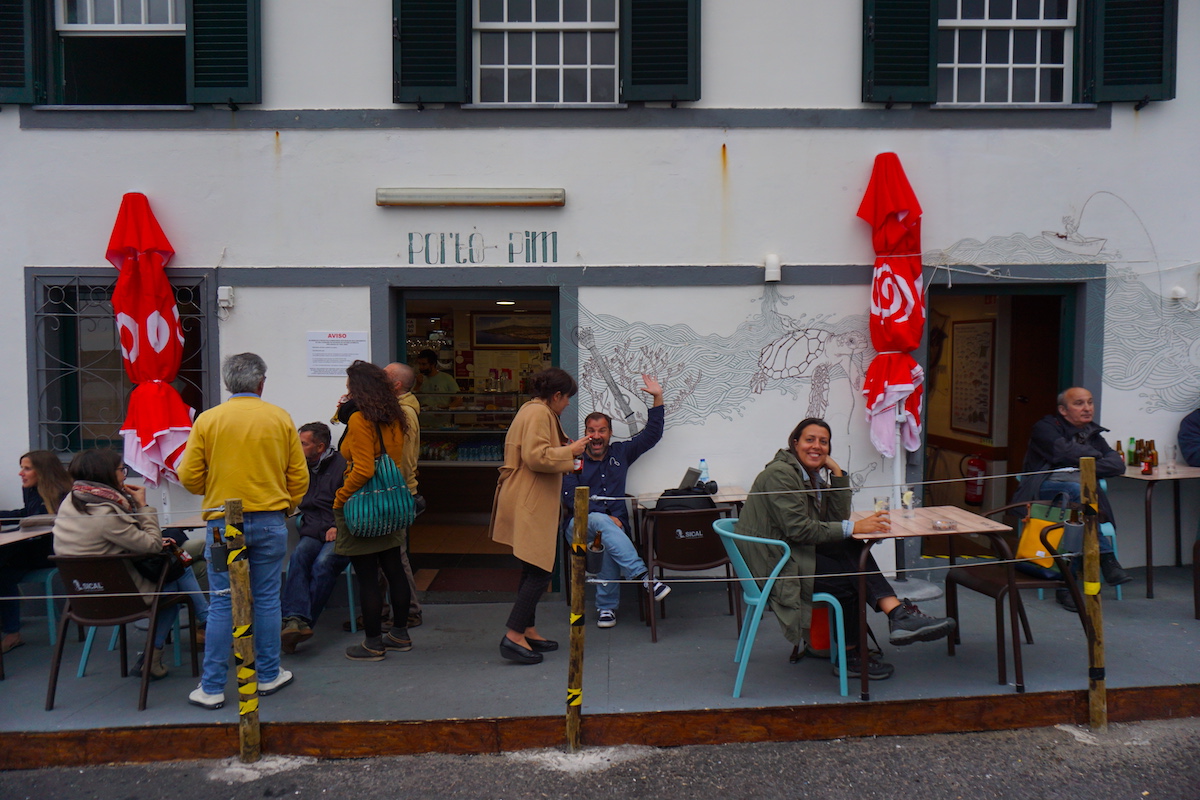
- Gastrobar Príncipe: fusion cuisine and creative and elaborate proposals with local and seasonal products. If you are looking for something for a special night, do not hesitate.
- Canto da Doca: meats and seafood on volcanic stone. They change the stone between meat and fish. We liked it and it is delicious but it is not one of the tops of the island if you only have a few days (we would prioritize Atlético, Pasquinha, Rumar and Ah! Boca Santa).
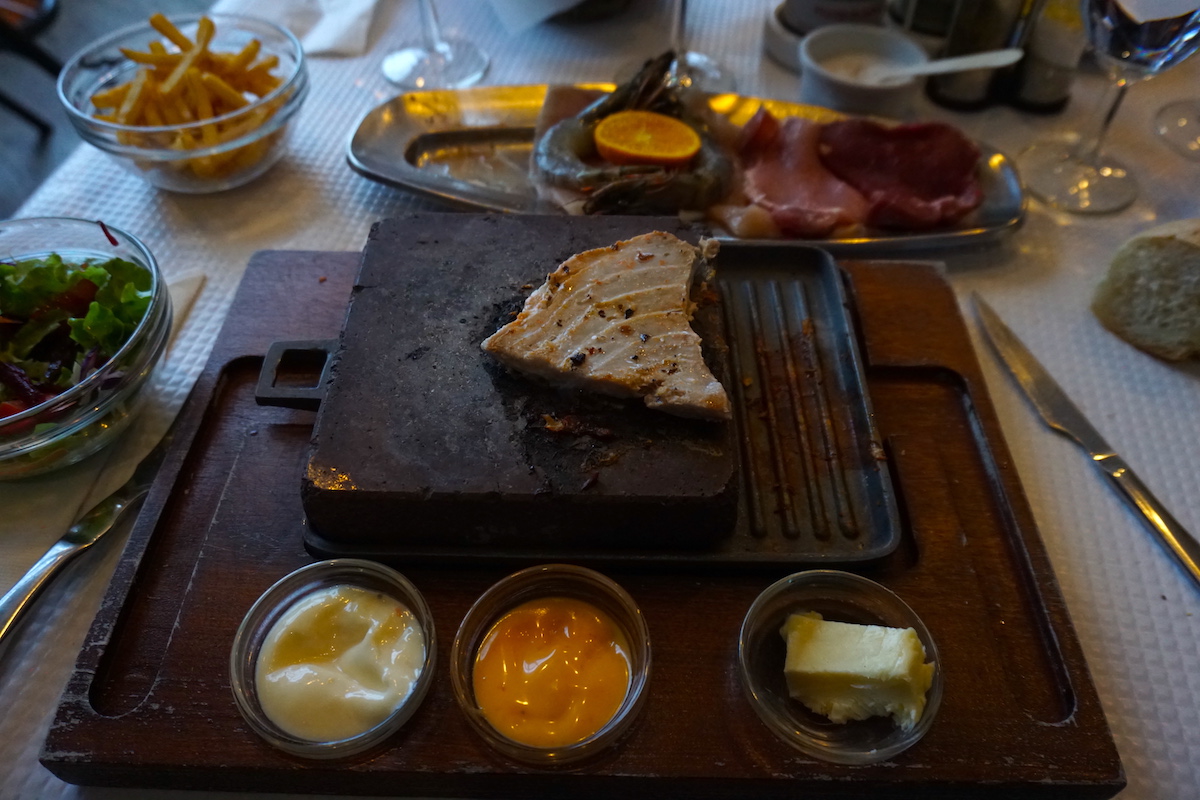
- Casa de Chá: one of the few vegan options in Faial (and in the Azores in general), along with the delicious Esconderijo (outside Horta, in Cedros).
- Horta Municipal Market, beyond the stalls with fruits and vegetables, don’t miss:
- Ah! Boca Santa: we already mentioned them, one of our favorites in Faial where we tasted some of the best burgers (they also have vegetarian ones!) we have ever eaten in our life. Homemade bread (bolo lêvedo azoriano), O’Morro cheese and local ingredients with unbeatable service, craft beers and local snacks. You can also try the gambuzinas (tuna, potato and São Jorge cheese croquettes) as a starter. Closed on Sundays and Mondays.
- Cantina da Praça: our second favorite in the municipal market where you can cook your food on a boiling lava stone. Sounds good?
- Loja do Triângulo where you can get all the specialties of the islands of the Azorean triangle (Faial, Pico and São Jorge), from picarotto wine, São Jorge cheeses, brandies and even edible seaweed.
RandomTIP Vegan: Vegan Randomtrippers that you may have already realized that sometimes it is not so easy to find vegan options in the Azores, you are in luck in Faial. Our friend Diana, a great cook and a better person, makes vegan tuppers always with local production so you can always eat healthy during your trip. Keep an eye on Marmita_da_Horta and make your order in advance for the days you are on the island. Deliveries in Horta. Outside Horta, keep an eye on O Esconderijo restaurant in Cedros.
Outside Horta, in Faial, don’t miss these restaurants:
- Rumar: ideal to go after completing the Rocha da Fajã trail. Delicious homemade food, ask for the dishes of the day, we loved it! It closes on Thursdays so if you can, book another day to do the trail because you will have earned it and it is worth celebrating here.
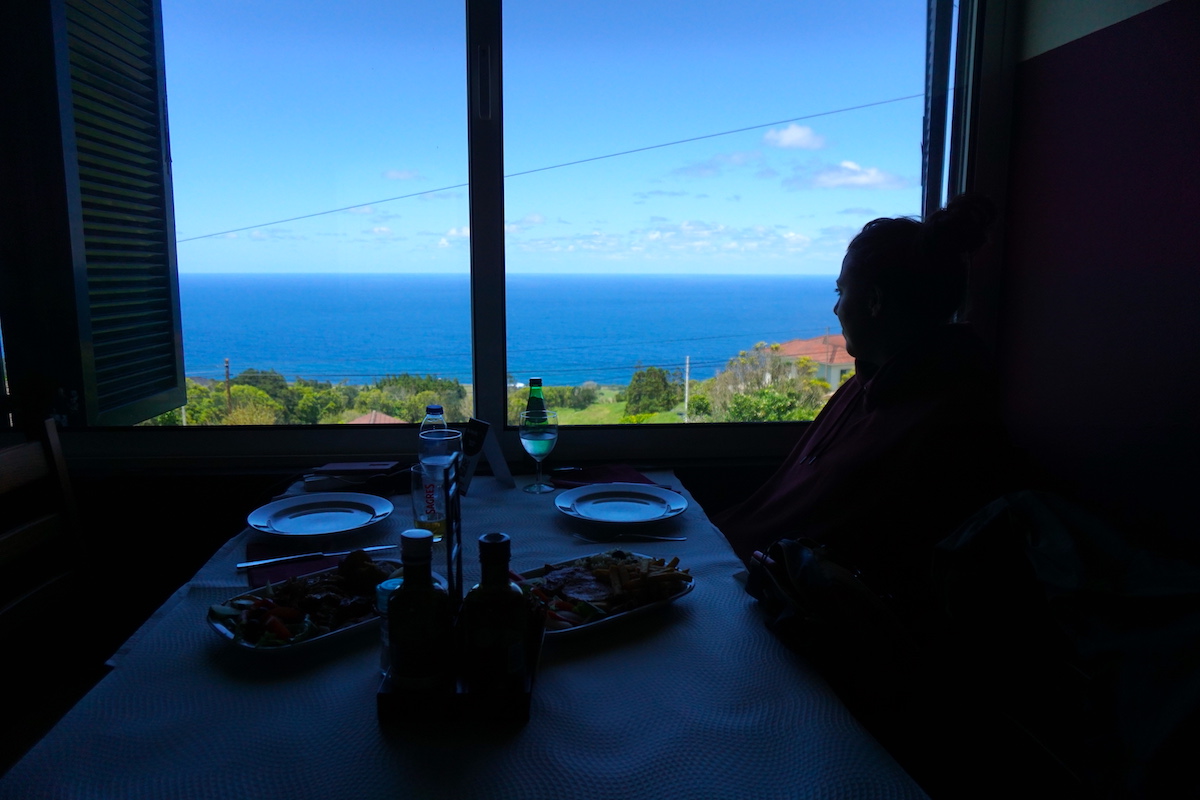
- Pasquinha: We liked it so much that we went twice! A spectacular atum (tuna) steak with garlic sauce and shrimp, all the dishes delicious and homemade. Recommended by Lenita from our accommodation Monte da Guia (who told us she goes there whenever there are special occasions) and also by João from Ah! Boca Santa. Better to book in advance. Closed on Mondays and Tuesdays.
- Aldina: you can’t leave Faial without trying the famous limpets (with chopped garlic and pimenta da terra, as in all the Azores, of course), so this is the place. All the seafood and fish are delicious here (we were raved about the octopus salad).
- O Esconderijo: vegan restaurant with gluten-free dishes, with products grown right there in their garden. When we went there was no menu, they told you what they had to eat and you paid what you wanted / could (we don’t know if it is still like that). We loved it and we think it is a highly recommended experience regardless of whether your diet is vegan. It is only open for dinner and you have to book at least a couple of hours in advance so that Hans, the German owner, knows how many people are sitting at the table that night.
- Bela Vista: if you get hungry before or after going to the Capelinhos volcano, here, in Capelo, you can order a very Azorean combination dish: the famous linguiça, inhame, pineapple and fried egg.
- Praya, a restaurant right on Almoxarife beach with views of the Pico mountain and delicious dishes such as peixinhos da horta (battered beans), mini cuttlefish burgers or a typical Bacalhau à Brás.
- Queijaria o Morro: it is not a restaurant but it had to be on this list. Beyond the outstanding buttered cheese, internationally famous since Wine Spectator magazine placed it in the Elite category in 2017, there are also delicious cured cheeses, a spicy cheese, another with paprika and even one with garlic and parsley. If you want to see how the cheeses are made, it is possible to visit the factory, just behind the store, by appointment. The name of the cheese brand comes from the Morro de Castelo Branco, visible from the cheese factory. Each cheese costs around 5€.

Faial Itineraries
As you will have seen if you have read all our guide, Faial has a lot of incredible places to visit, so to be able to see everything and enjoy its hiking trails we consider that it is necessary to dedicate at least 3 days, although due to the instability of the weather, if you can extend your trip to 4-5 days would be better, so if it you have a bad weather day you will not miss anything on the island, and if you are lucky enough to have good weather you can always relax and enjoy the natural pools (or do more trails).
As we do not always have so much time to enjoy the island, here are some suggestions of itineraries for 3 and 5 days.
Things to do in Faial in 2-3 days (a weekend)
A weekend is perfect to get to know the main points of interest of Faial and even do some hiking through its wonderful natural landscapes. Here is an example of a 2-3 day itinerary around Faial:
- Day 1: Arrival in the morning and check-in at the accommodation in Horta. Have lunch in Horta and in the afternoon visit Vulcão dos Capelinhos, its interpretation center, the lighthouse and if the weather is good, take a swim in Porto do Comprido. Return to Horta stopping at the different points of interest indicated in the guide and map (craft center, Varadouro, Morro de Castelo Branco and the cheese factory, Poça da Rainha, etc.).
- Day 2: depending on the weather/when it is clear, go to the Caldeira and do the hiking route around it. The rest of the day, spend it getting to know Horta and its corners (the marina, Porto Pim, Monte da Guia, etc.) and whale watching
- Day 3: visit the north of the island, hiking to Praia da Fajã and stopping at the different points of interest (Praia de Almoxarife, Ribeirinha, Salão, and the different viewpoints).
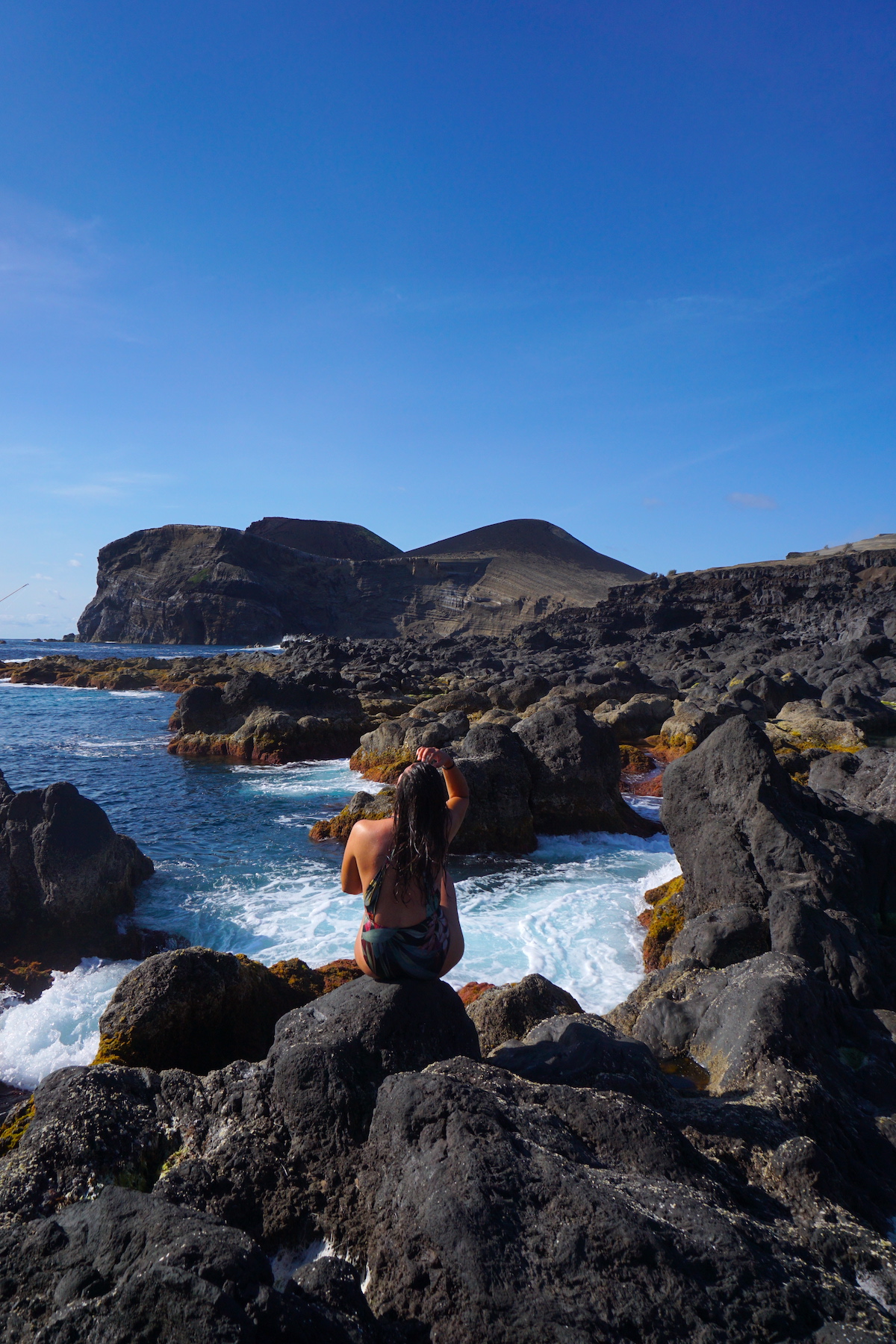
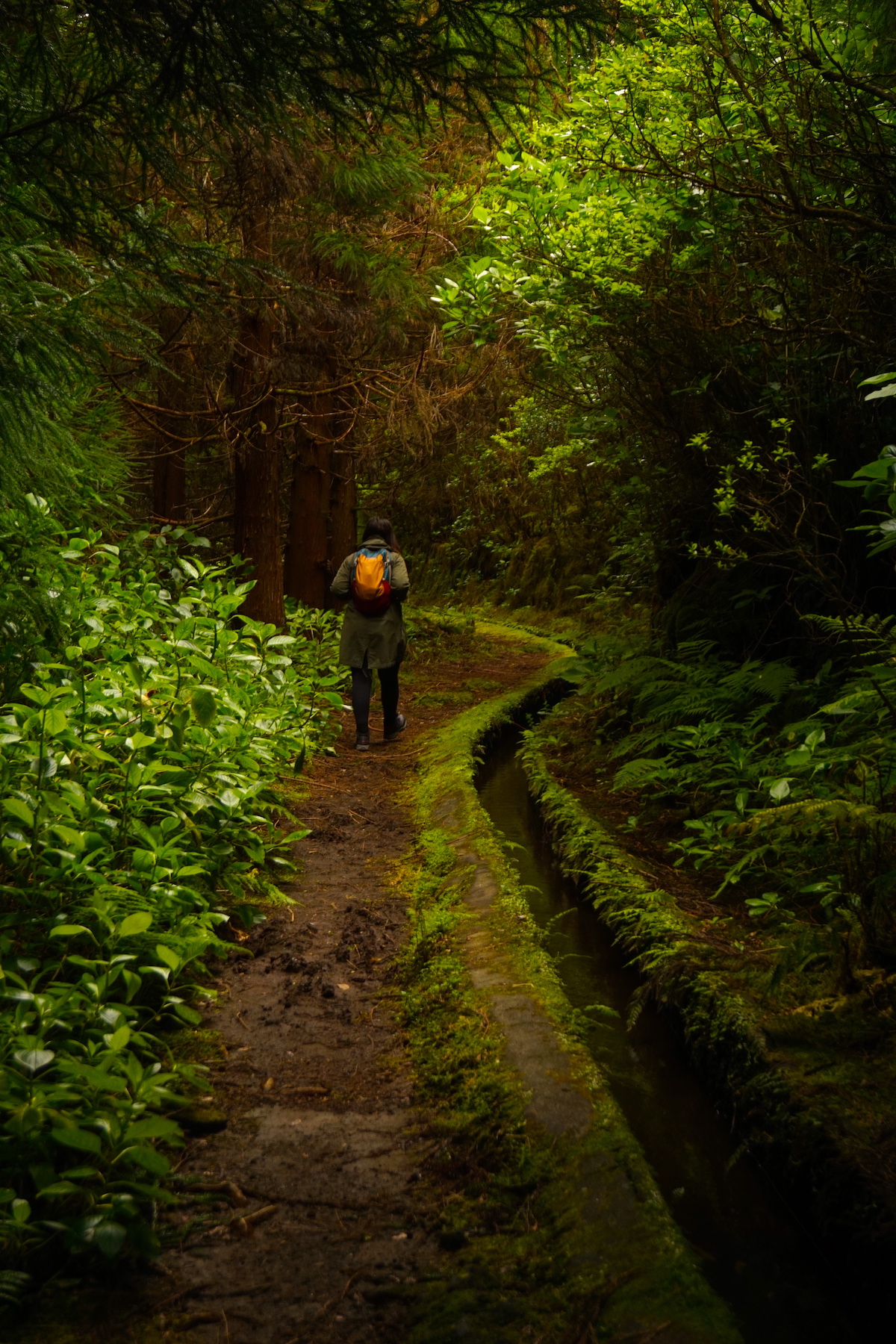
On the left, a dip in Porto Comprido with Capelinhos in the background. On the right, Levadas trail. Photos by Randomtrip. All rights reserved.
Things to do in Faial in 4-5 days
With 4-5 days, we consider that you will be able to get to know the island of Faial quite well, visiting all its points of interest and doing some hiking trails. Here is an example of a 5-day itinerary around Faial:
- Day 1: Arrival in the morning and check-in at the accommodation in Horta. Have lunch in Horta and in the afternoon visit Vulcão dos Capelinhos, its interpretation center, the lighthouse and if the weather is good, take a swim in Porto do Comprido. Return to Horta stopping at the different points of interest indicated in the guide and map (craft center, Varadouro, Morro de Castelo Branco and the cheese factory, Poça da Rainha, etc.).
- Day 2: if the weather permits (if not choose another day and interchange with this one) do the Rota dos 10 volcões (5-6h, linear route so you will have to arrange a cab). At the end choose one of the natural pools to relax.
- Day 3: Visit Horta and its surroundings at leisure, and go on a whale watching tour in the wild.
- Day 4: In the morning, hike to Praia da Fajã and have lunch at the Rumar restaurant. The rest of the day, visit the other points of interest in the north of the island (Praia de Almoxarife, Ribeirinha, Salão, and the different viewpoints).
- Day 5: If we still feel like walking and there is availability, we recommend doing the descent to the Caldeira with a guide. Otherwise, if you have not had time to do any of the things of the previous 4 days, do them on this last day, or otherwise, take the opportunity to relax in one of the natural pools and / or revisit the sites you liked the most (in our case we went twice to the Caldeira, which is impressive).
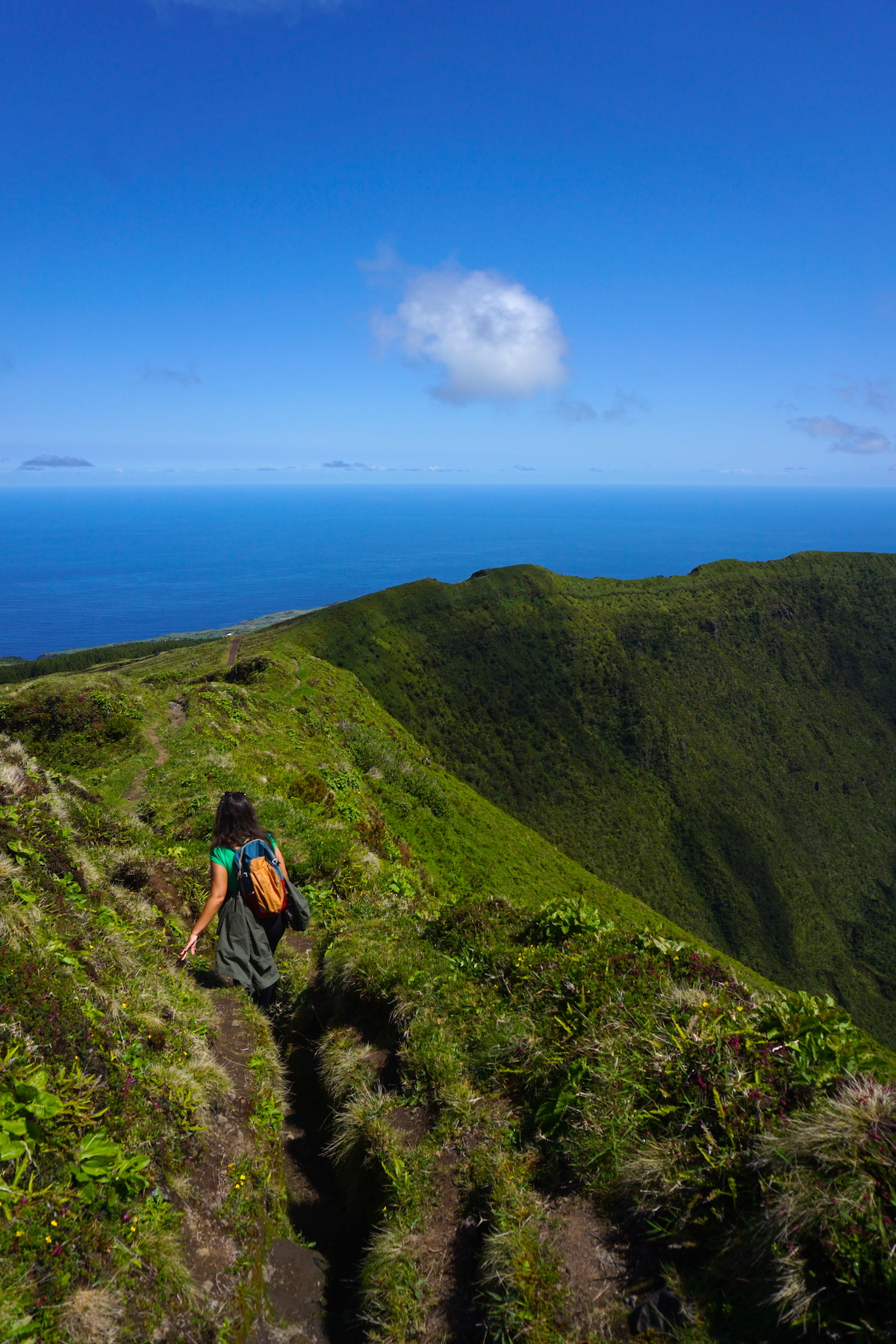
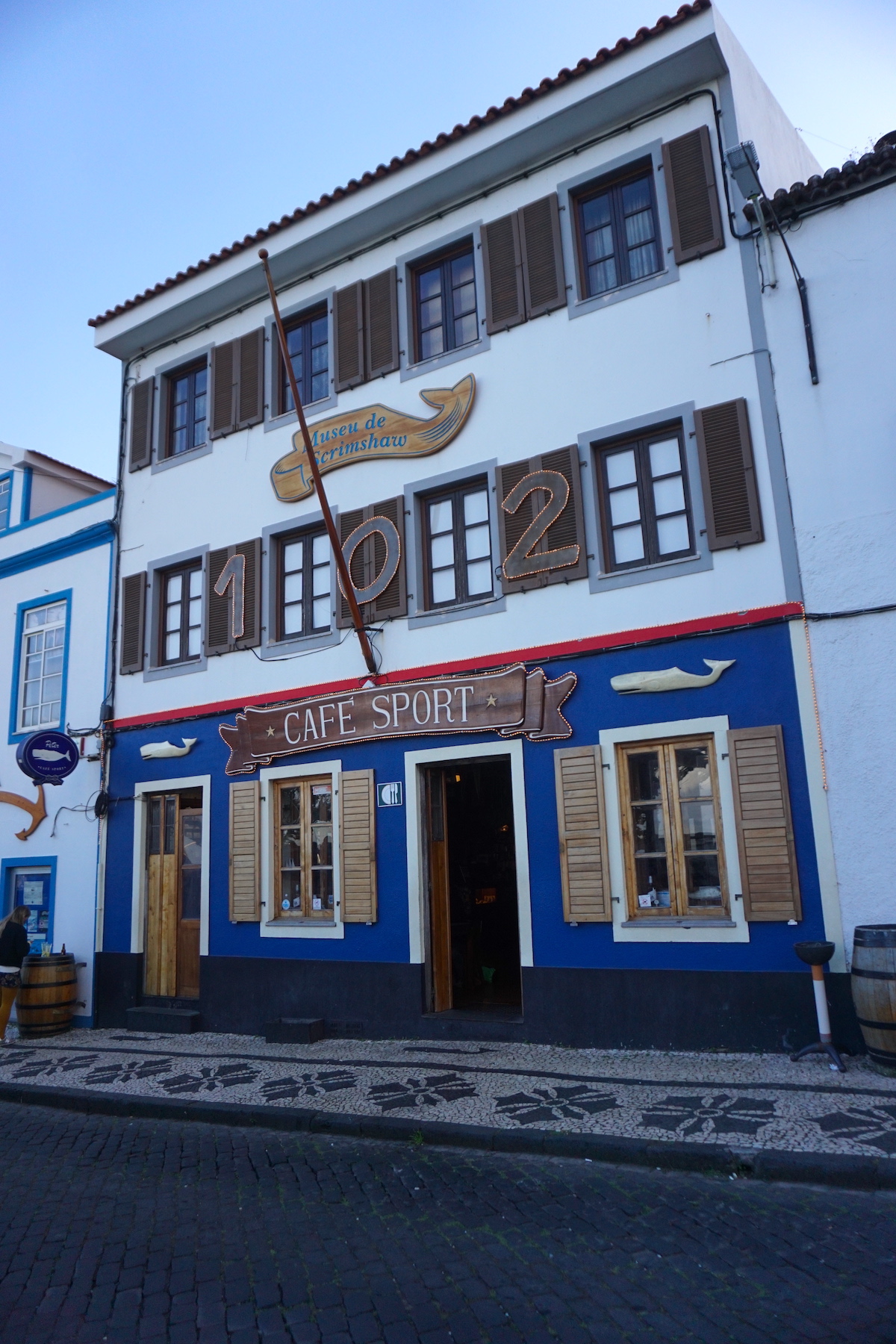
On the left, bordering the impressive Caldeira de Faial. On the right, the inconic Peter’s, a must stop on the island. Photos by Randomtrip. All rights reserved.
Transportation: rent a car in Faial
As in all the islands of the Azores, in Faial we consider it essential to rent a car in order to enjoy the island to the fullest, take advantage of the weather, and be able to visit some emblematic places (which cannot be reached by public transport).
In Randomtrip we did it with Ilha Verde, we paid 25€/day (including a supplement charged at the time of 11€ for receiving the car at the airport but delivering it in a different place, at the seaport, since from Faial we took a boat to the island of Pico). The car used gasoline and we spent half a tank in our 5-day trip (32€ at 1.5€/liter).
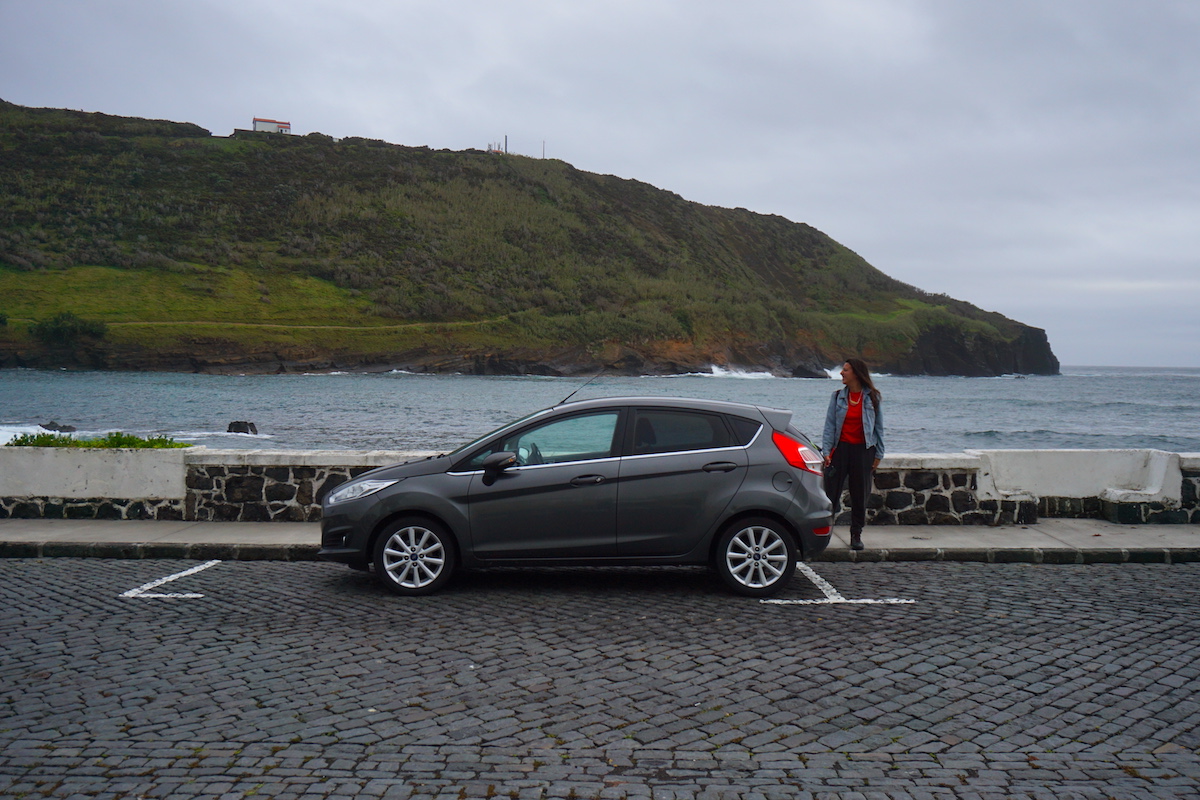
What we recommend is to use a comparator (at Randomtrip we use DiscoverCars) to see which one gives you the best price. Almost all companies include an excess in the insurance, and Autatlantis is one of the ones with the lowest excess value (700€, compared to 1300-1500€ of other companies).
The prices of rental cars in Faial rarely go below 25€ per day and, especially in summer, we recommend booking well in advance to avoid running out of vehicles or that the few that are available have prohibitive prices (there was a summer in which they reached 100€ per day and we know several people who failed to rent a car because they left it to the last minute).
You can check and compare other companies with availability for your dates in comparators such as DiscoverCars. Remember to check the rental conditions of each company (excess, insurance coverage, fuel policy, reviews…) and not only the price.
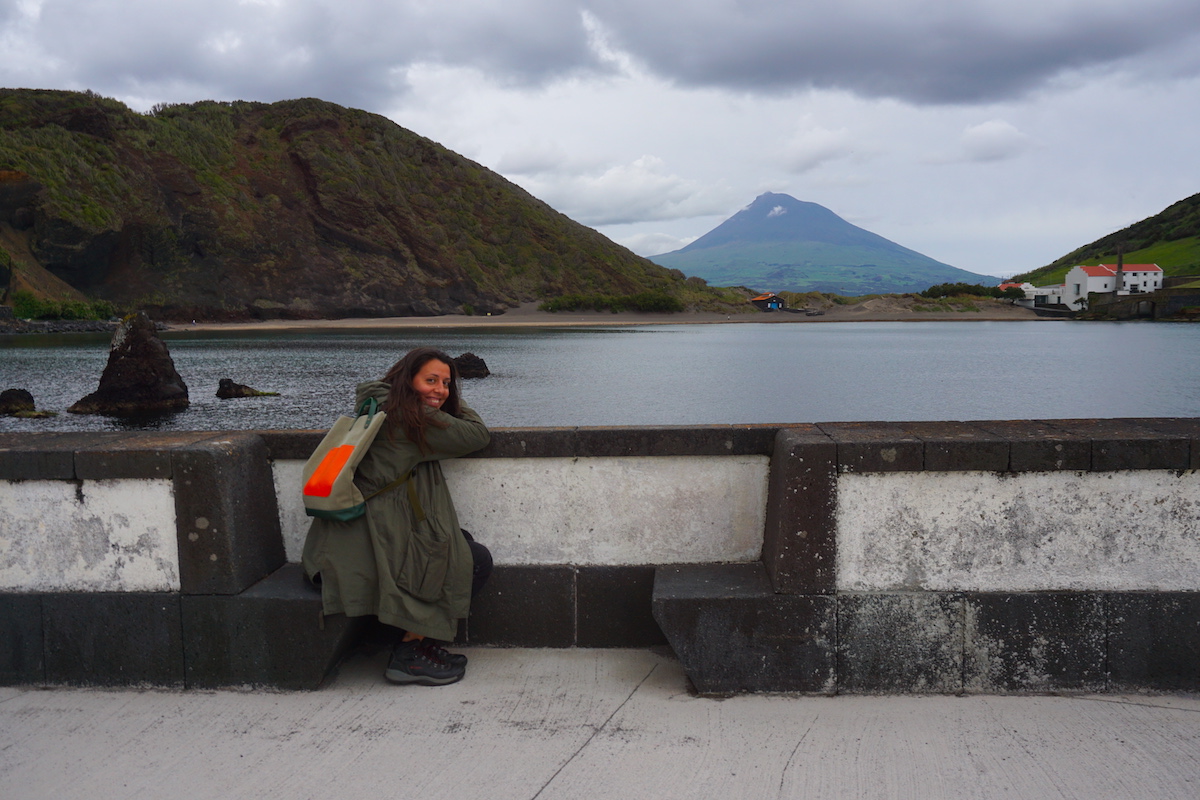
Another option if there are no rental cars available or if you are out of budget, is to rent a scooter, although we sincerely do not recommend it due to the long distances to be covered in Faial and the unstable and changeable weather in the Azores.
There is also the option to move around Faial by public transport: there are buses that connect some of the points of the island, you can see the schedules here. The connections and frequencies are quite limited so it is not an option that we can recommend to explore the island, but if you are traveling on a low budget it can be a valid option to visit some of the main points of Faial.
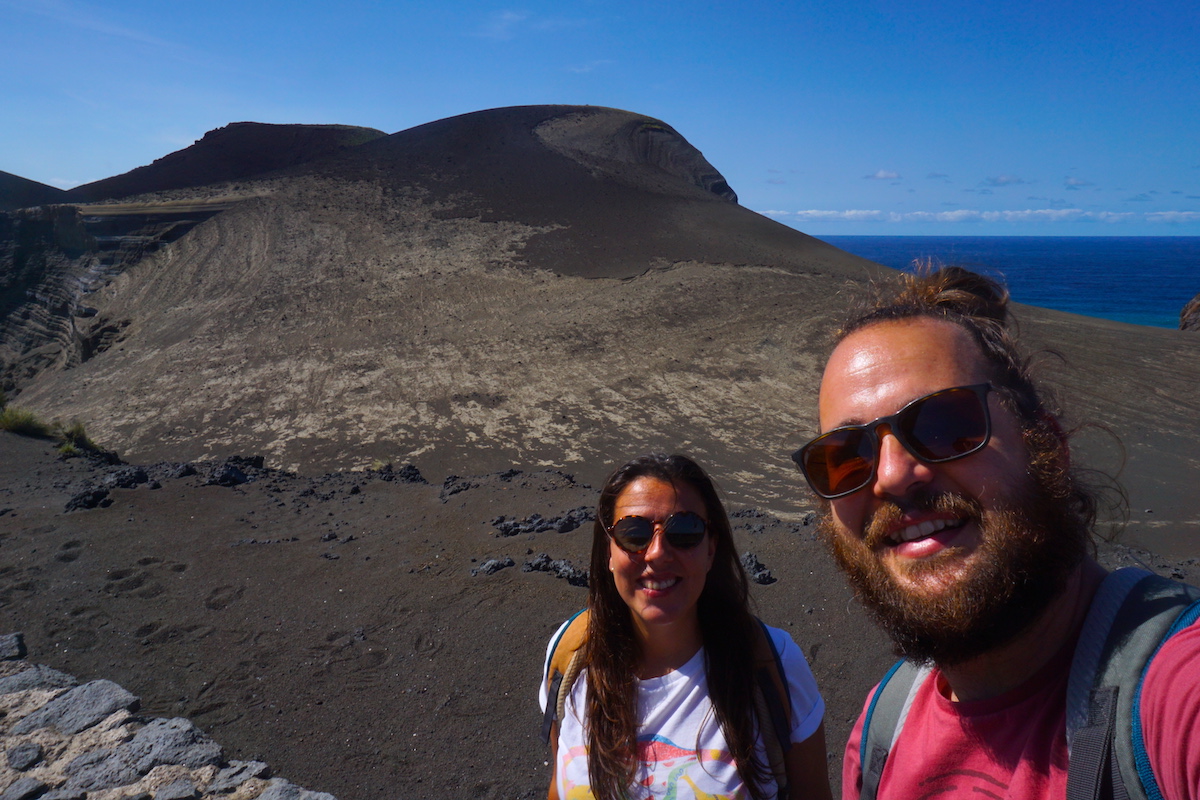
How to have internet in Faial?
To always have internet on your smartphone during your trip to the Azores Islands, the easiest and most convenient way (if your phone supports eSIM) is to buy an eSIM from Holafly, which has unlimited data (you get a 5% discount with the code RANDOMTRIP), or to buy an eSIM from Airalo, cheaper but with limited data (15% discount with the code RANDOMTRIP15). We tested Holafly’s eSIM card in our last trip to the Azores and it worked like a charm. You can read about our experience with Holafly here
The other option, cheaper but more cumbersome, is to buy a local SIM; Meo, Vodafone and Nos are the main companies in Portugal, all of them work perfectly in the Azores Islands.
More info about buying an eSIM or local SIM card for your Azores trip here:
How much does it cost to travel to Faial?
As always, giving a generic budget is very difficult as it depends greatly on your travel style. What we can do is to give you an orientation of prices so you can calculate your budget with them:
- Flights: You can find flights from 120€ round trip to Faial from Lisbon but it depends on how far in advance you book. If you are traveling from other countries, most international flights to Azores will land in São Miguel, or you can also get a flight to Lisbon, and from any of those places you will need to fly with Sata to reach Faial.
- Car rental: between 25 and 3o€ per day for the cheapest car (depending on the company and the number of days).
- Accommodation: from 40€/night for a room with private bathroom or apartment with kitchen.
- Restaurant meals: between €10 and €25 per person
- Activities: 10€ per person for the Capelinhos Documentation Center; 1€/person to climb the lighthouse. From 50€ per person for whale watching.
In total, as a guideline, a one-week trip to Faial with a rented car can cost between 500€ and 700€ per person (with the cheapest options of car, accommodation and restaurants) depending on the meals out and the type of activities you will do.
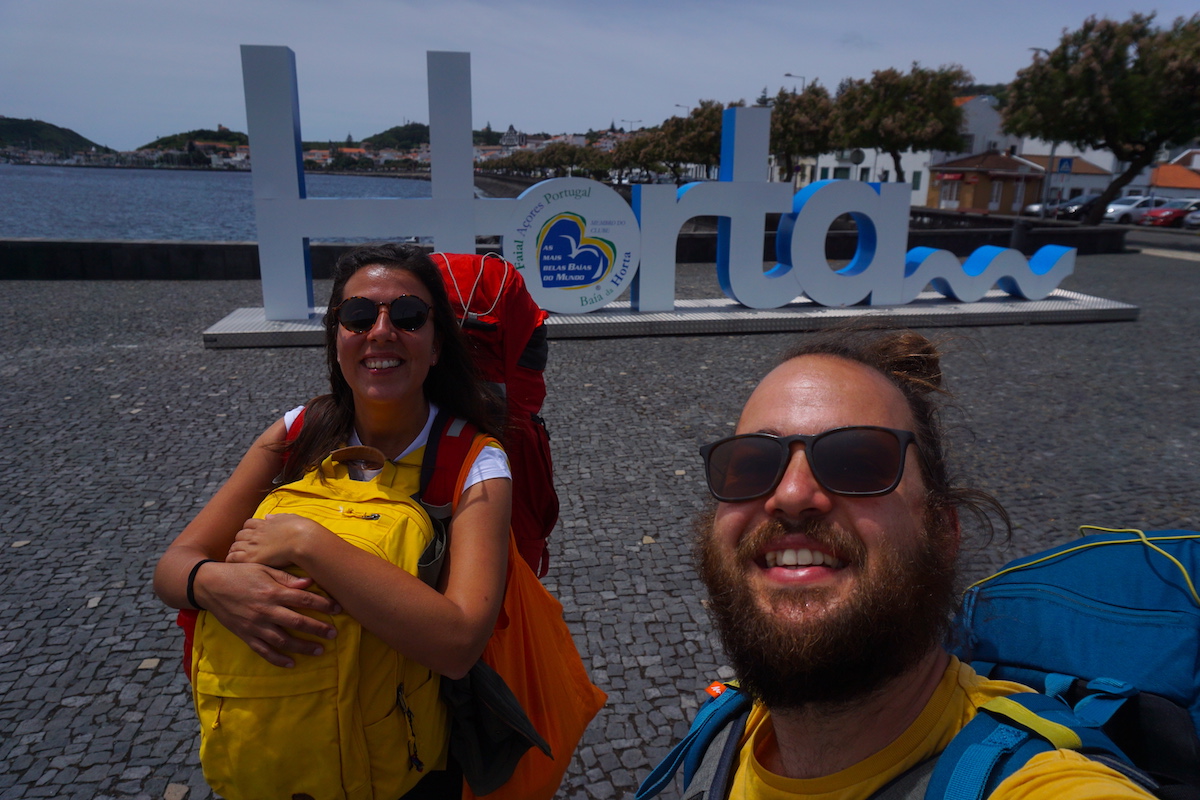
Useful apps for traveling to Faial
We recommend some applications that will be useful for your trip to Faial:
- SpotAzores (Android / iOS / Web): here you can see all the existing webcams in different points of the islands to see how the weather is. Because the weather is very changeable and it can be raining in one area of the island and sunny in another, this app is the fastest way to make sure and avoid unnecessary trips.
- Windy (Android / iOS / Web): essential app in our trips, even more so in the Azores. It allows you to see forecasts for rain, clouds, wind, etc. to help you plan your days based on the weather (as there are places that lose a lot depending on the weather). Obviously the forecasts are not 100% reliable. It also shows the available webcams
- Google Maps (Android / iOS): is the one we use to save / classify all the places we want to go / have gone and as GPS in rental cars. You can see other people’s opinions of the places, photos, restaurant menus, phone number of the places to contact them, etc.
- Maps.me (Android / iOS): application similar to Google Maps but that works online (although Google Maps can also work online) and in many cases has information that Google Maps does not have, especially trails. Useful whenever you are going to do a trail, to orient yourself, download the route from the official Azores trails website (click on Downloads->GPS), etc.
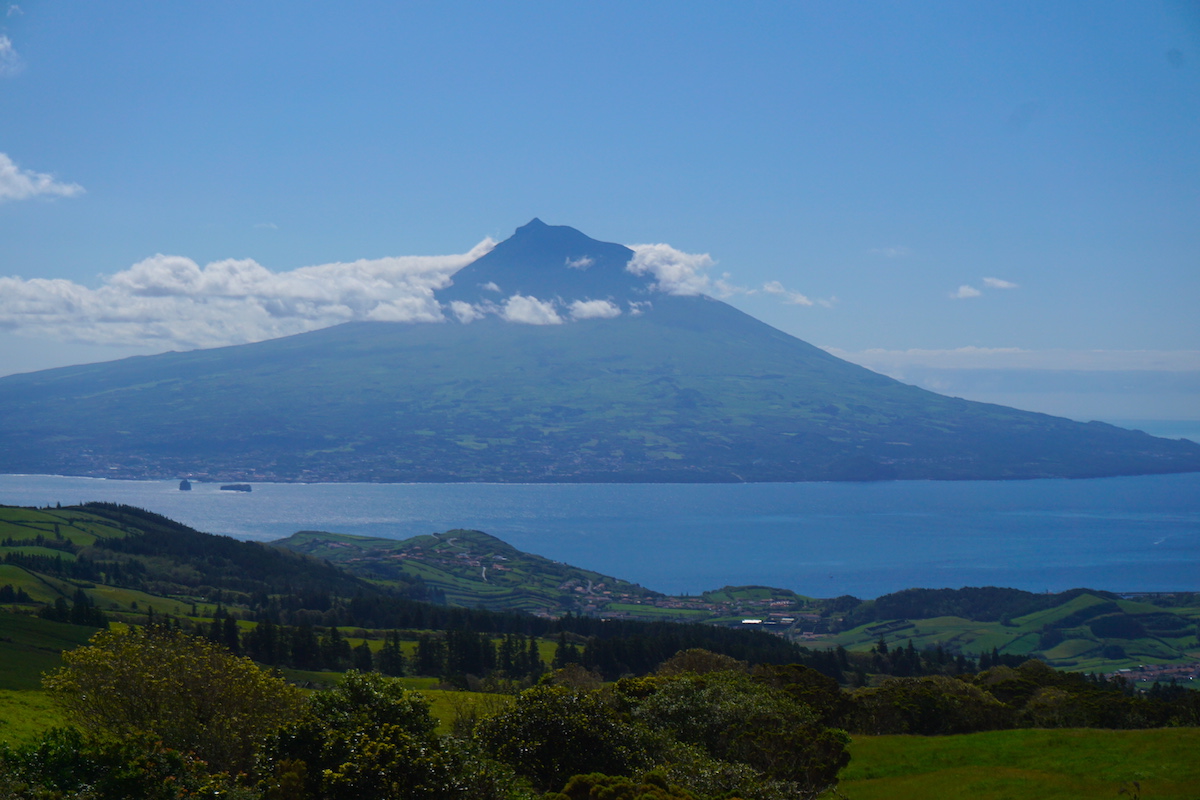
Recommendations to visit Faial as a responsible tourist
- In the whalewatching activity, respect the behavior indicated by the center and be suspicious if it does not involve measures such as: reduced and constant speed of the boat and a minimum distance of 50 meters from the animal; avoid the presence of several boats within a radius of 150 meters around the group of cetaceans or stay more than 10 minutes with the same animal; prohibition of swimming with dolphins.
- Do not allow the disturbance, pollution and destruction of seabird nesting habitats. The “cagarros” (shearwaters, in Spanish) are a migratory bird that nests in the Azores and that on your trip will sound to you by their particular song of “awa awa” as if they were singing the chorus of the song Video Killed by Radio Star. In order to avoid situations where young shearwaters are captured or run over on the road, the Government of the Azores annually promotes the SOS Cagarro Campaign, which we recommend you to know when you arrive in the archipelago.
- Remember that sometimes you may come across a jellyfish (aguaviva) or a Portuguese Caravel in the ocean waters, whose sting is painful and dangerous. The good thing is that these last ones float and are easily detectable, but in case you see one, get out of the water immediately and warn other people of their presence. In case you have been stung by either of them, it is very important that you follow these official recommendations: do not scratch the area of the sting (to prevent the venom from spreading); do not clean with fresh water or alcohol, clean only with sea water and very carefully; and in the case of a Portuguese Carabela sting, seek medical attention as soon as possible.
- Never try to touch or feed a wild animal – don’t be an accomplice to animal abuse!
- Do not buy handicrafts made from sea animals or extracted from the sea (e.g. dolphin teeth, turtle shells, shark jaws, sperm whale ivory, …). The ivory trade, currently the only valuable product of the sperm whale, is still an argument for hunters. Buy local handicrafts made from alternative materials such as wood, stone or vegetable ivory.
- Respect other people and the island: don’t play your music loudly on the beach (if you want to listen to music, wear headphones), don’t leave trash, don’t throw cigarette butts, etc. Leave the area better than you found it (if you find plastic, pick it up).
- In some natural pools, bathing is dangerous due to strong currents. Do not force
- Always travel with travel insurance: medical expenses, theft or problems with your plane on a trip can cost you a lot of money, so the ideal thing is to take out travel insurance. At Randomtrip we always use IATI and we recommend it. If you purchase your insurance through this link you have a 5% discount.
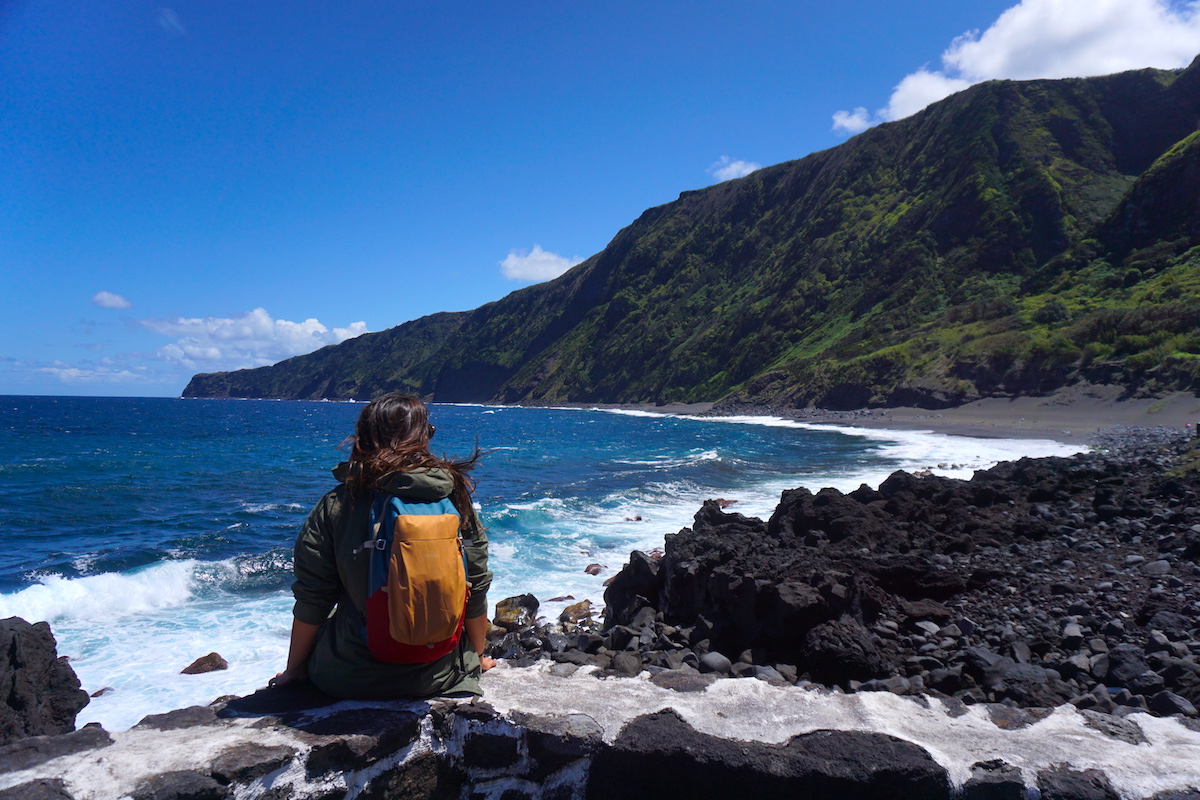
Checklist: what to take in your backpack/suitcase to Faial
Here is a list of must-haves you can’t forget to take with you on your trip to the island:
- A reusable water bottle like one of these to carry water with you all the time and void single-use plastic.
- A good camera to register your adventures. At Randomtrip we carry a Sony ZV-E10 and a Gopro Hero12 Black (for underwater pictures)
- A Power bank: taking so many pictures will drain your batteries, so it’s always a good idea to carry a good powerbank. At Randomtrip we travel with these 2 (Anker 20000 mAh and Anker 10000 mAh), which allow us to charge both our phones and our cameras.
- Water Shoes like these ones, ideal for not hurting your feet when entering the water or not touching the ground. Keep in mind that in the Azores you will find lots of volcanic rock pools or pebble beaches so you will want to carry your water shoes at all times to make it easier to enter the water.
- Hiking shoes because the best way to get to know the Azores is by hiking the trails. At Randomtrip we use these Columbia ones.
- Snorkel kit (mask and tube) like this one, a must to take on this trip to contemplate the seabed.
- Water proof dry bag like this one, very useful for keeping your camera equipment, cell phone and wallet safe from getting wet on any boat trip (or even if the tide comes in on the beach).
- Sun screen: always look for a Coral Friendly Sunscreen, i.e. one that protects your skin without harming marine ecosystems by avoiding ingredients such as oxybenzone and octinoxate, which are harmful to corals. Nor that it has been tested on animals.
- Mosquito repellent: like this one, it should have at least 15% deet
- Fast drying towel like this one which doesn’t take a lot of space in your luggage
- A hat or a cap (like this one) and sunglasses to protect yourself from the sun
- Windbreaker waterproof jacket: like this one, to protect yourself from the sudden weather changes in Azores
- First aid kit: In our first-aid kit there is always a medicine against seasickness (such as biodramine for seasickness on boats), antibiotics, anti-diarrhea medication (and a probiotic to recover more quickly), antihistamines, painkillers and antipyretics
- Travel insurance: always travel with travel insurance. We collaborate with different travel insurance companies so that you can get a discount with some of them:
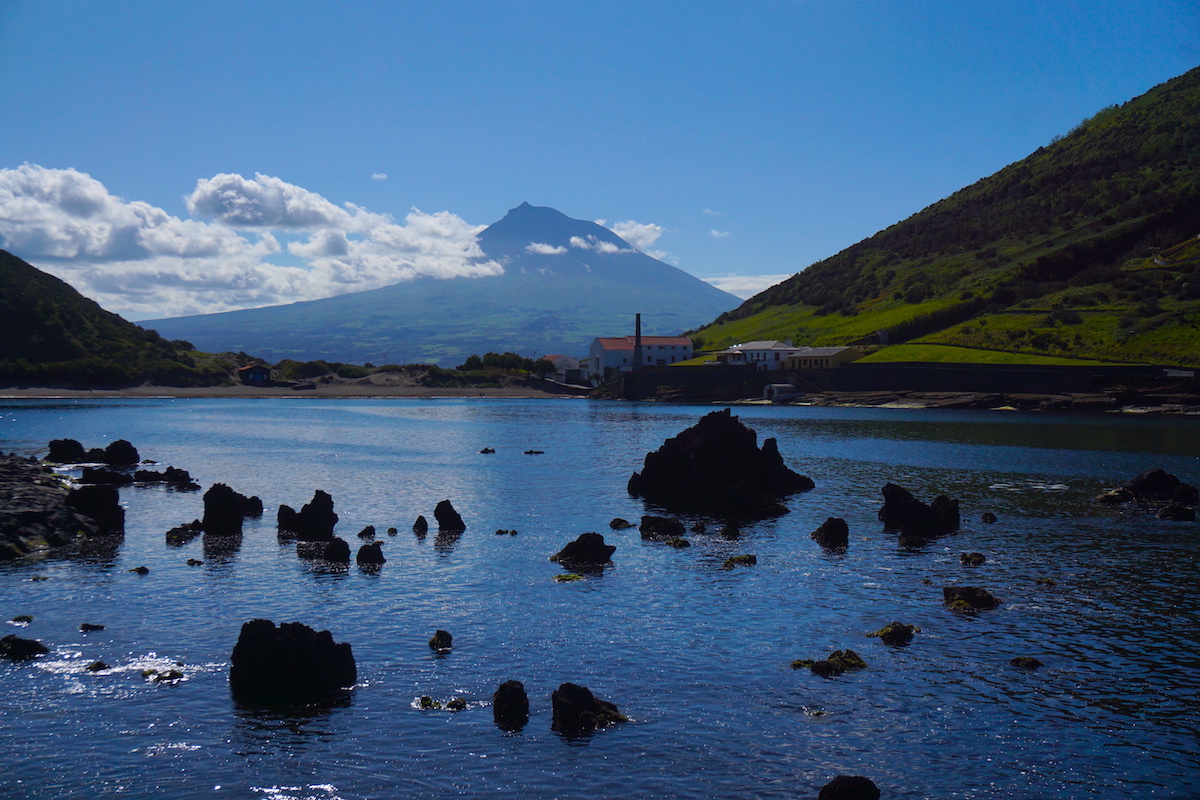
“Borbotões de azul despenham-se por todos os lados. O Faial adormece em azul sob o céu de cinza e com o Pico todo violeta ao lado. À noite não posso dormir; estou encharcado de azul. Vou a pé pela estrada fora sob o luar derretido. Diante de mim abre-se o abismo do mar cheio de estrelas.“
“Bubbles of blue splash everywhere. Faial falls asleep dressed in blue under the gray sky with Pico all violet by his side. At night I can’t sleep; I’m drenched in blue. I walk along the road under the melting moonlight. Before me opens the abyss of the sea full of stars.”
Raul Brandão, As Ilhas Desconhecidas, one of the masterpieces of travel literature in Portuguese and the work “guilty” of Faial being known as the Blue Island since that is how he named it because of the blue hortesias that sap the island and delimit the roads in summer.
A special thanks to special people: Tiago, Diana and the little Azorean, Naia, we are looking forward to meet your new home and that you take us to new places. João who made our mouths water with his burgers, smiles and tips (Ah! Boca Santa is THE place to go, Randomtripper). You made Faial even more special. All travel and World loving people who decided to make Faial their home and, boy, do we understand. Obrigada gente boa! See you soon!
